Plan, Ready, Go®

Great Smoky Mountains National Park Itinerary for a Perfect Trip
If you’re looking for an epic adventure, look no further than the Smokies. This Great Smoky Mountains National Park itinerary and travel guide will help you make the most of your trip.
Great Smoky Mountains National Park is located in eastern Tennessee and western North Carolina, and it’s home to some of the most beautiful scenery in the United States. There are plenty of things to do in this park, so it’s the perfect destination for everything from a fun day trip to a romantic weekend getaway to a big vacation with the whole family.
In this article, I’ll cover important topics like the best time to visit, where to stay, what to see and do, and more.
Plan the perfect trip to the Smokies with this FREE printable travel planner.
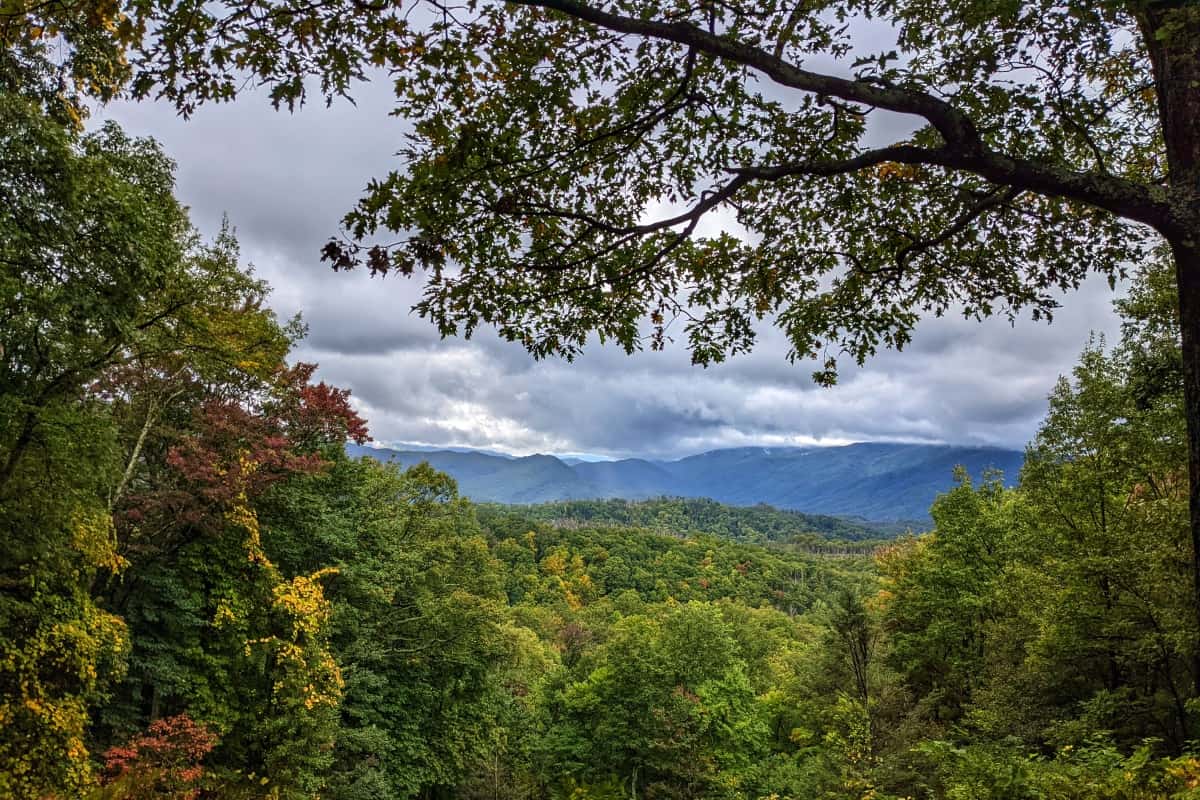
This post includes affiliate links. If you make a purchase through one of these links, I may earn a small commission at no additional cost to you. As an Amazon Associate, I earn from qualifying purchases. See disclaimer.
Great Smoky Mountains National Park facts
Here are some interesting facts about Great Smoky Mountains National Park to help you get to know the Park a little better before your trip.
- Entrance to Great Smoky Mountains National Park is free , and it’s open 24 hours a day all year round. (Effective March 1, 2023, parking tags are required to park in GSMNP for more than 15 minutes.)
- The Park covers more than 520,000 acres.
- The land area that the Park covers is split almost evenly between Tennessee and North Carolina.
- Great Smoky Mountains National Park is the most visited of all 63 U.S. National Parks …by quite a lot. More than 14 million guests visited GSMNP in 2021.
- The Park includes 10 campgrounds , not including backcountry camping options.
- Great Smoky Mountains National Park includes 384 miles of road .
- Clingmans Dome is the highest point in the Park at 6,643 feet . It’s also the highest point in Tennessee and the third-highest point east of the Mississippi River.
- Great Smoky Mountains National Park was designated a World Heritage Site in 1983 .

Great Smoky Mountains National Park itinerary
Now for the good stuff. There are so many things to do in Great Smoky Mountains National Park that building an itinerary is a challenge.
My recommendation is that you plan to spend at least two full days in the Park , but more is certainly good as well.
Shake things up and make this itinerary your own. How you put these pieces together may largely depend upon where you are staying on your trip to the Smokies (and what entrance you’re using).
Be advised: drive times inside the Park can be quite long. There are essentially only a few major driving routes within the park.
Get a park map and get familiar with it and use it. Do not rely on GPS to get you around the park. It may steer you wrong. You can pick up a map at any visitor center.
TIP: Keep track of all the amazing sites you’re seeing in the park with this printable Great Smoky Mountains National Park bucket list . On a quest to visit all 63 U.S. National Parks? Grab your own copy of the printable national parks tracker to check off your progress as you visit each park.
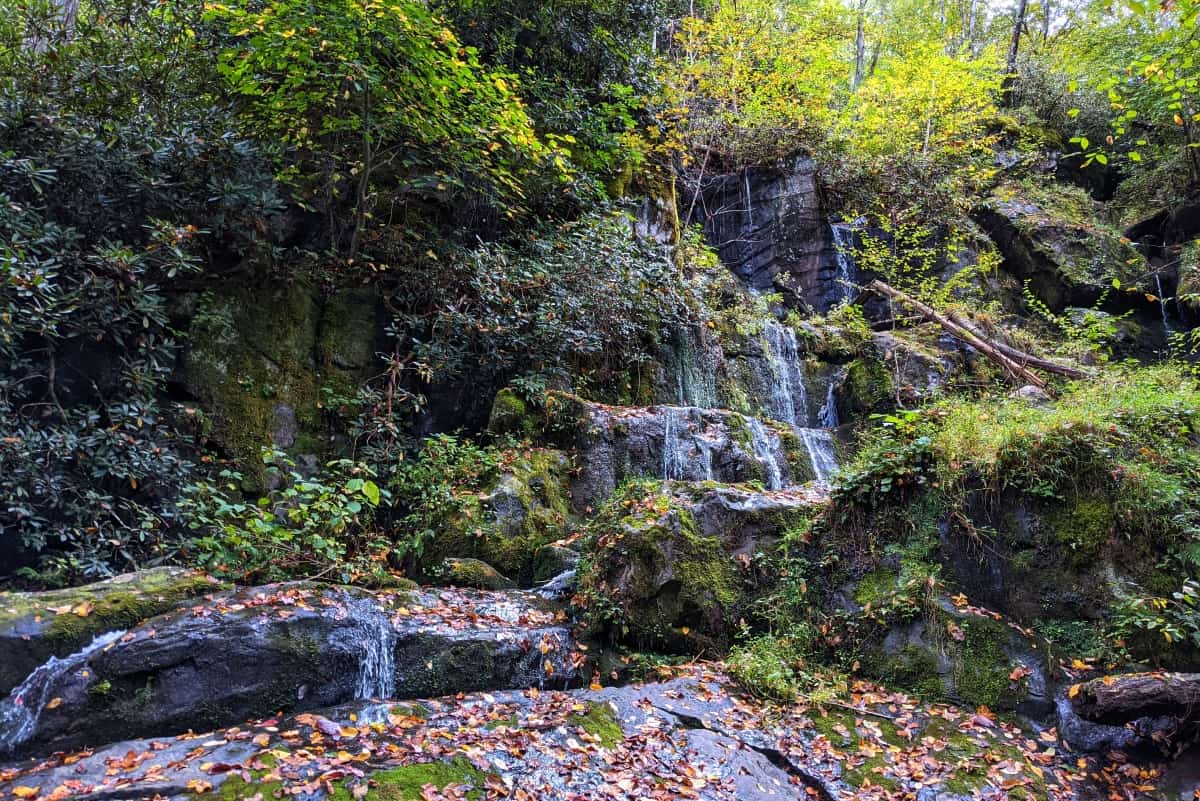
Visitor Center
Make your first stop at the Oconaluftee or Sugarlands Visitor Center to pick up a park map and any other information you need for your visit to Great Smoky Mountains National Park.
If you’re staying in Townsend, Tennessee, the closest Visitor Center to you will be in Cades Cove. I would recommend you start your itinerary with Cades Cove anyway if you’re staying in Townsend, so there you go.
If you don’t want to go to the Visitor Center you can download a park map from the National Park Service website.
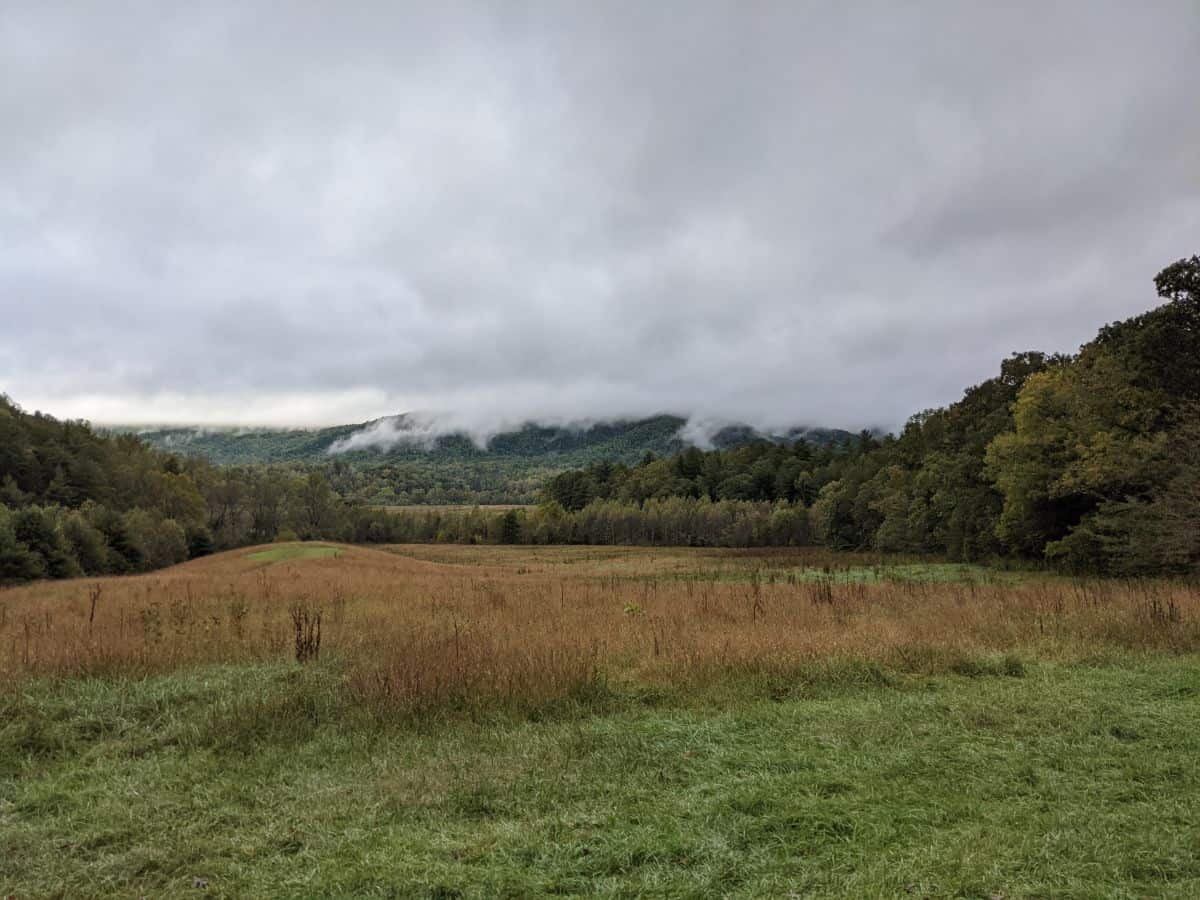
I recommend everyone start their trip to Great Smoky Mountain National Park with a drive through Cades Cove. It’s on the western side of the Park and it’s hugely popular. Plan to arrive at the entrance to the loop at the time it’s opening or even a few minutes before.
For a very nominal fee (it was $1 when we bought it) you can purchase a small booklet that will give you more information about Cades Cove and all of the stops on the scenic drive.
The Cades Cove Loop Road is a great place to see wildlife, so keep your eyes peeled for deer, bears, and other animals.
Let me stop here to say one thing. PLEASE DO NOT block the roadway so that you can get a better look at the black bears. It is unkind to back up traffic for 20 minutes so you can get your perfect photo. If there is not a safe place to pull over, keep moving .
Okay, rant over.
Plan to spend at least two hours driving through Cades Cove, longer if you’re there during peak travel times or a busy part of the day. I’d say it’s safest to plan to spend your entire morning there exploring.
Pack your patience. There may be times when the traffic is stopped or very slow because of road congestion.
There are so many things to see in Cades Cove and there are hikes in that area as well as one of the three Park Visitor Centers. Plenty to fill up at least your morning if not your full day.
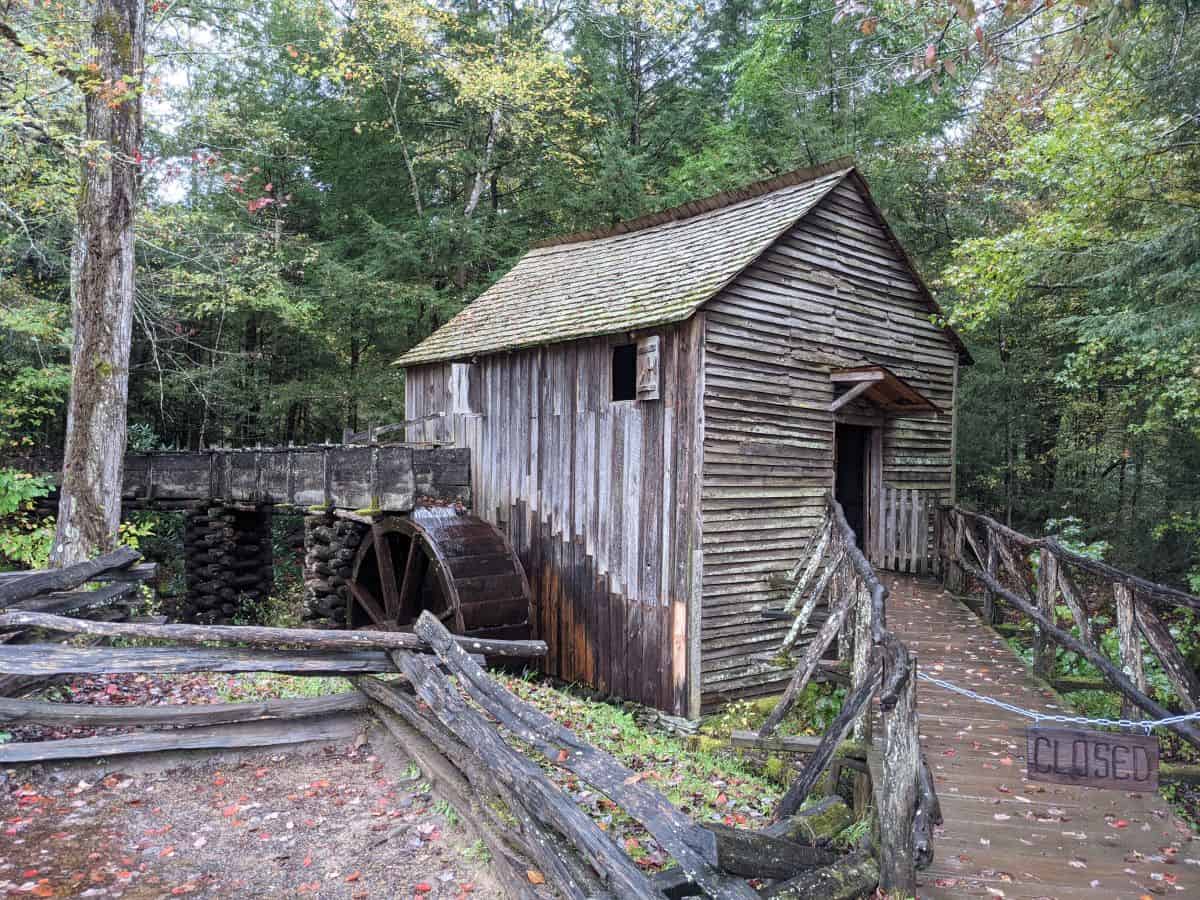
Laurel Falls Trail
The popular Laurel Fall Trail hike is a must-do in Great Smoky Mountains National Park. This trail can also get quite busy, so you might want to save this for first thing in the morning on your second day in the Park rather than right after Cades Cove.
Use your best judgment, and keep in mind that parking at the trailhead is quite limited .
Plan for this 2.6-mile roundtrip hike to take you about 2 hours . It’s considered moderate in difficulty.
Roaring Fork Motor Nature Trail
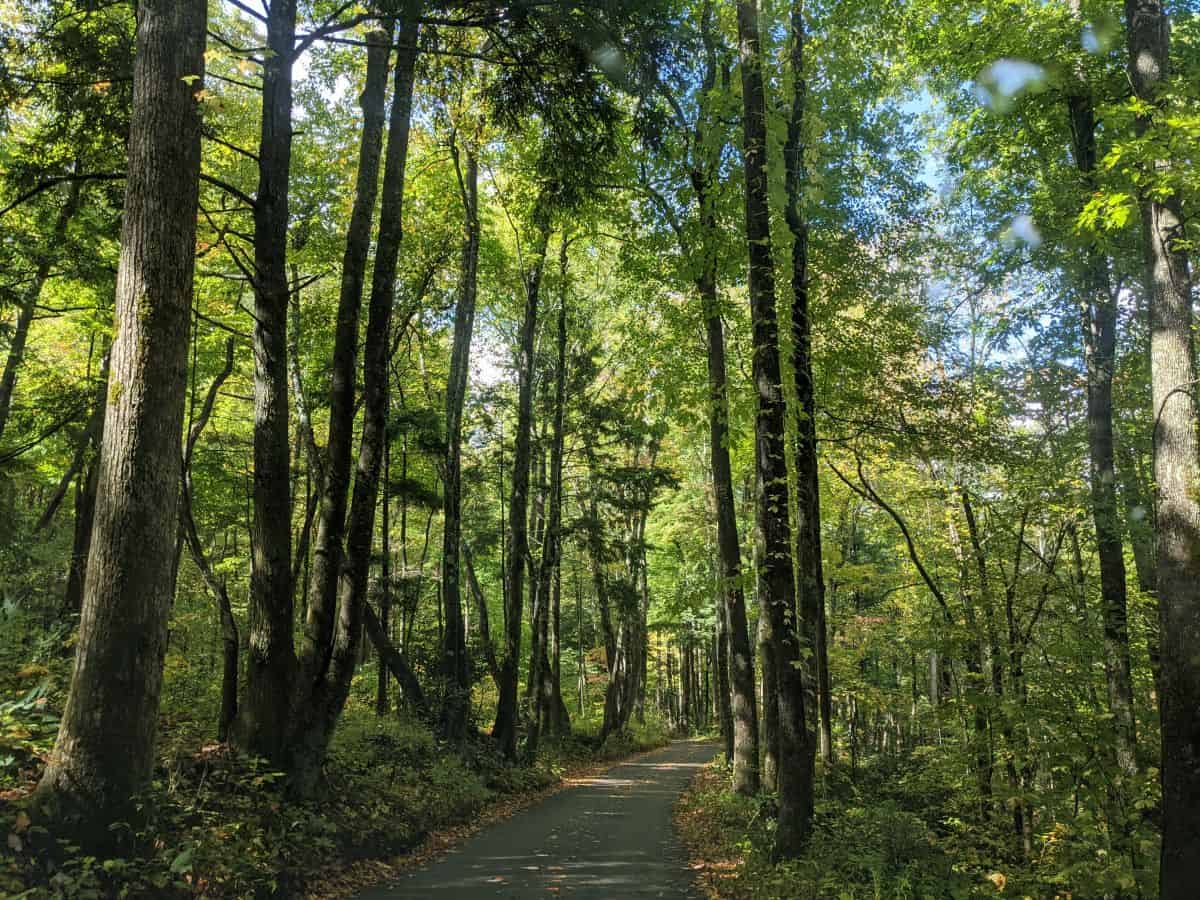
The other scenic drive in Great Smoky Mountains National Park is not to be missed. If you’re not much of a hiker, you can definitely do both Cades Cove and the Roaring Fork on the same day. Or do one scenic drive each of your two days in the Park.
The Roaring Fork Nature Motor Trail is on the east side of the Park near the Orchard Park entrance. In our experience, it wasn’t nearly as busy as Cades Cove.
The entire drive is about 5.5 miles on a one-way road. It does get a bit narrow at times so drive with care. This trail is a great way to see the park’s beautiful scenery. Please give it a try.
Newfound Gap
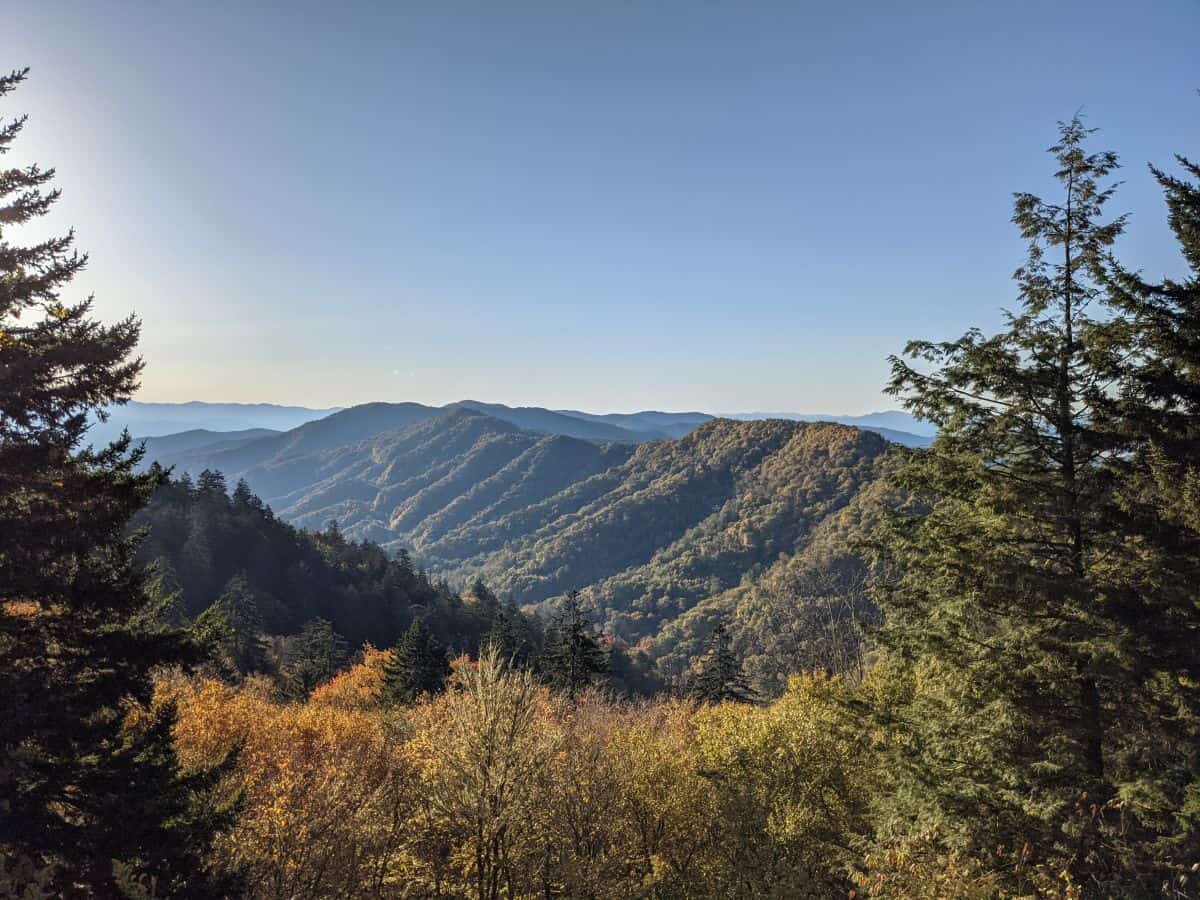
For beautiful views head to Newfound Gap…in fact, the entire drive along Newfound Gap Road from Cherokee to Gatlinburg (or the reverse) is just stunning.
There are several places to pull over and enjoy the amazing views along Newfound Gap Road. Take advantage, please. You won’t be sorry.
You’ll climb (in your car) about 3,000 feet. Please note that the temperatures at Newfound Gap will likely be quite a bit cooler than the surrounding lowlands.
The Appalachian Trail crosses Newfound Gap Road, so if you feel like stretching your legs and giving it a try go ahead. Then you can tell everyone you hiked the Appalachian Trail.
Clingmans Dome
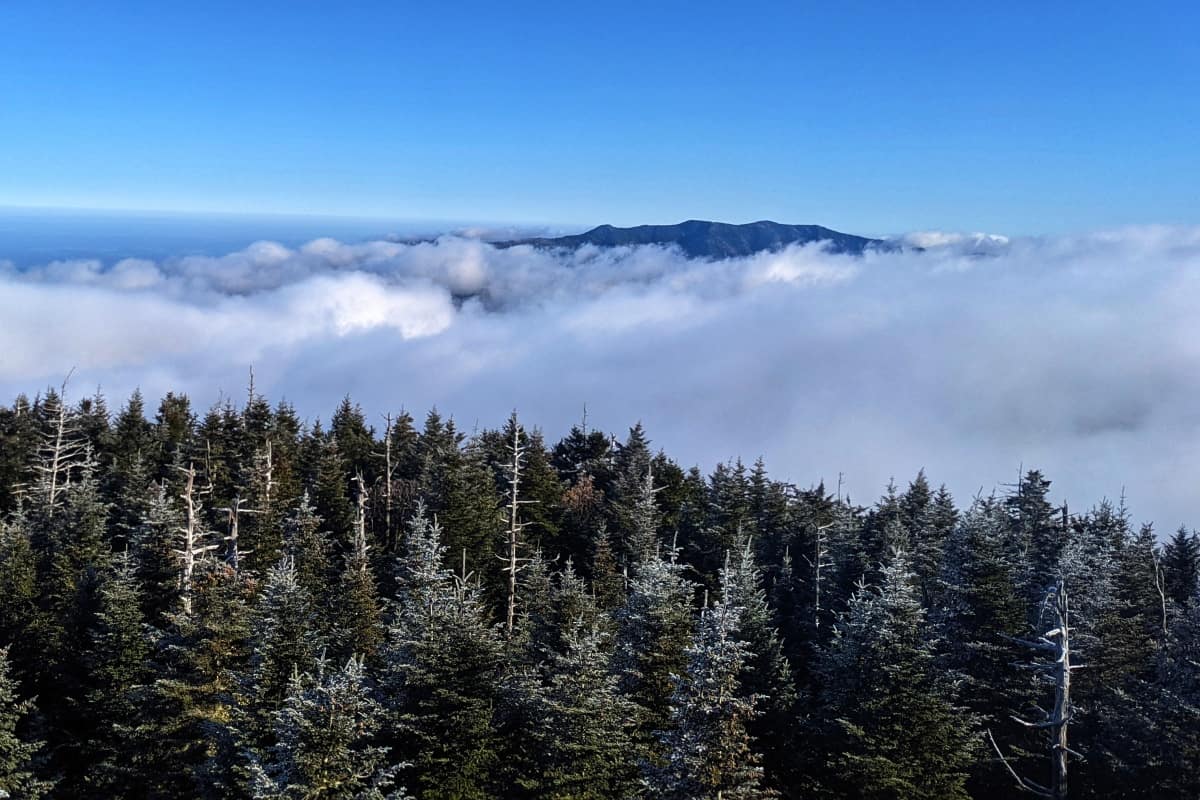
Just south of Newfound Gap, you’ll find the turnoff from Newfound Gap Road to Clingmans Dome Road.
This 7-mile road will take you up to the parking area just about half a mile from the top of Clingmans Dome (6,643 feet), which is the highest point in the Park. The road is closed to vehicles generally from Dec. 1 through March 31.
There’s plenty of parking up there, vault toilets, and a gift shop/visitor information center.
The half-mile hike up to the top of Clingmans Dome is paved and quite steep. Please wear appropriate footwear.
There’s also an observation tower at the top of Clingmans Dome that offers stunning views of the surrounding mountains and forests. It is said that on a clear day, you can see 100 miles.
Even if you aren’t sure you want to do the hike, the view from the parking lot is still quite wonderful and worth the drive.
Please note that it can get COLD up there. SIGNIFICANTLY colder than the surrounding lower elevations.
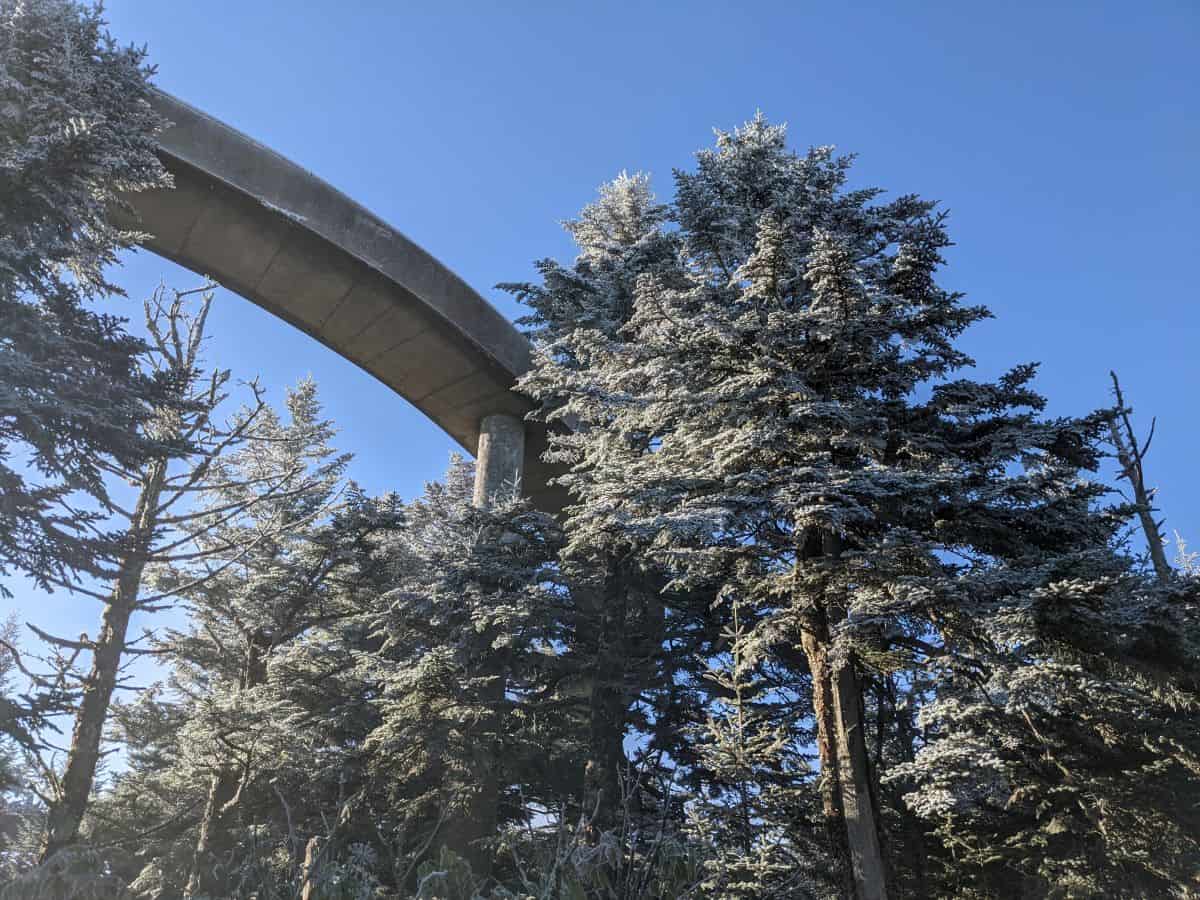
Other things to add to your Great Smoky Mountains National Park itinerary
Cataloochee valley.
The isolated Cataloochee Valley offers guests the opportunity to see the historic valley as it was. It preserves several historic buildings. There are also opportunities for wildlife viewing. Use caution when driving on the narrow roads.
More hikes in Great Smoky Mountains National Park
Great Smoky Mountains National Park is home to more than 150 official hiking trails from short, easy, kid-friendly hikes to quite long hikes requiring significant hiking experience.
Here are a few of the most popular hikes in the Park that I haven’t already touched on.
- Rainbow Falls, 5.4 miles, moderate
- Alum Cave Bluffs, 2.5 miles one way
- Abrams Falls, 5 miles roundtrip, moderate to difficult
- Grotto Falls, 3 miles roundtrip, moderate
If you’re traveling with children you might enjoy the short, easy Cataract Falls Trail. The falls are about 0.7 miles from the Sugarlands Visitor Center.
Best time to visit Great Smoky Mountains National Park
The best time of year to visit Great Smoky Mountains National Park varies depending on what you want to do.
The park is busiest from May through October , and the fall colors are at their peak in October. On average, over the last decade or so, June, July, and October have been the busiest months.
If you’re interested in hiking, the spring and autumn months are the best time to visit, as the summer months are hot and humid. Again, expect to encounter many people if you’re there in October.
If you’re looking for an amazing natural phenomenon to witness, look no further than the synchronous fireflies at Great Smoky Mountains National Park.
Every year, around the end of May or the beginning of June, this park hosts a special event in the Elkmont area where visitors have a chance to see large numbers of these fireflies light up at once.
Vehicle passes are awarded by a lottery system, so there’s, unfortunately, no guarantee that you’ll be able to see them.
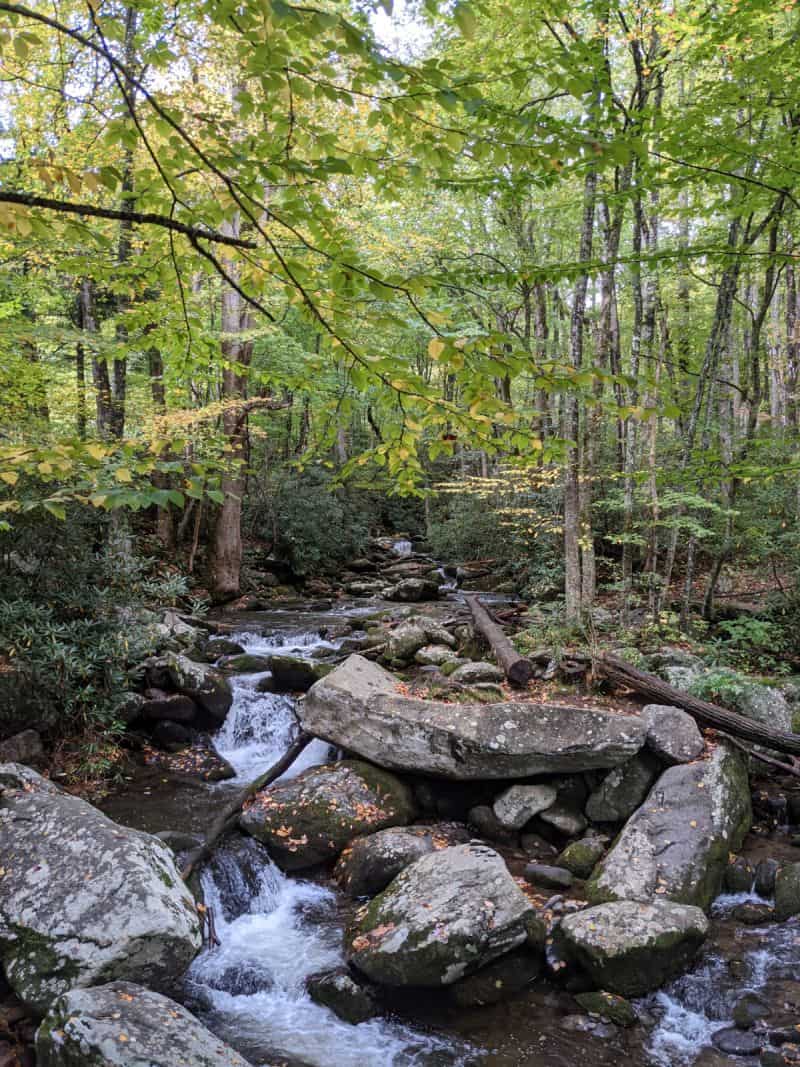
Where to stay on your trip to Great Smoky Mountains National Park
For a complete discussion of where to stay on your trip, see my article all about where to stay in the Smokies.
Campgrounds in Great Smoky Mountain National Park
Camping is a great way to experience Great Smoky Mountains National Park.
There are 10 developed frontcountry campgrounds in the park , and they offer a variety of amenities including restrooms (with cold running water and flush toilets), fire grate, and picnic tables. Most of the campgrounds are available seasonally, with a couple open all year round.
Backcountry camping, group camping, and horse camps are also available. Most of the campgrounds are also located near popular attractions, so you’ll be able to enjoy the beauty of the park while you’re camping.
Hotels near Great Smoky Mountains National Park
There are no motels or inns in Great Smoky Mountains National Park. LeConte Lodge is only accessible on foot after hiking at least 5 miles.
If you prefer to stay in hotels, your only option will be to stay in one of the gateway towns at the major entrances to the Park.
Gatlinburg, Tennessee
You’ll have the most hotel options if you stay in Gatlinburg, Tennessee. It’s located just outside the park, and it also offers a variety of restaurants, shops, and other attractions.
Here are a few highly rated hotel options in Gatlinburg:
The Park Vista offers beautiful views of the Smoky Mountains, and every room comes with a balcony.
Margaritaville Resort is cram-packed with amenities and just a short drive to Great Smoky Mountains National Park.
Fairfield Inn and Suites is a favorite affordable hotel brand for me and Hubby. Their downtown Gatlinburg location is very close to the start of the Roaring Fork Motor Nature Trail (see below).
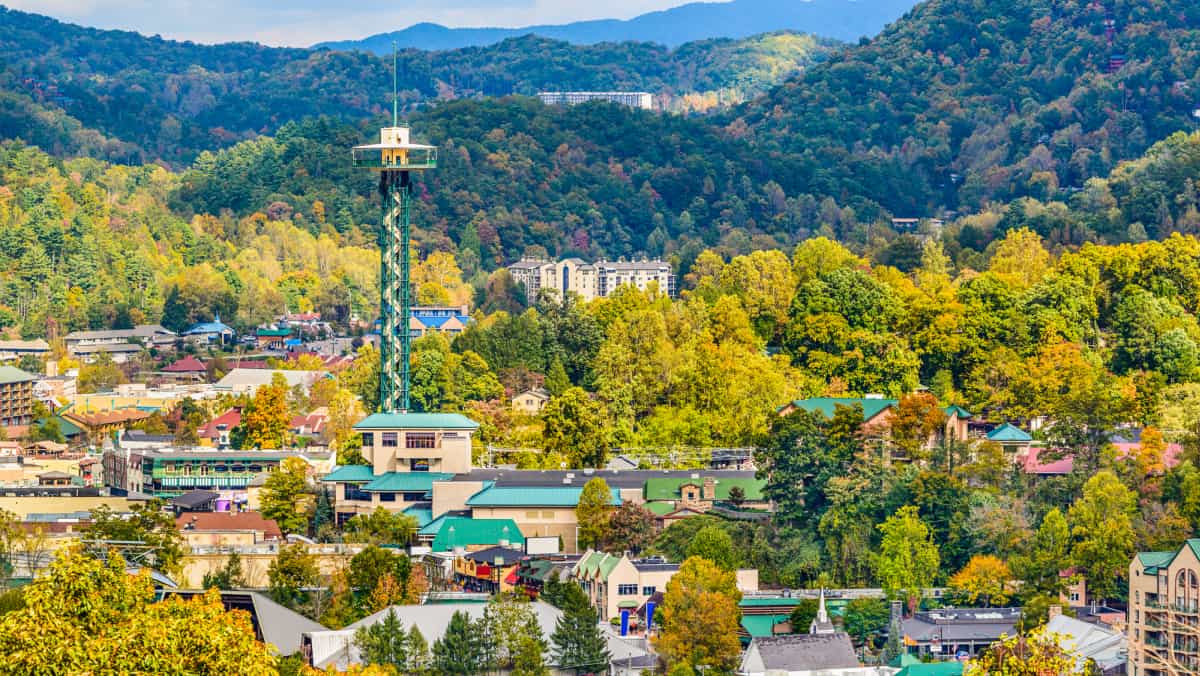
Cherokee, North Carolina
Cherokee is another great option as it’s very near the Park and the Oconaluftee Visitor Center.
Major attractions in Cherokee, aside from the Park, are Harrah’s Cherokee Casino, the Museum of the Cherokee People, and the Blue Ridge Parkway. Cherokee is the southern terminus of that famous scenic route.
Cherokee lodging options include:
- Stonebrook Lodge : We enjoyed our stay here, just minutes from Great Smoky Mountains National Park. Offers free parking and comfortable rooms but a subpar continental breakfast. We opted to grab a wonderful breakfast at Peter’s Pancakes and Waffles in town.
- Great Smokies Inn : Just minutes from the Oconaluftee Visitor Center and the southern end of the Blue Ridge Parkway.
Townsend, Tennessee
Townsend, Tennessee, is located on the “quiet side” of Great Smoky Mountains National Park. It also has the benefit of being the closest town to the popular Cades Cove scenic drive (more on that below).
Highland Manor Inn is just four minutes from the west entrance to Great Smoky Mountains National Park. Guests love how close the property is to the Park.
Other hotel options for staying near Great Smoky Mountains National Park
Further from the park, but also popular are Pigeon Forge and Sevierville , Tennessee. Pigeon Forge includes a lot of tourist attractions.
Guests love the Residence Inn Pigeon Forge for its location and spacious rooms.
Those who prefer to avoid major hotel chains may like The Inn on the River . Guests enjoy the service and location. It’s about 13 miles from the Sugarlands Visitor Center and about a 10-minute drive from Dollywood.
Sevierville is located about 17 miles from the Sugarlands Visitor Center (inside the Gatlinburg entrance). You would need to plan on a 35 – 40 minute drive to be inside the park from Sevierville…potentially longer if the Gatlinburg traffic is really congested.
When is it not, right?
To really save money during peak fall colors time, when hotel rates were higher than we wanted to spend, we chose to stay at the Fairfield Inn & Suites Knoxville Airport Alcoa .
We had a fine stay. And while it was nice to save $100/night on the hotel room, we ended up doing A LOT more driving than I think I would want to do on a return visit to the Park.
Great Smoky Mountains National Park entrances
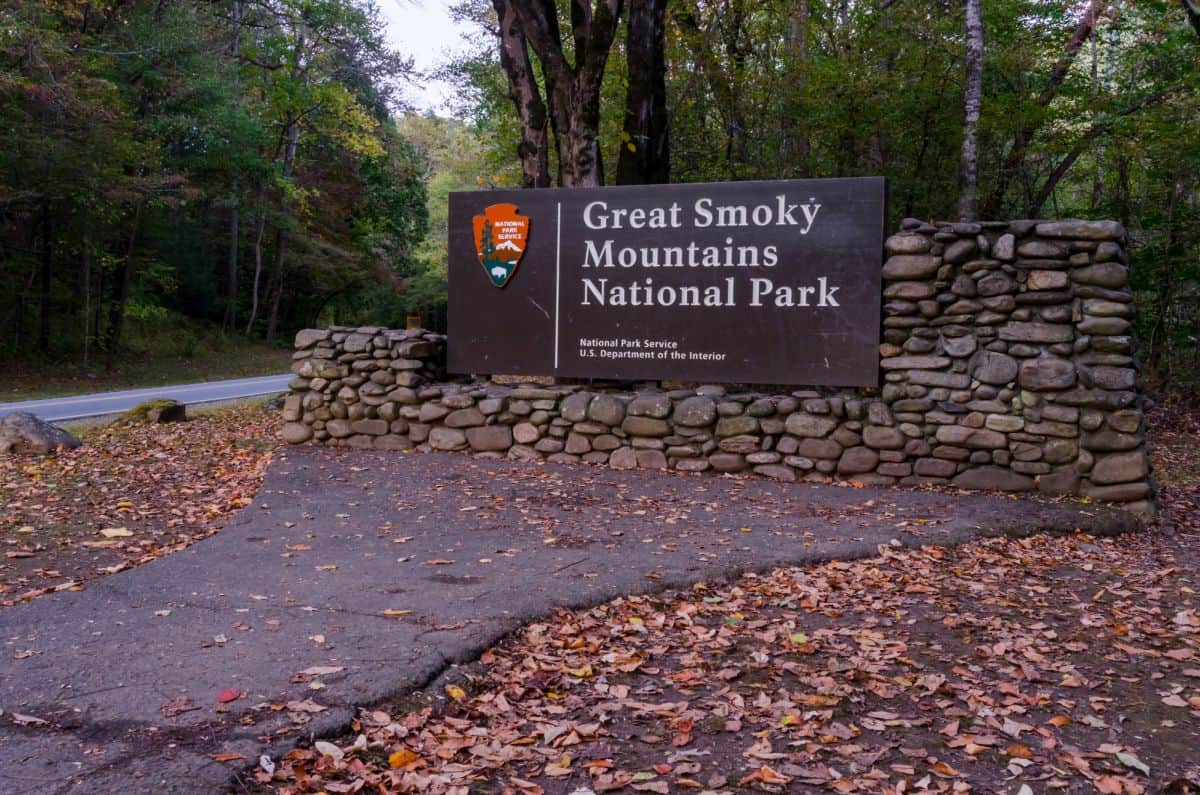
There are several entrances to the Great Smoky Mountains National Park, and each offers its own unique experience.
The most popular entrance is located in Gatlinburg . The entrance is the closest to popular Gatlinburg attractions, and it’s also where you’ll find the greatest concentration of hotels and restaurants.
One downside is that this entrance is also quite popular and can get VERY congested during peak travel times . Those staying in Gatlinburg always seem to want to enter and leave the Park at about the same time.
We live in Upstate South Carolina and use the Cherokee, North Carolina, entrance . From there you can follow the beautiful scenic drive along Newfound Gap Road through the Park. It’s also a great option if you’re looking to avoid the crowds at the Gatlinburg entrance.
Finally, for an even less crowded entrance into the park Townsend, Tennessee , is the entrance you’re looking for. It also has the benefit of being the entrance closest to the popular Cades Cove scenic loop.
Great Smoky Mountains National Park Visitor Centers
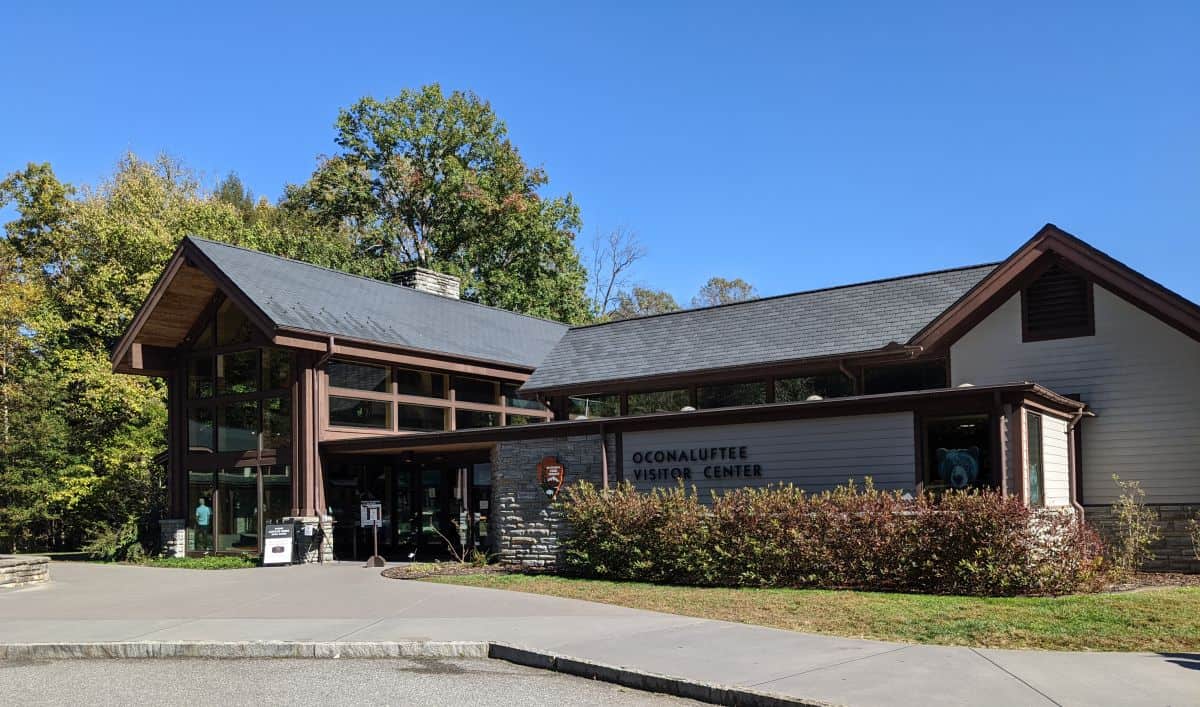
There are three visitor centers in Great Smoky Mountains National Park as well as a small “contact station” at Clingmans Dome.
We always make it a point to stop at a Visitor Center for any National Park trip. You’ll want a park map at least. Plus there are restrooms, gift shops, and you can talk to a park ranger if you have any questions.
The Sugarlands Visitor Center is the most popular in the park . It’s located near the Gatlinburg, Tennessee, entrance.
The Sugarlands Visitor Center also offers a variety of ranger-led programs, so it’s a great place to learn about the park. The Backcountry Permit Office is also at the Sugarlands Visitor Center.
The Oconaluftee Visitor Center is closest to the Cherokee, North Carolina , entrance. Like the Sugarlands Visitor Center, here you can find a gift shop, helpful National Park Service staff, maps, restrooms, and more.
The third Visitor Center is on the Cades Cove Scenic Loop . This center is much smaller than the other two, but you’ll still find a gift shop, restrooms, etc. There are also several historic buildings nearby that you can explore including a grist mill.
Picnic areas in Great Smoky Mountains National Park
Great Smoky Mountains National Park is a great place to enjoy a meal outdoors, and it offers a variety of great picnic areas to choose from.
The picnic areas are:
- Collins Creek
- Metcalf Bottoms
- Twin Creeks
Some picnic areas are open seasonally and some offer pavilions that can be reserved for groups.
If you’re having a hard time choosing where to enjoy your picnic, I’d suggest you check out Chimneys . It’s located on the West Prong Little Pigeon River and several of the picnic sites are right on the river. Guests are welcome to enjoy the cool water of the river on hot days.
Cades Cove is also a popular picnic spot. You’ll find it near the entrance/exit to the scenic loop.
What to take with you on your Smoky Mountains hike
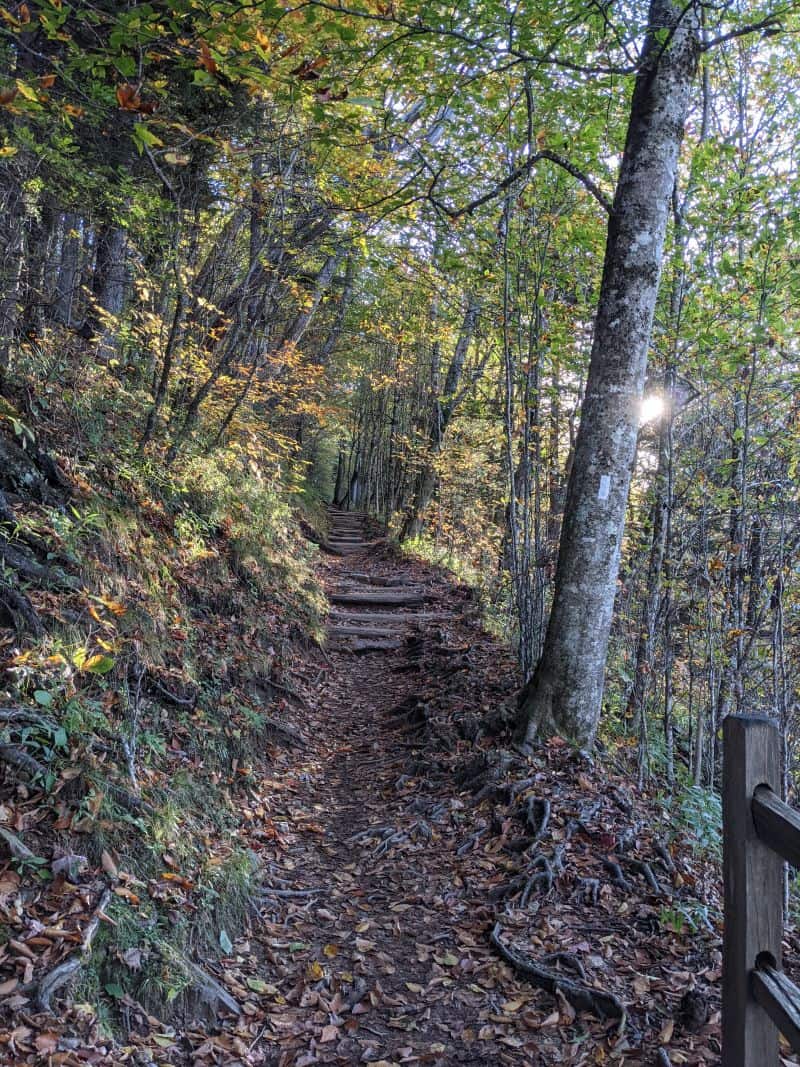
Hiking is a lot more fun when you’re prepared with the right shoes and clothing. The correct outfit can increase your comfort and make the whole hike much better.
It’s best to dress in layers while hiking so you can peel off or put on clothes as the temperature changes. Make sure you pack weather-appropriate outerwear and plenty of snacks and water.
My hiking favorites
Hiking shoes —I prefer to wear waterproof hiking shoes over hiking boots. Trail running shoes can also be a good option depending on the hike if that’s your preference.
I love my waterproof Keen hiking shoes. You can check the price on Amazon here.
Waterproof shell —The weather can change rapidly, so it’s important to make sure you carry with you some protection from the elements…even if the forecast is for a lovely and dry day.
I love my Columbia Arcadia II jacket. You can check out the price on Amazon here.
Trail pants —I love my Columbia Saturday Trail Pants. They’re really lightweight and comfortable. You can check them out on Amazon here.
Tips for visiting Great Smoky Mountains National Park
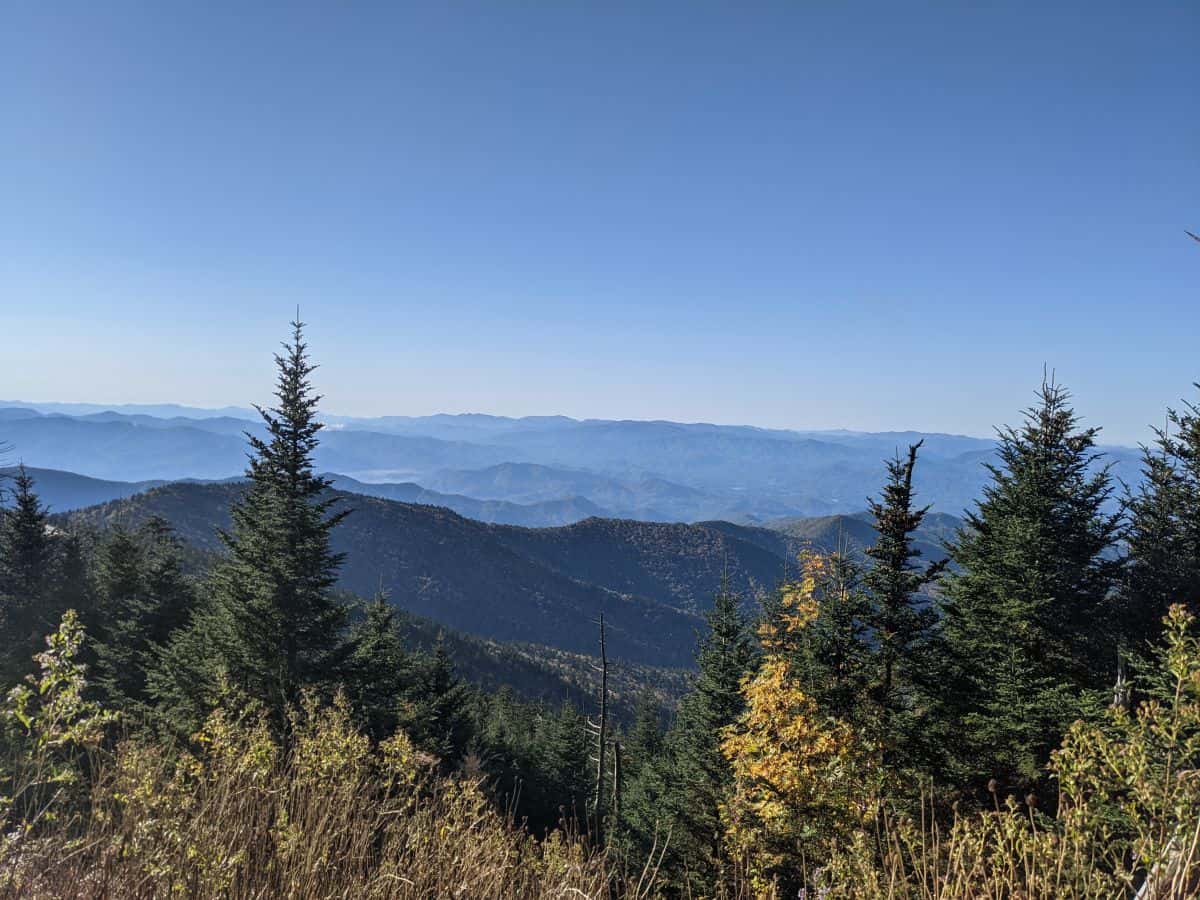
When visiting any national park, it’s important to be aware of the rules and regulations in place. Great Smoky Mountains National Park is no exception.
Some important things to keep in mind when visiting the Smokies:
1. Pets are prohibited on nearly all trails in the park.
2. Be sure to leave no trace. If there are no garbage cans around, pack out whatever you bring in with you.
4. Stay on the trails while hiking and don’t take any shortcuts. This helps protect the natural resources in the park and protects your safety.
5. Obey all speed limits and traffic laws while driving in the park. This helps keep everyone safe and ensures that visitors have a pleasant experience.
6. Come prepared for all types of weather, as conditions can change rapidly in the Smoky Mountains.
Final thoughts on your Smoky Mountains itinerary
If you’re looking for a great hiking destination with some beautiful scenery, Great Smoky Mountains National Park is definitely worth checking out.
With plenty of trails to choose from, there’s something for everyone – whether you’re a beginner or an experienced hiker.
And if you’re looking for some beautiful scenery, be sure to visit Cades Cove, Roaring Fork Motor Trail, Newfound Gap, and Clingmans Dome.
More articles about National Parks
- Inspiring books about U.S. National Parks
- The best National Parks in the Southern United States
- The top National Parks on the East Coast
- The best national parks gifts (for any budget)
- Hiking Congaree National Park
Pin this post!
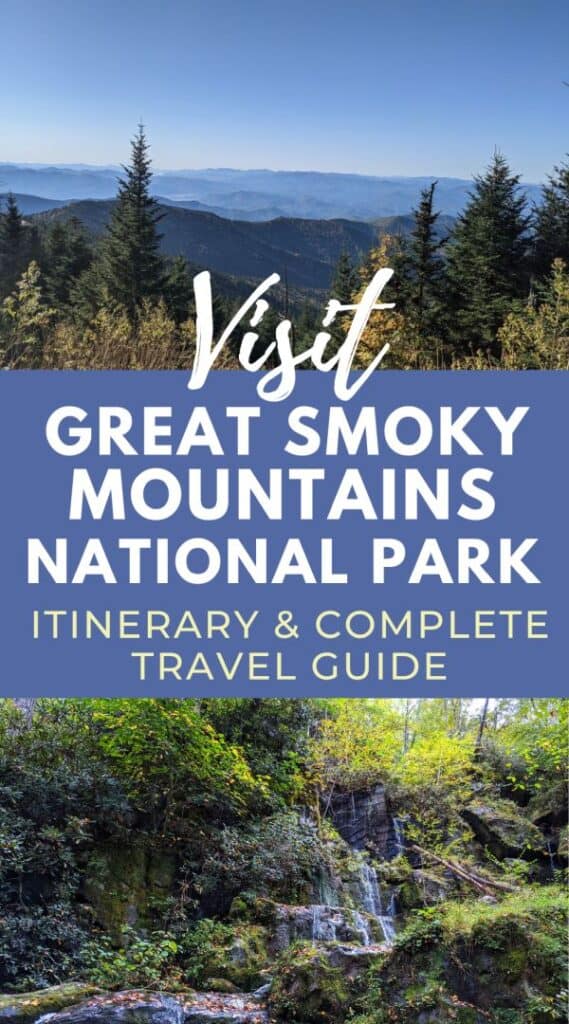
Darcy Vierow is a busy professional and travel planning expert with years of experience maximizing travel with limited time and on a less-than-average salary. Her tips have been published by Forbes, MSN.com, Yahoo! News, Yahoo! Finance, Aol, Newsbreak and GOBankingRates. Read more about Darcy Vierow .
Leave a Reply Cancel reply
Your email address will not be published. Required fields are marked *
By using this form you agree with the storage and handling of your data by this website. *
Privacy Overview
Want travel inspiration sent straight to your inbox?
By clicking ‘Sign Up,’ I acknowledge that I have read and agree to Hachette Book Group’s Privacy Policy and Terms of Use
Site Preferences
Sign up for our newsletter to get 15% off sitewide!
Smoky Mountain Trip Planner: One Week Itinerary
Many visitors are puzzled by what to do in Great Smoky Mountains National Park. Most of the park is wild, and hiking trails rather than roads lead into every holler, corner, and cove. You can get the ultimate Smoky Mountain Trip Planner by ordering a copy of my travel guide: Moon Great Smoky Mountains National Park!
In the meantime, here’s an idea on how to spend a week here, and to spend it well.
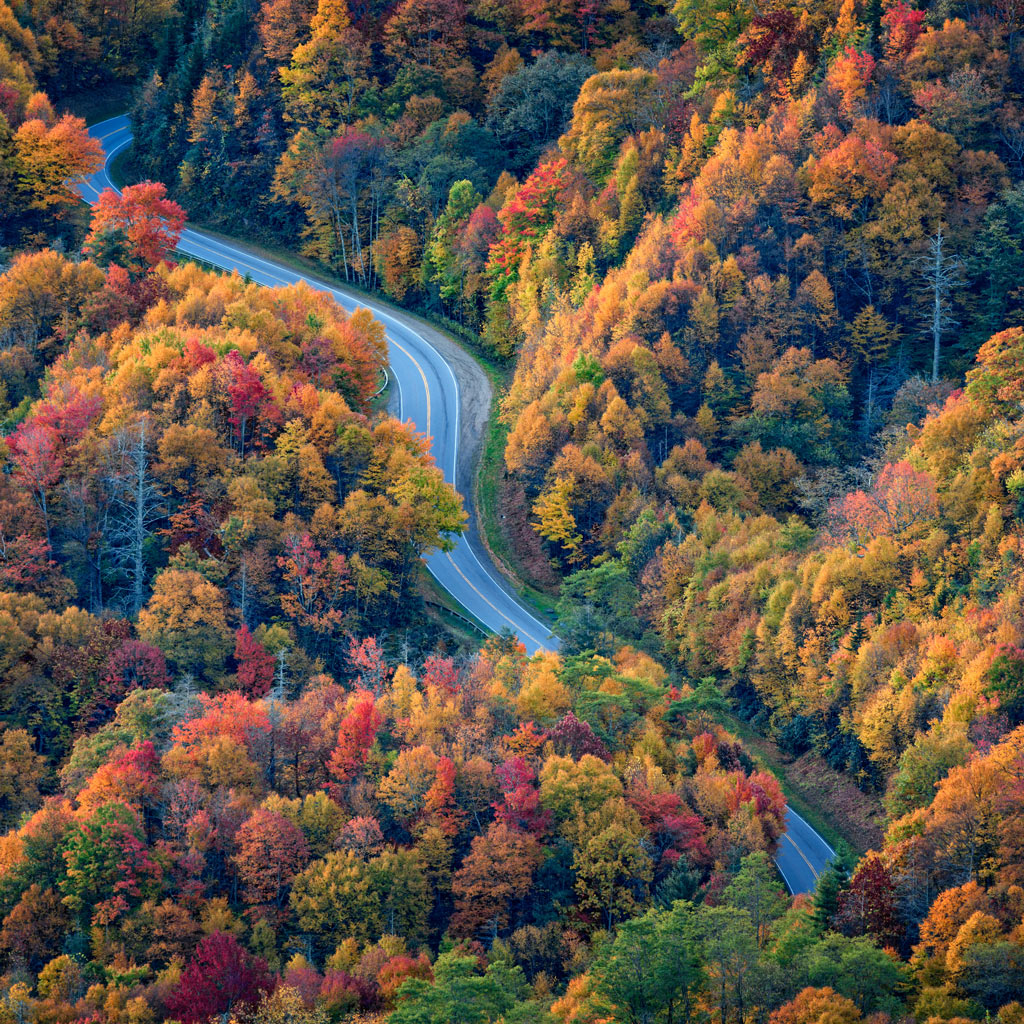
Newfound Gap Road
Base yourself in Gatlinburg, Tennessee, where you’ll have all manner of accommodation options and tempting entertainments easily at hand. Begin your exploration of Smoky at the Sugarlands Visitor Center, a mere two miles from Gatlinburg at the northern end of Newfound Gap Road.
Drive Newfound Gap Road south through the park. Hit the trail to Alum Cave Bluffs , a steep and strenuous five-mile hike that rewards you with a view many visitors never see.
As you come to the crest of the mountains on Newfound Gap Road, take the time to visit Clingmans Dome, the highest peak in the park. From the viewing platform at the top (an easy walk), you’ll have an unparalleled view of the surrounding country. There’s a lovely hike to Andrews Bald nearby, a moderate 3.5-hour trek to a high mountain meadow that’s often ablaze with wildflowers.
Newfound Gap Road ends at the Oconaluftee Visitor Center in Cherokee, North Carolina. Stop here to peruse the historic structures at the Mountain Farm Museum before returning to Gatlinburg for dinner with a show at the Dixie Stampede, a sort of Southern feast combined with a live-action play with horses, gunfire, and all sorts of excitement. Afterward, hit Sugarlands Distilling for a little moonshine to calm your nerves.
Roaring Fork
In the morning, have breakfast at the Pancake Pantry, and then head for the Roaring Fork Motor Nature Trail for today’s hike. Depending on how adventurous you feel, this can be a half-day exploration of a waterfall or two, or a strenuous 14-mile trek to Mount LeConte and back.
Either way, start off by hiking to Rainbow Falls, an 80-foot waterfall on LeConte Creek. For a short hike, turn around and hoof it back to the trailhead. To reach the summit of Mount LeConte, continue on the trail but be ready for a long, hard day of it. Baskins Falls is a smaller waterfall—only 30 feet—but few people make the tough hike in to see it, so it’s a bit of a hidden gem.
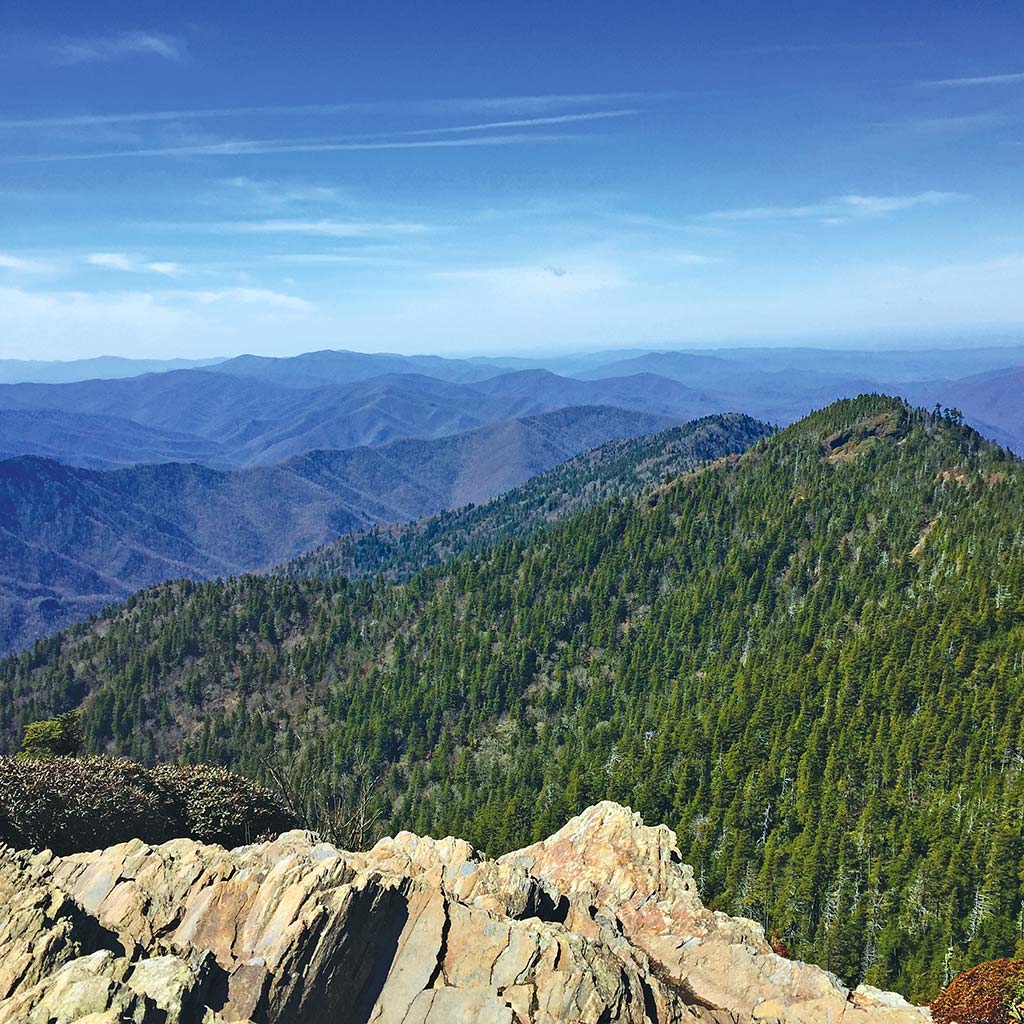
Since you’ve earned your supper, go for some traditional, stick-to-your-ribs country cooking at Mama’s Farmhouse in Pigeon Forge.
Head east to Cosby for a night of camping at Cosby Campground, where you’ll have your choice of beautiful day hikes. Hen Wallow Falls and Albright Grove offer easy, wildflower-filled hikes. The trip to the stone fire tower at the top of Mount Cammerer is a long, tough day on the trail, but well worth it. If you’ve brought your fishing gear (and license), catch dinner in Cosby Creek.
Cataloochee
In the morning, break camp and head north on Highway 32 for breakfast in Cosby at Janice’s Diner. From Cosby, follow Foothills Parkway east to I-40 and take the scenic route south to Mount Sterling Road, a drive of about an hour. Along Mount Sterling Road, roll down the windows, relax, and breathe deep—you’re almost at one of the most secluded areas of the park.
In Cataloochee, register at the campground (reserve a site in advance), set up your tent, and enjoy a picnic lunch before lacing up your boots and heading into the valley. Look for elk in the field across from Caldwell Place, or hike to Palmer Chapel, Little Cataloochee Church, or the Woody House. Anglers can wet a line in one of the nearby creeks and try to catch dinner.
Sunset signals time for chow and stargazing—there’s so little light pollution that the celestial show is breathtaking. Sit back and enjoy.
Newsletter Signup
Today, we head west to Cades Cove, a mountain community that was one of the first places settled on the western side of the Smokies. The 11-mile Cades Cove Loop leads through the former settlement and a collection of homes and structures. Take a moderate hike to Abrams Falls, a 20-foot waterfall or follow the Rich Mountain Loop (it’s a big day hike). A scenic drive north along Rich Mountain Road winds over the mountains to Townsend, where you can easily circle your way back to Cades Cove. Pitch a tent in Cades Cove Campground (reserve in advance) for the night. Be sure to take a walk and admire the stars.
Fontana Lake and Deep Creek
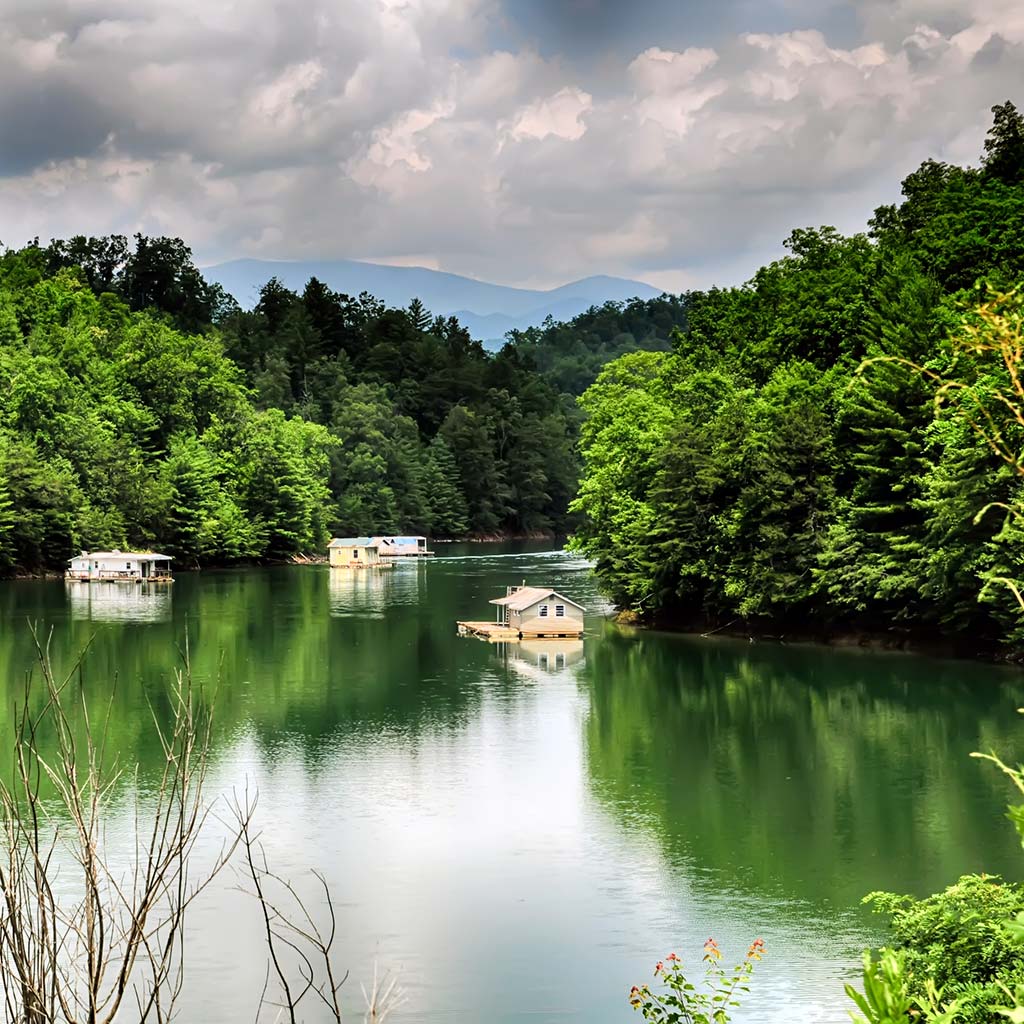
The next day, follow Parsons Branch Road south out of Cades Cove to its junction with Highway 129. You’ll skirt the southern edge of the park heading east, crossing the border into North Carolina at Deals Gap.
After Deals Gap, follow Highway 28 east along Cheoah Lake and past Twentymile to Fontana Village. To stretch your legs, turn north toward Fontana Dam, at the western end of Fontana Lake, and the trailhead for Shuckstack Mountain, a strenuous hike along the Appalachian Trail.
Or stay on Highway 28 east all the way to Bryson City. Stop for lunch at the Cork & Bean Bistro before turning north for your overnight at the Deep Creek Campground. For a short hike, follow the trail to Juney Whank Falls, or head to The Road to Nowhere, an abandoned highway project that terminates with a tunnel through the mountain and hike alongside Fontana Lake.
After a long day, relax at the campground in Deep Creek, which offers a relaxing treat: tubing. Wash away the sweat and trail dust with a float trip and some splashing in the creek.
Cherokee, NC
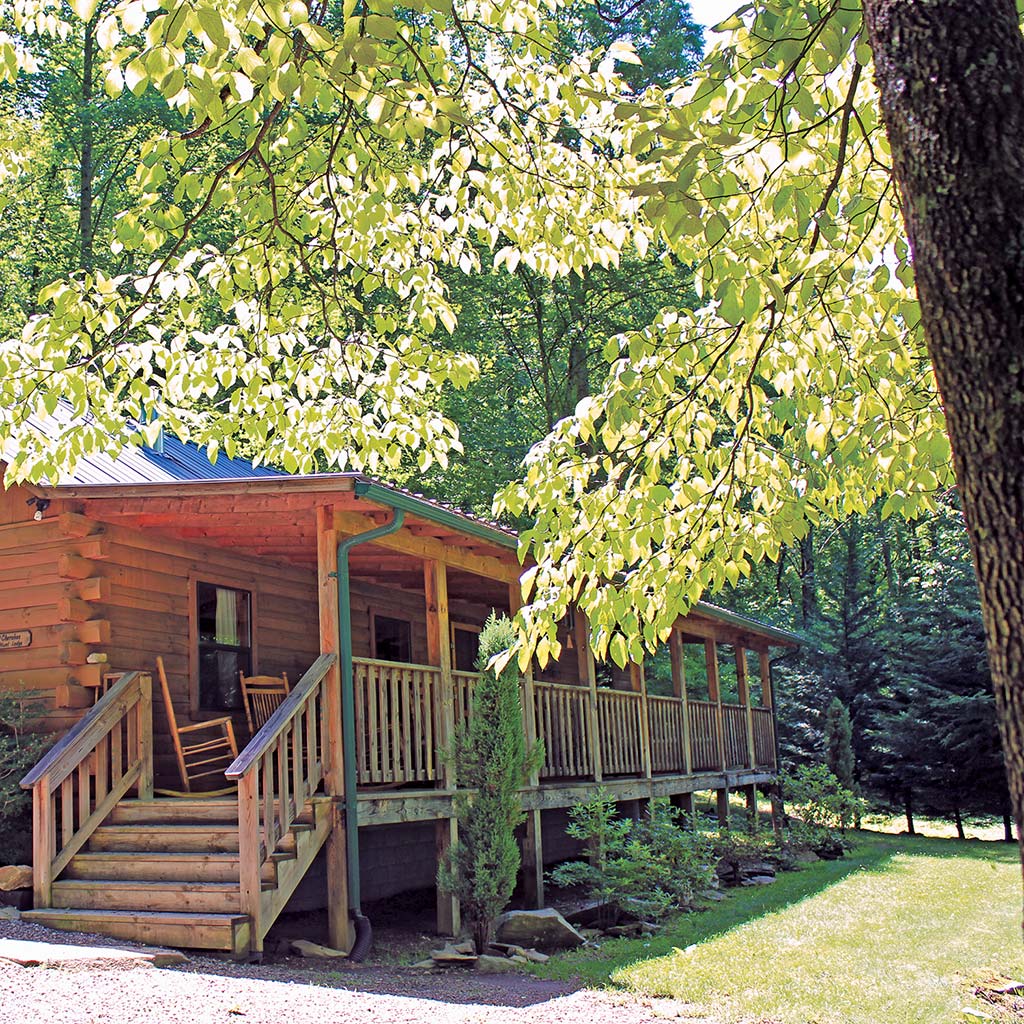
For your final day, head to Cherokee, the ancestral heart of the Cherokee Indians and home of the Eastern Band of Cherokee Indians. The drive from Deep Creek is a short one, so you’ll have a full day to explore. Start by visiting the Museum of the Cherokee Indian where you’ll learn the Cherokee creation story, hear songs and legends, and discover the heartache of the Trail of Tears. Across the street at the Qualla Arts and Crafts Mutual browse the traditional arts and crafts made by Cherokee artisans and craftspeople, then head up the hill to the Oconaluftee Indian Village to see how the tribe lived in the 1700 and 1800s.
Grab a belly-busting country buffet lunch at Granny’s Kitchen, then drive to Soco Falls for a short hike to stunning twin waterfalls. In the evening, head to Harrah’s Cherokee Casino where you can entertain yourself by dropping $20 on table games or slots before dining at one of the on-site restaurants. The casino has overnight accommodations or you can spend a quiet night at Panther Creek Cabins.
In the morning, it’s a 1.5-hour drive to the airport in Asheville and the flight home.

About the Author
Learn more about this author
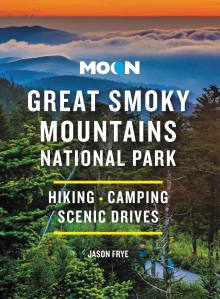
Moon Great Smoky Mountains National Park
by Jason Frye
Also available from:
- Barnes & Noble
- Books-A-Million
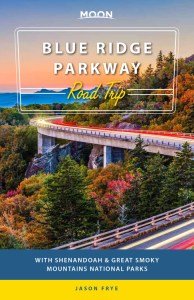
Moon Blue Ridge Parkway Road Trip
Pin it for later.
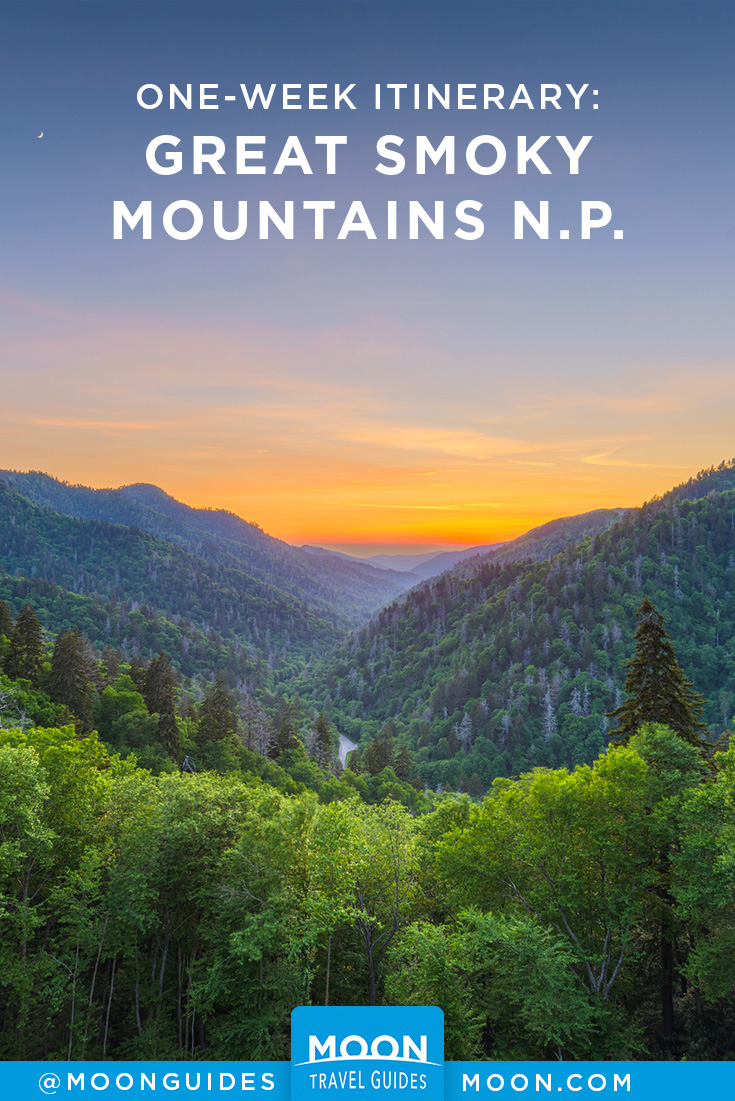
Join the Adventure: Start Your National Park Bucket List
National Park Bucket List
Best Great Smoky Mountains Itinerary for 4 Days in the National Park
Mountain peaks, gushing waterfalls, and historic coves are all a part of this Great Smoky Mountains itinerary in the popular national park on the North Carolina and Tennessee border.

With over 800 miles of trails, 2,000 miles of streams and waterways, dozens of waterfalls, and mountain peaks topping 6,000 feet, there’s a lot to take in at Great Smoky Mountains National Park. The most visited national park in the country straddles the border of Tennessee and North Carolina, covering over 500,000 acres.
Over 14 million vacationers flock here each year to drive scenic routes like Cades Cove, hike in the mountains, and chase waterfalls like Laurel Falls and Rainbow Falls. Whether you come for the family fun of Gatlinburg or to trek part of the Appalachian Trail (about 70 miles crosses through here), there’s a Great Smoky Mountains National Park itinerary to fit your travel style.
The 4-day Smoky Mountain itinerary below is perfect for first-timers, covering the most popular places to hike, drive, and sightsee. Adventurers will find ideas for some of the top hikes in the hills, including a summit or two. More low-key visitors can stick to the scenic routes, historic landmarks, and bucket-list waterfalls. There are enough options to pick from to easily fill 3 to 5 days or more in the park.
Keep reading for an action-packed Great Smoky Mountains itinerary and check out these other East Coast national parks for your bucket list.
Great Smoky Mountains National Park Map
This map has pins showing all of the locations in the Great Smoky Mountains National Park itinerary below. Click on the square in the top right corner to open a Google Map that you can save to your own account.
4-Day Great Smoky Mountains Itinerary
The 4-day Great Smoky Mountains National Park itinerary below has all of our favorite hikes, drives, historic sites, and more!

Day 1 — Little River Gorge Road and Cades Cove
Start your 4-day Smoky Mountain itinerary with a couple of classic drives through the park in the Cades Cove valley and along Little River Gorge Road. If you’re arriving from Knoxville or the west, you can start with Cades Cove before heading towards Gatlinburg on Little River Gorge Road. If you’re already in Gatlinburg, hike to Laurel Falls first before heading towards Cades Cove on Little River Gorge Road. You can either return on the same route or make a loop by driving through Townsend and Wears Valley.
The order of activities below assumes you’re staying in Gatlinburg. If you aren’t, check the map above for locations to craft a route that fits best.
Sugarlands Visitor Center
If you’re staying in Gatlinburg, pop by the Sugarlands Visitor Center before taking off for the day. It’s about 4 miles from the town and has a gift shop, natural history exhibits, park maps, trail information, and rangers on hand to answer questions.
Fighting Creek Nature Trail
Departing from the Sugarlands Visitor Center, the 1.4-mile Fighting Creek Nature Trail makes a loop through the woods and past a historic cabin. Anyone planning to hike to Laurel Falls or Abram Falls on this day should skip it to get an earlier start, but the nature trail is great for families with little kids or anyone who isn’t up for the more challenging paths.

Laurel Falls
Laurel Falls is one of the most popular destinations on a Great Smoky Mountains itinerary, with a paved trail to an 80-foot-tall waterfall. The moderately difficult path is 2.6-miles, roundtrip. The waterfall is extremely busy throughout the day, and parking is limited, so it’s best to go early in the morning or late in the afternoon.
Little River Gorge Road
As its name implies, Little River Gorge Road follows the bends of the Little River, spanning about 17 miles between the Sugarlands Visitor Center and Townsend, Tennessee. Driving the route without any traffic would take a little over 30 minutes, but you’ll want to make a few stops along the way.
The trailhead for Laurel Falls is near the start of the drive on the Sugarlands end, so after hiking here, continue west on the road. Several pullouts offer views of the Little River, but be sure to park at the Sinks for a gushing short waterfall under a bridge and Meigs Falls for a delicate cascade in the distance.
There are a few trailheads along this road as well, including the Metcalf Bottoms Trail , an easy, 1.5-mile roundtrip walk to an old schoolhouse, and the Meigs Creek Trail , a moderate, 6.5-mile roundtrip trek from the Sinks that follows a creek. If you’re squeezing Little River Gorge Road and Cades Cove into one day, I would advise skipping these hikes. On longer trips, you can stretch out the drive and try out some of these less-crowded trails.
The Metcalf Bottoms picnic area about midway along the road makes a great spot to stop along the river for lunch or a bathroom break. It has the only flush toilets and running water on this route past the visitor center.

Cades Cove Scenic Loop
One of the most-visited sections of the park, Cades Cove sits in a green valley at the foot of the mountains and holds the remains of settlements from the early to mid-1800s. A one-way, 11-mile loop road circles the area, with pull-offs for scenic views and historic sites. Plan to spend at least a couple of hours to half a day or more driving the loop, depending on stops, hiking plans, and traffic.
Be sure to download a map or grab one at the entrance before starting the driving tour, because you won’t be able to backtrack if you miss a stop. Along the way are three white clapboard churches with cemeteries, several log cabins, barns, a gristmill, and other structures. John Oliver Place, Cades Cove Primitive Baptist Church, Cades Cove Methodist Church, and Cades Cove Missionary Baptist Church are all on the first half of the drive. The second half has more homesteads like the Tipton Place and Dan Lawson Cabin.
The trailhead to Abram Falls (trail details in the next section) is about midway through the drive, before the Cades Cove Visitor Center , where you’ll find a restroom, information center, and a few more historic buildings.
In addition to the old-timey attractions, Cades Cove is a great place to look for wildlife. So much so that traffic often gets backed up when black bears are sighted. Park at spots like the Valley View for safe wildlife watching from your vehicle, and never approach, feed, or disturb any animals you see. Sunrise and sunset are the most active times, so plan your trip around then for the best chance to spot bears, white-tailed deer, wild turkeys, and more.
The Cades Cove Campground area at the start and end of the loop has a ranger station, a small store and deli (think ice cream, hot dogs, and nachos), and a bike rental shop. The loop road closes to vehicles on Wednesdays from May through September so that cyclists and pedestrians can sightsee.
Abram Falls
With a gushing drop 20 feet high and a picturesque pool at the base, Abram Falls is a favorite hiking destination in Cades Cove. The trailhead parking is about midway along the loop road, down a short, unpaved street.
The moderately-difficult hike is 5 miles round-trip, along a creek and through a pine and oak forest. This hike will add an extra 3 hours or so to your Cades Cove tour.

Day 2 — Newfound Gap Road
Every Great Smoky Mountains itinerary should include a scenic drive on Newfound Gap Road, which spans about 35 miles between Gatlinburg, Tennessee, and Cherokee, North Carolina, through the middle of the park. The highway climbs some 3,000 feet through forests of pine, oak and spruce. Along the way are lookouts with sweeping views of the mountains and trailheads for popular hikes like Alum Cave Bluffs and Chimney Tops.
Plan to pull over at the Chimney Tops Overlook, Ben Morton Overlook, and the Newfound Gap view on the state border where the Appalachian National Scenic Trail passes through. Continuing over to the North Carolina side, you’ll pass the road to Clingmans Dome before winding down to the verdant banks of the Oconaluftee River.
Just before Cherokee, look for the 1880s Mingus Mill , an operational grist mill, and the Mountain Farm Museum at the national park’s Oconaluftee Visitor Center. Keep reading for a few trail descriptions and notable stops on this route.

Chimney Tops Trail
While it’s only 3.5 miles roundtrip, the Chimney Tops Trail is considered strenuous for its 1,400-foot elevation gain in less than 2 miles. The payoff, though, is sweeping views of Mount Le Conte and the Chimney Tops pinnacles.
The trailhead is along Newfound Gap Road about 7 miles from the Sugarlands Visitor Center. Previously, hikers could follow a ridge to the top of the pinnacles, but wildfire damage has shut down access to the last quarter-mile climb. Now, the final destination is an observation deck below the summit.
Alum Cave Bluffs Trail
Mountain views, rock tunnels and steep cliffs are featured on the popular Alum Cave Bluffs Trail. Crossing log bridges and winding through old-growth woods, the strenuous trail climbs some 1,200 feet to the eponymous bluffs before continuing on to the summit of Mount Le Conte.
On the way, you’ll pass through a tunnel formed by Arch Rock and see valley views from Inspiration Point before standing beneath the shade of the massive bluffs. Turning around at the Alum Cave Bluffs makes for a 5-mile, round-trip hike while climbing the exposed cliffs to Mount Le Conte turns it into a 10-mile trek.
While there are a couple of large parking lots at the trailhead, they often overflow, with cars stretching down the sides of the highway on especially busy days. To avoid adding extra mileage walking to and from your vehicle, plan to start this hike early in the morning.

Appalachian Trail to Charlies Bunion
Just over 70 miles of the 2,190-mile-long Appalachian Trail pass through Great Smoky Mountains National Park. The highest peak on the trail is here as well — Clingmans Dome at 6,643 feet. Hikers who want a little taste of the bucket-list footpath can hop on at spots where it crosses through like Clingmans Dome or Newfound Gap.
One popular excursion on the trail from the park is the hike to Charlies Bunion, a rocky outcrop with views of peaks and valleys. Starting from the Newfound Gap parking lot, the round-trip hike is 8 miles and moderately difficult, with an elevation gain of 1,600 feet.
Andrews Bald Trail
The hike on the Forney Ridge Trail to Andrews Bald departs from the Clingmans Dome parking lot and leads through old-growth forests to an open field of grass and seasonal wildflowers on the bald. Round trip, it’s a moderate, 3.6-mile hike and a great option for visitors who are short on time but want to hike in the mountains.
Unlike the other paths on this list, this one starts with a 1,200-foot descent, with an uphill climb to return. The trail keeps going past Andrews Bald for another few miles.

Clingmans Dome
The tallest peak in the park and the whole state of Tennessee, Clingmans Dome is 6,643 feet high. An observation tower at the top with a rounded deck has panoramic views for over 100 miles on a clear day.
The 7-mile road to the peak branches off from Newfound Gap Road and closes seasonally due to weather conditions at the higher elevation. A very steep 0.5-mile paved trail leads to the tower from the parking area. There’s a small visitor center and store near the start of the walk.
Sunset and sunrise from the viewing deck at Clingmans Dome are simply spectacular, so plan your day to fit one in if you can. If you’re driving Newfound Gap Road round trip from Gatlinburg, you can skip Clingmans Dome on the way out to Cherokee and head up before sunset on the return trip.
Oconaluftee Visitor Center and Mountain Farm Museum
Just a couple of miles from Cherokee, North Carolina, the Oconaluftee Visitor Center marks the southern entrance to Great Smoky Mountains National Park. Here you’ll find a gift shop, restrooms, park maps and information, and water fill-ups.
Inside the center, exhibits tell the story of the Smokies, from native residents to the early settlers to the formation of the national park in the 1920s and 30s. Outside, the Mountain Farm Museum preserves a village of old log buildings, including a barn, farmhouse, corn crib, smokehouse, and more, with seasonal historic demonstrations.

Mingo Falls
Though it’s not within the national park bounds, Mingo Falls is absolutely worth a brief excursion while you’re on the North Carolina side of the Smokies. The cascade of 120 feet is one of the tallest waterfalls in the state, made more spectacular by how close you can get to the gushing drop.
The short and steep hike up steps and a rocky dirt path is only about a quarter mile each way and leads to a wooden bridge with a straight-on view of the waterfall. Located on Cherokee Nation land, the trailhead is just 6 miles from the Oconaluftee Visitor Center.
The town of Cherokee, North Carolina, is just a couple of miles from the southern entrance to Great Smoky Mountains National Park and from the southern entrance to the Blue Ridge Parkway. It’s also the closest gateway town to the national park on the North Carolina side for overnight guests and is generally a bit cheaper and less crowded than Gatlinburg in Tennessee.
If you have enough time, consider visiting one of the cultural attractions here. The Museum of the Cherokee Indian has art, culture and history exhibits and the Oconaluftee Indian Village is a replica 18th-century Cherokee community with craft demonstrations, living history reenactments, and special performances, including a seasonal evening play that tells the story of the Trail of Tears. Harrah’s Cherokee Casino Resort has restaurants, nightlife, events and a hoard of amenities.
For a short stop before heading back to Gatlinburg, you can browse the shops along Tsalagi Road or picnic in Oconaluftee Island Park on the river.

Day 3 — Roaring Fork Drive and Waterfalls
Day 3 of this Great Smoky Mountains National Park itinerary takes you to a couple of the most loved waterfalls in the park. Active travelers can hike to both on the same day on either two shorter individual trails of around 8 miles total or connect them on a longer route that goes up Mount Le Conte.
If you only have time for one hike, Grotto Falls is the easier of the pair, but still moderately challenging with some uphill walking.
Rainbow Falls
On bright afternoons, the sun hits the mist of Rainbow Falls, creating a hazy blur of colors off the 80-foot drop. With a trailhead less than 5 miles from Gatlinburg on the Tennessee side of Great Smoky Mountains National Park, the cascade is a popular hiking destination on a Great Smoky Mountains itinerary.
The 5.4-mile, round-trip trek follows Le Conte Creek, crossing water a few times on bridges and rocks. It’s considered a moderate to difficult hike, with about 1,700 feet of elevation change and takes a good three to five hours to complete. Adventurous travelers can stretch it out into a longer day hike by continuing on to the summit of Mount Le Conte, a 13.4-mile, round-trip journey.
Parking at the trailhead fills up fast, so plan to arrive early in the morning for this hike.

Grotto Falls
Just a couple of miles past the Rainbow Falls trailhead on the one-way Roaring Fork Road, the hike to Grotto Falls is 2.6 miles round trip. While the waterfall is only 25 feet high, the cave-like setting and the ability to walk behind the cascade make this a crowd-pleaser.
The trail is moderately difficult with less than 600 feet of elevation change and only takes a couple of hours, so you’ll see plenty of families along the way. For a more adventurous take, you can continue on the Trillium Gap Trail through hemlock forests to the peak of Mount Le Conte. Hiking a loop back down the Rainbow Falls Trail makes for about a 15-mile route.
There are only a few parking spots at this trailhead, and roadside shoulder space is sparse, so plan to either start very early in the morning or be prepared to add another mile or so onto the walk if you have to park further down the road. Roaring Fork Motor Nature Trail is a 5.5-mile one-way drive, so you’d have to loop all the way back around for another chance to park.
LeConte Lodge
Near the top of Mount Le Conte, the LeConte Lodge offers overnight accommodations in log cabins. You have to book months in advance to get a spot, but the sunrise views from 6,400 feet up are hard to beat. The only way to get there is hiking one of a handful of paths up the mountain, including the Trillium Gap Trail, Rainbow Falls Trail and Alum Cave Trail.

Roaring Fork Motor Nature Trail
Driving the Roaring Fork Motor Nature Trail is the perfect end to a day of waterfall hiking. A one-way road, the 5.5-mile route passes through verdant forests with rushing streams, log cabins and an old gristmill along the way.
Plan to pull over at a few historic buildings like the Noah Bud Ogle Cabin (just before Roaring Fork Road begins), Alex Cole Cabin, Ephraim Bales Cabin, and Alfred Regan House and Tub Mill. It’s the perfect little historic road trip and a more compact substitute for Caves Cove if you’re short on time.
Towards the end, look for a spot called the Place of a Thousand Drips to see a network of mini falls combining into a larger display. The 1920s Ely’s Mill at the end of the drive has a family-run crafts shop, cabin rentals and a wedding venue.

Day 4 — Foothills Parkway, Gatlinburg or Dollywood
On your final day in Great Smoky Mountains National Park, you can hike a trail you haven’t had time for yet from day 2 or 3, explore Gatlinburg attractions, or drive the Foothills Parkway for scenic views. The Dollywood theme park is also just 10 miles north of Gatlinburg in Pigeon Forge for a change of pace.
Foothills Parkway
The Foothills Parkway corridor traces the top of the national park a few miles north, with views of the Great Smoky Mountains from overlooks along the way. Commissioned in 1944 as a 72-mile route connecting Interstate 40 and U.S. Route 129, the roadway has less than 40 completed miles to date in a couple of different sections.
The longest part you can drive is the west end, between Wears Valley and Chilhowee Lake on the Little Tennessee River. A short section on the northeast side between Crosby and I-40 is only about 5 miles long.

While I recommend spending as much time as possible in the national park, Gatlinburg does have some fun activities for family vacations, as long as you don’t mind dealing with crowds for much of the year.
The downtown strip offers kitschy museums, arcades, souvenir shops and chain restaurants. Parking is tight but a trolley shuttles visitors from a park and ride lot at the welcome center. Some of the top things to do in Gatlinburg are the Space Needle , a 407-foot-high observation platform with 360-degree views, Gatlinburg Skylift Park , with a chairlift and 700-foot-long elevated pedestrian cable bridge, and Ober Gatlinburg , with an aerial tram to the top of Mount Harrison for an amusement park in summer and skiing and tubing in winter.
For a change of pace from all the outdoorsy activities in Great Smoky Mountains National Park, you can spend a day at Dollywood. Dolly Parton’s Appalachian-style theme park in Pigeon Forge has dozens of roller coasters and rides, toe-tapping shows, and tons of Southern food.
Dollywood is less than 15 miles from the northern end of the national park.
Great Smoky Mountains National Park Guide and Tips
Use these Great Smoky Mountains National Park tips to help plan your trip!

Where to stay near Great Smoky Mountains National Park?
On the Tennessee side of the park, Gatlinburg is the top place to stay, with an amenity-filled and touristy downtown district just outside the park. There are plenty of hotels and cabins to choose from here. About 10 miles north, Pigeon Forge has cheaper options when Gatlinburg fills up and is home to the Dollywood theme park. The communities of Wears Valley and Townsend to the west of Gatlinburg are much quieter with cabins and RV parks but fewer amenities. Townsend is convenient to the Cades Cove area, about 10 miles from the entrance.
On the North Carolina side of the park, Cherokee is less than 5 miles from the park entrance and has a large casino resort plus some cheaper hotels and campgrounds. Bryson City on the Tuckasegee River is 10 miles west of Cherokee and has a railroad with train rides through the park.
Airport Near Smoky Mountains National Park
The closest airport to Great Smoky Mountains National Park is McGhee Tyson Airport in Alcoa, Tennessee, near Knoxville. It’s about 25 miles from the Townsend entrance and 40 miles from Gatlinburg and the Sugarlands Visitor Center on the north end of the park. The last time I did this Great Smoky Mountains itinerary, I flew into Knoxville and drove through the park, to Asheville, and back.
On the North Carolina side, Asheville Regional Airport is about 60 miles from Cherokee, the Oconaluftee Visitor Center, and the southern entrance to the park.
Read Next: U.S. National Parks Bucket List by State
How many days do you need in the Smoky Mountains?
You could spend anywhere from a day in the Great Smoky Mountains National Park passing through on a road trip, to a week or more for a relaxed stay at a cabin or an extended hiking adventure.
I recommend a minimum of a 2-day itinerary in the Smoky Mountains to drive Newfound Gap Road through the park and visit Cades Cove. With 3 days in Great Smoky Mountains National Park, you should have time for a couple of hikes to spots like Grotto Falls, Rainbow Falls or Alum Cave Bluffs. With a 4 day Smoky Mountain itinerary , you can spend a full day on a longer hike or explore the attractions around Gatlinburg or Cherokee. A 5-day itinerary in Great Smoky Mountains should be enough time to hike all the trails on the list above or spend some time relaxing in a cabin outside the park.
What should you not miss in the Great Smoky Mountains?
There are so many things to do in the Great Smoky Mountains, with over 800 miles of trails in the national park and some 40 waterfalls you can see along the streams and rivers. On your first visit, you should not miss the Cades Cove scenic drive, a waterfall hike (Laurel Falls, Grotto Falls, Rainbow Falls and Abram Falls are the most popular), a drive along Newfound Gap Road to see the mountain lookouts, and a walk up to the Clingmans Dome observation tower. This Great Smoky Mountains itinerary includes the most popular things to do on your first trip.

What is the best month to visit the Smoky Mountains?
The best month to visit the Smoky Mountains will depend on your goals and activities for the trip. Do you want to visit in spring for the gushing waterfalls in Great Smoky Mountains National Park? Autumn for the colorful leaves? Summer for warm temps on mountain hikes?
If you’re looking to avoid the crowds, summer when schools are out and October for fall foliage tends to be the busiest times in the park, plus weekends and holidays throughout spring, summer and fall. Great Smoky Mountains National Park has over 14 million visitors per year, though, so it’s hard to completely avoid people unless you visit in a chilly month like January or February .
This Great Smoky Mountains itinerary is perfect for spring, summer and fall.
Spring in the Smoky Mountains
In spring, the weather changes from snowy and grey in March to daytime temps in the 70s and 80s later in the season. The trees are usually still bare throughout April, but the park won’t be as crowded yet if you avoid the weekend.
Summer in the Great Smoky Mountain
In summer, the lower elevations can hit the 90s and humidity is high, though up in the mountains, it’s much cooler. Mount Le Conte rarely reaches temperatures in the 80s. Rain and thunderstorms in the afternoon are also common is the summer, and visitation peaks from June through August.
Fall in the Smoky Mountains
Fall drops from average highs in the 80s at lower elevations in September to the 60s in November. The leaves can start changing at higher elevations in mid-September, but the lower spots don’t typically peak until sometime between mid-October and early November.
Winter in the Great Smoky Mountains
Winter conditions can vary from tepid in the Gatlinburg area to subzero and snowy in the mountains. The average highs in the lower elevations through winter are in the low 50s, with lows below freezing. In the high elevations, average highs are just above freezing and lows are around 20. January and February see an average monthly snowfall of around 20 inches. Icy conditions will cause some park amenities and roads to close, including the route up to Clingmans Dome, which typically closes for the season by late November. Nevertheless, winter can be a great time to visit to avoid crowds!
Tickets and Passes for Great Smoky Mountains National Park
Great Smoky Mountains is one of just a few national parks with no entrance fee. You do have to pay for things like camping reservations and backcountry permits, but there is no charge to enter the park. A proposed parking fee is being considered for 2023 and beyond.
Similar Posts

12 of the Best National Parks to Visit in February in the USA

The Best Zion Bryce Grand Canyon Itinerary for 4 to 7 Days

11 Best East Coast National Parks You Need to Visit

10 of the Best National Parks to Visit in March in the USA

The Best 3 Day Yellowstone Itinerary for Your First Time at the National Park

The Best 2 Days in Zion National Park Itinerary for Your First Time
Leave a reply cancel reply.
Your email address will not be published. Required fields are marked *
Save my name, email, and website in this browser for the next time I comment.
A beginner’s guide to visiting Great Smoky Mountains National Park

The Great Smoky Mountains National Park, covering the Tennessee-North Carolina border is filled with scenic views, roaming wildlife and Southern charm. The park proudly carries the title of the most-visited national park year after year. Its proximity and drivability from much of the Southeastern United States brings more than 11 million visitors each year while the second-most visited national park, the Grand Canyon, only pulls in around 6 million per year in recent years.
I am a proud East Tennessee native and grew up going to Pigeon Forge and Gatlinburg. I hiked the park's countless trails each summer so I'm excited to dive in and share with you the must-see, must-do attractions the Great Smoky Mountains National Park and surrounding area has to offer.
For more TPG news delivered each morning to your inbox, sign up for our daily newsletter .
What to see and do
There is truly something for everyone in the Great Smoky Mountains. Nature lovers can take advantage of numerous hiking trails, tubing opportunities down the Pigeon River, scenic drives and even a one-of-a-kind synchronous firefly festival. Those that prefer more of the touristy attractions can enjoy the day at Dollywood learning about Appalachia culture and riding some of the best roller coasters in the country, or explore all that Pigeon Forge has to offer in the form of mini-golf and moonshine tastings.
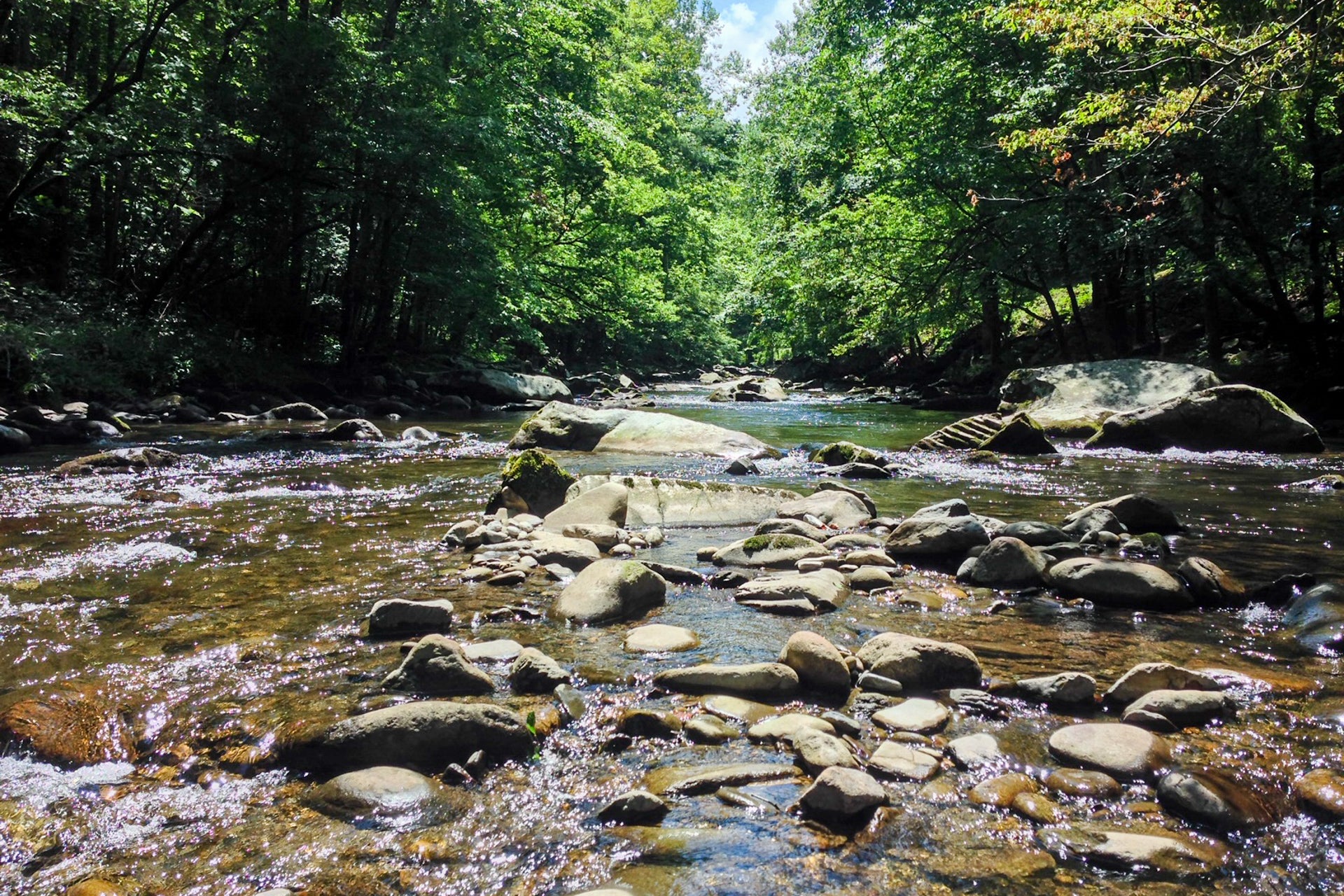
Clingmans Dome (1 mile round-trip) is the highest point in Great Smoky Mountains National Park, at 6,643 feet, with truly unbeatable views. The hike to the peak is only a half-mile from the Clingmans Dome parking area and it's fully paved, but be warned -- it's very steep. It can also be pretty chilly at the top, often 20 degrees cooler than the rest of the park, so bring a jacket. The observation tower at the summit offers sweeping views of both the Tennessee and North Carolina sides of the national park.
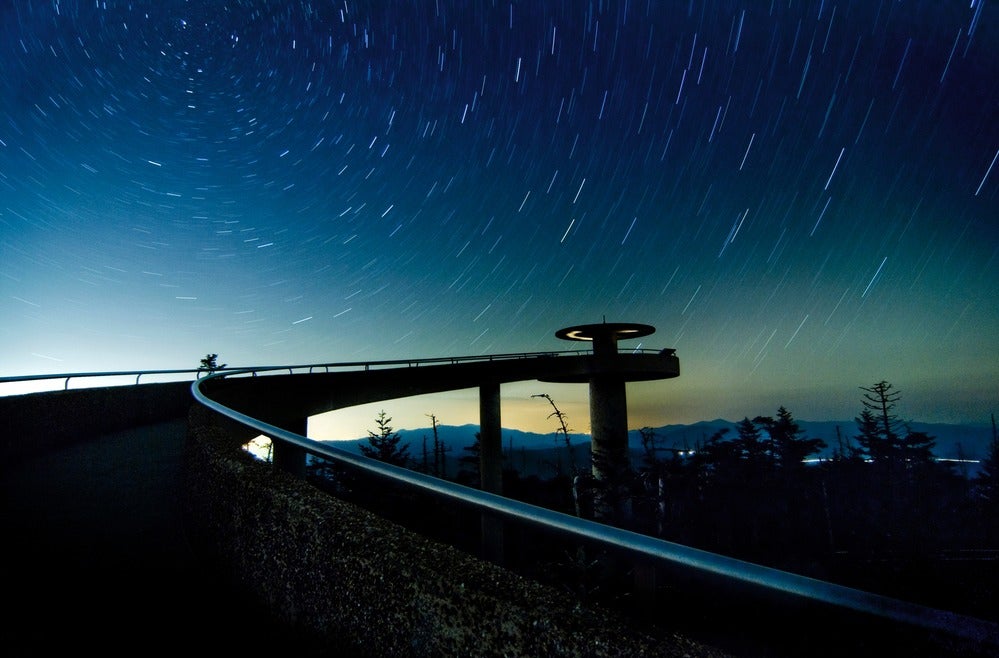
Chimney Tops Trail (3.3 miles round-trip) felt the brunt of the destruction caused by the 2016 wildfires, but it's been mostly restored since reopening in fall 2017. This trail continues to be one of the most popular in the park year after year. It's a great option for more experienced hikers, as it's a pretty short, steep trail that offers incredible panoramic views at the top.
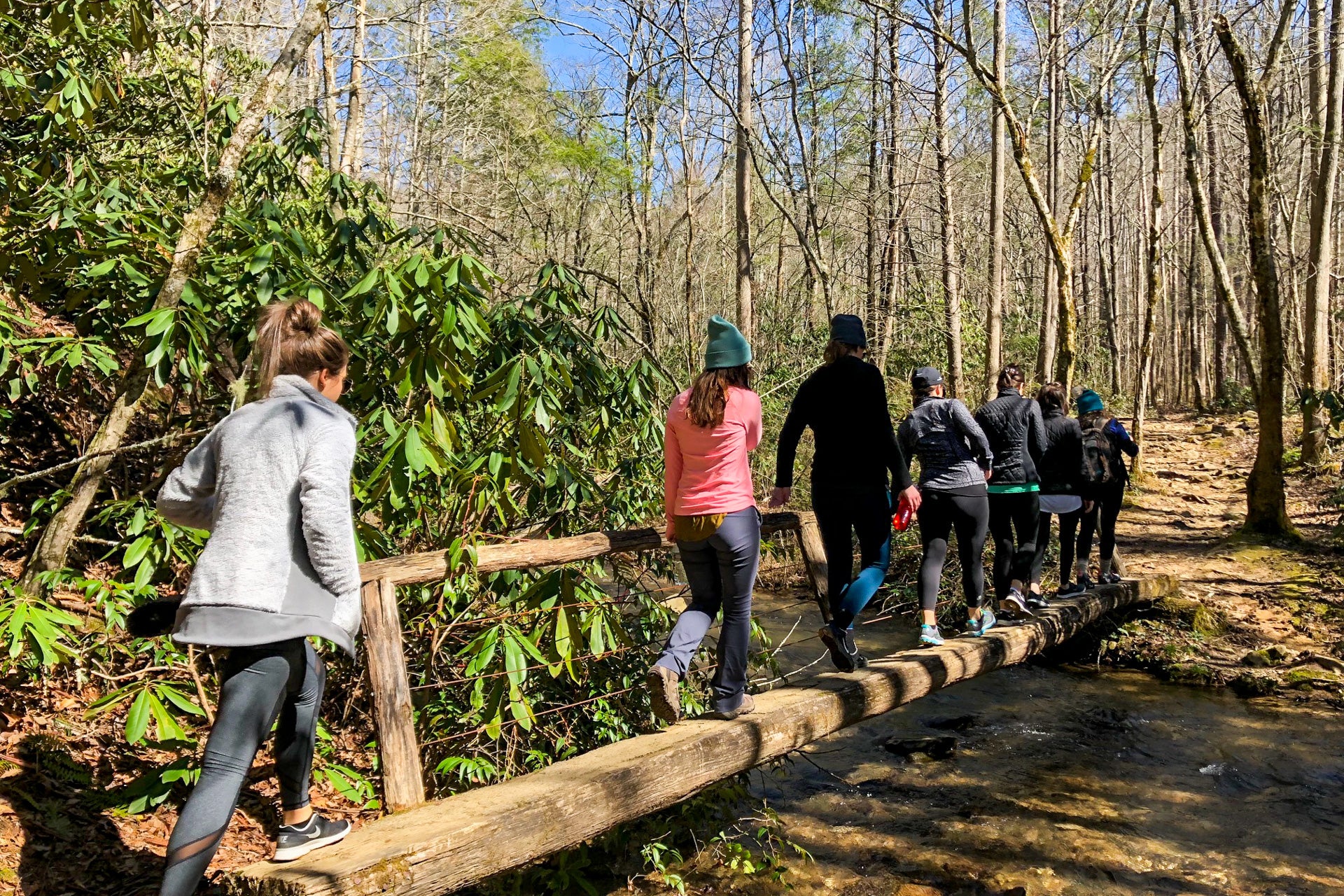
Abrams Falls Trail (5.2 miles round-trip) is a fun, moderate trail that leads to a swimming hole and waterfall at the end -- a perfect spot to take a dip and cool down a bit before hopping back on the trail.
Alum Cave Trail (4.4 miles round-trip) is my personal favorite, and one of the most scenic hikes in the Smokies. This trail offers some beautiful waterfalls and breathtaking views. Follow this trail to the top of Mount LeConte.
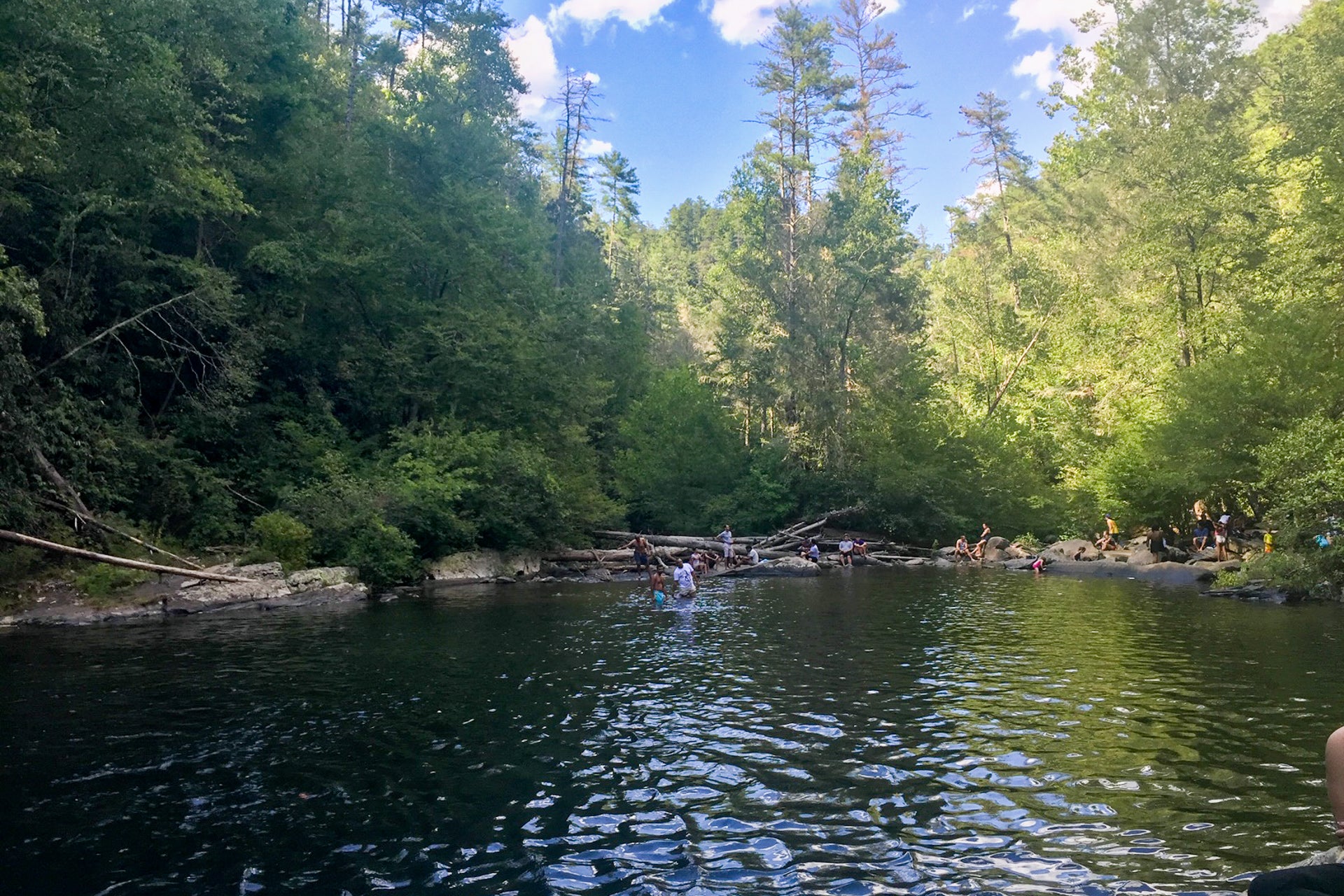
Laurel Falls (2.3 miles round-trip) is widely considered one of the best waterfall hikes in the Smokies. This trail is one of the easiest and most popular roundtrip hikes in the park leading to an 80-foot waterfall with incredible photo opportunities.
Kid-friendly hikes
While I consider Laurel Falls to be pretty accommodating for any hiker, the park also has many kid-friendly hikes highlighted on its website , including Kephart Prong Trail and Porters Creek.
Gatlinburg SkyBridge: It's home to the longest pedestrian suspension bridge in North America and the best views of the Smokies, hands down! There's also a chairlift at the same location since the 1950s -- a true staple in Gatlinburg!
Be sure to consult the National Park Service's official website to make note of any alerts, trail closings or extreme conditions that might affect your hike.
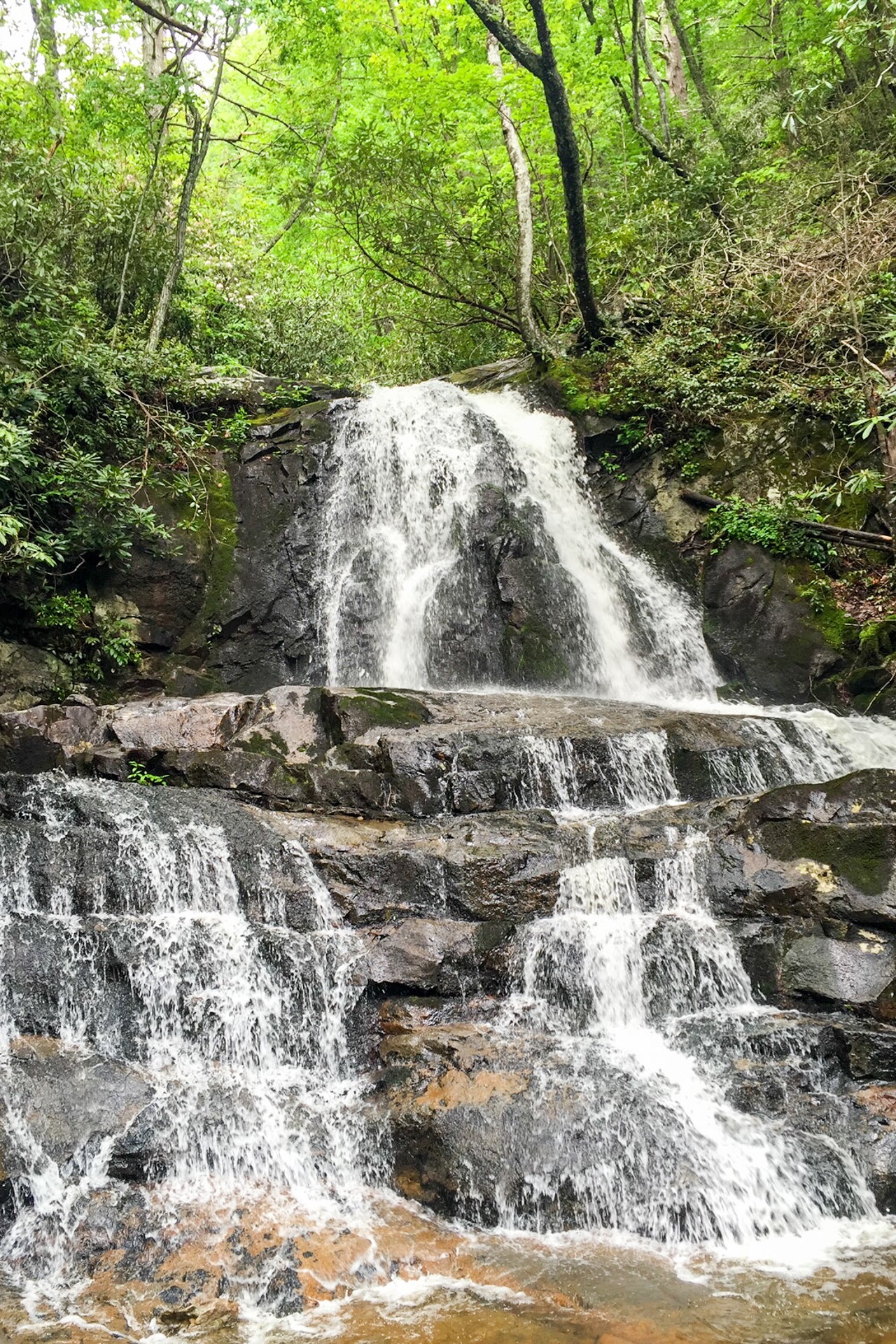
Scenic drives
Cades Cove Loop Road: This scenic 11-mile one-way loop road is perfect to experience the beauty and nature that the Great Smoky Mountains has to offer. The only thing needed to soak up these views is a car or bike and a little bit of patience, as the loop typically doesn't move quickly (especially on high-traffic weekends such as summer and fall holidays). Get your cameras ready and expect to see lots of wildlife. On recent trips through the loop, I've seen bear cubs, deer and more. It's worth noting that the road is closed to motor vehicle traffic on Wednesday and Saturday mornings until 10 a.m. throughout the summer to allow pedestrians and cyclists a chance to enjoy the loop.
"The Tail of the Dragon": Well-known to motorcyclists and car enthusiasts alike, this 11-mile section of Route 129 is infamous for its twists and turns, featuring 318 curves in all. Needless to say, it's not the best bet if you're looking for a nice scenic drive, as this is frequented by experienced motorists and can get dangerous during high season.
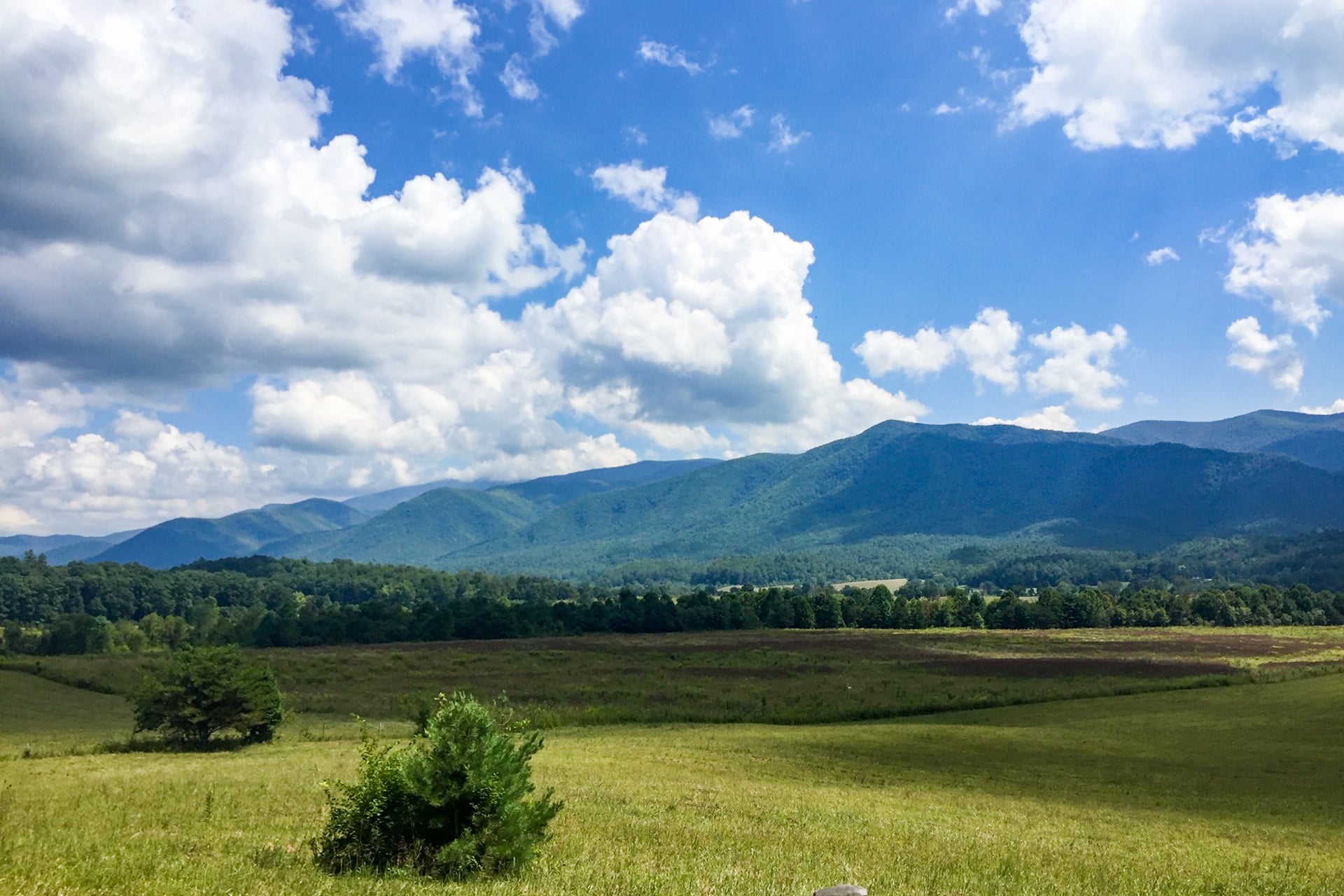
Synchronous firefly festival
This annual event, unique to the Smoky Mountains, should be on everyone's bucket list. I'm embarrassed to admit that I've never been able to snag tickets to this extraordinary display of some of nature's most unusual creatures, but that doesn't stop me from attempting each year. This natural occurrence takes place in late May or early June in the Elkmont area of the park. As you can imagine, the popularity of this event means availability to attend in person is limited. Visitors who would like to view the fireflies in person must enter a lottery for a parking pass to take the shuttle from the Sugarlands Visitor Center. More information can be found on the National Park Service's website.
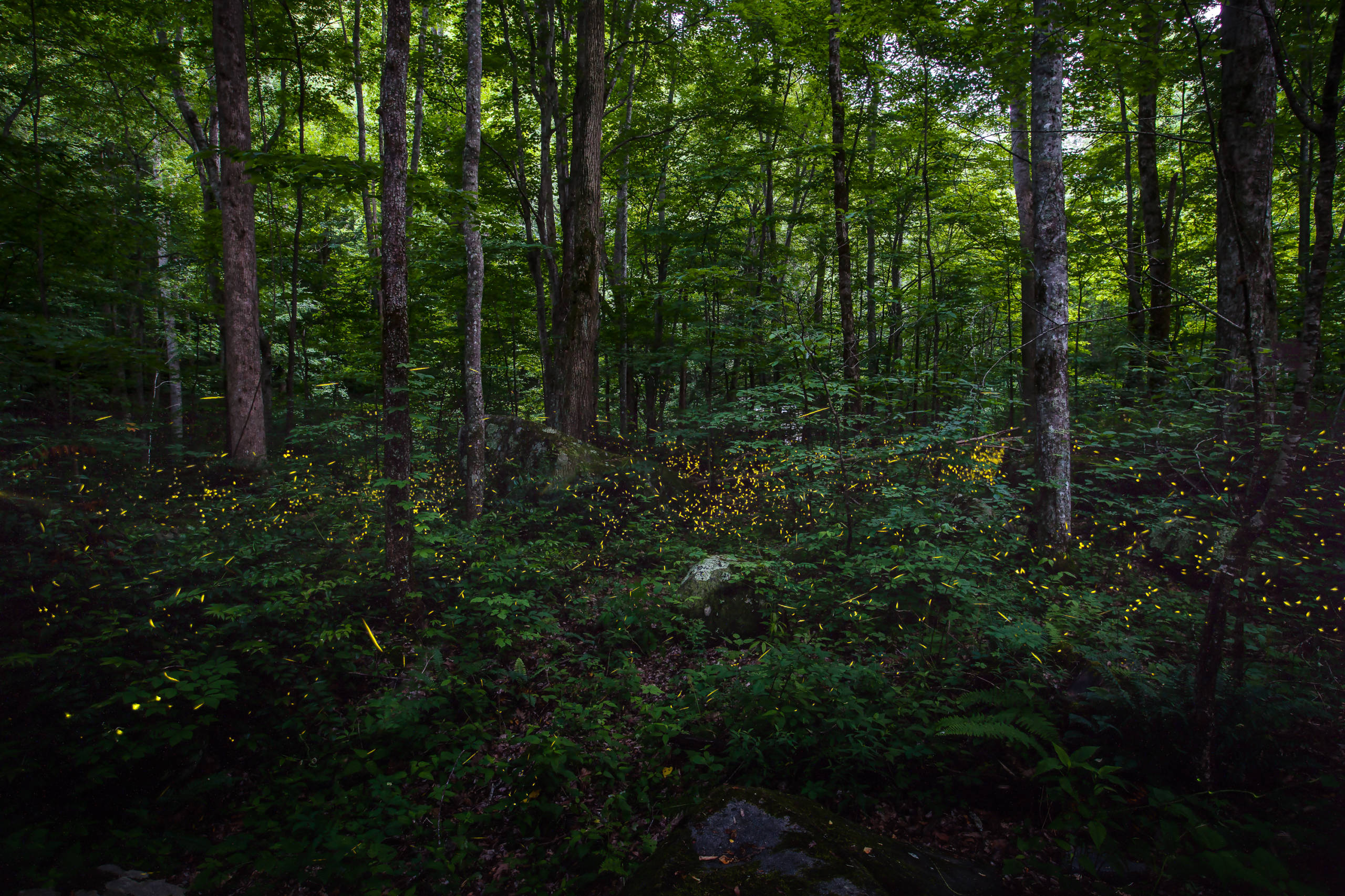
Tubing down rivers
Tubing (aka floating down the river in a raft) is a perfect and easy way to beat the summer heat in the Smokies, and there are two recommended areas on the Tennessee side of the park to do so: the Little Pigeon River in the Pigeon Forge area of town and the Little River in Townsend. Tubing is one of the best ways to take in the scenery, especially in late summer/early fall when the leaves begin to change. Make sure to confirm with the tubing rental company in advance that the water flow is good on the given day you select.
No trip to the Smoky Mountains is complete without a visit to the "eighth wonder of the world," and my favorite theme park in the country: Dollywood. Dolly Parton opened the theme park in Pigeon Forge, Tennessee, a short drive from the entrance to the national park, back in the late 1980s as a tribute to the Smoky Mountain culture that she calls home. It's since become home to some of the most exciting roller coasters, mouth-watering Southern food and annual festivals that attract visitors from far and wide. Check out our full review of Dollywood including when to go and what to expect, and be sure to pencil it into your plans.

Shopping and entertainment
One of the newest additions to the Smoky Mountains area is a mountainside family-friendly adventure park called Anakeesta , right off the Parkway in Pigeon Forge. This destination offers everything from zip lines and scenic gondola rides to a treehouse village adventure and mountainside coaster.
The Island in Pigeon Forge is a newer development right off the Parkway (you can see the Great Smoky Mountain Wheel from miles away). The retail and entertainment center offers something for everyone, including multiple dining options (Paula Deen's Family Kitchen, Margaritaville, Dick's Last Resort and Yee-Haw Brewing Company -- a personal favorite!) and retail vendors (toy stores, cigar shops, hand-blown glass gift gallery and more).
There's never a shortage of entertainment opportunities in Gatlinburg. Stop by Ole Smoky Moonshine or Sugarlands Distilling Company for moonshine tastings. Schedule a game of mountainside mini-golf. Or spend a rainy day at Ripley's Aquarium of the Smokies, featuring more than 10,000 exotic sea creatures. Also, be sure to check out our guide for 10 family-friendly activities in Gatlinburg .
Another great rainy day activity is to hit up the outlet stores at the Tanger Outlet Mall on the Parkway in Sevierville, featuring retailers like Disney, Eddie Bauer, J.Crew, Kate Spade and many others.
Just a short drive from the park, visitors can swing by Cherokee, North Carolina, for a visit to Harrah's Cherokee Casino Resort , a Caesar's property, for some gaming action at the biggest casino in the area.
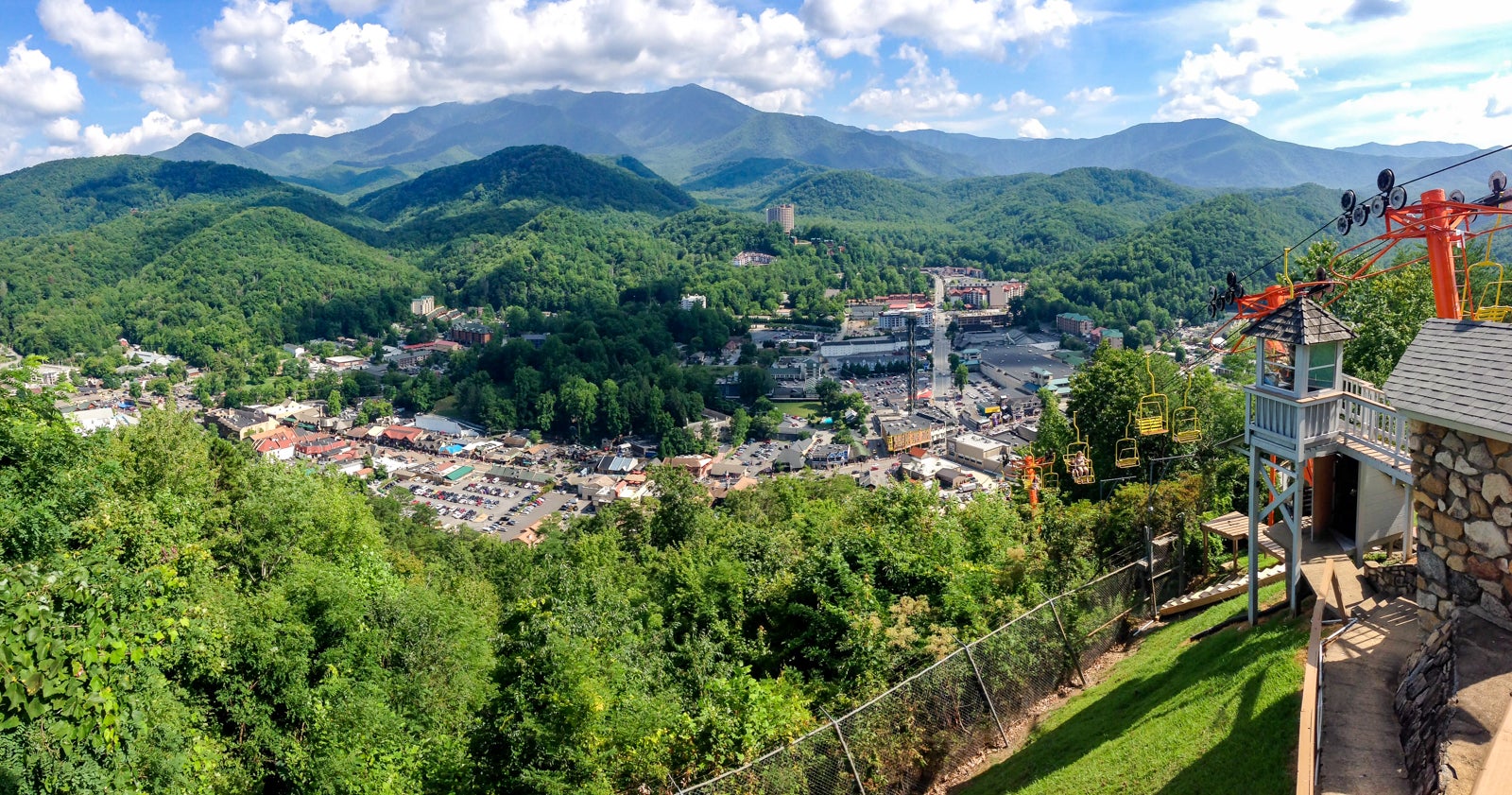
Where to stay
Cabins: For the most authentic experience, I highly recommend a log cabin in the Smokies. There are thousands of cabins to choose from across Pigeon Forge, Gatlinburg, Townsend and more. Be sure to consult our essential guide to renting a cabin in the Smoky Mountains for a list of my favorite cabin rental companies, as well as things to consider when booking a cabin in the area.
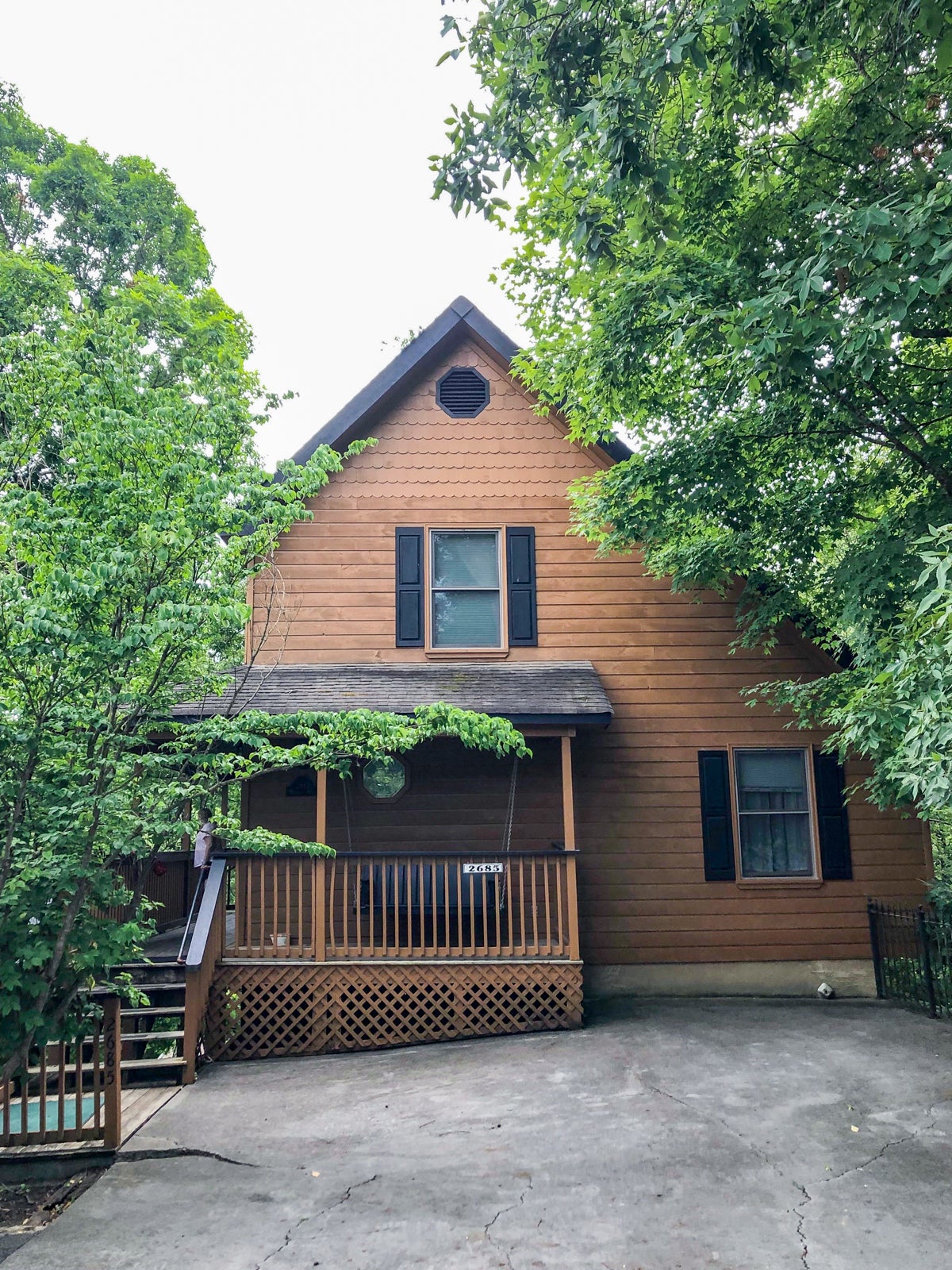
If you're looking to get a little closer to mother nature, the Smokies offer several different options for camping. Make note that most of these areas within the park require reservations in advance.
Backcountry: All backcountry campgrounds in the park require hiking, as well as a permit and reservations.
Frontcountry: Camping closer to your vehicle in front-country campgrounds is available at 10 different spots throughout the park.
Group campgrounds: For groups of seven people or more there are multiple group campgrounds available. These also require advanced reservations.
Horse camps: A unique camping option includes five drive-in horse camps providing ready access to backcountry trails within the park.
Head to the national park's official website for the map of designated camping locations throughout the park.
Blackberry Farm
Arguably the most luxurious accommodations one can experience in the Smoky Mountains, Blackberry Farm , on the Tennessee side of the park in Walland, gives "Southern hospitality" a whole new meaning. Blackberry Farm resort is a James Beard and Southern Living award winner year after year, and for good reason. You'll be hard-pressed to find a more impeccable combination of hospitality, amenities, cuisine, craft brews and wines from around the world. Don't believe us? Check out its impressive list of accolades and start saving for your next getaway. A visit to Blackberry Farm is one you won't soon forget.

Dancing Bear Lodge
In Townsend, Tennessee, also known as "The Peaceful Side of the Smokies," Dancing Bear Lodge is another award-winning resort offering rustic cabins, scenic views and an elevated experience.
LeConte Lodge
The aptly named LeConte Lodge sits atop Mount LeConte , the third tallest peak in the park, and is one of the most distinctive lodging experiences in the Smokies. The only way to get to the lodge is to hike up the mountain via the Alum Cave Trail, which is about a four-hour hike for experienced hikers. If you're looking for a more luxurious experience, this likely isn't it. The lodge is truly back-to-basics. There is no electricity or plumbing, however, there are four flush toilets in outhouses. While the lodge is not points and miles-friendly (no credit cards accepted -- eek!), the service more than makes up for it. One of my close friends, a new mom, visited the lodge with some friends on a girls trip and the staff graciously offered to store her breast milk for her -- a move that made her a loyal fan for life! With some of the most incredible views in all of the national park, it's important to note that reservations are difficult to come by and must be made in October of the previous year.
Asheville, North Carolina
While I'm biased to the Tennessee side of the park, there are a ton of incredible options just over the border in North Carolina as well. Consider a stay in Asheville at the Omni Grove Park Inn -- a personal favorite filled with mountain views and Southern charm (and an incredible spa and golf course to boot!)
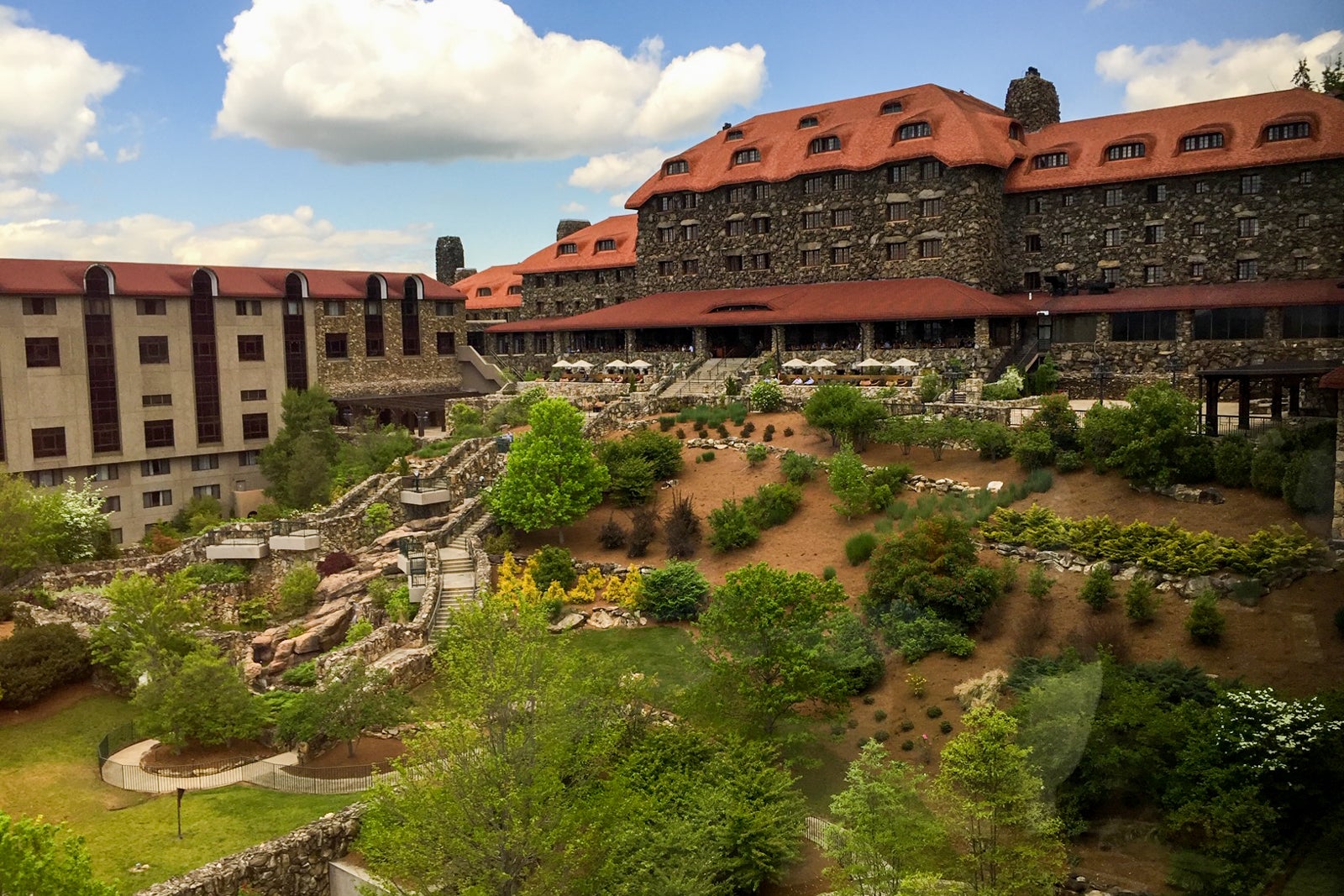
Where to eat
Whether it's shrimp and grits, fried chicken or biscuits and gravy, Southern comfort food fills the senses and just hits differently. There's no better place in the U.S. to find authentic Southern cuisine than at the foothills of the Smoky Mountains. Take note of my favorite spots to feast near the park, but also make sure to swing by a grocery store to pick up picnic fare to pack for your day in the park.
There is no shortage of dining options in Gatlinburg, Sevierville and Pigeon Forge with everything from delicious donut shops, Mexican cantinas, family-owned eateries and lots more! Here are my favorites:
This area is known for having a multitude of pancake houses, and it will seem like there's one on every block, but the most iconic is the Pancake Pantry located on the strip in Gatlinburg. Lines frequently stretch out the door here, so I suggest arriving early and coming hungry.
The Peddler is a rustic, riverfront steakhouse right at the entrance to the park in Gatlinburg and known for its quality and tradition in the area. The restaurant has been around for decades and promises a quality experience for every single patron.
The Apple Barn & Cider Mill , right off the Parkway in Sevierville, is a great stop for multi-generational visitors. I have memories of visiting here with my mom and grandmother when I was much younger, eating mouth-watering apple fritters and stocking up on its delicious jams and kinds of butter. It's a must-visit spot for any out-of-towners.
If there are beer connoisseurs in your group, head over the North Carolina border to Asheville. The city boasts more breweries per capita than any other city in the U.S., including Sierra Nevada, New Belgium, Oskar Blues and more than 40 others.
If you're looking for a unique, kitschy experience check out one of the dinner shows that lines the parkway in Pigeon Forge for a truly entertaining and one-of-a-kind dining experience. Dolly Parton's Stampede and the Hatfield & McCoy shows are both unlike anything you'll find elsewhere in the U.S., packed full of cowboys, bluegrass music, corn on the cob and more!
How to get there
The closest airports to the Smokies are McGhee Tyson Airport in Knoxville on the Tennessee side of the park and Asheville Regional Airport in North Carolina. McGhee Tyson is about 30 minutes to an hour's drive away from the park, depending on where you want to enter. Knoxville is at the crossroads of two major interstates - I40 and I75, which makes it an easy drive from many major cities in the Eastern U.S. The Asheville airport is about an hour's drive away from the park and will bring you in on the east side near Maggie Valley and Cataloochee.
Getting around
The Smokies are very car-friendly and fairly easy to navigate by automobile. With plenty of car rental options at the airports and around town, renting a car is probably your best bet.
As mentioned above, the area is also a hot destination for motorcyclists, with scenic views around each turn of the Blue Ridge Parkway. Be sure to do your research in advance for any restrictions on where you can or can't ride.
The city of Gatlinburg offers trolley service that will pick you up or drop you off at more than 100 different locations around the area, including Dollywood and the national park itself. Costs, routes and hours vary, so check its website in advance to help plan your trip .
When to visit
While fall is peak season for the Smokies (October typically sees the highest visitation on average each year due to the beautiful fall foliage), there's really not a bad time to visit. June through October are the busiest times, with January and February being the slowest. The area experiences pretty mild winters for the most part, so even planning a trip in November or December would be a great time to take in the sights, and likely find discounted accommodations. Gatlinburg, Pigeon Forge and surrounding areas also have a lot to offer in the winter including the annual Winterfest light festival , Dollywood's Smoky Mountain Christmas and more! Just keep in mind that some trails and roads might be closed from November to March, so be sure to do your research in advance on the national park's official website.
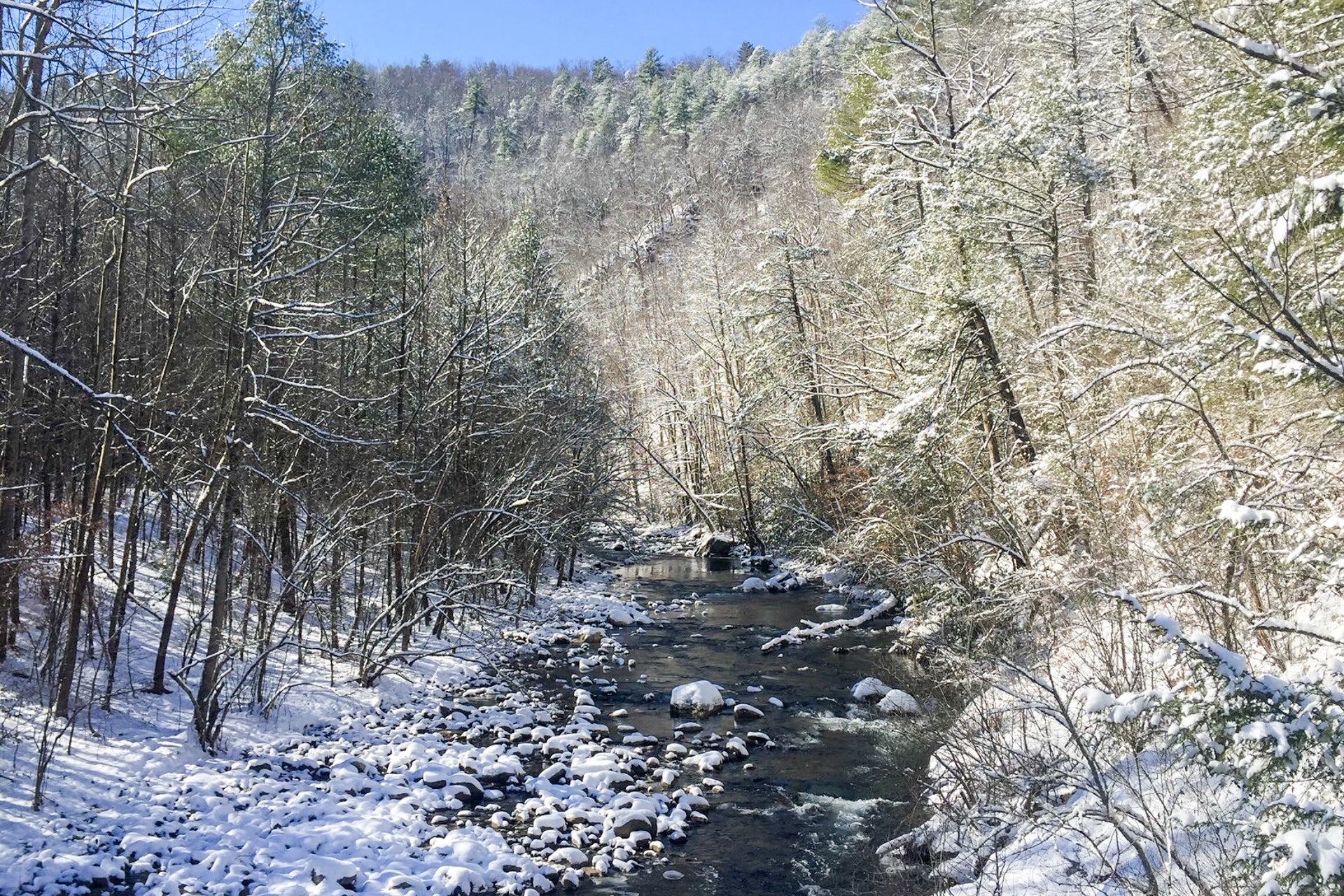
Bottom line
While I may be a little biased as a Tennessee native, the Great Smoky Mountains National Park is somewhere everyone should experience at least once. The truth is there is so much to do and see in the Great Smoky Mountains that we couldn't possibly cover everything here. You'll inevitably find your own favorite off-the-grid trail, scenic overlook, moonshine distiller or pancake eatery that we haven't covered, and when you do, come back here and share it with us so we can add it to our list!
As the most visited national park in the country, it's no secret how much the park and surrounding areas has to offer -- whether it's a family reunion, summer vacation, bachelorette party, destination wedding or just a trip with the guys, the Smokies has something for everyone and they'll have a big ol' glass of sweet tea waiting for ya.
- FREE NP ebook
- Hiking Basics
- Backpacking
- Gear Guides
- Gift Guides
- New Hampshire
- North Carolina
- West Virginia
- National Park Planning
- Bryce Canyon
- Capitol Reef
- Cuyahoga Valley
- Death Valley
- Great Smoky Mountains
- Joshua Tree
- New River Gorge
- Shop Itinerary Guides & Digital Products
- Refund and Returns Policy
- Work With Me
- About Brooke In Boots
- Privacy Policy and Disclaimer
- FREE NP EBOOK
Ultimate 2 Day Itinerary Great Smoky Mountains
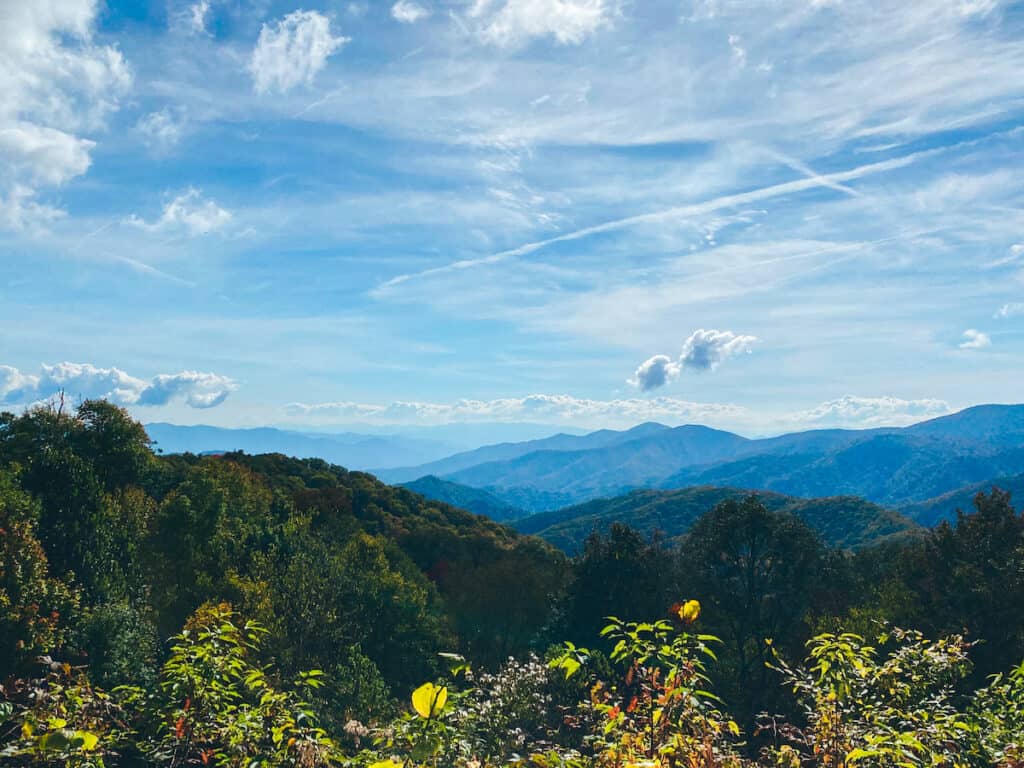
Great Smoky Mountains National Park is famous for its rolling mountains, lush waterfalls, and that classic “smoky” mountain haze. There are hundreds of miles of epic hiking trails, dozens of waterfalls, and miles of scenic drives. With so much to do, planning the perfect 2 days in the Smoky Mountains can feel pretty overwhelming!
While I usually prefer the dramatic western National Parks, after visiting the Smoky Mountains 3 times, I have to say the deep forests and endless rolling mountains of this park have definitely grown on me!
To help plan your ultimate trip, I put together this 2 day Great Smoky Mountains trip itinerary. This guide is perfect for first time visitors, and ensures that you don’t miss out on the highlights of the most visited National Park, even if you only have 1 weekend.
From the iconic views of Clingmans Dome , exploring the history of Cades Cove, to hiking iconic trails like Mount LeConte or Laurel Falls , your two days in the Great Smoky Mountains will be nothing short of epic.
Disclosure: This post contains some affiliate links, which means if you buy something, my blog will receive a small commission at no extra cost to you. I will never recommend products or links on this blog that I have not personally used or fully endorse.
Table of Contents
A Quick Look at Your 2 Day Great Smoky Mountains Itinerary
On Day 1 of your Great Smoky Mountains Itinerary, you’ll see:
- Alum Cave Trail
Drive Newfound Gap Road
- Oconaluftee Visitor’s Center and Mountain Farm Museum
- Optional: Andrews Bald
- Clingmans Dome
On Day 2 of your Great Smoky Mountains Itinerary, you’ll see:
- Cades Cove Loop Road
- Laurel Falls

Important Things to Know About Great Smoky Mountains National Park
Before planning your 2 day itinerary to the Smoky Mountains, there are a few important things you need to know.
Where is Great Smoky Mountains National Park?
Great Smoky Mountains National Park is located in both states of Tennessee and North Carolina, in the Southeastern area of the United States. The nearest towns to Great Smoky Mountains are Gatlinburg and Pigeon Forge, Tennessee and Cherokee, North Carolina.
The Great Smoky Mountains, or “the Smokies” are part of the Blue Ridge mountains, which is a subsection of the greater Appalachian Mountain chain. The Appalachians are thought to be one of the oldest mountain ranges in the world.
How to Get to Great Smoky Mountains National Park
There are no shuttles around Great Smoky Mountains, so you’ll want to fly into one of the closest airports to the Great Smoky Mountains , rent a car, and drive to the Park.
The nearest airport to Gatlinburg, Tennessee (Sugarlands Entrance) is Knoxville McGhee Tyson Airport . The nearest airport to Cherokee, North Carolina (Oconaluftee Entrance) is Asheville Regional Airport, in Asheville, North Carolina.
>> Click here to book your flight to Knoxville McGhee Tyson Airport
>> Click here to book your flight to Asheville Regional Airport
The nearest international airport to Great Smoky Mountains is Greenville-Spartanburg International Airport in Greenville, South Carolina.
>> Click here to book your flight to Greenville-Spartanburg International Airport
This map shows the major highways, towns, and interstates near Great Smoky Mountains.

Does Great Smoky Mountains charge an Entrance Fee?
There is no entrance fee to visit Great Smoky Mountains National Park.
The park was chartered in 1934 and dedicated by President Franklin Roosevelt in 1940. Before the Park’s creation, much of the Smokies was privately owned. When the states of Tennessee and North Carolina transferred the land to federal control, Tennessee mandated that the main roadway through the park, Newfound Gap Road (US 441), must stay toll-free. As a result, there is no charge to enter Great Smoky Mountains.
But, you DO have to pay for parking, starting in 2023. Beginning March 1, 2023 Great Smoky Mountains National Park will require all visitors to purchase and display a “Parking Tag” while parking inside the National Park.
All visitors who park for more than 15 minutes in Great Smoky Mountains, including at trailheads, scenic points, Visitor Centers, ect. must purchase and display a paid Parking Tag. One Parking Tag is required per vehicle.
Parking Tag fees are $5 per day, $15 per week, and $40 annually.
Parking Tag sales are not limited or capped, meaning you do not need advanced reservations to enter the Park. Parking tags do NOT guarantee a parking spot, so be sure to arrive early to trailheads and popular spots!
Learn more about the Great Smoky Mountains Parking Fee program, where to buy Paring Tags and Parking Tag exceptions here.
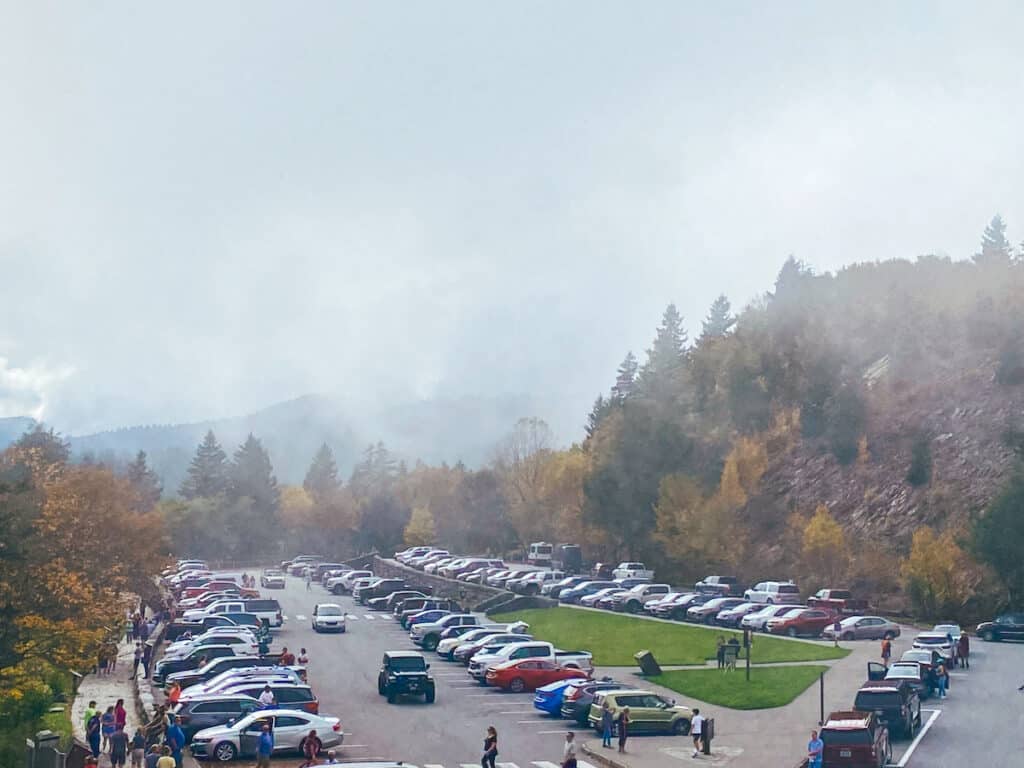
Is Great Smoky Mountains Dog Friendly?
Great Smoky Mountains is only semi pet friendly. Pets are allowed in campgrounds and picnic areas, and along 2 short walking paths – the Gatlinburg Trail and Oconaluftee River Trail. Pets are also allowed anywhere your vehicle can go, such as roadside pull-offs and sidewalks.
Pets are not allowed on other trails and must be leashed at all times.
How Many Days Should I Spend in Great Smoky Mountains?
Wondering how many days to spend on your Great Smoky Mountains itinerary?
If you are short on time, 2 to 3 days is enough to explore the highlights of Great Smoky Mountains National Park. However, if you have more time, there are virtually endless opportunities for hiking, wildlife viewing, and scenic drives in this beautiful park.

Thanks to its convenient location and tons of things to do, the Smokies are one of those Parks people return to again and again.
Want to learn more about planning an epic National Parks trip? Grab my free Ultimate National Parks Planning Guide , including 70+ pages of National Park packing checklists, planning tips, and everything you need to know to start planning a trip to all 63 National Parks!
What is the Best Times to Visit The Smokies?
The best time to visit Great Smoky Mountains is in the Spring or Fall , when there are fewer crowds than summer.
Summer in the Smokies brings heat, humidity, and lots of crowds. Trailhead parking lots and often fill by early morning, and scenic drives like Cades Cove can be bumper to bumper in the afternoon.
To avoid the worst of the crowds, avoid visiting during weekdays and holidays. For popular trails, like Clingmans Dome, Alum Cave, or Laurel Falls start hiking before 8AM (or earlier) or after 6PM, when most visitors have left the park.
In winter, most facilities in the park remain open year-round, except for some campgrounds and historic structures. The primary roads through the park – Newfound Gap Road, Cades Cove Loop, and Little River Road are open year-round. Clingman’s Dome Road and Roaring Fork Motor Nature Trail close in the winter. Check current conditions for park roads here .
Be sure to check park conditions before heading out in winter, and bring proper winter gear if you plan on hiking in snowy conditions.

The Great Smoky Mountains are Indigenous Land
The Smokies are ancestral lands of the Cherokee people, who called the place Shaconage or “place of blue smoke.” Most Cherokee Indians peoples were forcibly removed from the area in the 1800s during the march known as the “Trail of Tears.” Learn more about the Cherokee history in the Smokies here .
The Perfect Great Smoky Mountains 2 Day Itinerary
Are you ready to plan an unforgettable great smoky mountains weekend? Because of its easy accessibility, you’ll be surprised how much of this park you can see with 2 days in the Great Smoky Mountains.
This itinerary assumes you have 2 full days to spend inside the Park, and are staying on the Tennessee side.
Staying in North Carolina? If you are visiting from or staying in North Carolina, you will want to do the Day 1 itinerary in reverse, visiting the Oconaluftee Visitor’s Center first, before driving Newfound Gap Road west towards the Sugarlands Visitor’s Center.
2 Day Itinerary Great Smoky Mountains Map
This map shows all your stops on your 2 day Great Smoky Mountains itinerary.
How to Use This Map: Click the Icons on the map to see more information about each location. Click the star at the top of the map to add the map to your Google Maps account.
Want to take this itinerary to go? The 3 Day and 2 Day Great Smoky Mountains Itineraries include over 20 pages of daily itineraries, an in-depth Cades Cove guide, a detailed guide to the best hikes in Great Smoky Mountains, plus lodging and dining information, and tips for how to beat the crowds! Get your guide and learn more, here.

Great Smoky Mountains Itinerary Day 1
Your first day of your Great Smoky Mountains weekend is all about those iconic Smokies views. To maximize your time and avoid crowds, start as early as possible, ideally before 8am. Pack a lunch and enjoy a picnic on the go, or visit the many restaurants in Gatlinburg to relax before returning to the Park for must-see sunset.
If you only have one day in Great Smoky Mountains, this is also the perfect itinerary to visit the must-see areas of the park on limited time.

Hike Alum Cave Trail
5 miles round trip to Alum Cave Bluffs / Moderate / All Trails
10.9 miles round trip to Mt LeConte / Strenuous
Start your first day early in the Great Smoky Mountains with one of the most iconic hikes in the Park. The Alum Cave Trail ascends through forest and rocky cliffs to the summit of Mt LeConte.
The Trailhead is located on Newfound Gap Road, about 9 miles from the Sugarlands Visitor Center. Parking is really limited here and the spots fill up quickly, so try and get here as early as possible (before 8am).
The trail begins by following the Alum Cave creek through hardwood forest. Next, at 1.5 miles, hikers traverse through “Arch Rock” tunnel before ascending to Inspiration Point at 2 miles.
Most hikers turn around at Alum Cave Bluffs, about 2.3 miles from the trailhead.
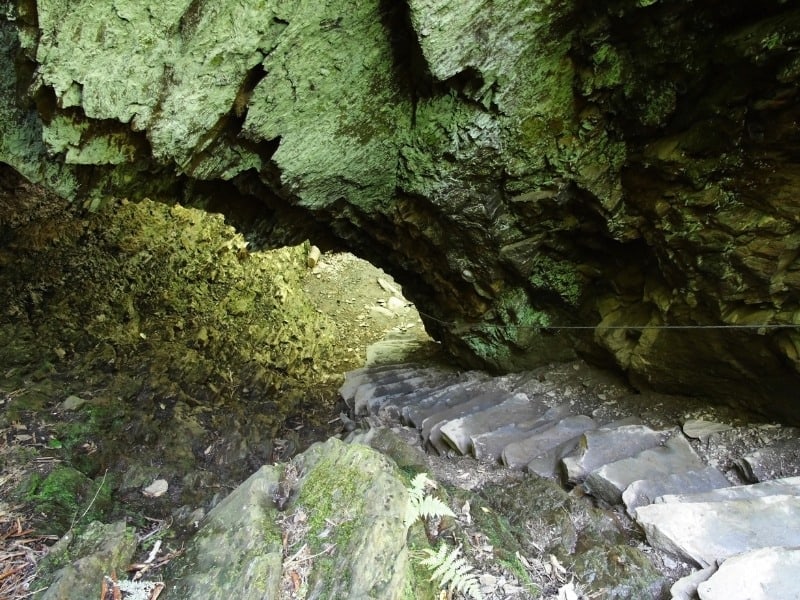
Looking for more of a challenge? Continue on Alum Cave Bluffs to ascend 6,575′ Mt LeConte. LeConte Lodge is located at the peak, the only hotel-style lodging located inside the Park. The Park uses llama trains to pack up supplies (and pack out trash) from the Lodge. If you’re lucky you might spot them on their weekly trek!
We weren’t lucky enough to see llamas on our trip, but fingers crossed we catch them next time!
Optional: Stop by the Sugarlands Visitor’s Center
After your hike, you can backtrack slightly to stop at the Sugarlands Visitor Center.
I’ll admit, this stop is never optional in my book, mostly because I’m a huge museum geek, and need to get my Passport stamp.
The Visitor Center is also an important stop to collect maps and ask advice from Park Rangers about trail conditions, parking availability, weather, and any other important information you’ll need before heading out.
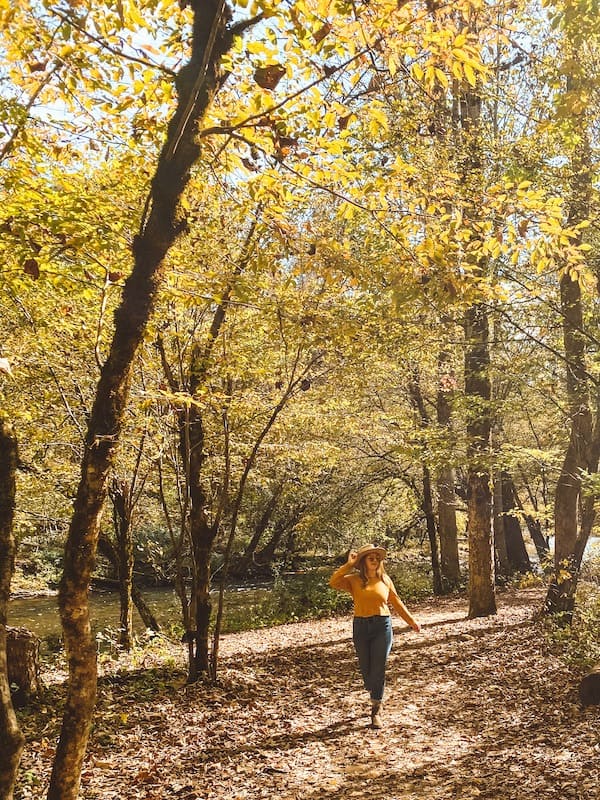
If you’re driving from the Tennessee towns of Gatlinburg or Pigeon Forge, your first stop is at the Sugarlands Visitor’s Center. If entering from Cherkoee, North Carolina, you will start at the Oconaluftee Visitor’s Center.
Both Visitor’s Centers have a small gift shop to stock up on your stickers, mugs, magnets and of course National Park Passport Stamps .
Stamps, stickers and journals are the perfect way to document your National Park Travels. I collect all my stamps and memories in my official Passport stamp collection book.

Once you have your maps, stickers, and stamps from the Visitor’s Center, return to US 441 South, known as Newfound Gap Road. This highway runs through the heart of Park from Tennessee to the town of Cherokee, North Carolina.
Take your time on this 33 mile scenic road, and savor those incredible views at every turn. The road ascends nearly 3,000 feet in elevation to Newfound Gap (5,046′), the lowest driveable pass through the Smoky Mountains. Don’t forget to bring a jacket! Temperatures are often 10 degrees cooler at the high elevation passes compared to nearby Gatlinburg.

Must See Stops on Newfound Gap Road
Campbell Overlook : Scenic vistas of the Smokies, approximately 2 miles south of the Sugarlands Visitor Center.
Chimneys Picnic Area : If you’re traveling around lunchtime, the Chimneys Picnic Area, about 5 miles south of Sugarlands is the perfect spot to relax and refuel.
Chimney Tops Overlook : Just past the Picnic Area, this turnoff has views of the iconic “Chimney Tops” formations soaring 2,000 feet overhead.
Morton Overlook : Beautiful at any time of day, Morton Overlook is a popular spot for sunset.
Newfound Gap : At 5,046 feet in elevation, Newfound Gap straddles the state line between Tennessee and North Carolina. The Appalachian Trail runs right through the overlook as hikers descend from Clingmans Dome.
Note the turnoff for Clingmans Dome Road here. You’ll be coming back this way for the hike to Andrews Bald and Clingmans Dome for sunset. If you don’t have time to drive all the way to Oconaluftee, Newfound Gap makes a good spot to turn around, or head straight for Clingmans Dome parking.
If you have time, continue south on Newfound Gap Road towards Mingus Mill and the Oconaluftee Visitor Center.
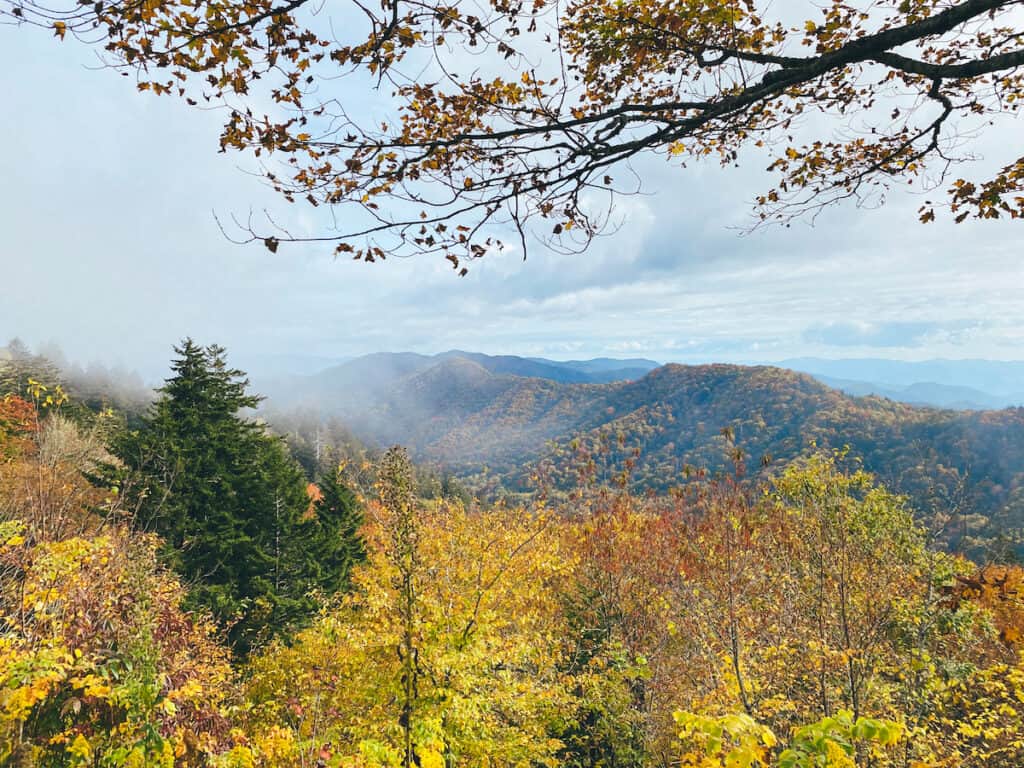
Mingus Mill : This historic grist mill, built in 1886, is located about 2 miles north of the Oconaluftee Visitor’s Center. Rangers operate the mill and give demonstrations to visitors March through November. If you plan on driving Cades Cove tomorrow, you can skip the Mill. Otherwise, the Mill is a great introduction to the historic buildings preserved throughout the Park.
Oconaluftee Visitor Center & Mountain Farm Museum
At the southern end of Newfound Gap Road lies the Oconaluftee Visitor’s Center and the town of Cherokee, North Carolina. The Oconaluftee Center includes exhibits about the Cherokee and later European settlers who have made the region home for hundreds of years.
The Mountain Farm Museum next to the visitor center is a huge interactive museum of preserved pioneer farm structures, including farmhouse, barn, and working blacksmith shop. Look closely and you can see the chickens that still call this farm home.
Keep your eye’s open for the herds of Elk that make this area home, especially in Fall.
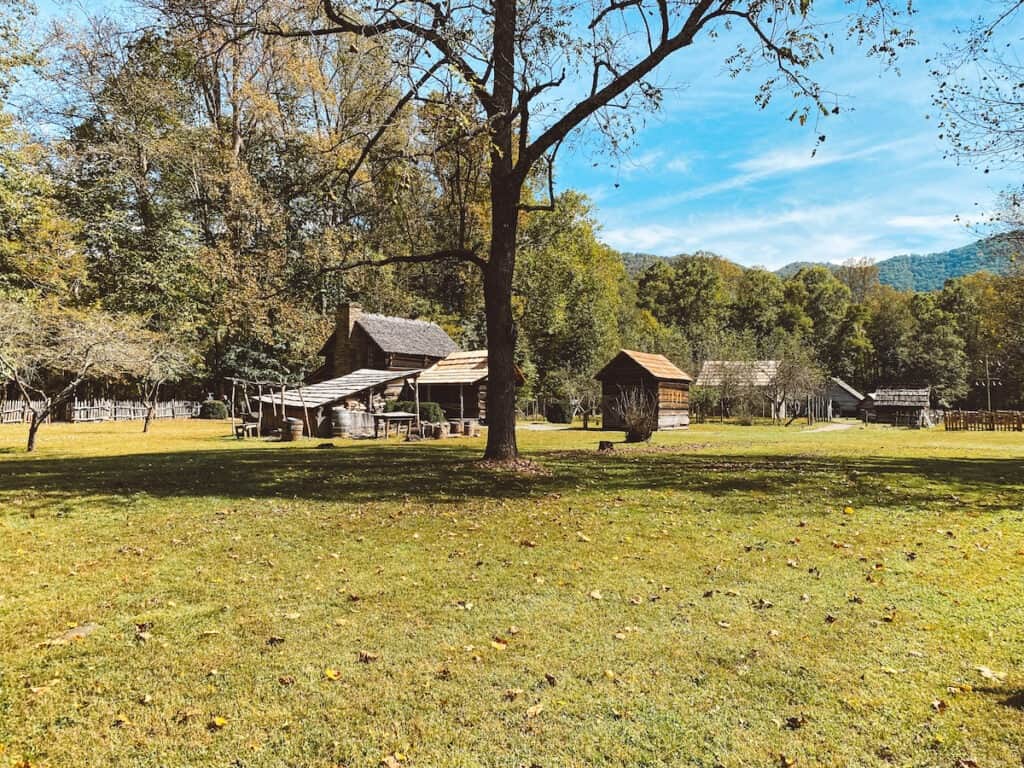
Optional: Hike to Andrew’s Bald
3.6 Miles / Moderate / 875 feet elevation gain / AllTrails
After stretching your legs inside the Center, return to your car and head north on Newfound Gap Road, retracing your route to Clingmans Dome Road, across the highway from the Newfound Gap Overlook you visited earlier.
The road climbs and ends at the Clingmans Dome parking lot. Warning, parking here can be a bit of nightmare during the summer. Be patient, and try and visit later in the afternoon, after 4pm, when many visitors start to leave the Park for the day.
If you have the time, Andrews Bald is the perfect companion to a sunset on Clingmans Dome. The 3.6 moderately difficult hike leads to one of the many “balds” in the Smokies, so called because these mountaintops are not covered by trees, but grass, rhododendron, and laurel.
From the Clingmans Dome parking lot, set out on the paved road towards Clingmans Dome. Shortly after the Park’s large interpretive signs, less than 0.1 miles from the parking lot, you will see a small trail and sign and on your left for “Forney Ridge Trail” to Andrews Bald.
Follow the Forney Ridge Trail as it descends for the first 1.1 miles through forest. Continue to follow signs for Andrews Bald at all trail junctions. The trail then heads uphill to Andrews Bald, with panoramic views of the surrounding mountains. The trail continues past the Bald, but turn around after you’ve soaked in the view and return the way you came, following signs for Clingmans Dome parking.
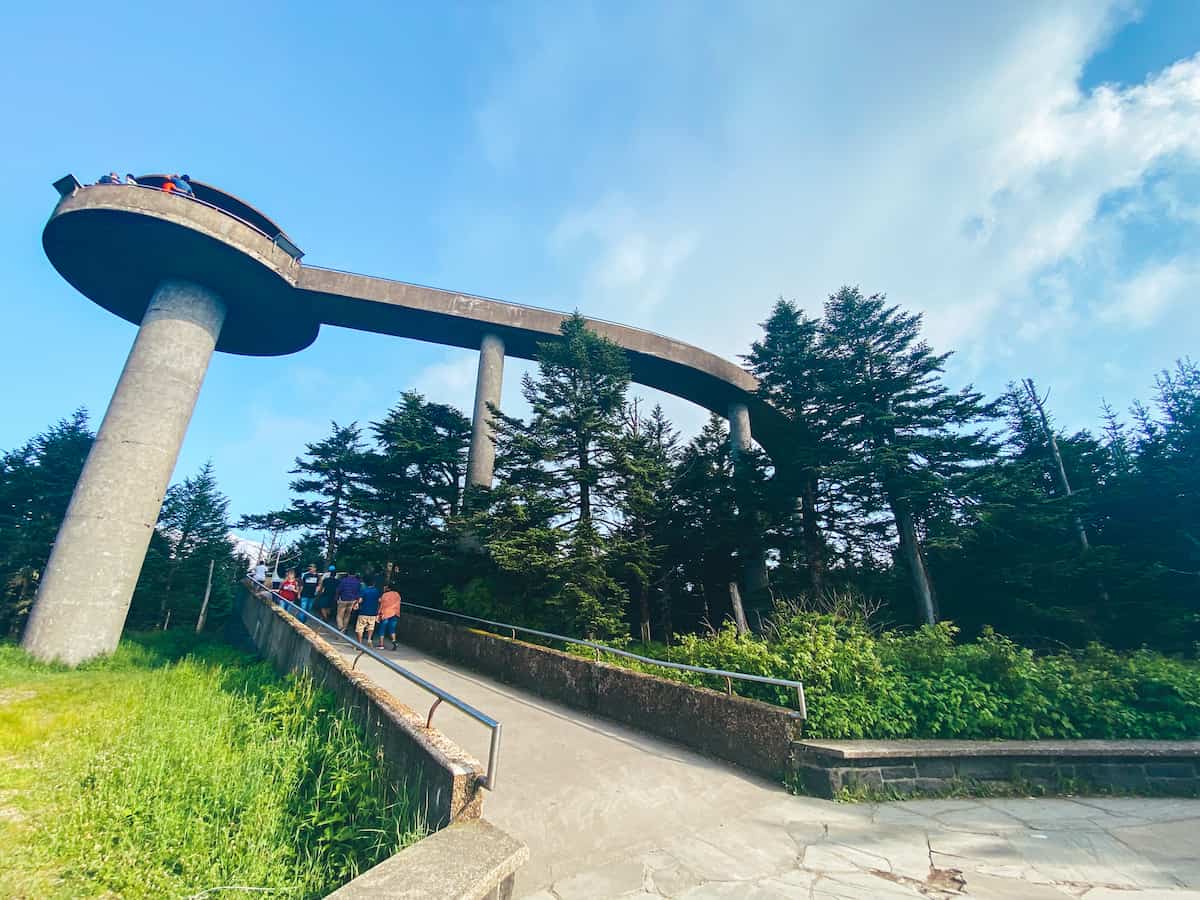
Sunset at Clingmans Dome
If you skipped hiking Andrew’s Bald, you’ll return to Newfound Gap Road and retrace your drive back towards Gatlinburg. At the crest of the highway, follow signs for Clingmans Dome Road. Clingmans Dome Road is across from the Newfound Gap Overlook you visited earlier.
The road climbs and ends at the Clingmans Dome parking lot. From here you can hike the steep 1 mile round-trip trail to the Observation Tower.
Observation Tower Trail
1 Mile / Easy / Not Wheelchair Accessible Due to Steep Grade / All Trails
At 6,643 feet, Clingmans Dome is the highest point in the Smoky Mountains. The Appalachian Trail crosses at the base of the observation tower, and is the highest point on the AT. At the summit of the Dome, the 45 foot high Clingman’s Dome Observation Tower provides 360 degree views of the surrounding mountains.
The area is subject to clouds and stormy conditions, even in the summer. Make sure to check weather conditions at the Dome before committing to your hike. Arrive early and expect big crowds at the Observation Tower.
From the Clingmans Dome parking lot, follow the paved trail to the Observation Tower. The trail is paved, steep, and usually crowded. If you aren’t used to hiking at higher elevations, take you time and rest on the many benches on the side of the trail.
At 0.5 miles, the path intersects with the Appalachian Trail before reaching the base of the Observation Tower. Use the 375 foot circular ramp to access the observation deck at the top of the Tower for 360 degree views of the Park.

Great Smoky Mountains Itinerary Day 2: Cades Cove & Laurel Falls
Day 2 of your 2 day itinerary in the Smoky Mountains is the perfect opportunity to explore more of the Park’s scenic drives and historic structures.
Cades Cove Loop Road Scenic Drive
Cades Cove is a broad valley surrounded by Smoky Mountains on all sides. The Cades Cove Loop Road is an 11 mile scenic tour of the many historic structures and sights of the Cove, and one of the most popular spots in Great Smoky Mountains Park.

Cades Cove Loop Road is vehicle free, every Wednesday, May 5 through September 1. During these times, the loop is only open to hikers and bicycles to enjoy.
The Cades Cove Loop road is an 11 mile scenic drive through the broad Cades Cove valley. The area was first settled by Europeans in the early 1800s, and many historic structures have been preserved here from this era.
While driving the Loop Road theoretically can take less than an hour, its really an all-day event. Plan to get out of your car and explore the historic buildings and enjoy a short hike or two.
Some of the must-see stops in Cades Cove are:
- John Oliver Cabin
- Primitive Baptist Church, Methodist Church, and Missionary Baptist Church
- Elijah Oliver Place
- Cades Cove Visitor Center and Historic Grist Mill
- Abrams Falls
- Whitehead Cabin
- Dan Lawson Place
- Tipton Oliver House
- Carter Shields Cabin
The Visitor Center, located about halfway around the loop is a good spot to stretch your legs and enjoy a picnic.
The Historic Grist Mill next door is a working water-powered mill that still operates to this day! You can learn all about farming history in this super remote valley, and take home a bag of mill-ground cornmeal from the giftshop!
There are plenty of homesteads and cabins around the loop, but our favorite was the Whitehead Cabin, located off the main road on Forge Creek Road, just past the visitor center. Since this spot isn’t on the main Cades Cove Loop road, its not as crowded and you might actually get a moment to yourself!

For a complete guide to visiting Cades Cove, including how to get there, what to see, and tips for beating the crowds, check out my guide, 17 Best Things to Do in Cades Cove .
Hike to Laurel Falls
2.4 Miles / Easy / Not wheelchair or stroller accessible / AllTrails
Once you’ve had your fill of grist mills and historic log homes, exit Cades Cove via Laurel Creek Road and drive back towards the Sugarlands Visitor’s Center. Laurel Creek Road becomes Fighting Creek Gap Road at the intersection of Elkmont Road, about 40 minutes from Cades Cove.
Just past Elkmont Road, park at the designated parking lot for Laurel Falls. This is one of the most popular things to do in Great Smoky Mountains National Park. The parking lot is frequently full during summers and weekends. Overflow parking lots are located further down Fighting Creek road. Park and walk to the trailhead, following the signs.
The 80 foot high Laurel Falls are named for the mountain laurel that blooms here in Spring. The trail is well marked and mostly paved. However, strollers and wheelchairs are not recommended, as the old pavement is cracked and crumbling in many places.

From the Laurel Falls trailhead, the trail climbs gently through verdant forest. Keep your eyes open for black bears, especially early in the morning, as there have been sightings on the trail. The Falls are divided into an upper and lower section divided by a wooden bridge. Take care on slippery rocks and watch small children around steep drop offs.
Bring plenty of water, especially on humid summer days. This hike can be done with a sturdy pair of sneakers or hiking boots.
Return to your car and head back to your lodging.
Grab dinner in Gatlinburg after a busy 2 days in Great Smoky Mountains. Our favorite restaurant was The Park Grill in Gatlinburg . For a more upscale option, check out The Appalachian in nearby Sevierville. For pizza and brews, check out Gatlinburg Brewing Company.
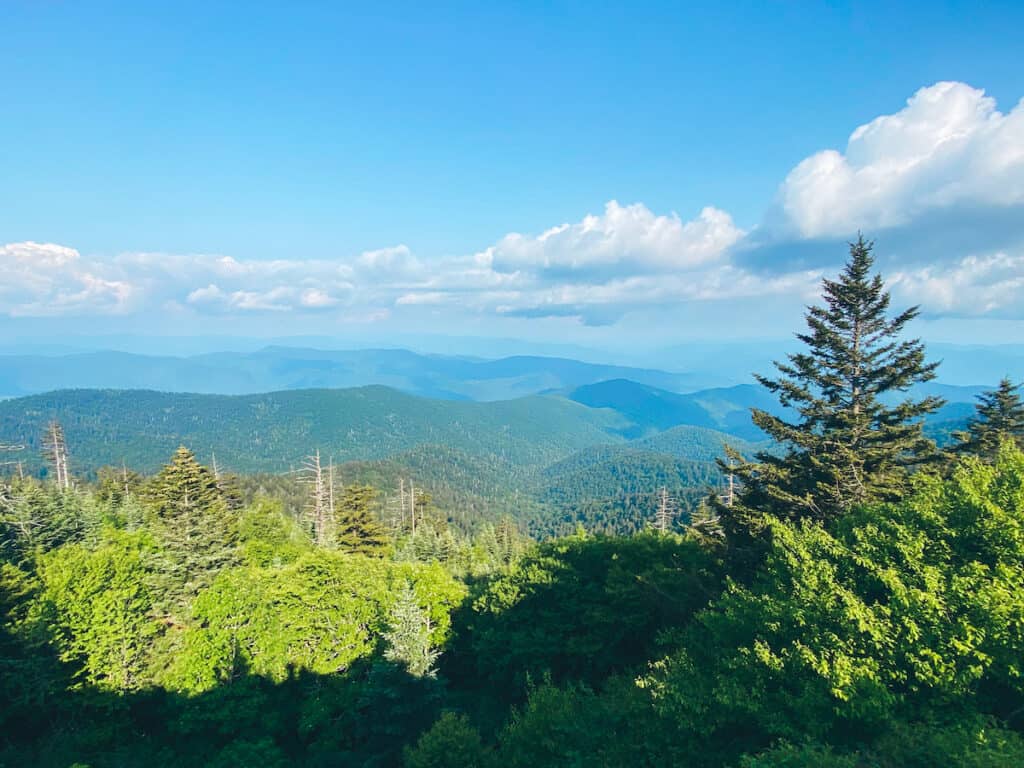
More Things to Do in Great Smoky Mountains National Park
Have more than 2 Days in the Park? Want to try something different? Check out these other things to do in Great Smoky Mountains National Park.
Roaring Fork Motor Nature Trail
Located a short distance from Gatlinburg, the Roaring Fork Motor Nature trail is a 5.5 winding, scenic drive through hardwood forests and historic cabins and grist mills.
The Motor Nature Trail is a great alternative if you don’t want to commit to the longer and more crowded Cades Cove Loop.
There are tons of great hikes that leave from the Roaring Fork Motor trail (or nearby) including Rainbow Falls (5 Miles / Moderate) and Grotto Falls via Trillium Gap Trail (2.6 Miles / Moderate).
Learn more about the Roaring Fork Motor Nature Trail here .
Hike Charlies Bunion via Appalachian Trail
8 Miles / Difficult / 1,600′ Gain / AllTrails
Take a day hike on the world-famous Appalachian Trail, which runs 2,190 milesand through the Smokies on its way from Georgia to Maine.
This moderate hike traverses multiple peaks on its way to Charlie’s Bunion, a large outcropping with classic smoky mountain views. The Trail leaves from Newfound Gap where the Appalachian Trail crosses with Newfound Gap Road.
This hike takes about 4 hours round trip. Make sure to bring plenty of water, snacks, and appropriate hiking gear.
Hike or Backpack Gregory Bald
11.6 Miles / Strenuous / 3,350′ Gain / AllTrails
A strenuous day hike that is also popular for backpacking. To get to this hike, you’ll need to drive on the unpaved Forge Creek Road (most passenger cars can make it, just drive carefully). Forge Creek road closes in winter, so plan to do this hike March – November.
After a steady climb for 5.5 miles, the summit has stunning views of the surrounding Smokies and Cades Cove.
Where to Stay Near Great Smoky Mountains National Park
There are plenty of options for lodging in and around Great Smoky Mountains National Park. Stay in one of the popular 10 frontcountry campgrounds inside the National Park, or opt for hotels, motels, and rental cabin accommodations in the towns nearby.
Lodging Inside Great Smoky Mountains.
Lodging options inside Great Smoky Mountains are limited. There is only one hotel inside the park, Le Conte Lodge, which is accessible only by foot via a 5.5mile hike. Reservations for Le Conte fill many months in advance, but cancellations do occur if your plans are flexible.
There are 10 frontcountry campgrounds that are accessible by car inside the park. Campgrounds have cold running water and flush toilets, and campsites have fire rings and picnic tables.
Backcountry camping for backpackers and Appalachian Trail hikers is available at designated primitive campsites and shelters. All backcountry campers must have a permit before setting out. Backcountry permit information is available on the Park’s website .

Lodging Outside the Park
If you only have two days or less to visit Great Smoky Mountains, I recommend staying in the towns of Pigeon Forge or Gatlinburg on the Tennessee side of the Park. These towns are located just outside the Sugarlands entrance and Visitor Center, and most hotels are within 20 minutes of the park.
There are a variety of chain hotels like Fairfield Inn & Suites by Marriott and family-friendly mountain resorts like the Greystone Lodge on the River. Personally, we love to book a vacation home rental with a kitchen – and there are tons of cabins and mountain homes to book nearby.
>> Click here to book hotels in Gatlinburg, Tennessee
Between the neon lights, go-carts, and endless fast food options, Pigeon Forge and Gatlinburg can feel a lot like Las Vegas in the woods (or “Appalachian Disneyland” as my husband said). However, the direct access to the park, plenty of lodging and food options, and easy access to the highway make it the easy choice for a short visit.
What to Pack for Your 2 Days in Great Smoky Mountains
Don’t forget to grab your free National Parks packing list, inside my printable resources guide – here!
Hiking Backpack: Your backpack should be lightweight with enough support to carry a full day’s worth of supplies without hurting your back and shoulders.I use the Osprey Sirrus 24 daypack which has plenty of storage and space for a 2L hydration reservoir .
Rain Jacket : Rain is common in the Smokies in all seasons. The North Face Venture 2 jacket is waterproof, windproof, and packable.
Hiking Shoes and Socks: Most trails on this Great Smoky Mountains Itinerary can be done with a good pair of sneakers, but I always recommend using hiking boots or hiking shoes for the best comfort and safety. I swear by the Merrell Moab 2, available both as a hiking shoe and hiking boot . If you’re looking to upgrade to a more hardcore option, I love my Salomon X Ultra 3 Mid boot .
Remember, the best hiking shoes are only as good as the socks you wear. Darn Tough socks come in a variety of fun colors and have never let me down! Trust me, these bad boys are worth it to avoid blisters and comfortably break in any boot.
Bug spray: As someone who has some kind of invisible “All You Can Eat Buffet” sign above my head that only mosquitos can see, I use repellant sprays with DEET or Picaridin .Many other hikers prefer a DEET-free spray made with essential oils such as lemon and eucalyptus.
Hiking Tops: Look for tops that are moisture wicking and quick drying.Try the Patagonia Capilene Cool tanks and shirts , or check out more women’s performance tops on Backcountry.com .
Hiking Pants: For long pants, check out the Columbia Saturday Trail Pant . If you’re more a leggings gal, I wore my trusty Girlfriend Collective High-Rise Pocket Legging .
Water: Plan to bring 1/2 liter of water for every hour of hiking.
Explore More National Parks
Get the Ultimate National Parks Planning Guide (for free!) sent to your inbox, full of important planning information, printable packing lists, and the best things to do in all 63 National Parks.
Big Bend: Epic Big Bend Itinerary Guide
Bryce Canyon: One Epic Day in Bryce Canyon National Park
Cuyahoga Valley: 17 Best Things to Do in Cuyahoga Valley National Park
Great Smoky Mountains: The Ultimate Great Smoky Mountains Itinerary in 2 Days
Joshua Tree: The Perfect Day Trip to Joshua Tree National Park
New River Gorge: The Best Hikes in New River Gorge National Park
Yosemite: Epic Yosemite 2 Day Itinerary – How to Spend 2 Perfect Days in Yosemite
Zion: Ultimate 2 Days in Zion National Park Itinerary
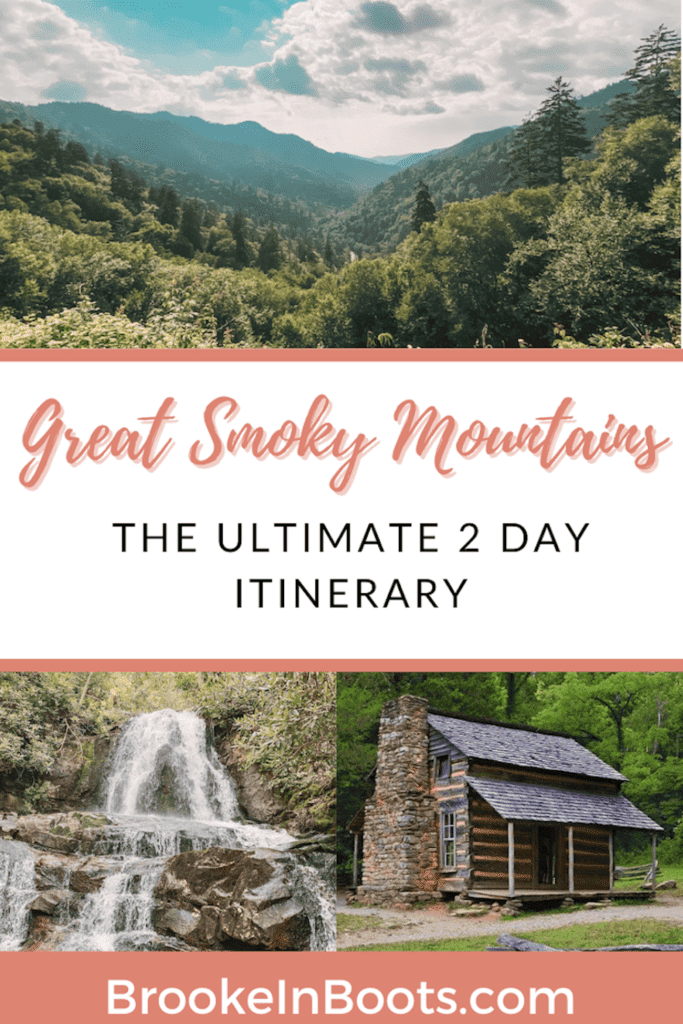
- Cades Cove Hours: Everything You Need to Know
- How to Get to Death Valley: Closest Airports & Driving Directions
- Epic 3 Day Yosemite Itinerary: Ultimate Weekend Guide
- 37 Favorite Gift Ideas for Hikers They’ll Actually Love
One Unforgettable Day in Death Valley...

Epic 3 Day Yosemite Itinerary: Ultima...
OUTSIDE FESTIVAL JUNE 1-2
Don't miss Thundercat + Fleet Foxes, adventure films, experiences, and more!
GET TICKETS
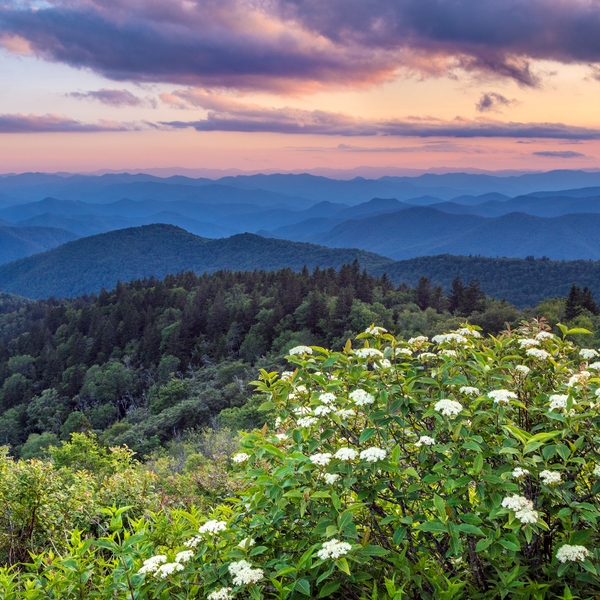
The Ultimate Great Smoky Mountains Travel Guide
Despite being one of the most popular destinations in the U.S., the Smokies make it easy to plan a last-minute trip and avoid crowds year-round. Here’s our definitive guide on what to know before you go, how to make the most of all the park has to offer, and can’t-miss experiences in every season.
Heading out the door? Read this article on the Outside app available now on iOS devices for members! >","name":"in-content-cta","type":"link"}}'>Download the app .
Even if you haven’t been to our most visited national park yet, you can probably picture those blue ridgelines blurred across a southern Appalachian sky by that perpetual, namesake haze. In the spring, the sight is often the backdrop for a field of colorful wildflowers; in the fall, a rich palette of changing leaves. I’m lucky to call the 500,000-acre Great Smoky Mountains National Park my backyard, and they call images to mind that captures their character. There’s the black bear sprawling over a low branch, paw dangling; the silhouette of an elk bugling against the fog in a valley; and countless 19th-century log cabins, barns, and springhouses that sit at the edges of wildflower-filled meadows just off of roads and trails, like pioneer exhibits in a museum.
While you’ll count yourself among 11 million people on average who visit the range every year, you can still find something personal and deeply profound in its lush valleys, ridgeline paths, and panoramic lookouts. For some this happens while exploring the more than 90 historic sites the park service maintains, while others are captivated by the slanted headstones, crumbling chimneys, and buckling walls in the backcountry. Many find solitude in the 850 miles of trails, ranging from scenic day hikes to multi-day treks along 70 miles of the Appalachian Trail —do them all and you can join the 900 Miler Club. Just off the paths, and often running parallel, are streams home to one of the last wild-trout habitats in the region, including the distinct southern Appalachian brook trout. But for most, what makes the Great Smoky Mountains special is how each season has its own distinct character and reasons to visit, from spring’s colorful blooms to winter’s unobstructed peak views.
What You Need to Know Before Visiting Great Smoky Mountains National Park
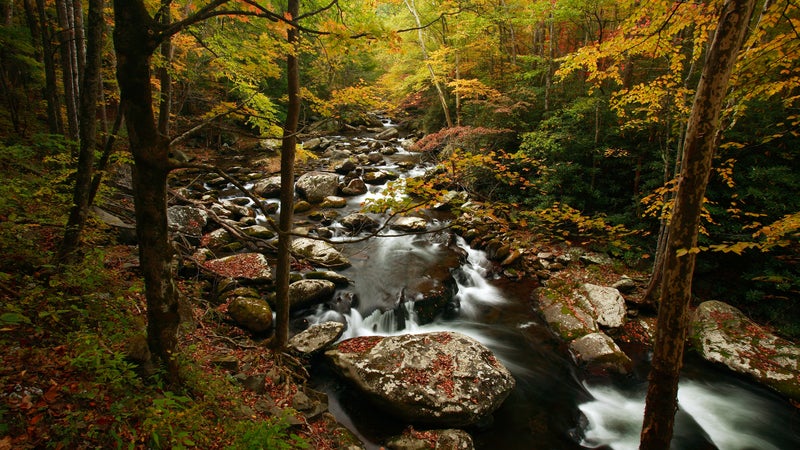
You can make it a spontaneous trip. Unlike most national parks, there’s no entrance fee or lottery reservations system for the Smokies, which makes it an affordable way to get into the woods with a short lead time. Backcountry sites can be booked as early as a month before your trip—a necessity for holiday weekends—or as late as the morning you head out, while major public campgrounds can be booked from six months to a year in advance.
Expect rain and rapid shifts in conditions, no matter what time of year you visit. The rain that keeps the park green year-round—on average 55 inches of it falls in the valleys and 80 inches on the mountaintops—is what you’d expect from any other temperate rainforest and can be a minor inconvenience when it clouds your view, interferes with your photo ops, or shuts down roads. Abrupt summer storms often lead to flash floods that have caused landslides and closures, while ice is the perpetual culprit during winter months (even though its mountains rarely reach up to 6,000 feet, winters are generally marked more by ice than snow in all but the highest elevations). Always use Smokies Road Info on Twitter to check conditions before you go. Depending on your elevation, temperatures can also vary sharply, as much as 30 degrees, which often means the highs feel hotter and the lows much colder. Treat weather and temperature forecasts as gentle suggestions, and prepare for something harsher.
Don’t let the crowds deter you from some of the park’s greatest spectacles. The months of June and October could be considered two seasons in and of themselves. The last three weeks of October are some of the busiest times, when hordes of people chase the color of the leaves from the top of the mountains down into the valleys. In June, day hikers make the 11-mile round-trip to the summit of Gregory Bald to see flame azaleas, flowering shrubs that range from deep orange-reds to candy pinks and yellows, often on the same blossom. Nighttime visitors set up camping chairs on the Little River Trail near Elkmont Campground to watch the fireflies. By 10 P.M., the insects rise up from damp creek valleys and, in unison, flash seven or eight times, and then, just as uniformly, go dark. The display is so popular that Elkmont’s campsites fill up fast. But you don’t have to camp to see them: the park runs a shuttle from Sugarlands Visitor Center . (Note that parking at the campsite is limited, and the lottery for a space only opens for a few days in late spring.)
How to Get There
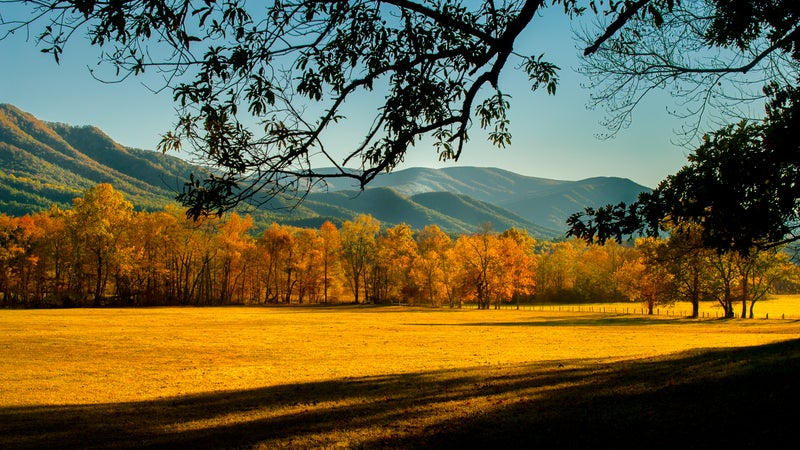
The Smokies straddle North Carolina and Tennessee. Asheville, North Carolina and Knoxville, Tennessee, the largest nearby cities, are roughly an hour from the park. The closest major airport is McGhee Tyson near Knoxville; it’s a little over a half-hour from the park’s Townsend, Tennessee, entrance and provides easy access to the Cades Cove valley on the western side of the park. The towns of Cherokee, North Carolina, and Gatlinburg, Tennessee, abut the park boundaries to its north and south, respectively, and are the main gateways via U.S. Route 441. Across the mountains to the east, on the North Carolina side of the park, Bryson City opens some of the less visited areas around Fontana Lake , like the Road to Nowhere and Noland Creek Trails.
When Is the Best Time of Year to Visit the Smokies?
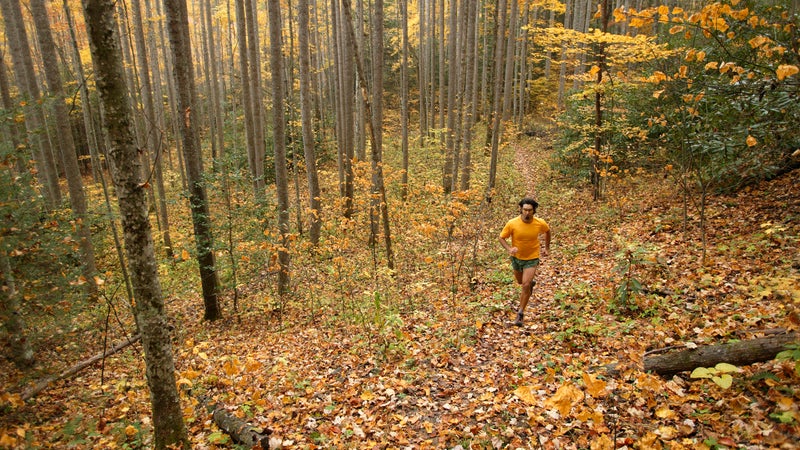
The park and its backcountry sites are open year-round. The off-season, which runs from late October through May, closes seven of the park’s ten developed campgrounds; Cades Cove on the Tennessee side and Smokemont in North Carolina stay open. Rest areas and picnic areas close, too, as well as most secondary roads. The main thoroughfare, Route 441, which runs from the Cherokee Reservation in North Carolina to Gatlinburg, only closes for bad weather. Summer is the wettest season—July has the most rainfall—while fall, after the tail end of a typically humid August, is the driest. Every season has its draws and limitations.
Winter: Winter is the season of long views and a solitude that’s hard to find the rest of the year. Take advantage of the highest viewpoints, like the pullouts at Newfound Gap and the observation deck at the end of the Clingmans Dome Trail or the towering upper ridges from lower-elevation trails. The Roundtop Trail, a lightly trekked, 7.5-mile point-to-point route that begins near Metcalf Bottoms off Little River Road and dead-ends on the banks of the Little River, will lead you no higher than 2,600 feet and offers views of Cove Mountain and Chinquapin Knob within the first mile. Even during the busier seasons, you’re likely to be the only person on the Roundtop Trail, but in the winter, the views from this trail will make you feel like you’re the only one in the park. While winter hiking won’t lead you into more than a dusting of snow, you’ll probably find ice in the frozen springheads on most trails. Bring crampons, especially if you plan to hike higher.
Spring: While winter’s sparse vegetation will have you looking out from mountaintops—or up at them—you’ll likely be looking down during spring. The popularity of the blooms that take place from March to June draw the first wave of crowds, with most flowers blossoming from the middle of April to the middle of May. The challenge to catching them at their height isn’t navigating the traffic or even finding the correct trail but rather figuring out where to go to see the particular flowers you’re looking for, from the white-fringed phacelia and maroon trillium to the pink and yellow lady’s slipper. Every April for the past 68 years, the park has celebrated the Spring Wildflower Pilgrimage (from $150), a weekend of guided walks and exhibits. If you prefer a self-guided tour, the event’s website suggests five trail options; two of the most popular are the Middle Prong , in the Tremont area, and Schoolhouse Gap , a 20-minute drive west. If you’re looking for that perfect photograph, head 3.5 miles up Porters Creek Trail in the Greenbrier area, where flowers blanket the ground like snow, or up the 8.6-mile Chestnut Tops Trail from the Townsend Wye swimming hole to see upward of 30 different species of wildflowers in the first half-mile.
Summer: With this season’s swelling crowds, trailheads fill up by midmorning, so plan to get there early. For popular hikes, like Chimney Tops , Laurel Falls , and Alum Cave Trail , set out shortly after sunrise. Given the number of trails and their close proximity to larger towns, the Tennessee side of the park fills up faster than the North Carolina side, so escaping the masses often means heading to North Carolina’s Fontana Lake . The Lakeshore Trail, a 35-mile one-way along its western banks, intersects less traveled paths that link to the surrounding mountains. To the east, 2.9 miles from the Road to Nowhere Trailhead , is the 11.4-mile Forney Creek Trail, which leads up to Andrews Bald , a destination popular for its views of the surrounding highlands. Seven miles from the western side of Fontana, the Lakeshore Trail joins the 8.9-mile Eagle Creek Trail. With 18 wet crossings, the trail is an ideal summer hike up the mountain to the highland meadow of Spence Field , which is less than two miles west of Tennessee’s iconic Rocky Top (known for its 360-degree panoramic views) via the Appalachian Trail.
Fall: When cooler temperatures hit, you’ll find more elk and bears in the valleys (and usually don’t have to leave the car to see them). Head to the remote Cataloochee Valley for likely sightings of elk and out to Cades Cove for the bears, though be aware that a trip to Cades Cove can be an hours-long, bumper-to-bumper, 11-mile drive. On foot you can expect to see black bears and elks anywhere in the park. Remember to keep 50 yards between yourself and the wildlife when you go looking for them. The park is also known for its foliage, so opt for a trail that cuts through old-growth, hardwood forest, like the Albright Grove Loop off the eight-mile Maddron Bald Trail and the six-mile Low Gap Trail up to Mount Cammerer and back.
Where to Stay in Great Smoky Mountains National Park
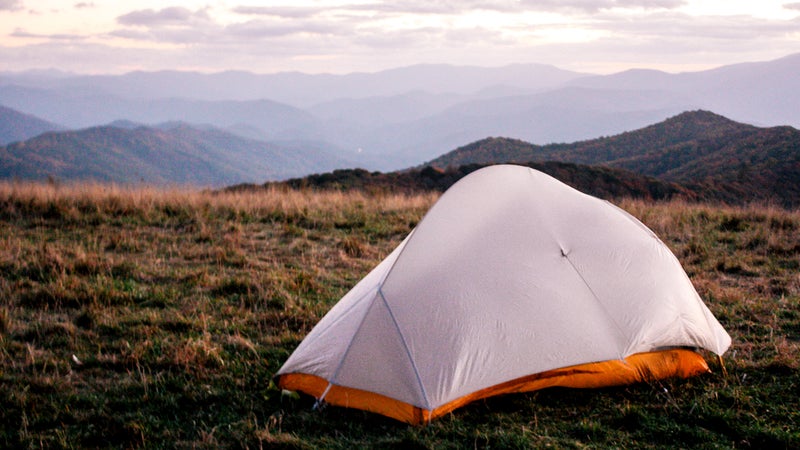
Developed Campgrounds
Located along the Gatlinburg and Oconaluftee River Trails, the park’s ten designated campgrounds range in price from $17.50 to $27 a night and offer no-frills amenities, restrooms, and water. Book reservations on Recreation.gov as early as six months to a year in advance. The Smokemont , Elkmont , and Cades Cove campgrounds are busiest due to their central locations and electrical hookups. Consider instead the Balsam Mountain Campground ($17.50 a night), just off the Blue Ridge Parkway near the Cherokee Reservation’s eastern Qualla Boundary, for seclusion, mountain views, nearby streams, and the chance to see elk grazing just beyond your tent. At an elevation of 5,310 feet, Balsam Mountain is the highest developed campground in the park, which means temperatures rarely get above 70 degrees, even in the southern summer heat, but it’s also especially subject to the area’s characteristically fluctuating weather. There are several uncrowded trails that lead from the campsite, including a 5.2-mile out-and-back nature hike on Flat Creek Trail through hardwood forest and a more challenging 14-mile loop that drops into Cataloochee Valley from the Hemphill Bald Trail before climbing back up Rough Fork Trail. Be sure to make the short walk from your campsite to the Heintooga picnic area to watch the sun set over the Smokies’ ridgelines.
Backcountry Campgrounds
The park’s more than 100 backcountry sites include five boat-in areas—three on islands in Fontana Lake—and more than 15 shelters at higher elevation along the 70 miles of the Appalachian Trail. Almost all include fire grates and bear cables. A nightly rate of $4 a person gets you a backcountry campsite or shelter with direct access to springs or running water. Reservations can be made at the park’s own backcountry-reservation website . Appalachian Trail thru-hikers can purchase a $20 pass for all of the shelters but must give up space to any campers with a backcountry permit. Generally, you won’t have any trouble finding an open campsite during most seasons, but availability ebbs and flows in the busy months of June and October. Make sure to check the park’s website for warnings and closures before you go—the weather can cause you to reschedule your trip as unexpectedly as bear activity in the area.
The wildly varying character of each backcountry campsite reveals different aspects of the Smokies’ long history and allows for every kind of camping experience. Lower Ekaneetlee/campsite 89, at the mouth of Ekaneetlee Creek along Eagle Creek Trail, marks the beginning of a Cherokee track that settlers followed across the ridgeline to settle the Cades Cove valley (the old railroad tracks from a later logging camp are still there). Some options, like West Prong/campsite 18, in northwestern Tremont on the Tennessee side, and Big Hemlock/campsite 40, in Cataloochee Valley to the northeast, are relatively short, gradual hikes from the main trailheads of West Prong Trail and Rough Fork Trail, respectively, which make them perfect for a quick overnighter or a child’s first backcountry experience. West Prong has plenty of trees for shade and hammocks; Big Hemlock is partitioned by huge logs so that an outing feels private even when the site is full. Expect campsites like Proctor/campsite 86, at the mouth of Hazel Creek, located in the area along Fontana Lake’s north shore, or Rough Creek/campsite 24, at the head of Little River’s East Prong along Rough Creek Trail, to fill up faster due to their prime fishing locales.
LeConte Lodge
In operation since 1926, the 60-guest LeConte Lodge sits atop the Smokies’ third-tallest peak and marks the site where conservationists wooed officials from Washington, D.C., into supporting the park’s creation. Due to its high demand, you’ll have to make online reservations a year prior. A stay includes a bed or a bunk in a rustic cabin and meals in the main lodge (from $162, including breakfast and dinner). Accessible by five trails, the lodge has kept its stuck-in-time feel with basic amenities to match (wash basins, kerosene lanterns). For a longer route that includes a path that cuts below Grotto Falls , follow the 8.9 miles of the Trillium Gap Trail from the Roaring Fork Motor Nature Trail to the lodge. Otherwise, the shortest and steepest way up the mountain is via the 5.5-mile Alum Cave Trail .
Things to Do in Great Smoky Mountains National Park
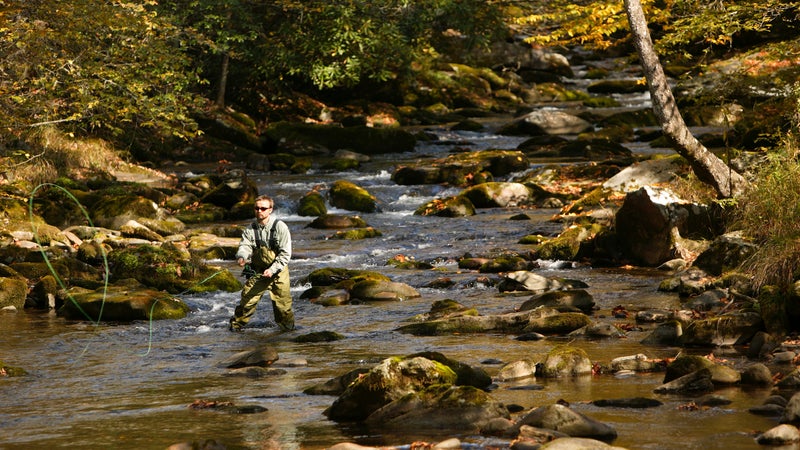
You don’t have to leave your car to enjoy the Smokies. The 11-mile Cades Cove scenic drive and six-mile Roaring Fork Motor Nature Trail are worth doing to experience the park’s varied landscapes, even if you plan to spend most of your visit on foot. In 2018, the park opened a new 16-mile-long section of the Foothills Parkway in Tennessee from the town of Walland to Wears Valley , near Pigeon Forge, with area views from the crest of Chilhowee Mountain.
With no mountain-biking trails and steep, narrow roads that host a lot of car traffic, there’s little opportunity to cycle in the park, except for Cades Cove, which from early May to late September is closed to vehicles on Wednesday and Saturday mornings until 10 A.M. The one-way loop allows for plenty of wildlife viewing and stops at 19th-century homes.
There are close to 2,900 miles of streams in the Smokies, of which 20 percent are large enough to support trout. Fishing is permitted year-round in open waters, and in the fall, you can stalk brown trout in the deep runs along Little River Road or charter a boat shuttle ($30 one way) from the Fontana Village Resort & Marina across Fontana Lake to catch rainbow trout on Hazel Creek. The headwaters above the creek are full of brook trout and remain local anglers’ favorite spots. Try Lynn Camp Prong Cascades , the park’s most recent brook-trout restoration project, which parallels Middle Prong Trail , an easy eight-mile hike that features multiple waterfalls. You’ll catch the most fish on the Tennessee side of the park above the Panther Creek Trail juncture, a small tributary off Lynn Camp Prong, about 2.5 miles in on the trail. Pack a fly rod and some peacock-bodied flies.
More than 850 miles of trails lead into the park, ranging in length from largely overlooked, quiet, quarter-mile walkways—short dirt paths just off the main roads—to 70 miles of the Appalachian Trail. One of the most popular day hikes is an eight-mile round-trip that follows the AT north from Newfound Gap to Charlies Bunion and offers some of the park’s longest-range views. You’ll find more solitude and similar views on another section of the AT, a 11-mile out-and-back above Cosby Campground to the Mount Cammerer Lookout Tower, a go-to spot for sunrise photos.
One of the best, most solitary views in the park is from the High Rocks, where an old warder’s cabin sits beside a gray bluff that once supported a fire tower. From there you can see the jagged ridges of Nantahala National Forest across Fontana Lake. To get there, take the ridgetop Welch Ridge Trail, which runs between the AT and the Cold Spring Gap Trail. It’s a rigorous ten-mile hike one-way, so plan to overnight it at one of backcountry sites in the Forney Creek valley or at the Silers Bald shelter .
Those who want to see multiple waterfalls, springtime wildflower displays, and panoramic fire-tower views should head to the Big Creek Trail for a two-night trip. Start the first day with a five-mile hike from Big Creek Campground to Lower Walnut Bottoms/campsite 37, which has dense displays of spring flowers. On the way, you’ll pass the Midnight Hole, a favorite swimming spot in the Smokies, and Mouse Creek Falls . On the second day, head up four miles along Swallow Fork Trail, an old Civilian Conservation Corps trail long popular with hikers, to the Mount Sterling Ridge Trail, and stay the night at Mount Sterling/campsite 38, a breezy, cool area at the base of a fire tower. The next morning, head back to Big Creek Campground on Baxter Creek Trail, a sharp descent of 4,000 feet over six miles.
If history is your way into the Smokies, you can find stories of southern Appalachia’s pioneer past throughout the park. In the Cades Cove valley, there’s a working gristmill , numerous barns and houses, and three churches from the early 1800s; in Cataloochee, you’ll find the well-preserved homesteads of the Caldwell and Palmer families, which date from the late 19th century; and on the Roaring Fork Motor Nature Trail , in the Gatlinburg area, popular sites include the cabin of Noah “Bud” Ogle, whose great-grandparents were some of the first Euro-American settlers, and a few structures farther along the trail that tell stories of mountain people who refused to be displaced by the formation of the park, like the Walker Sisters cabin, just off Little Brier Gap Trail , which the park has maintained since the last of the five sisters lived there in 1964. In the backcountry, you’ll find the remains of old homes on the Old Settler’s Trail, as well as hearths and chimneys that mark the Depression-era Civilian Conservation Corp camps, like CCC/campsite 71, as well as the artifacts left by the logging operations that ravaged the range in the early 20th century.
Rafting and Kayaking
Along the northern border of the park flows Pigeon River, where a number of outfitters lead whitewater rafting trips. The Upper Pigeon features Class III and IV rapids across 6.5 miles, while the river’s lower section, Pigeon Gorge, is ideal for families looking for gentle rapids and swimming holes. The Gatlinburg-based Rafting in the Smokies runs spring and fall trips from $46 per person. For flat-water kayaking and canoeing, the sprawling Fontana Lake has many fingers to explore.
The Best Places to Eat and Drink Around the Smokies

Your food options in the park are limited to what you pack in or buy from concessions at its major campgrounds, so get your fixes before and after. If you start your day in Asheville, go to Biscuit Heads , downtown, and dredge a cathead biscuit in its espresso red-eye gravy. And if it isn’t too early in the day, make sure to catch a brew tour of Asheville, which has a burgeoning craft-brewing scene.
If you’re traveling through Knoxville, head to Stock and Barrel , on the corner of Market Square, and order the bison burger with a side of duck-confit fries. Follow that with ice cream from Cruze Farm on Gay Street.
Closer to the park, a meal in Gatlinburg often involves standard southern comfort fare—stop by Delauders BBQ for family-style smoked meats or Cherokee Grill for seafood platters. The moonshine once distilled in the far-back hollows of town is on the main street now: Ole Smoky Moonshine usually has 20 types to sample.
A tradition for at least 50 years, park visitors leaving through Townsend, Tennessee, have capped off their trip with a stop at Burger Master . The parking lot is always full, even though it’s just simple, backyard-style comfort foods, banana splits, and chocolate-dipped ice cream. But go less for the food than for a drive-in atmosphere and post-camp crowd.
If You Have Time for a Detour
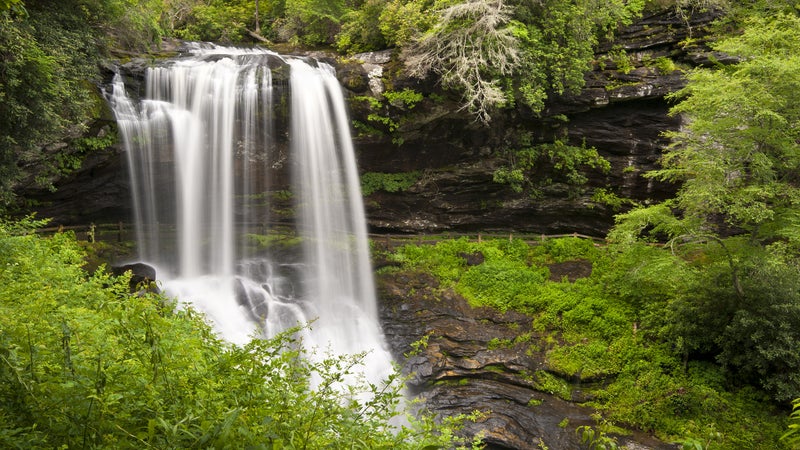
The park’s nearby towns cater to tourists. Much of the traffic in Cherokee, North Carolina, outside the Oconaluftee entrance on the park’s south side, located on the Cherokee Indian Reservation, stops by the Museum of the Cherokee Indian and the various shops selling crafts. Just west, in Bryson City, is the Great Smoky Mountains Railroad , where you can take a train ride into Nantahala Gorge. In summer, in the Tennessee town of Pigeon Forge, near the Sugarlands entrance, you can visit the Dollywood theme park, and in winter, ski above Maggie Valley at Cataloochee Ski Area or take a tram up to Ober Gatlinburg .
Editor’s Note: We frequently update this National Parks guide, which was originally published on Oct 8, 2019.
- Great Smoky Mountains National Park
Going Awesome Places
Detailed itineraries + travel guides
6 Day Smoky Mountains Itinerary – 2 States & 1 Grand Adventure
Last Updated May 1, 2024 William Tang
You are here: Home » Travel Itineraries » 6 Day Smoky Mountains Itinerary – 2 States & 1 Grand Adventure
The legendary Great Smoky Mountains National Park conjures up images of classic blue silhouette of mountain ridges, black bears, elk, and rolling waterfalls. The national park spans both North Carolina and Tennessee and makes for quite the epic road trip. The question is, what’s the best way to do it?
With this 6 day Smoky Mountains itinerary, you’ll gain inspiration for how to make the most of a trip that covers both states and includes the best places to see, do, eat, and stay for those with an adventurous spirit.
What You’ll Get Out of This Article
- Day-by-day breakdown of the itinerary.
- Critical details for important activities and sights.
- Google Map of all locations on the itinerary.
- Access to a Google Sheet itinerary spreadsheet.
In This Article
What To Know Before Planning Your Road Trip
How to get around the great smoky mountains, how to use this smoky mountains itinerary, 7 driving tips for exploring the smoky mountains, best time to do this road trip, map of smoky mountains itinerary, itinerary day 1: north carolina – charlotte to waynesville, itinerary day 2: north carolina – valley and dome, itinerary day 3: north carolina – raft and rail, itinerary day 4: north carolina & tennessee – waterfalls, mountains and zorbs, itinerary day 5: tennessee – roaring and pink, itinerary day 6: tennessee – peak to peak, what to pack for a smoky mountains road trip, closing thoughts, frequently asked questions, read more about travel in the usa, learn how to save money on travel, travel resources for your next trip, great smoky mountains road trip guide.

The Great Smoky Mountains National Park is the most visited of all of the US national parks but for someone that’s never been there, it’s a daunting task to put together an itinerary, especially when you only have 6 days to work with.
If you love the outdoors, beautiful landscapes, wildlife, and exhilarating adventure, this one’s for you!
There are probably a million ways to see the Smoky Mountains.
Something you’ll learn is that most road trips will include a combination of the Great Smoky Mountains National Park itself and the surrounding towns and cities that flank it on both sides of Tennessee and North Carolina.
Since there’s so much to see, do, eat, and stay in the region, you’ll have to pick and choose what you want to do. Much of it will depend on your travel style, your group, the number of days you have, and how much of the national park you want to do versus the periphery.
As we’ve mentioned, this Smoky Mountains itinerary is meant to be guide for a trip that someone real has actually done, to give you an idea of one way to plan a trip here.
To help put this together, we employed our art of planning trips as a way to visualize the trip and stay organized. Keep reading to find out how you can get access to the 6 day Smoky Mountains itinerary spreadsheet.
Like most, if not all national parks in the United States, The Great Smoky Mountains and its surroundings are best explored by car.
This means that your best bet to getting around here is to come here by your own car if you’re doing a much larger road trip through the US or simply rent a car.
The easiest way to rent a car is to pick it up at the airport you’re landing in. The two major airports are Knoxville, Tennessee (TYS) and Charlotte, North Carolina (CLT). You can either book a one-way car or round-trip rental.
Looking for deals on car rentals?: The secret to saving money on rental cars are these car rental coupon codes . We’re talking about hundreds of dollars of savings so don’t miss out.
For those that don’t drive, there are a couple of options that you can look at:
- Base yourself in North Carolina (i.e. Waynesville, Bryson City) and do day trips.
- Base yourself in Tennessee (i.e. Gatlinburg, Pigeon Forge, Sevierville) and do day trips.
- Book a guided Smoky Mountains tour .
As with all of our detailed itineraries such as our 9 day Northern California road trip , 2 days in Istanbul , 8 day Iceland itinerary , 3 days in Kauai , and others, our goal is to share as much detail as we possibly can so you can be as prepared as possible.
That said, everyone is going to want something a little different with this Smoky Mountains itinerary so use this as a a place to start and adjust from there.
Where we’ve been able to, we provide alternatives and other recommendations for things like accommodations, activities, tours, and restaurants.
For this road trip, we arbitrarily decided to start in North Carolina and end in Tennessee but you could easily do it the other way around.

As you start planning your epic road trip, it’s worth noting a couple of things when it comes to driving around the Smoky Mountains:
- Rent from the airport – If you’re flying in and out of the region, you’d be better off renting from the airport than trying to find a city location. This would be a lot more efficient than having to find ways into and out of the city.
- Gas up often – Trust me, you don’t want to run out of fuel while in the national park or in more rural areas. A good rule of thumb is to fuel up when you’re at half gauge.
- No tolls – We’re happy to report that there are no tolls to speak of in and around the Great Smoky Mountains so there’s no need to stress here. To be doubly sure, make sure to turn off toll routes on your navigation app.
- SUV is a great idea – This isn’t mandatory but there are a lot of steep winding roads in and around the Smokies and not all of them are paved. Getting around in a compact sedan would be fine but we did enjoy having the extra confidence of the SUV.
- Many single-lane roads – There were a lot of rural roads that reminded us of our road trip in southern Ireland where the hedges went straight up to the road and the opposing traffic were too close for comfort. That was the easy part. On some of the roads you’ll find in the national park or winding up/down to a cabin, you’ll be faced with single-lane roads that also feature hairpin turns and steep drop offs on one side without guard rails. Make sure to drive safely.
- Watch for elk – Elk aren’t shy and will hang out near or on the roads so be alert, especially when you see the yellow elk warning signs.
- Pre-save points of interest – There is no cell service and hence no data in the entirety of the national park. For ease of mind, it’s worth saving pins on your Google Maps app and also make your maps available offline .

We’re not blowing any smoke here! The truth is that the Smoky Mountains National Park and both sides of North Carolina and Tennessee are amazing all-year round. It really depends on what you’re looking to do and see.
A better way to put it is that there isn’t a wrong time of the year to come to the Smokies.
One of the nicknames of the national park is “Wildflower National Park” and that’s because in the spring time, 1,500 different flowering plants bloom. The lush green foliage combined with the rainbow of colours from all of the flowers is a sight to see and an incredible opportunity for photographers.
Snowmelt and rain also means that the waterfalls will be full and gushing with water.
Wildlife wise, this is calving season for elk so you may be able to spot their babies. Spring is also bear season where they start emerging from their dens and coming out of hibernation. This happens between late March through early April.
The Great Smoky Mountains National Park has a great page on black bears that you should definitely read.
The weather is quite cool throughout the season and you’ll be faced with unpredictable rain but the benefit is that there’ll be fewer crowds and lower lodging prices.
The summer months are undoubtedly the most popular and busiest times in the Smoky Mountains. With the kids off from school and the weather the warmest, lookouts, trails, and activities in both Tennessee and North Carolina will be packed with people.
That said, you’ll have the whole national park available to you as all of its amenities are open and you’ll have access to all elevations.
Weather wise, it will get up to the 80’s and 90’s (27 ° C to 32 ° C) in July so you’ll want to plan to do most of your activities in the morning or late afternoon. That said, this’ll depend on what elevation you’re at. July also has the most rainfall in the year where the surprise afternoon thunderstorm will seemingly pop out of nowhere.
Summer is also great for wildlife viewing where you’ll see turkey, deer, bears, and elk be quite active.
Bear-wise, mating season begins in July so you’ll find them active in the early morning or late evening. This’ll give you opportunities to view them but you’ll also need to be careful on trails.
After a hot and humid summer, crisp and cool air descends and the fall colors emerge in mid-September.
There’s a quick dip in crowds and lodging prices after Labor Day but because of how popular the autumn season is, it spikes again once the colors start changing.
Whether you’re in the park or viewing it from the Tennessee or North Carolina side, you’ll see a carpet of orange, red, and yellow hues. The peak of the fall colours is in October and quickly fade when November hits.
Similar to spring, it gets cold at night and averages in the 70s (21 ° C) during the day.
For wildlife, this is also the best time to see the elk as this is when the antlers of males are fully grown and they challenge other bulls and bugle to attract females.
No surprise that this is the least visited season of the year in the Smoky Mountains. The advantage of coming here is that you won’t find crowd anywhere and it reveals a completely different landscape filled with frozen waterfalls and snow-capped mountains.
Extra care is required when travelling through the national park at this time because of the icy and slippery conditions. You also have to pay close attention to closures and weather warnings.
There’s something quite magical about staying in a cabin in the winter and cozying up by the fireplace.
While it does get cold at higher elevations, towns such as Pigeon Forge, Gatlinburg, Bryson City, and Waynesville don’t get much snow so it’s not as cold as you think.
Now if we were forced to choose, the best time to come to the Smoky Mountains is in the autumn season. You’ll see from our photos just how lush and green the forests are in the spring so just imagine how vivid the changing of the leaves would be in the fall.
If you want to avoid the massive crowds in the fall season, try to plan a trip in late September or early November.
6 Day Smoky Mountains Itinerary

The below is an interactive map showing you all of the locations mentioned in the itinerary. Click on each point of interest to find out more information and links to reviews or to book an activity.
TIP: You can make this accessible on your phone. Simply expand the map and then make a copy to your own account. This will give you access to the map on the Google Maps app.

You’ll be starting your 6 day Smoky Mountains itinerary on the North Carolina side and for those that are flying in, the Charlotte airport (CLT) will be the easiest to get to. If looking for more small town finds while in the area, check out our guide on quick trips around Charlotte .
All of the major car rental companies are accessible in the parking garage right across from the airport so you won’t need to take a shuttle. Once you pick up your car (we used Avis;s code AWD #A519319 for easy savings), you’ll hit the road and drive 2.5 hours to the foothills of the Smoky Mountains.
Make your way to your lodgings for the night, Boyd Mountain Log Cabins . Set in a family-owned Christmas tree farm with 150-acres overlooking the Smoky Mountains, you’ll find 8 authentic hand-hewn log cabins that date back 150-200 years. Each one has been relocated from other locations, rebuilt, restored, upgraded to modern standards, and tastefully furnished. They are also named after the locations where they originally stood.
The particular cabin we stayed at was Meadow Fork Cabin , a two-story cabin that can accommodate 8 people, has central heat and air conditioning, full dining room space, firepit, and picturesque front porch with matching rocking chairs.
SAVE ON CAR RENTALS
Never pay the regular rates when booking your rental car. Special codes can save you hundreds so don’t miss out.
After you settle in, you won’t want to leave. You can either grab a book on the mantle to read, play checkers on the porch, take a stroll around the pond or go fishing in the ponds which are stocked with rainbow trout, bluegill, bass and catfish.

For dinner, head into the cute town of Waynesville, North Carolina. The local watering hole you’ll want to visit is Boojum Brewing Company . They’re a microbrewery that has a refreshing line up of beers that range from hoppy IPAs, crisp pale ales, deep and silky stouts, and tangy sour ales.
Their taproom features 16 taps of their latest rotation of freshly brewed beer and they also have a fine menu of tasty pub snacks, burgers, steaks, and seafood. We highly recommend trying out their brew brew day pretzels and farmhouse stack starters. A local also had us try the Graveyard Fields and I absolutely loved it.
TIP: They have an outdoor patio in the back that has its own bar and tables. If there’s space, try to get a spot there!
Before you end the night, head over to the nearby grocery store, Ingles to pick up your road trip supplies. Grab everything you think you’ll need for your 6 days including snacks, water, other drinks, and breakfast. There’ll be other chances to drop by grocery stores but you’ll save a lot of time by just making this one stop.
Get some early rest because you’ll be up early the next day.
Day 1 Summary
Where you’ll eat:
- Dinner – Boojum Brewing Company Taproom – Relaxing and casual restaurant located in the heart of downtown Waynesville with a great selection of beers and seasonal pub faire.
Where you’ll stay:
- Boyd Mountain Log Cabins (Meadow Fork Cabin) – Authentic log cabins set in a Christmas tree farm that’s perfect for a retreat and family getaways. This is one of the best places to stay if you’re coming to the Waynesville and Maggie Valley area.
We also recommend staying here:
- Brookside Mountain Mist Inn – A lovely B&B that is known for its friendly hosts, comfortable rooms, and 3-course breakfast.
- Best Western Smoky Mountain Inn – If you’d rather stay in a traditional hotel, this one is highly rated and conveniently located in Waynesville.

Your first full day in North Carolina as part of this Smoky Mountains itinerary is going to be packed with hidden gems and the highest peak.
Waking up before the crack of dawn, make breakfast, pack your bags, and start heading out from Waynesville towards Cataloochee Valley . You’ll want to depart 30 minutes before sunrise.

Nestled within giant peaks is a historic community that prospered here in the late 19th and early 20th centuries. Cataloochee Valley is one of the remote areas to the Great Smoky Mountains National Park but in here you’ll find well-preserved historic frame buildings such as churches, schools, and homes.
Starting in 2001, a plan was put into motion to reintroduce elk into the park and they’ve since flourished in this valley, making it to best place to watch and photograph elk in the particularly vast and open fields.
When you arrive in the morning as the fog hovers over the field, the sun just starts to reach its arms to the mountain tips, and the air is still. This is a tranquil retreat that you’ll want all to yourself.
How come no elk in the photo above? While we were the first to arrive in Cataloochee Valley, we didn’t have any luck spotting elk on the field but we did see a ton of turkey. Here, you’ll also have a chance to spot white-tailed deer, black bears, birds.
There’s no guarantees to spot elk here but this is one of two spots that give you the best chance.
WHAT YOU NEED TO KNOW – CATALOOCHEE VALLEY
The Smoky Mountains is a massive national park but what’s unique about it is that it straddles both North Carolina and Tennessee. As a result, each side also has their own special areas of the park.
Cataloochee Valley is one such area and it’s one of the hidden gems that you have to visit that’s most easily accessible from North Carolina.
Website: Great Smoky Mountains National Park Cataloochee Valley
- This is an easy answer! It’s free. Unlike the other national parks which either have park fees or a reservation system, there are no gates to enter any part of the park. You simply drive right in or through.
Best time to visit:
- You’ll be coming here to see elk and the best time to see them is in the early morning or late afternoon when the temperatures are cooler.
Driving tips:
- The most direct way to get to Cataloochee is to take Cove Creek Road which is easily accessible from Waynesville, North Carolina.
- Cave Creek Road is a winding road that starts off as paved but once you pass through the residential area, it turns to a gravel road. You’ll be on this gravel road for 15-20 minutes and it’ll eventually turn into Old Cataloochee Turnpike.
- The gravel road is quite narrow and twists and winds quite a bit so drive carefully.
- Turn left into Cataloochee Entrance Road and the gravel road continues until right you’re about halfway down where it finally turns into a paved road.
- Technically, you can drive gravel roads from Tennessee along Mt. Sterling Road which eventually becomes 45 minutes of gravel road towards Cataloochee Valley but it’d be much easier to take I-40 into North Carolina and then up through Cove Creek Road.

Photography tips:
- Have your zoom lens prepared and ready to go before heading out.
- There is a great view back towards the towns near Waynesville on Old Cataloochee Turnpike right before you have to make that left onto Cataloochee Entrance Road.
- You’ll be tempted to go to Cataloochee Valley Overlook when you just get in. The view here is just ok so we’d recommend getting down to the valley floor first and spend your time with the elk.
- Sunrise is a great time to go because the lighting isn’t harsh, the sun just lights the trees at the top of the valley, and you might be able to catch the mysterious fog that hovers over the field.
- There are two single beam bridges across the creek that are photogenic so make sure not to miss them. One is near the school and the other is at the start of the Caldwell Fork Trailhead. Make sure to look down at the water where you might see trout passing through.
- The barn across from Hiram Caldwell House has two floors and has a giant opening that is great for portrait photography.
- Your chances of seeing elk diminishes significantly if you come during the day.
- You cannot fly a drone in the national park whatsoever.
General tips:
- Cataloochee Valley has 3 main fields for elk viewing. One is a smaller one by the Cataloochee Seasonal Quarters & Ranger Station, one right before the Palmer Chapel Methodist Church, and the largest is the field that covers the area between Hiram Caldwell House to the end of the road.
- There are a few parking lots marked on Google Maps and while you could certainly park there, Cataloochee Valley is more of a place where you drive to the field where elk can be spotted and park on the gravel pull offs.
- At first it wasn’t clear whether this was meant to be a driving safari. Yes, you’ll be driving to the various fields in the valley but once you’re there, you park, get out of your car and choose a spot on the gravel or edge of the field to watch the elk. There aren’t any fences here.
- The bathroom isn’t marked on Google Maps but there is one right between the Palmer Chapel Methodist Church and the marked parking lot. You don’t need the comfort station by the campground.
- If there are elk on the field, don’t walk on the field but if they’re not there, you’re allowed to get onto the grass.
- There are no gates to enter Cataloochee Valley so you can enter as early as you’d like or leave as late as you’d like.
- If you have the time, explore the historic buildings that have been preserved such as the Palmer Chapel, Hiram Caldwell House, the school, and Palmer House. You can enter many of the buildings and explore their interiors.
- There are several trails here including the Rough Fork Trail (takes you to Steve Woody House) and Big Fork Ridge Trail which is at the end of the road, Pretty Hollow Gap Trail, and Caldwell Fork Trail.
- Learn about the elk seasons of Cataloochee Valley to plan your trip.
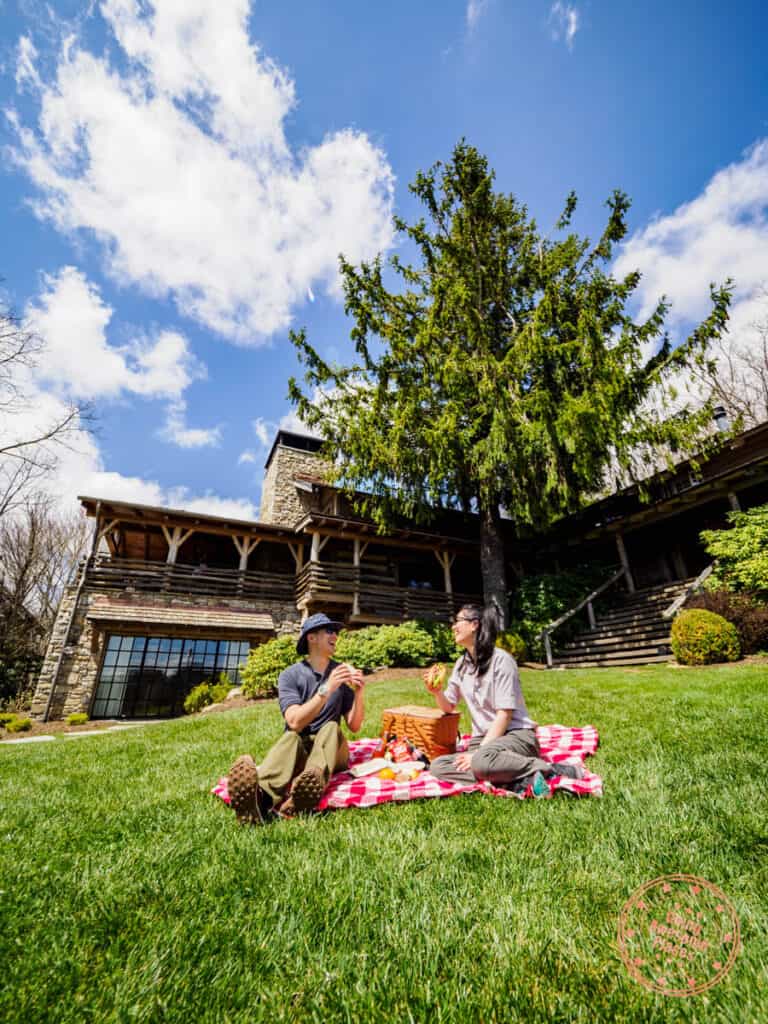
Next, you’ll see a whole other side of the Smokies. At an elevation of 5,000 feet and overlooking the Great Smoky Mountains National Park, you’ll find a luxury mountaintop retreat called The Swag .
It’s more than just a small rustic inn. It’s a hideaway and invigorating getaway that allows you to truly disconnect with its view of the mountains, boundless activities, authentic hospitality, and delicious dining.
While we didn’t plan early enough (at least a year or more in advance), we got a local tip that you can book a packed picnic lunch here without being a guest. This gives you access to the entire grounds, giving you the opportunity to hike up to Gooseberry Knob, watch the hummingbirds, explore the grounds, or enjoy book a spa treatment.
TIP: They have two vintage coolers right outside the main lodge where they stock ice cream and drinks. They’re free for all guests!
From the get-away-from-it-all feels, you’ll crank things up a notch with a visit to Dale’s Wheels Through Time . This is one of the top motorcycle museums in the United States. Curated and collected by Dale Walksler, his exhibits focus on an array of rare American motorcycles.
What makes Wheels Through Time more than just another museum is in their tagline of “the museum that runs”. Every single one of their machines on display can be fired up and they are more than willing to let you hear their beautiful growls.
In many ways, it feels like you’re walking through Dale’s personal workshop with bikes of all kinds, generations, and eras all under one roof. If you’re into Harleys, motorcycles from World War 2, or the most rare bike in the world , they have it all!

You’ll be driving through Maggie Valley and eventually into Bryson City. Check into your tiny home for the night at Gina’s Great Getaways , eat an early dinner at Nantahala Brewing’s Burger + Bar (or takeout to eat on the road), and start making your way back into the Great Smoky Mountains National Park.
This time, you’ll be heading up to the famous viewpoint, and tallest peak in the park, Clingmans Dome .
On the way though, make sure to be on the lookout for elk grazing on the side of the road. While we didn’t see elk at Cataloochee Valley, they were right by Highway 441 near the Oconaluftee Visitor Center , munching on grass, casually crossing the road, and causing quite the stir amongst the motorists passing by.

Clingmans Dome is a unique piece of architecture in the national park. At 6,643 feet, the observation tower was built in 1959 and features a spiral ramp that is in sync with the same 12 percent grade that the trail leading up to the tower has.
When you arrive, the panoramic views of the mountains and cascading ridges will take your breath away. This is just from the parking lot and visitor center area.
Continue hiking up the trail and this is when you actually start losing your breath because of how steep the path is. The 0.5 mile hike takes you to the base of Clingmans Dome where you’ll do the remaining spiral to get up to the top of the 45-foot circular observation platform.
The reason for the slightly awkward dinner option is because you’re trying to rush here to catch the sunset. It’s been a packed day so decompress out here with everyone else that has gathered here and watch nature’s finest light show.
WHAT YOU NEED TO KNOW – CLINGMANS DOME
At the highest peak in the national park is a unique spiral structure that offers 360 degree unobstructed views of the Smoky Mountains and cities below.
Clingmans Dome is built along state lines so half of it is in Tennessee and the other half is in North Carolina.
Website: Great Smoky Mountains National Park Clingmans Dome
- Sunrise or sunset for the best views from the tower.
- The road from the main Newfound Gap Road (Highway 441) is windy but easy to drive and newly paved.
- The drive towards Clingmans Dome has a number of scenic pullouts.
- While open all year round, the 7-mile road to Clingmans Dome from Newfound Gap Road closes from December 1 – March 31 so the only way to get there is by hiking.
- There is a large parking lot but during high-season it can fill quickly so come early.
- If you’re coming here for sunset, this means you’ll be driving in the dark through the national park so be careful and use your high beams (while not blinding oncoming traffic at the same time).
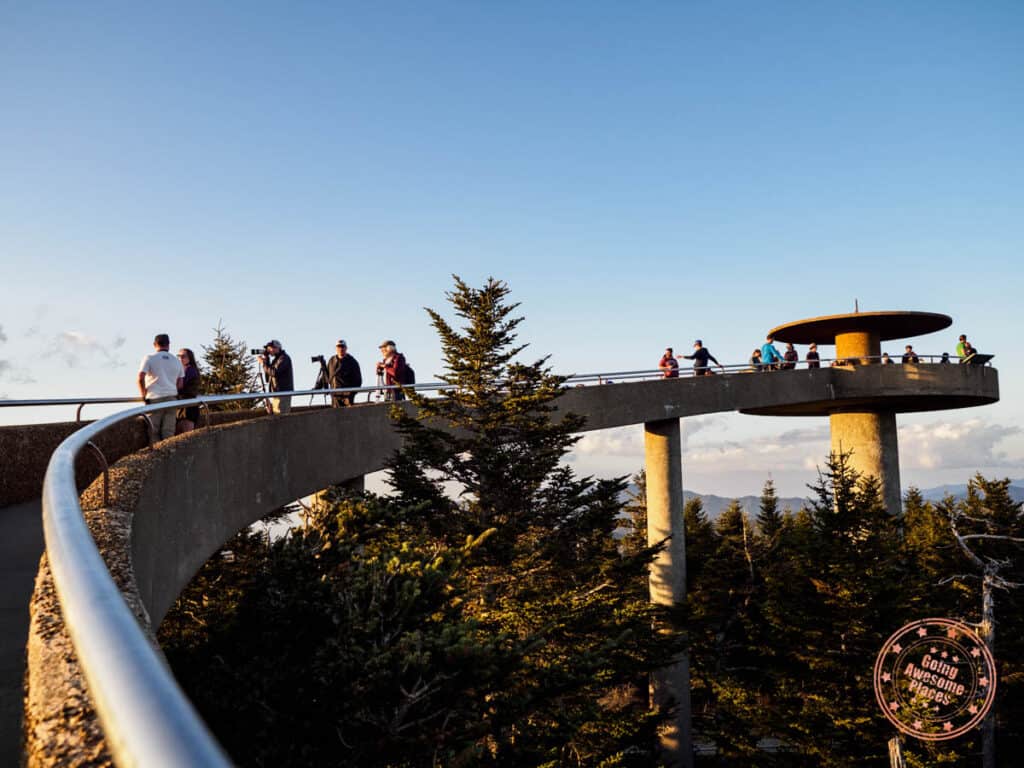
- Many photographers will try to capture the sunrise or sunset from Clingmans Dome but most photographers prefer sunset because the curve leading up towards the tower points west.
- Photographers will set up tripods along the ramp up and on the tower itself so you will want to go early to pick a spot. It does get quite busy at sunset.
- The best spot overall is actually on the ramp and not in the tower itself because there are less foreground trees obstructing the view of the mountain range.
- Right before the visitor center is a lookout point with log benches. This is a great spot to shoot the silhouette or mountain ridges.
- Pets and bicycles aren’t allowed.
- The trail up to Clingmans Dome is not wheelchair accessible.
- If you’re going for sunrise or sunset, make sure you have the right headlamp. The Fenix HM65R we’ve reviewed is highly recommended.
- Open all year round.
- The hike up to Clingmans Dome is only 0.5 miles and well-paved but don’t be fooled, the elevation change is quite large and so you’ll find yourself quite gassed when you reached the base of the tower.
- Since this is at 6,643 feet, the dome can be 10-20 degrees Fahrenheit (6-12°C) colder than where you came from so make sure to pack a jacket, even in the summer.
- The Appalachian Trail crosses Clingmans Dome if you want to do a short segment of it while you’re here.
- There are washroom facilities in the parking lot.
- If you can’t do the hike up to the dome, there’s actually a great view of the mountains looking westwards which is perfect for sunset. You’ll see many people lining up their camping chairs to watch from the parking lot.
- The visitor center is right by the trailhead and their hours can be found on the Visitor Centers page. There’s a bookstore, shop, and park information here.

For the next two nights, you’ll be staying in the Sweet Pea Tiny Home . As a tiny home, you’ll be amazed by how spacious and functional it is for its size. Inside, you’ll find a full kitchen, dining area, bathroom, bedroom. Outside, there’s a front porch, back deck, fire pit, and barbecue.
This Smoky Mountains itinerary is filled with unique stays like this but you need to know where to look, so hopefully this gives you a few ideas.
Day 2 Summary
What you’ll see:
- Cataloochee Valley
- Dale’s Wheels Through Time
- Clingmans Dome
- Breakfast – Make your own breakfast at the cabin.
- Lunch – The Swag – Exclusive luxury mountain lodge where you can book a picnic lunch to get a sneak peek. You won’t find it on their website so just call them to set it up.
- Dinner – Nantahala Brewing and Burger Bar – If you have time, come here for dinner or pick something up to go and eat it on the way up to Clingmans Dome.
Tours you can book:
- Clear Creek Falls Hike – This is a guided 4.5 hour hiking tour to Clear Creek Falls that starts and ends in Waynesville.
- Gina’s Great Getaways – They have a wide selection of getaway homes from a Lil’ Red Caboose to the Sweet Pea Tiny Home we stayed in. A heads up that their wifi is a bit slow because they’re in a remote area.
- McKinley Edwards Inn – This is located in the outskirts of Bryson City that runs like a B&B with a superb breakfast, great hosts, comfortable rooms, and is well-reviewed.
- Nantahala Cabins – If you’ll be spending time with the activities along Nantahala River, this place has a collection of cabins to choose from that range in sizes and budgets. Many of them hot tubs as well!
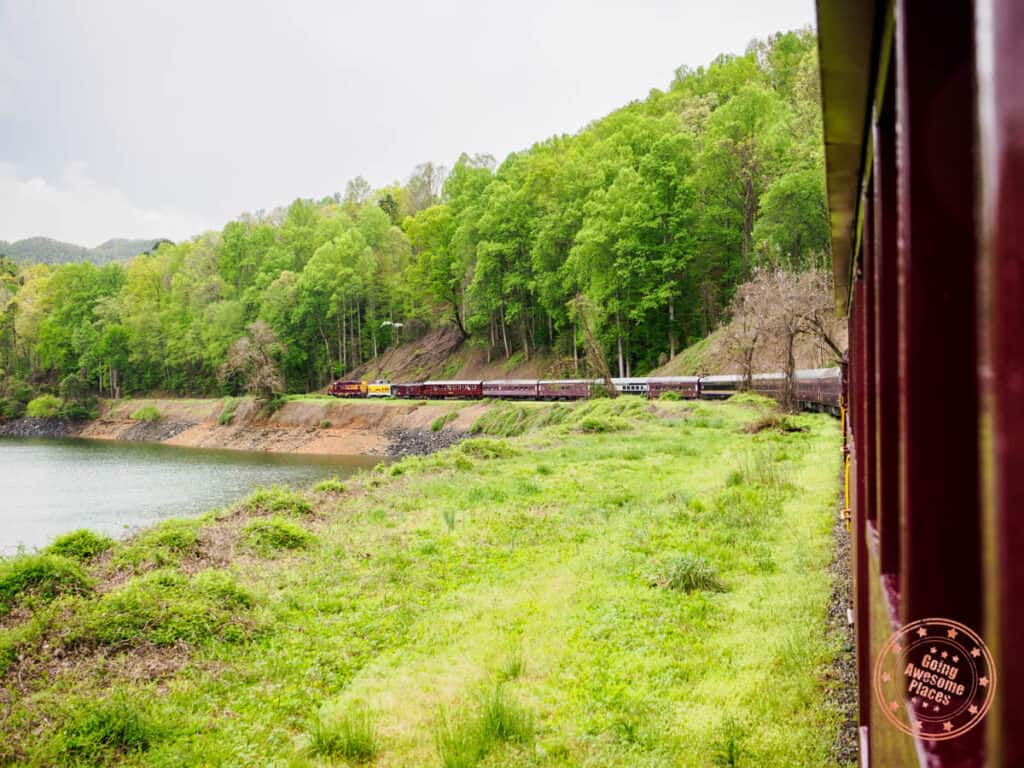
For your day 3, you’ll be combing two iconic activities in western North Carolina – riding the Great Smoky Mountains Railroad and rafting the Nantahala River.
Start your morning by heading into Bryson City. Park in the giant lot reserved for Great Smoky Mountains Railroad (GSMR) guests and stop by Mountain Perks across from the train depot for breakfast.
Check in at the GSMR office where they’ll provide you the tickets that you need. The beauty of the Raft & Rail package is that it’s a continuous experience that’ll start with your train ride through the Nantahala Gorge, where you’ll then get picked up by Wildwater on the other end to start the rafting segment of the trip.
Once they give the signal to board the train, you’ll make your way to your designated car and off you go.
Compared to the train ride we did in Sacramento in our Northern California road trip , I’d say the Nantahala Gorge Excursion is much more exciting, passing through Fontana Lake, Nantahala Gorge, two trestle bridges, ravines, waterfalls, and relocated towns created from the Fontana Dam.
This is a trip back in time as the diesel or steam-powered locomotive runs through tracks known as the Murphy Branch of the Western North Carolina Railroad. The brakeman responsible for your car will also come around to provide commentary on things you can see along the track.
WHAT YOU NEED TO KNOW – GREAT SMOKY MOUNTAINS RAILROAD
This is a must-do activity for those exploring the western edge of North Carolina. With 53 miles of track, 2 tunnels, and 25 bridges, Great Smoky Mountains Railroad (GSMR) offers two different tracks – one to Nantahala Gorge, and another to Tuckasegee River.
Take a step back in time with this classic train ride through the beautiful countryside and the same track that was part of the Murphy Branch built in the late 1880s.
They have two locomotives – diesel powered and steam powered.
Website: Great Smoky Mountains Railroad
- They have a number experiences and locomotives. It’s best to look at the calendar ahead of time especially if you’re set on riding a steam train.
- Each train ride also has multiple classes of service.
- For Nantahala Gorge , you can look at the Class Comparison table that has a clear table of what’s included in each class.
- Prices increase in October.
- Throughout the year, they’ll also have seasonal excursions.
- They also offer a special Raft & Rail combination. This is $121.75 for adults (13+) and $104.75 for children (7-12).
- Nantahala Gorge Excursion – 4 hour 30 minutes. 1 hour and 45 minutes in, you’ll reach the end and the train turns back. This includes a 1 hour layover at the Nantahala Outdoor Center.
- Tuckasegee River Excursion – 4 hours. 1 hour 30 minutes in, there’s a 1 hour 20 minute layover in the historic town of Dillsboro.
- GSMR runs all year round but their primary schedule is from April to October.
- The most popular time to visit is during the fall colours. You’ll notice that they run more trains most of October.
- GSMR has a large parking lot on Mitchell Street across from the railroad depot. When booking your tickets, the parking fee is mandatory and built in. Pre-paid parking is $6 per vehicle.
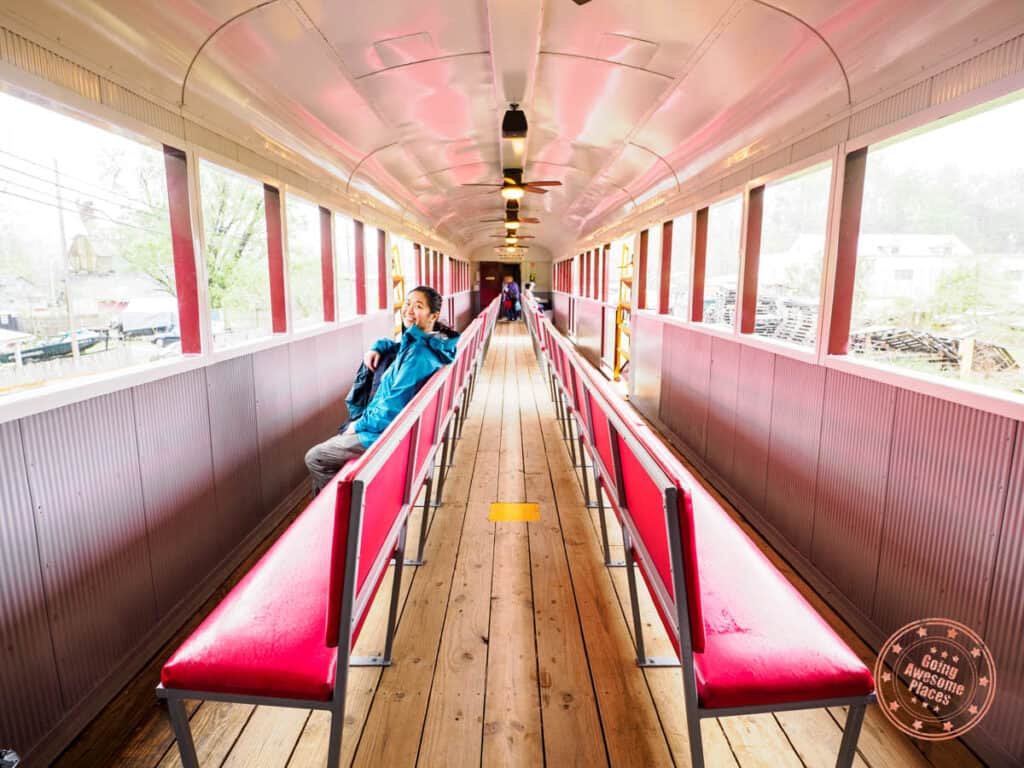
- The best car to book is the Open Air Gondola (or Premium Open Air Gondola) which is a covered open air car with benches on each side. This gives you unobstructed views.
- There’s a lot to see throughout the train ride so make sure your camera is already ready.
- For photos, look for the trestle bridges and big bends in the track which will allow you to take photos of the entire train.
- You need to arrive 1 hour before departure.
- There are bathrooms on board.
- You can walk between cars and you’ll have an opportunity to purchase lunch and drinks (including alcoholic beverages).
- Before you book, make sure to check out their deals page which has discounts for local residents, seniors, military, AAA, and others.
- For both primary excursions, they are one way trips up and the same track back to the railroad depot.
- During the train ride, a brakeman will be coming by to provide insightful and thoughtful commentary about the surroundings.
- With the open air gondola, you’re exposed to the elements so make sure you bring layers in case it gets cold.

After passing the Nantahala Outdoor Center and going further upriver, the train eventually comes to a full stop. For those that are on the Raft & Rail or Rail & Trail package, this is where you’ll disembark.
A Wildwater mini school bus will pick up the rafters, with the rafts themselves in tow. After a short ride, you’ll reach the launch site and riding down rapids in no time.
If you’ve done higher class rapids on the Ottawa River , you may have encountered class III to V. To set expectations, these are class I to III rapids which means that this is more of a low-intensity rafting trip that’s great for non-swimmers, multi-generation and groups with children 7+.
Your expert guide will take you down the fast-moving Nantahala River and navigate over a dozen different named rapids such as “Whirlpool”, “Patton’s Run”, and “The Bump”. The final drop is the biggest one called “Nantahala Falls”.
Paddling is quite minimal except for the occasions where your guide will say “give me 2!” where you’re then expected to do two strokes. At most you might have to do 5 continuous strokes together.
This is why we think this is great for those that want to experience rafting without it feeling scary or too serious. It’s extremely family friendly and many parts feel like one of those water rides in theme parks except this one’s in the real world.
There’s one stop along the way where you’ll be able to explore a natural rock cave that the Cherokee likely used.
WHAT YOU NEED TO KNOW – WILDWATER
The Nantahala River is not only abound with visual beauty but nestled in the gorge are 8 miles of clear and gushing water that creates the perfect condition for whitewater rafting for beginners. It’s great for families because the whitewater only goes up to Class III.
While there are many companies that ofter whitewater rafting excursions, Wildwater is the exclusive operator that works with the Great Smoky Mountains Railroad. The Raft & Rail package allows you to uniquely combine both the train with rafting experience. We’ll be focusing on this in the details below.
Website: Wildwater
- The Raft & Rail package is $121.75 for adults (13+) and $104.75 for children (7-12).
- Wetsuit rental – $10
- Wetsuit booties rental – $5
- The rafting experience itself takes 1 hour and 45 minutes.
- There is usually only one departure time available for Raft & Rail but check the schedule (most likely 10:30AM.
- Rafting is only available April – October.

How does raft and rail work?:
- Check into GSMR where you’ll receive all your tickets.
- In the waiting area is the cafe and this is where you exchange your boxed lunch tickets for your boxed lunches.
- Just outside on the other end of the waiting area is an outdoor Wildwater kiosk where a member of team will ask you to fill out the waivers and brief you on how the trip will work. This is also when they’ll ask whether you need paddle jackets, wetsuits, or booties.
- Board the Nantahala River Excursion train (could be diesel or steam) with everyone else. You will be on the Wildwater open air gondola car.
- Eat your lunch on the train ride.
- Once you reach the train’s turnaround point (2 hour 45 minutes to 3 hours in), you will disembark and the Wildwater team will pick you up in one of their small buses.
- You’ll head in the Nantahala National Forest where there’s a launch site. Gear up on the bus or on the ground as they get their rafts ready. There’s a few porta-potties here if you need it. You can leave your bags on the bus.
- After a safety briefing, you’ll help carry the rafts down the ramp to the water.
- Raft for 1 hour 45 minutes. The pick up point is right by the Nantahala Outdoor Center.
- The same bus will pick you up and once the rafts are loaded back on, they’ll drive you to the Wildwater outpost/office.
- At the office, you’ll be able to use their change rooms, take a hot shower if you want, buy souvenirs, and purchase photos.
- The bus will then drive you all the way back to Bryson City and drop you off to the parking lot. This will be around 4:30PM.
Difficulty:
- Beginner level rafting (no prior experience required).
- The rafting is exciting but does not require too much paddling so it is not strenuous.
- You will get wet but flipping is almost impossible with these classes of rapids.
- You can continue to park in the lot after you return to Bryson City so feel free to explore the city.
- Since the rafting is quite easy going, you’ll have a lot of opportunities to take photos. Make sure to bring a waterproof phone case .
- For video, bring your GoPro with orange floatie as many of their helmets have mounts. To mix things up, you can have a floating hand grip ready.
- If you want to bring camera gear, be prepared by bringing your own dry bag . There are a few loops at the front and back of the raft that you can clip to.
- They have a dedicated photographer capturing the final Nantahala Falls. Those are the photos you can purchase at the end. They don’t have a videographer.
- If you’re booking the Raft & Rail package , you will be in the Wildwater open air gondola car on the Nantahala River Excursion.
- To save time, fill out the trip waiver beforehand found on the Nantahala River Rafting page.
- For some reason it seems like it’s cheaper to book the Raft & Rail package through Wildwater (make sure to opt out of the “Trip Cancellation Guarantee”) but I believe they tack on the parking fee afterwards.
- Helmets are optional.
- There aren’t any official changing rooms at the launch site so it makes sense to wear your swimwear when you board your train.
- Pack your bags accordingly for both the train ride and rafting and think in advance how you’ll shift your gear around once you get on the Wildwater bus.
- The rafts rafts can carry up to 8 people + guide so these aren’t the massive rafts we had at OWL Rafting in Ontario’s Highlands .
- To be clear, Nantahala Outdoor Center (NOC) has their own rafting tours but it is not the same as Wildwater which is a different company. There are in fact a dozen or more companies that operate on the river. Wildwater is the only one that is partnered with GSMR.

Wildwater will eventually deposit you back to Bryson City where you parked. At this juncture, you can hang around town and grab dinner at a restaurant such as The Bistro at the Everett Hotel or if you wanted to see more of Nantahala River, you can drive back in.
Since Wildwater doesn’t linger around the rafting end point, you’ll be able to come back to get a glimpse of all the facilities around the Nantahala Outdoor Center (NOC). You’ll be able to walk the bridge where you’ll see the river rushing past, slalom gates used for canoe/kayak training, fishing from the shore, and a huge swathe of exhausted Appalachian Trail hikers.
River’s End is right along the side of the river and is an iconic spot for those hiker and paddlers alike. With a view of the river on one side, you’ll devour their yummy pizzas, burgers, world-famous sherpa rice , and seasonal entrées.
Day 3 Summary
What you’ll do:
- Raft and Rail Tour with Great Smoky Mountains Railroad and Wildwater
- Waterfalls and Breweries Tour – Combination of four waterfalls and five breweries in this small-group tour that leaves from Bryson City.
- Blue Ridge Parkway Day Tour – Since you won’t get to truly explore the Blue Ridge Parkway on your own, this could be a great alternative private tour.
- Breakfast – Mountain Perks – Right across from the GSMR depot, this is a popular spot in the city to grab a coffee or full breakfast.
- Lunch – Boxed lunch that’s part of the Raft & Rail tour .
- Dinner – Rivers End – Great location right beside the Nantahala River that serves yummy pizzas, burgers, and specialty entrees like the blackened local trout. This is a popular pitstop for Appalachian Trail hikers. Alternatively, The Bistro at the Everett Hotel is great if you’re looking for something in Bryson City.
- Gina’s Great Getaways – They have a wide selection of getaway homes from a Lil’ Red Caboose to the Sweet Pea Tiny Home we stayed in.

This is an exciting day of your Smoky Mountains itinerary because not only will you be seeing both sides of the national park, you’ll also be doing some of our favourite parts of the trip.
You’ll want to get an earlier start to your day and get to the Deep Creek section of the Great Smoky Mountains National Park. The reason for the early start is because this’ll give you an opportunity to see the 3 waterfalls here uninterrupted from large crowds.
Start with Juney Whank Falls which is closest to the parking lot. There’s a gradual climb on this trail but it’s a short hike. There’s picturesque wooden footbridge that crosses the falls and divides it into an upper and lower section. You’ll see a combination of cascades and sliding water.

Next is Tom Branch Falls which is the most easy to access out of all 3 waterfalls. Along the primary walkway you’ll have a wide open view of this elegant waterfall on the right side. Standing 75 feet high, it features a multilevel cascade.
To complete the trio of waterfalls, there’s Indian Creek Falls . This is a 45-foot sliding waterfall. From the trail, you’ll take stairs down to a viewing platform and it’s here that you get the best photos.
WHAT YOU NEED TO KNOW – DEEP CREEK
Another great part of the Great Smoky Mountains that you can only get to from North Carolina is Deep Creek which is well-known for its streams and waterfalls. What you’ll love about hiking here is that you can see 3 waterfalls in close proximity together.
Website: Great Smoky Mountains National Park Deep Creek
- To see all 3 waterfalls, you should budget 1.5-2 hours here.
- Early morning is a great time to go when the light isn’t too harsh for photography and there are fewer people on the trail.
- There is plenty of parking. Drive all the way to the Deep Creek Falls and Trail parking.
- If you’re looking for milky waterfalls, make sure you pack your ND filters and tripod (we use the Peak Design Travel Tripod ) or have a camera like the OM System OM-1 which has built-in ND filters that can be used hand-held.
- You can’t fly drones whatsoever here because you’re within the national park.
- There is some elevation change up to Juney Whank Falls. This loop is the only trail that takes you into the forest.
- The Deep Creek Trail to Tom Branch Falls and Indian Creek Falls is extremely wide and groomed gravel. This trail also has plenty of benches along the way.
- If you have difficulty walking, Tom Branch Falls is right along the easy-to-walk path , has no elevation change, and the waterfall can be viewed right across the creek.
- For a more challenging hike, you can ado the Deep Creek Horse Trail from Juney Whank Falls up to Indian Creek Falls before coming back down to the trailhead and catch Tom Branch Falls.
- There aren’t restrooms at the trailhead but you’ll find them in the picnic area.
- Pets are not allowed on the trail to see Juney Whank Falls nor both Indian Creek and Tom Branch Falls .
DEEP CREEK REVIEWS

If you didn’t end up making breakfast at your tiny home, make a brunch of it and grab a sandwich and coffee to-go from The High Test Deli and Sweet Shop .
Halfway through the trip, it’s only fitting to now make that crossing over the Great Smoky Mountains National Park . The first part of the drive will be familiar because it’s the same Newfound Gap Road (Highway 441) that you took earlier to get to Clingman’s Dome.
Along the way, take the obligatory sign in front of the national park sign. There’s a pull off for the sign so you won’t need to rush this part.
Make sure to stop at the Oconaluftee Visitor Center . There aren’t many shopping stops on this itinerary so this is your chance to pick up some souvenirs. Behind the center is also the Mountain Farm Museum which has historical buildings dating back to the early 1900s.
For those that are keen on learning more of the history of settlers in the area, Mingus Mill , an 1886 grist mill with functioning machinery, is also worth stopping by.
The first part of the drive is mostly uneventful as you’ll be going uphill and driving through what will feel like a tunnel through a thick forest of trees.
You’ll pass through a number of lookouts along the way but here are the ones you should focus on:
- Luftee Overlook – This viewpoint has an elevated view of not only Oconaluftee Valley but also the gentle bend in the road. You can’t cross the road so you’ll be taking photos from the parking lot.
- Newfound Gap – The Appalachian Trail cuts right across and this is perhaps the important stop you’ll make because it’s here that you’ll find the North Carolina/Tennessee State line sign, and also both UNESCO World Heritage Site and Biosphere Reserves plaques. The path below the parking lot offers stunning views of the mountains and road that you just took up.
- Morton Overlook – Once you get here, you’re starting to make the downhill drive. This is one of the famous overlooks that looks down the line of the valley of trees and you get a small sliver of the road in the foreground.
- Chimney Tops Overlook – The Chimney Tops sustained massive fire damage in 2016 and so the landscape is quite a bit different from before. This pull off on the left gives you a glimpse of how extensive the damage was. Mark this on the map because this will come up on you really quick and there isn’t any signage. Also, heads up that the Chimneys Picnic Area doesn’t have any view of the Chimney Tops.
- Carlos Campbell Overlook – Named after the director of the Knoxville Chamber of Commerce in the 1930s, advocating for the creation of the national park, you’ll see 3 peaks in one view. The official overlook has quite a lot of tree cover in the foreground so we recommend driving to the smaller pull off just a bit further downhill.
WHAT YOU NEED TO KNOW – GREAT SMOKY MOUNTAINS
The entirety of the Great Smoky Mountains National Park is a guide all on its own but here are some of the key things you should know when making the crossing on Newfound Gap Road.
Website: Great Smoky Mountains National Park
- The speed limit through the Smoky Mountains is at most 45 miles per hour (72 km/h) but is generally 35 miles per hour (56 km/h).
- There are a lot of pull offs on Newfound Gap Road and not only is that for scenic views but it also allows cars to let others pass if you find that you’re being pressured to drive faster.
- Overall the road is vert well-maintained, not too twisty, very safe with its rock barriers, and newly paved.
- Crossing North Carolina to Tennessee without stops is only 1 hour so it is not a long drive.
- As we mention above, there are a ton of scenic overlooks especially along Newfound Gap Road (Highway 441). You’ll be tempted to do a lot of them but you’ll be better off to plan the specific ones you want to do and then see how you feel when you’re there.
- Be on the lookout for wildlife and more specifically, bears! Bears aren’t shy and they’ll come right up to the road. Typically, if you see a big traffic jam with people looking into the forest, it’s most likely a bear.
- We spoke to a ranger at Oconaluftee Visitor Center and they said that the elk can be seen typically from the entrance to the park on Highway 441 all the way to Smokemont Campground but never any further.
- Two popular spots for elk are in the huge meadow beside the Oconaluftee Visitor Center, near Mingus Mill, and by the side of the road in the mile leading up to the visitor center.
- Always check for closures on the Great Smoky Mountains page. Their “Alerts in Effect” show all of the important notices at the top.
- Cellular service – There is no service once you enter the park. The edges of the park might have a bit of service but plan to be disconnected while here.
- If you want to support the national park, don’t buy souvenirs in town but at the visitor centers instead where the money can make a difference.
- The two major visitor centers are Oconaluftee on the North Carolina side and Sugarlands on the Tennessee side.
- If you plan on doing any hikes, try to get to the trailhead early in the morning because the parking lots and pull offs fill up very quickly.
Take the road straight into Pigeon Forge , Tennessee where you’ll see a dramatic change to a street filled with larger-than-life themed shows, rides, and a whole lot of fun.
Along the main parkway, stop at the popular Local Goat to satisfy your hungry with their selection of craft beer, and locally-sourced and sustainable menu items such a their highly-touted burgers, ribs, pastas, salad, and more. You’ll need to build up your energy reserves for what’s coming next!

How does being inside a giant-sized 11 foot beach ball filled with 10 gallons of water to get you wet while rolling down a 1000 feet hill sound? Absolutely ludicrous right?
Well, that’s exactly what you’ll find at Outdoor Gravity Park .
EXCLUSIVE DEAL WITH OUTDOOR GRAVITY PARK

We’ve secured a special deal with OGP where 1 roll and 1 video is $25 (discount of $14), and 3 rolls and 3 videos is $62 ($20 savings). This is the best offer you’ll find on the market right now.
The link below will take you straight to the booking platform Outdoor Gravity Park uses. The initial page shows the standard information about how the rolls and videos work. Once you’ve selected a date and time, you’ll see the discounted rates on the next page.
You may have heard of something called zorbing in New Zealand. It’s one of those bucket-list items that you’d do when there along with skydiving in Abel Tasman , or bungee jumping in Queenstown . One of the engineers of ZORB in Rotorua, came to Pigeon Forge to build his dream course.
Featuring 3 different tracks, you can fill up the zorb with up to 3 people on some or go solo on the most daring “Extreme Zig Zag” course.
There are a lot of fun and crazy things you can do in this region of Tennessee but this is easily the most extreme, wild, and fun.
WHAT YOU NEED TO KNOW – OUTDOOR GRAVITY PARK
Made popular in New Zealand, this is the only place in the United States where you can go zorbing. Don’t miss this! It’s ridiculously fun.
Website: Outdoor Gravity Park
Address: 203 Sugar Hollow Rd, Pigeon Forge, TN 37863, United States
Hours: Monday – Sunday 11AM – 4PM
- 1 roll is $24
- 3 rolls is $7 ($19 each)
- 5 rolls is $90 ($18 each)
- 10 rolls is $170 ($17 each)
- 20 rolls is $340 ($17 each)
- Video for one roll – $15 ($5 for additional rolls)
- Unlimited video for all of your rolls – $50
- Each track is slightly different but on average it takes about 30-45 seconds to get downhill.
- The park’s GoPros are free to use but the video needs to be purchased.
- They come with a selfie stick ( GoPro 3-Way ) and are already protected from fog. The cameras are not mounted and require you to hold the selfie stick.
- You are allowed to bring your own GoPro as well! Before you come, make sure to coat the lens with Rainx Anti Fog Repellent otherwise it will fog up.
- Your best bet is to have the stick fully extended and the camera pointed back at you in either wide or super wide mode.
How does it work?:
- You’ll get a wristband that indicates the number of rolls you get.
- After changing and getting ready, there’s a line you get into behind the main building for the mini bus.
- Once you get on the bus, it’ll take you uphill to the start of the course.
- Indicate to the staff which course you’re doing as they get the zorb ready.
- When it’s your turn, the staff will place a small pad over the entrance of the zorb to prevent your clothes or skin catching on the zipper.
- Holding the zorb in place, you’ll jump in head first. You’ll immediately get wet because of the water that’s inside.
- The staff will zip up the zorb (it’s double sealed).
- When the track is cleared and ready, they’ll open the gate and give you a gentle (ish) push.
- Cue the screaming.
- The common misconception is that your body will be rolling around as the zorb goes downhill. On the contrary, you actually stay relatively planted at the bottom with the water as the zorb rolls around you.
- At the end of the track, you’ll come to a complete stop. The staff will open up the zippers and you’ll come out feet first onto the grass.
- There are 3 available tracks. For the most bouncing and change of catching some air inside the zorb, do the “Extreme Zig Zag” track (you have to have done another track first in order to do this one). For the fastest speeds, choose the middle “Fast Tracks”. For the best of both, “FUNnel” is a great one to start with.
- Zorbs can fit up to 3 people (depending on the track). Each person rolling will cost 1 roll.
- The main building has change rooms and restrooms. There are no showers.
- You’re guaranteed to get wet so come prepared with a swim suit, your own towel (unless you’d like to buy one of theirs), and change of clothes.
- Outside of summer, you’ll get cold once you’re out of the zorb, so it’s a good idea to have a large towel to wrap around you to dry and warm up.
- When booking, you’ll have to pick a time slot. You have to arrive during that slot but you can go over time. Wait times are generally shorter at the beginning of your time slot and gets slower at the end.
- If you’re traveling in a large group, it makes one sense to purchase all the rolls so you can save money with the bundle prices.
- While you have to select the number of rolls when booking online, you can always add more when you’re there.
- They have discount packages so make sure to see if those suit you. You’ll find these on the checkout page.
- If you are military, first responder, or educator, use THANKYOU for a 10% discount.
- You must be 5+ to roll. Maximum weight is 275 pounds per person.
- We found that with two people, the water seemed to fling up and around the zorb quite a bit more which meant we were rubbing water out of our eyes. Going solo, there was much less water splashing on your face.

End off your night at the illustrious RT Lodge in Maryville, Tennessee. This rustic retreat and continues the line of unique stays you can find in the Smoky Mountains. Leaping off the pages of wedding magazines, Southern charm oozes throughout the classic revival property.
Sure, it’s a bit out of the way but you’ll love the nightly s’mores firepit, outdoor fire place accompanied by lounging rocking chairs, wooded grounds, free bike rentals, and lounge salons.
For dinner, you’ll eat at The Restaurant at RT Lodge which is an upscale dining experience to match the atmosphere and ambiance of the lodge. Executive chef, Chef Stockton, sources from local farmers and homegrown ingredients to prepare the most delectable dishes.
Day 4 Summary
- Deep Creek – Hike the waterfall loop for Juney Whank, Tom Branch, and Indian Creek waterfalls
- Luftee Overlook
- Newfound Gap
- Morton Overlook
- Carlos Campbell
- Outdoor Gravity Park – The only place in the United States you can go zorbing. Ridiculously fun!
- Museum of the Cherokee – Skip the line with this admission ticket to the museum to learn the history and culture of the Cherokee people.
- North Carolina Steams and History Tour – A 5 hour guided nature walk through the Smokies by A Walk In The Woods that starts at Oconaluftee Visitor Center.
- Audio Driving Tour – GyPSy Guide is a well-known self-driving guide that we also recommend for our 5 day Maui itinerary .
- Breakfast – The High Test Deli and Sweet Shop – They’re a take-out only restaurant which is perfect because you’ll be able to eat it along your drive through the Smoky Mountains National Park.
- Lunch – Local Goat – A highly rated restaurant that has a great selection on their menu. Don’t miss their ahi tuna burger, fall-off-the-bone ribs, steaks, and craft beer.
- Dinner – The Restaurant at RT Lodge – Pairing with the picture-perfect lodge is a gourmet dining experience that will impress with their upscale ambiance, creative dishes, and some of the best service you’ll find in a restaurant. Remember to make reservations (closed on Monday).
- RT Lodge – While a bit out of the way, is a spectacular luxury lodge that’s tucked in the forest for cozy rooms, high-class restaurant, plenty of lounging areas, and firepit. S’mores are free for all and breakfast is included as well.
- Blue Mountain Mist Country Inn -Located not far from Dollywood and Pigeon Forge, this is a rustic and intimate inn with exceptional service and includes breakfast.
- Twin Mountain Inn & Suites – A more traditional hotel located in Pigeon Forge that’s next to Dolly Parton’s Stampede and at the foothills of the Smoky Mountains. Pets are allowed, there’s a swimming pool, and breakfast is included.

The Tennessee side of the Smoky Mountains has a lot to offer and what you’ll find is that while the view of its peaks might be similar, they have a different take to it.
There’s no time to lose so enjoy a cup of coffee on the grounds of RT Lodge before setting off for brunch at the famed Applewood Farmhouse Restaurant .

The original farmhouse for the 65-acre apple orchard property was transformed into a family eatery and ever since then it’s become a staple of traditional southern dining in the town of Sevierville.
Your experience starts off with a complimentary basket of apple fritters and apple cinnamon muffins, side of apple butter, and cup of their Applewood julep. This is before you get your southern favourites including their must-order Savannah pecan pancakes, Smoky Mountain biscuit Benedict, and country omelets that you see above.
You may not have had a grandma living in the south but after your brunch here, you’ll get a really good taste of what it’s like if you did.
TIP: Ask for the table with swinging chairs. There are only two at the moment in the restaurant but they’re definitely one of the exclusive tables to dine in if they’re available.

Next up is the iconic Pink Jeep Tours made famous in Sedona, Arizona but now has their own set of tours in the Great Smoky Mountains.
Since you have already done Newfound Gap on your own, one of the tours that we recommend is the Roaring Fork Smoky Mountains Tour which takes you through the Roaring Fork Motor Nature Trail .
On this tour, you’ll travel in a custom open-air Pink Jeep Wrangler where the advantage of doing this versus on your own is having an expert interpretive guide provide great commentary about the area you’re driving through, make stops at the best locations, and help with group photos.
Being in an open-air jeep means that you’ll get awesome elevated views of the bridges, waterfalls, steams, and maybe even a bear. One surprise is that you will get an opportunity to get off the jeep as well and walk around the Ephraim Bales Cabin along with the lesser-known scenic streams that’s just behind.
At the end of the tour, you’ll be taken to a private-property 4×4 off-roading course and turn the adventure knob to a 10. The true power of the jeep will be on display, thundering up and down rocky hills like its nobody’s business.
WHAT YOU NEED TO KNOW – PINK ADVENTURE TOURS
Pink Adventure Tours (also known as Pink Jeep Tours) got its award-winning start in Sedona and specializes in off-road and road-based tours in the US. They now have locations also in Las Vegas, Grand Canyon, Branson, and the Smoky Mountains.
In the Smoky Mountains, they have several tours but we’ll be focusing on their Roaring Fork Smoky Mountains Tour.
Website: Pink Adventure Tours
- Adult – $74
- Child (2-12) – $67
- Private (up to 7 people) – $518
- Once you’ve picked your seat on the jeep, there’s not much moving around. That said, there are things to see on both sides of the jeep and since it’s open air, you can get up and peek over to the other side if you need to.
- Try to keep your gear minimal as there isn’t really extra space for luggage. There’s also quite a bit of bouncing around in the 4×4 adventure at the end.
- You need to arrive 30 minutes before departure.
- Use the bathrooms before heading out because there aren’t really any bathroom breaks along the way.
- Tighten your seatbelts real good during the 4×4 adventure because if you don’t, you’ll be flung around pretty hard.

Next, head to Five Oaks Farm Kitchen for an early dinner.
The restaurant pays homage to the legacy of Dr. John and Blanche Ogle who were important figures to the growth of the agricultural and breeding of Tennessee Walking Horses in the area.
In what feels like a giant two-story barn, you’ll be able to have a true Southern-style supper.
With choices like chicken and dumplings, cornbread, smoked beef brisket, chicken pot pie, meatloaf, and fried chicken leaping off the menu, you’ll eat just as well as the weary travellers that passed through these exact parts in the early 1900s.
TIP: Grab a jar of fresh raw mountain honey before you leave the restaurant.
Wind down in the comforts of RT Lodge for the night, taking full advantage of its grounds, and of course as many s’mores as you can eat.

Day 5 Summary
- Roaring Fork Interpretive Marker Overlook
- Ephraim Bales Cabin
- The Place of a Thousand Drips
- Pink Adventure Tours – Roaring Fork Smoky Mountains Tour
- Explore a Simpler Time Smoky Mountain Tour – 3 hour tour where you’ll hear stories of the Cherokee people and a glimpse of settlers’ daily lives.
- Old Growth Forest Cascade – This hike takes you to a towering waterfall deep in the old-growth forest.
- Hidden Cascades Hiking Tour – Starting from NOC Gatlinburg, your local guide will take you on a quiet rail down to see a beautiful cascade in the Smokies.
- Clingmans Dome Hike – If you happened to miss this earlier, you can join a guided tour up to Clingmans Dome.
- Ghost and Haunt Tour of Gatlinburg – Learn about the ghost and ghouls that haunt Gatlinburg in this 2-hour night walking tour.
- Thunder Streams and Falls – 3 hour hiking tour that takes you off the beaten path in the Smoky Mountains.
- Brunch – Applewood Farmhouse Restaurant – The oldest restaurant in Sevierville that’s the perfect spot to have Southern breakfast classics. Their apple fritters can’t be missed (because they’re complimentary)!
- Dinner – Five Oaks Farm Kitchen – An inviting Southern restaurant that carries the tradition of the Ogle family that’s filled with farmhouse ambiance and amazing service.

The fun doesn’t stop because you’ll be going wire to wire (literally and figuratively) on your last day of this Smoky Mountains itinerary.
Wake up bright and early for Day 6 because you’ll need to make the drive from Maryville to Gatlinburg . Gatlinburg is a mountainside town at the footsteps of the Smokies that’s filled with outdoor adventure.

One of the unmissable attractions you’ll find in town is the Gatlinburg SkyLift Park . On select days, they offer sunrise access which allows you to get up to their SkyBridge right at dawn.
From this side of the mountain, you’ll be able to watch the city below transition from night to day as the sun climbs up from behind the mountains in the distance. The view from up here is spectacular, especially when you’re on the suspension bridge.
WHAT YOU NEED TO KNOW – GATLINBURG SKYLIFT PARK
The main attraction here is the SkyBridge which features 5 panels of glass and incredibly views of Gatlinburg and the Smoky Mountains. You’ll also find their SkyTrail with The Tulip Tower, SkyDeck viewpoint, and of course the SkyLift 3-seat chairlift that takes you up from the town below.
Website: Gatlinburg SkyLift Park
Address: 765 Parkway, Gatlinburg, TN 37738, United States
Hours: Their hours of operation vary throughout the year. They are closed Jan 31 – Feb 3 for winter maintenance but are otherwise open all year round.
- Adult – $31.95
- Child (4-11) – $18.95
- Seniors (65+) – $24.95
- 3 and under – Free
Driving tips: There are two primary parking lots that are supposed to be $10. These are marked on the interactive map in the beginning of the article. Both are short walk to the Gatlinburg SkyLift Park chairlifts.

- They offer special sunrise access on specific days where you’ll be able to load the SkyLift 45 minutes prior to sunrise time. These tickets are slightly more expensive.
- Drones are not allowed here (we had special permissions to fly).
- If you purchase and redeem your ticket after 8PM, you’ll be able to access the SkyLift Park the next day as well.
- Re-entry is allowed throughout the day.
- Once you reach the other end of the bridge, there’s a small deck with gift shop. You can then connect this with the SkyTrail that follows the side of the mountain and goes back to the main SkyCenter.
- Being a suspension bridge, the SkyBridge does sway and is more noticeable when there are more people on the bridge.
GATLINBURG SKYLIFT PARK REVIEWS
Your last chance for true Southern food on your trip will be at Crockett’s Breakfast Camp . You won’t be able to make reservations here so come here immediately after the SkyLift Park.
Based on the story of the frontiersman, David C. “Crockett” Maples, you’ll be transported to the Old West with artifacts and decor matching a time of westward expansion and exploration.
With their menu printed on a traditional newspaper, have a hearty breakfast of all the southern favorites. Don’t miss their giant cinnamon roll while you’re here.

There are many attractions to choose from while in Gatlinburg but many of them will feel a little kitschy and from a different time. In seeking out an activity to truly round out your road trip in the Smoky Mountains, it only felt appropriate to find something that embraces the outdoors and magic of the mountains.
Touting the highest point in downtown Gatlinburg is Anakeesta . More than just another theme park, this is a whimsical and immersive outdoor experience that combines thrilling elements with a place to chill amongst sculptures, flowers, lights, and breathtaking viewpoints.
Great for all ages, you can spend as much time as you’d like here. Recommended activities are the Rail Runner mountain coaster which features the only single-rail coaster in the United States and the Dueling Zipline Adventure .
They also have some of the best dining experiences in Gatlinburg. We recommend having dinner at Cliff Top Grill & Bar which serves modern American cuisine with the Smoky Mountains serving as its backdrop.
WHAT YOU NEED TO KNOW – ANAKEESTA
More than just a theme park, Anakeesta is an immersive outdoor experience which combines its whimsical mountain atmosphere with thrilling rides, botanical gardens, lookout tower, meandering trails, shopping, dining, and play areas.
Website: Anakeesta
Address: 576 Parkway, Gatlinburg, TN 37738, United States
Hours: Changes throughout the year. Check their calendar for the day-by-day schedule.
General admission:
- Adult – $32.99
- Child (4-12) – $19.99
- Seniors (60+) – $25.99
Dueling Zipline Tour is $59.99 for all ages
Rail Runner is $14.99 for single rider and $18.88 for tandem rides.
Gem mining is $8 per “Paydirt” bag.
Duration: You can easily spend a full day or a few hours here. It depends on how many of the activities you want to do.
Driving tips: There are two primary parking lots that are supposed to be $10. These are marked on the interactive map in the beginning of the article. Both are short walk to Anakeesta.
- You cannot mount a GoPro on the Rail Runner vehicle itself but head and chest mounts are fine.
- For the Dueling Zipline tour, they have helmets with GoPro mounts on them so just request them. You are also allowed to use your phone or other device but you are responsible for its safety.
- Photos are taken before you take the chairlift and rides such as Rail Runner. You can purchase physical prints similar to other amusement parks or you can buy digital-only copies.
- Bears are known to be on the mountain slopes nearby so be on the lookout!
- If you love sunsets, plan to stay around and watch it from the top of AnaVista Tower.
- If you start your visit at night, your next day is free.
- General admission effectively includes everything in the park except for Dueling Zipline, Rail Runner, and Gem Mining activities.
- The ride up is called the Chondola. These are mostly regular 4-person chairlifts but you can also wait for a closed gondola (fits 6 people) which we’d recommend if you’re carrying a lot of gear or not comfortable with heights. These are much less frequent so you’ll have to wait 10-15 minutes for the gondola to come around. They come by 2 at a time.
- You can also go up the mountain by taking the Ridge Rambler which is an open air passenger truck.
- It is recommended to book the Dueling Zipline Tour beforehand as there are limited spots. You have to call to reserve.
- Save time on your check-in process for Rail Runner and Dueling Zipline by completing your waiver online.
- They recommend getting to the Anakeesta base 2 hours before your Dueling Zipline reservation to account for parking, lift and the 30 minutes you need to be there before your reserved zipline time.
- Bears are nearby but the park staff do a good job at making sure they don’t come into the park itself so you don’t need to worry.

Perhaps the most unique stay of the whole trip is on the last day or if you’re a big fan, you could arrange it so you’re here the entire time in Tennessee.
Luxury treehouses are real and bookable just outside of Gatlinburg in a place called Treehouse Grove .
If anyone’s watched Treehouse Masters on Animal Planet, you might’ve heard of Pete Nelson. As the host of the show, he’s built some of the coolest treehouses around America.
One of his team’s special projects was this community of treehouses nestled in the forest. With not a single tree cut down, these are modern cabins built around the trees, using them as foundation and support.
Each treehouse in the grove are unique but these are all equipped with modern furnishings, a kitchen, multiple bedrooms, screened porch and deck.
This may be one of the Great Smoky Mountains best kept secrets.
And that’s a wrap for your 6 day Smoky Mountains itinerary. The next day, you’ll be either flying out of the nearest airport which in this case is the McGhee Tyson Airport (TYS) in Knoxville, Tennessee. Otherwise, you’ll be continuing your road trip to the next exciting place!
Day 6 Summary
- Gatlinburg Skylift Park and SkyBridge
- Dueling Zipline
- Rail Runner
- Wine and Shine Walking Tour – The ultimate moonshine distillery tour where you’ll learn how moonshine is traditionally distilled. The tour includes plenty of samples!
- Impossibilities Magic Show – Family-friendly admission to the show ‘Impossibilities: An Evening of Magic, Mindreading, and Mayhem’ at the Iris Theater in Gatlinburg.
- Brunch – Crocketts Breakfast Camp – Southern breakfast favorites served in a space that takes you back to the days of the Western Frontier.
- Dinner – Cliff Top Grill & Bar at Anakeesta – Gourmet dining within the park that will surprise you with dishes such as their charcuterie board, bison burger, and ribeye.
- Treehouse Grove (The Maple) – These are luxury treehouses come to life. Built by Pete Nelson of Treehouse Masters fame, this is a tiny community of modern treehouses not far from Gatlinburg.
- Greystone Lodge on the River – Conveniently located right in the heart of Gatlinburg, this hotel offers an outdoor swimming pool, free private parking, fitness centre, and free breakfast. This means you don’t have to worry about parking when you’re in town.
- Bearskin Lodge on the River – This hotel isn’t quite as central but the nice thing is that all rooms are fitted with a balcony, microwave, fridge, free parking, and complimentary continental breakfast. Room layouts are spacious and the large outdoor pool is great for the kids.
The key to any successful road trip is to be prepared with all of the right gear. If you’ve followed the itinerary above, you’ll know that it is packed with a bunch of outdoor activities and each one is quite different from one another.
This list doesn’t cover everything but we’ve identified a bunch of key items to get you started with your packing list.
- Car USB adapters – As a road trip, you’ll want to make sure you bring your own charging gear. This’ll allow you to keep your devices and batteries topped up. Most cars have two cigarette adapters so bring two chargers if you have them. Photographers will likely want to make use of this so you can charge your camera and drone batteries on the fly.
- USB charging cables – Along those lines, remember all the variations of cables you’ll need (USB-A, USB-C, Micro USB, and Lightning) depending on what you’ll need to charge.
- Car phone mount – This one is easy to forget. Pack your own car mount so you’ll be able to navigate with ease.
- Binoculars – There’s a lot of wildlife in the national park so a good pair of binoculars is a good idea. Think birds but also the bigger animals like bears if they’re in the distance.
- Layers – Pack accordingly depending on the season that you’re in the Great Smoky Mountains National Park. It can swing from cold to hot quickly so have a sweater/fleece/hoody handy. One we recommend is the Arc’teryx Delta LT Hoody .
- Waterproof jacket – A jacket is handy for the cooler temperatures at sunrise, sunset, and at mountain peaks. Depending on the time of year, rain can also come and go. For this we recommend Arc’teryx Beta jacket for men and women.
- Buff Headwear – Along the lines of layers, something I swear by for all of our packing guides , are the same buffs that you see on Survivor which I use either as a headband, scarf, or wristband to wipe off sweat.
- Wifi hotspot – If you live outside of the US, you’ll need a hotspot for data. I recommend using something like Pokefi (use code GAP24300 to get $20 off) or Solis (rebranded from Skyroam).
- Sunscreen – Protect your skin. Yes, there’s a lot of cover from trees but the UV is strong so apply that 50 SPF Sun Bum before you head out.
- Headlamp – Especially for sunsets, this is going to be mandatory equipment. Check out our review of the Fenix headlamp which is the best one we’ve owned.
- Hiking shoes – A quality waterproof hiking shoe such as the Keen Targhee II for Men and Women is highly recommended. While there isn’t any big hikes in this itinerary, you might want to add them to yours so these will be very useful.
- Waterproof sandals – We usually pack the Keen Newport H2s with us for those hot days where we don’t want to wear shoes or when you need them for whitewater rafting.
- Water bottle – With your own bottle, you’ll be able to fill it with water. This will allow you to buy large 5L jugs of water if you don’t want to drink tap although it’s entirely safe to do so. For the coffee drinks, having a Hydroflask with a coffee sip lid will come in handy because you’ll be able to either pour or brew your own coffee in the morning in any of the cabins or lodges we stayed at.
- Dry bag for your phone – If you’re planning on going rafting in the Nantahala River, make sure to pack this to be able to have your phone with you.

Before starting to plan this 6 day Smoky Mountains itinerary, we certainly didn’t know much about the region but as we learned more about North Carolina and Tennessee, it was clear that we needed to do a lot more homework to figure out how to build a road trip that would do both states justice.
I’m not going to lie, this trip is one of our more ambitious out of all of our itineraries but we’re happy with how it turned out.
For us, we were seeking a trip that would allow us to be outdoors, to try new things, stay in cool accommodations, eat hearty Southern food, and of course capture the amazing scenery around the Great Smoky Mountains National Park.
We did just that and more!
Two resources that really helped us with our planning were the two tourism boards below so make sure to check them out as they are chock full of information.
You are not allowed to fly your drone anywhere in the national park.
The Great Smoky Mountains National Park are one of 15 free national parks to visit. This means that you don’t need reservations, and you won’t be crossing through any entrance gates to get into the park.
6 days is as tight as you’d want to make a Smoky Mountains road trip. If you have more time, 8-10 days would be a comfortable amount of time to see not only the national park but explore both the North Carolina and Tennessee side of the mountains.
The simple answer is in the fall. Between mid September to late October, the changing of the leaves attracts many visitors to see the rainbow of colours in the Smokies.
Each side of the Smoky Mountains has their own access to the national park which means completely different scenery and wildlife. For instance, Deep Creek in North Carolina is a wonderful place to see 3 waterfalls in close proximity to one another. Cataloochee Valley is another in North Carolina with elk viewing opportunities. Then you have places like the Roaring Fork Motor Nature Trail and Foothills Parkway which you can only access from Tennessee.
Straddling both Tennessee and North Carolina, both sides and the park itself are in the Eastern time zone.
The highest point of the national park is at Clingmans Dome which you can visit and is part of this 6 day Smoky Mountains itinerary.
- Epic 9 day Northern California road trip itinerary
- 4 Amazing Weekend Trips from Philadelphia
- Best island to visit in Hawaii for first time visitors
- 5 Weekend Trips From Nashville, Tennessee
- Utah and Arizona 10 day itinerary
- Our USA travel guide
- Hottest deals – Bookmark the travel deals page .
- Car rentals – stop getting ripped off and learn about car rental coupon codes .
- Hotels – Use corporate codes or get Genius 2 tier with Booking.
- Flights – Have you ever heard of the “Everywhere” feature ?
- Insurance – Make sure you’re covered and learn more about where to buy the best travel insurance .
If you’re in the process of planning your trip and putting together your itinerary, these are genuinely the best resources that the Going Awesome Places team stands by 100% .
Credit cards: Don’t get burned by hidden fees on top of terrible exchange rates. When we travel now, we use the Wise Card . Simply load it with the currency you need before you go and use it as a regular VISA or their digital wallet card. Use their free app to track how much you have and top up when you need to.
Flights: Of all the booking search engines, Skyscanner is the most helpful and easy to use thanks to their Everywhere feature . Kayak is also another that’s we will often check as well.
Car Rental: If you’re looking to save money, these car rental coupon codes will be a true game-changer. Otherwise, DiscoverCars and RentalCars are great places to start.

Airport Parking: You’ll need a spot to leave your car at the airport so why not book a spot at a discount. Use code AWESOME7 to get at least $5 off at Airport Parking Reservations or Park Sleep Fly packages.
Data: We’ve been a huge fan of wifi hotspot devices like PokeFi (use code GAP24300) because their rates are so good and you can use it globally but recently, we’ve really loved using eSIMs. The best one is Airalo . Save money by getting region-specific eSIMs and use referral code WILLIA9500 to get $3 USD credit on your first purchase. Ubigi is another one that we’ve had success with where they uniquely offer 5G coverage. Use code AWESOME10 to save 10% on your first order.
Hotels: Our go-to is Booking.com because they have the best inventory of properties including hotels and B&Bs plus they have their Genius tier discounts . The exception is Asia where Agoda always has the best prices. TripAdvisor is also useful for reviews and bookings.
Vacation Rentals: Your first instinct will be to check Airbnb but we always recommend checking VRBO as well if you’re looking for a vacation rental.
Tours: When planning our trips, we always check both Viator and GetYourGuide to at least see what’s out there in the destination that we’re going to. They often have different offerings and prices so check both.
Travel Insurance: Learn how to buy the best travel insurance for you. This isn’t something you want to travel without.
- Insured Nomads – Popular insurance provider for frequent travelers and comes with great coverage and special perks.
- RATESDOTCA – Search engine Canadians looking for the cheapest insurance including multi-trip annual policies.
- SafetyWing – A perfect fit for long-term nomads.
- Medjet – Global air medical transportation.
- InsureMyTrip – Best for seniors, families, and those with pre-existing conditions.
If you need more help planning your trip, make sure to check out our Travel Toolbox where we highlight all of the gear, resources, and tools we use when traveling.
This article was brought to you as a result of a campaign with Travel South USA but all opinions are our own.
About William Tang
William Tang is the Chief of Awesome behind the award-winning Going Awesome Places which is focused on outdoor adventure, and experiential travel. His true passion lies in telling stories, inspiring photography and videos, and writing detailed itineraries and travel guides. He is a member of Travel Media Association of Canada (TMAC), Society of American Travel Writers (SATW), Adventure Travel Trade Association (ATTA), and Travel Massive. He has also been featured in publications such as Reader's Digest, Entrepreneur, Men's Journal, and Haute Living. Make sure to learn more about William Tang to find out his story and how Going Awesome Places started.
Leave a Reply Cancel reply
Your email address will not be published. Required fields are marked *
Save my name, email, and website in this browser for the next time I comment.
Find us on social media

- HOW IT WORKS
- TRIP PLANNERS
Great Smoky Mountains National Park Trip Planner
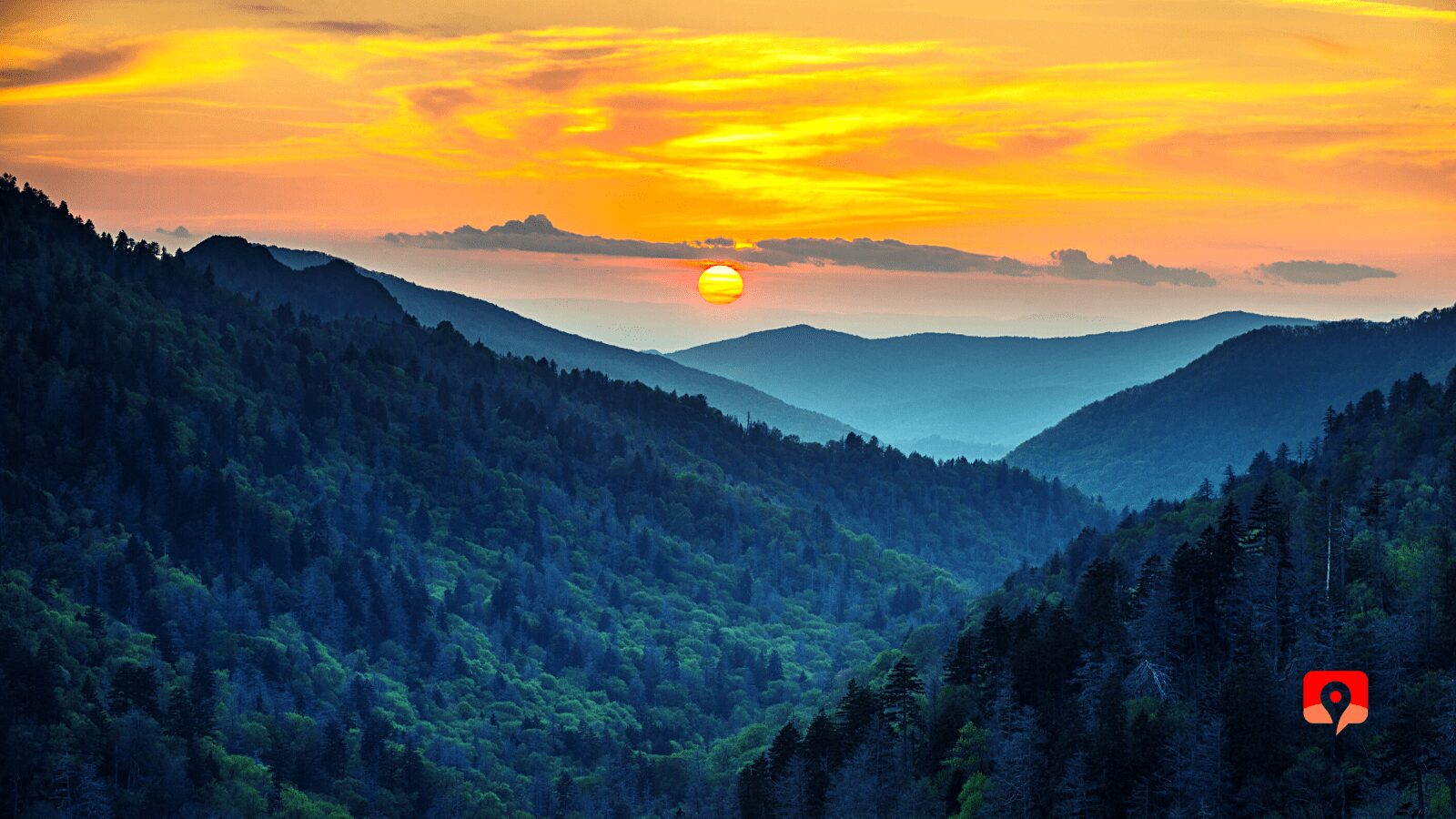
More than 12 million annual visitors make Great Smoky Mountains National Park the most visited of America’s National Parks. Spreading across the North Carolina-Tennessee state line, Great Smoky Mountains National Park offers hikers, wildlife lovers, photographers, waterfall chasers and campers a 522,000-acre playground where they can reconnect with nature.
From the summit of Clingmans Dome – the park’s highest peak at 6,643 feet (2,025 meters) – the view can be incredible, revealing a range of ridges that stretch a hundred miles and encompassing the whole of the park. Nearby, the Appalachian Trail crosses at Newfound Gap and visitors gather to catch a glimpse of the sun rising over North Carolina, the sun setting over Tennessee, or the park’s namesake “smoke” – tendrils of fog and mist that rise from valleys and coves like the smoke from cookfires – appears in the morning and evenings.
While Great Smoky Mountains National Park is filled with hikes – more than 800 miles (1,287 kilometers) of hiking trails in total – some of the most beautiful parts are best experienced by car. Newfound Gap Road – connecting Cherokee, North Carolina, and Gatlinburg, Tennessee – winds its way to the highest elevations in the park, then makes its way down the other side, offering up stunning views at every turn (and more than a few overlooks where you can take in the ones that stir you the most). Cades Cove – a secluded valley in the southwestern corner of the park – makes an 11-mile (18-kilometer) loop past historic cabins, churches, cemeteries and homesteads. Wildlife – black bears, turkey, white tailed deer, elk – graze, laze and seem to pose for photos in the fields of Cades Cove, along the banks of the Oconaluftee River, and all along Newfound Gap Road.
How to Get Here Getting Around Entrance Fees Map Where to Stay When to Visit How Much Time Do You Need How to Avoid the Crowds Things to See and Do Best Hikes Where to See Wildlife Awesome Experiences Packing List Top Travel Tips
How To Get Here
Great Smoky Mountains National Park is located in western North Carolina and Eastern Tennessee, situated within a day’s drive of half of the U.S. population. US Highway 441, also known as Newfound Gap Road, bisects the park, running east-west, connecting Cherokee, North Carolina, with Gatlinburg, Tennessee, a drive of about 90 minutes.
The nearest airports to Great Smoky Mountains National Park are the Asheville Regional Airport (AVL) in Asheville, North Carolina, 1 hour and 15 minutes from the Oconaluftee Visitors Center, and McGhee Tyson Airport (TYS) just outside of Knoxville, Tennessee, just over an hour from the Sugarlands Visitors Center. The drive into Great Smoky Mountains National Park from Asheville and from McGhee Tyson is easy, with well-marked interstate or major state highways making up the bulk of the route. Major and regional airlines serve both airports, and both airports have car rentals available.

Clingmans Dome, Newfound Gap, Chimney Tops, and the Oconaluftee Visitors Center (in Cherokee, North Carolina) and the Sugarlands Visitors Center (in Gatlinburg, Tennessee) are located along Newfound Gap Road/US-441.
Getting to Cades Cove, the park’s most-visited section, is simple; follow TN 73 (Fighting Creek Gap Road/Little River Gorge Road/Laurel Creek Road) for 25 (scenic) miles (40 kilometers). Roaring Fork Motor Nature Trail, another popular driving loop studded with hiking trails and historic cabins, is just 3 miles (4.8 kilometers) from downtown Gatlinburg along Historic Nature Trail/Cherokee Orchard Road. Interstate 40 runs just north of Great Smoky Mountains National Park, and visitors to the Big Creek and Cataloochee Valley areas will find themselves on the Interstate to reach these remote sections of the park.
In the southeastern part of the park, the town of Bryson City, North Carolina, provides access to Deep Creek and Lakeview Drive areas of Great Smoky Mountains National Park. Bryson City sits just 14 miles (22.5 kilometers) from Cherokee and the Oconaluftee Visitors Center along NC 19, but is also accessible via NC 73/Great Smoky Mountain Expressway.
Getting Around
Most people tour Great Smoky Mountains National Park by car. There is no public transportation available in Great Smoky Mountains National Park, though some hiking outfitters offer shuttle services and prearranged trailhead pickup/drop off. Rental vehicles – Jeeps, UTVs, and other quirky rides – are available in Gatlinburg, Tennessee, and the nearby town of Pigeon Forge.
Campervans and RVs are popular in Great Smoky Mountains National Park, and with an abundance of campgrounds in the park and in nearby gateway towns, they’re growing in popularity. Be aware though that some tow-behind and fifth-wheel campers and long campervans might not fit on the winding roads of Cades Cove, Roaring Fork Motor Nature Trail, or even parts of Newfound Gap Road, so check your size and clearance against the park’s posted limits.
Entrance Fees
There are no National Park entrance fees for Great Smoky Mountains National Park, but the park has introduced mandatory parking tags. See the National Park Service website for further information on how to purchase these tags. Consider making a donation to Friends of the Smokies who preserve, protect and provide for needed projects.
The park is open daily, year-round, with some facilities closing for the slower, colder winter season.
Great Smoky Mountains National Park Map
Where to stay , in the park.
There is no shortage of where to stay when visiting Great Smoky Mountains National Park. The Park has more than 1,000 campsites that accommodate both tent campers and RVs. The LeConte Lodge is the only lodge or cabin in the park; it sits at the peak of Mount LeConte, and is accessible by hiking trail only. Getting a reservation for the LeConte Lodge can be difficult, but each spring a lottery opens and those lucky enough to get picked get reservations. That said, it’s possible to call the Lodge and find last-minute cancellations, but arranging for a 10-mile (16-kilometer) round-trip overnight hike and all the gear for a stay in a primitive cabin or bunkhouse is a tall order for many visitors.

Gateway Cities: Knoxville and Asheville
In the major gateway cities of Knoxville , TN, and Asheville , NC, a slate of well-known hotels and a number of inns, B&Bs, and vacation rentals provide accommodations for those who like to blend a little urban exploration to their trip to the wilds of a national park.

On the Tennessee side of the park there are plenty of campgrounds, RV parks, hotels, motels and vacation rentals to be had.
In Gatlinburg , the closest town to Great Smoky Mountains National Park, a mix of national chain hotels and mom-and-pop operations blend with the condos, rental cabins, and grand vacation homes to provide ample rooms. Pigeon Forge , just a few minutes west of Gatlinburg, has even more hotels on offer, including the DreamMore Resort, the hotel owned and operated by Dolly Parton as part of Dollywood , the amusement park she owns there; work is underway to add another hotel property of a similar size and scope, adding even more rooms to a robust roster.
In Townsend , Tennessee, a handful of hotels and campgrounds provide quick access to Cades Cove and give visitors a chance to stay out of the tourist bustle of Pigeon Forge and Gatlinburg; that does come at a cost, as Townsend lacks the restaurants, shops, distractions and amenities of those other towns.

North Carolina
In North Carolina, Cherokee , which, like Gatlinburg, abuts Great Smoky Mountains National Park, has a mix of small hotels, recognizable chain hotels, campgrounds and RV parks, and the Harrah’s Cherokee Casino. Easily the largest – and nicest – hotel in Cherokee, Harrah’s is expanding and more than doubling their room capacity, hoping to draw visitors to Great Smoky Mountains National Park and to its own casino and concert venue.
Just down the road in Bryson City, charming B&Bs and quaint inns add to a robust offering of campgrounds, RV parks, glamping sites, tiny home communities, and chain hotels. Further out, towns like Sylva and Dillsboro – which are only 25 minutes away from the Oconaluftee Visitors Center and from Bryson City’s Deep Creek access – offer mountain cabins, small hotels and motels, vacation rentals, and a few chain hotel options.

Like A Tour Guide In Your Car
When to visit.
The best time to visit Great Smoky Mountains National Park depends on you. Summer and Fall are the park’s high seasons. Summer sees visitors flocking to the Smoky Mountains to cool down with high-elevation hikes and days spent wading in streams or tubing in rivers, and to hike. In Fall the mountains turn into patchwork quilts of color as the leaves change, and this brings leaf peepers, artists, fall-lovers and Nationals Parks fans to the Smokies in droves.
Conversely, Winter and Spring see fewer visitors. During Winter, some facilities will be closed, but hikers will have trails to themselves and can experience the park in a way few visitors do. Spring begins to see visitors return, drawn by wildflowers, warming days and wildlife. In Cades Cove, wildlife photographers capture shot after shot of bears and their cubs, deer and their fawns, and Tom turkeys strutting their stuff.

Opening Hours and Seasons
Inclement weather – typically ice or snow or both – causes the temporary closure of some roads, like Newfound Gap Road, during winter. Cades Cove Loop Road is closed to all vehicles on Wednesdays from May through September to accommodate cyclists and pedestrians and their safe use of the scenic loop road.
Some roads within the park are subject to seasonal closures. Clingmans Dome Road and Roaring Fork Motor Nature Trail close to automobile traffic in late November and reopens in early April. Off-highway roads like Rich Mountain Road and Balsam Mountain Road (also called Heintooga Ridge Road) close seasonally. Rich Mountain Road typically closes from early November through the first week of April, and Balsam Mountain Road typically closes on November 1 and reopens by mid-May.
Only two of the front country campsites in Great Smoky Mountains National Park remain open year-round, the Cades Cove and Smokemont campgrounds. All others are open seasonally, typically from April through November (closing during winter months), though exact dates vary by campground.

Visitors Centers in the Great Smoky Mountains National Park are open daily except Christmas Day, when they close. Operating hours vary by visitors center, but a good rule of thumb is 9am-5pm, except in summer when they stay open until 7pm to accommodate late-day hikers and visitors.

How Much Time Do You Need to Visit the Great Smoky Mountains
Most visitors can experience Great Smoky Mountains National Park in three days, visiting pockets of the park like Clingmans Dome and Newfound Gap, Cades Cove, and the areas around Sugarlands and Oconaluftee Visitors Centers; getting in a couple of short hikes; and finding a waterfall or two where they can rest and recharge.
Four days gets you more time to explore in the park or the gateway towns, or allows you to visit Deep Creek or Cataloochee. Avid hikers, anglers and photographers will want to spend an extra day or two in Great Smoky Mountains National Park so they can squeeze in a couple of long hikes; stake out those sunrise, sunset, or perfect wildlife shots; and get in plenty of time on the water, reeling in trout.
And, of course, if you’re there to bag a few peaks, spend the night at LeConte Lodge, or log a few more miles on your trek to hiking all 800 miles (1,287 kilometers) of trail in Great Smoky Mountains National Park, you’re going to need more time.

How to Avoid the Crowds
The best places to see wildlife in Great Smoky Mountains National Park are Cades Cove, the Oconaluftee Visitors Center and Mountain Farm Museum, and Cataloochee. At Oconaluftee Visitors Center and Mountain Farm, a herd of elk come to graze in a field nearby and to wade the Oconaluftee River, they’re often joined by turkeys and sometimes white-tailed deer. Sightlines around the field are excellent, making for easy viewing (from a safe distance, of course) of whichever animal is in the field.
There’s also a herd of elk in Cataloochee, a secluded valley in the northern part of the park. Elk and deer graze in the fields here, and you may spot turkeys and black bears – sometimes with cubs – from time to time. In both Cataloochee and at Oconaluftee the highlight of elk watching is when young males practice sparring, clashing antlers and wheeling about as they learn to fight; and established bulls protect their harem of cows, swinging their huge antlers at challenging bulls and locking horns with them.
Cades Cove is, without a doubt, the most popular place for wildlife viewing and photography. Deer hug the tree line and make their way across fields; Tom turkeys fan their tails and display their showy best for nearby hens and rivals; and black bears forage for food, climb trees, and, if you’re lucky, lead their cubs from place to place. Be aware: Cades Cove Loop is a one-lane, one-way road, so when the wildlife watching is hot, traffic comes to a standstill.
Things to See and Do in Great Smoky Mountains National Park
Newfound Gap Road
Driving Newfound Gap Road is a highlight for many visitors to Great Smoky Mountains National Park. This 33-mile road connects the visitors centers in Cherokee, NC, and Gatlinburg, TN, and along the way passes a number of scenic overlooks and trailheads.
At Newfound Gap – the point where the road crosses the mountains and the North Carolina-Tennessee state lines – you’ll find an overlook with expansive views and the storied Appalachian Trail, which follows the park’s central ridgeline. You’ll also find Clingmans Dome Road, the 8-mile drive out to Clingmans Dome (a short hike up a steep paved trail is required to reach the summit), where the views are impressive. Descending into Tennessee you’ll find more of those views, but also more hikes, picnic areas, and spots to stop and take a stroll or a few pictures.
Cades Cove Loop
This 11-mile (17.8-kilometer) loop road in the southwestern corner of the park draws more than 2 million visitors every year. And for good reason. This bowl-shaped valley is ringed by high peaks – including Rocky Top, made famous in song – and was once home to a thriving community. Today a handful of historic cabins and homesites, and the Cove’s historic grist mill, are the only structures save the visitors center, campground store and stables.
In summer and fall, Cades Cove Loop gets crowded as higher visitor numbers and gorgeous fall color cause delays; you’ll often experience mini traffic jams in spring as wildlife watchers and photographers stop and look for a place to pull off when they spot a bear and her cubs, turkeys, or white-tailed deer. That said the road is a highlight in any season. The hike to Abrams Falls (at the midpoint of the drive) lures hikers and waterfalls lovers, and the historic churches, cabins and homesites call the curious.
It’s possible to cut off the loop by taking Sparks Lane or Hyatt Lane, unpaved cutoffs that allow you to shorten the loop – or lengthen it – but if you’re driving through Cades Cove looking for places to snap an awesome photo, the cutoffs offer up a number of angles on Cades Cove that other photographers forget about.
MOTOR VEHICLE-FREE DAYS
Cades Cove Loop Road is closed to all vehicles on Wednesdays from May through September to accommodate cyclists and pedestrians and their safe use of the scenic loop road.
Roaring Fork Motor Nature Trail
Roaring Fork Motor Nature Trail makes a 6-mile one-way loop through the mountains just outside of Gatlinburg, Tennessee. The hills here are steep, so waterfalls and cascades abound along the drive, from the hikeable Grotto Falls (where, if you time it right, you’ll see a pack train of llamas headed up to resupply the LeConte Lodge) and Rainbow Falls to the right-beside-the-road Place of A Thousand Drips.
Historic cabins and homesites are peppered throughout Roaring Fork, representing a wide range of building styles found in the Smokies from the time it was settled by Europeans to the early 20th century.
ROAD ACCESS
Trailers, RVs and buses are prohibited on some secondary roads in the park , including Roaring Fork Motor Nature Trail.

Foothills Parkway
The Foothills Parkway is only partially completed – there’s a 33.5-mile (54-kilometer) gap in the planned 72-mile (116-kilometer) scenic road – but three segments totalling 22.5 miles (36-kilometer) are open. Why the gap? One look at the topography here gives you the answer: road construction here is difficult, time consuming, and expensive, and this project is no exception.
That said, the southernmost section from Chilhowie to Wears Valley gives you awesome views of Great Smoky Mountains National Park to the east (just over those hills is Cades Cove) and the Cumberland Mountains to the west. And the short section connecting Cosby (north of Gatlinburg) to Interstate 40 is a welcome break from highway speeds when arriving in the region and a lovely transition out of the wilds of the park and back into “civilization.”
There are more than 800 miles (1,287 kilometers) of hiking trail in Great Smoky Mountains National Park and we encourage everyone to go out and find their personal favorite hikes, but here are a few of ours.
Clingmans Dome
A steep, paved trail leads from the parking area (which has spectacular views, especially at sunrise and sunset) to the summit, where an elevated observation platform puts you above the treetops for views that on clear days stretch for 100 miles. This is the highest peak in Great Smoky Mountains National Park, standing at 6,643 feet (2,025 meters), making it a bucket list hike (and one of the easiest peaks to bag) in the park.
Andrews Bald
Accessed from the Clingmans Dome parking area, this hike leads you along the ridgeline to one of the park’s mysterious balds – high altitude meadows – where flame azaleas and mountain laurel bloom in mid-summer.
Trillium Gap to Grotto Falls
A moderately-strenuous hike leads to the only waterfall in the park you can walk behind – hence the name Grotto Falls. Not only is this waterfall a lovely sight, but you can also see a rare sight: llamas. Specifically, a llama pack train that carries supplies to LeConte Lodge three times a week. They hit the trail early, so if you want to see them, plan to be at the trailhead by sunup on Mondays, Wednesdays and Fridays.
Abrams Falls
This hike in Cades Cove leads you to the 20’ Abrams Falls and is, for many hikers, their first “long” trek, clocking in at 5 miles (8 kilometers) round-trip. There are plenty of places to rest along the way and the payout at the end – Abrams Falls thundering over the edge and filling a wide plunge pool – is worth every step.
Quiet Walkways
Along Newfound Gap Road and on the way out to Cades Cove, Quiet Walkways provides short, easy-to-navigate trails a little ways into the woods away from the road. Here you’ll be surrounded by the sounds of nature, from creeks and rivers to small cascades and mini-waterfalls to birdsong and the croak of frogs, and get the chance to stretch your legs and introduce novice hikers to the terrain, sights and sounds here.
Mount LeConte via Alum Cave Bluffs Trail
A strenuous hike to the summit of Mount LeConte, this trail passes through a natural tunnel, beneath the impressive Alum Cave Bluffs, and along rocky, exposed sections before finally reaching the summit some 5 miles (8 kilometers) later. The LeConte Lodge is here – and they sell bag lunches to day-hikers – as is a network of trails that can connect you to the Appalachian Trail, to Roaring Fork Motor Nature Trail (via Trillium Gap/Grotto Falls), and a number of other trails.
The Appalachian Trail
The Appalachian Trail follows the crest of the Smokies for more than 70 miles (113 kilometers), and for many hikers and outdoor enthusiasts, dreams of hiking from Georgia to Maine have filled their heads for years. Now’s your chance to hike a bit of the AT. At Newfound Gap you can pick up the AT and hike south to reach Clingmans Dome or north to get to Charlies Bunion. The hike to Charlies Bunion is nearly 8 miles (13 kilometers) round-trip, but the length is the toughest part about this moderate trail. Views from Charlies Bunion are awe inspiring as the mountain slopes and winding valley below give you a big picture of the terrain and topography of Great Smoky Mountains National Park.
Deep Creek: Three Waterfalls Loop
In Bryson City, NC, the Deep Creek area offers tubing and gentle hikes that pass by a trio of waterfalls. Three Waterfalls Loop – a 2.4-mile (3.9-kilometer) hike – takes you past Juney Whank Falls, Tom’s Branch Falls, and Indian Creek Falls. Tom’s Branch tumbles 60 feet (18 meters) down the mountain to the creek below, and Indian Falls’ 25 feet (7.6 meters) cascade is camera worthy. Juney Whank Falls is the highest, dropping 90 feet (27 meters) in two tiers.
Laurel Falls
Perhaps the most popular waterfall trail in the park, a moderate 2.6-mile (4.2-kilometer) round-trip hike leads you to the 80-foot (24-meter) high Laurel Falls. The waterfall has an upper and a lower section, divided by a walkway which crosses the stream at the base of the upper falls. Just take care! The trail starts off paved, but it isn’t paved the full length of the trail, and is rough in areas with short, steep sections which can be slippery in wet weather.
Where to See Wildlife in Great Smoky Mountains National Park

Awesome Experiences in Great Smoky Mountains National Park
There’s plenty for families to do in Great Smoky Mountains National Park, from day hikes to days spent lazing in one of the creeks or rivers.
Tubing in Deep Creek is a rite of passage for many visitors to Great Smoky Mountains National Park. The relatively shallow and quite picturesque stream here has a few spots deep enough for swimming and just enough current to carry you and your tube downstream at a leisurely pace.
Wildlife Watching
Wildlife watching near Oconaluftee Visitors Center (where you’ll see elk galore) and along Cades Cove Loop (where you’ll see white-tailed deer, turkey, and, likely, black bears) are highlights for many. But you can also join Rangers and Volunteers for hikes focused on birds, nocturnal animals, and more.
Synchronous Fireflies
Elkmont is the home to a rare sight: a colony of synchronous fireflies. For a few weeks around late May to late June, they rise from the grass in a field near the campground to blink out their mating call message. But these aren’t just any fireflies. Synchronous fireflies blink in unison, often dividing up in several groups and blinking en masse, creating an eerie effect as sections of the field blink together.
SYNCHRONOUS FIREFLIES LOTTERY
A lottery determines who gets to view the synchronous fireflies that are usually on display for a few weeks around late May to late June. For more details, visit the NPS website .

Sunrise (or Sunset) at Clingmans Dome
Clingmans Dome is the highest peak in the park, standing more than 6,600 feet (2,012 meters) above sea level, and the shows put on by sunrise and sunset are nothing short of spectacular. If you’re pressed for time, there’s no need to hike to the summit – the views from the parking are awesome. You’ll find photographers setting up tripods and camping chairs an hour before sunrise or sunset, hoping to capture the perfect image.
Biking Cades Cove
Cades Cove Loop – the wildlife hotspot – is closed to automobile traffic on Wednesdays from May to September , but it’s open for bicyclists and joggers, walkers and hikers, meaning you can enjoy a car-free ride through 11 miles (17.7 kilometers) of quiet wonder. You can rent bikes from the Campground Store, but they tend to sell out fast, so if you want to guarantee you have a ride, BYOB – Bring Your Own Bike – and bring plenty of water (and a few snacks, maybe lunch) and make a day of it.
Llama Pack Train
Trillium Gap Trail leads from Roaring Fork Motor Nature Trail to the summit of Mount LeConte, and three mornings a week, a llama pack train makes the trek to resupply the LeConte Lodge and pack out the trash and dirty laundry. If you arrive at the trailhead or at Grotto Falls early enough (typically you’ll need to arrive pre-dawn as they get on the trail around first light), you’ll see the llamas getting a last-minute treat and headed up the mountain. They make for an unusual picture as the sight of a dozen llamas walking behind Grotto Falls is an unexpected sight in the Smoky Mountains.
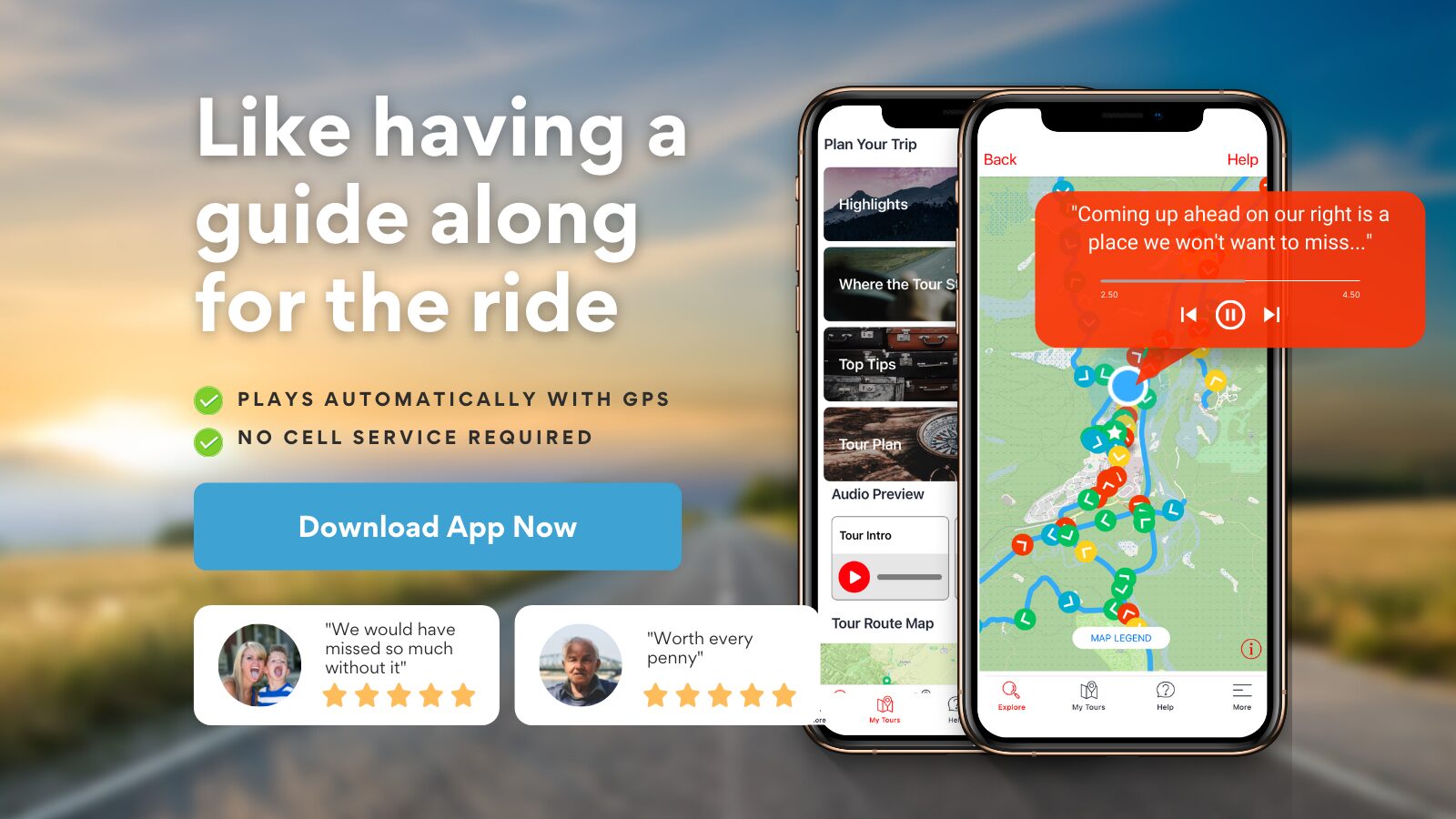
Great Smoky Mountains National Park Packing List
Clothing Layers: With the varied elevation in Great Smoky Mountains National Park, you’ll find a temperature variance of 15˚ or more between towns like Gatlinburg or Cherokee and Newfound Gap. Layers make this a lot easier to deal with, so in summer be sure to pack you flannel, your hoodie, or your puffy jacket or coat along with your regular wear. Packing a raincoat is a good idea even if there’s no rain in the forecast; storms can pop up suddenly in summer and you don’t want to be caught with nothing to protect you from a deluge.
Footwear: You’ll need sturdy hiking boots or trail runners as well as a pair of sneakers or something else that’s comfortable to wear when you’re not on the trail. Be sure your shoes have plenty of traction and that they give you the foot and ankle support you need for rocky, root-strewn paths, for stream crossings, and for even the smoothest of trails.
Daypack: A daypack is a great idea for hikers, and daypacks that store your camera gear are a must for photographers. Look for something large enough to hold your water, some snacks, a map, an extra batter for your phone, and your camera or other gear you’d like to carry.
Headlamp: If you’re camping or doing any sort of nighttime exploration, you’ll need a headlamp, preferably one with a red lens cover (the red light is easier on your eyes in the dark). Be sure it’s charged or has fresh batteries.
Hiking Poles: It’s never a bad idea to have a pair of hiking poles, a hiking staff, or a staff/monopod (which lets you mount your camera for better stability while shooting) if you plan on doing a bit of hiking. The added stability, the extra confidence, and the assistance they provide you when fording streams or making your way downhill makes them worth the investment.
Sun Protection: It’s sunny in the Smokies, so you’ll want something to keep you from getting burned. Long sleeved, moisture-wicking shirts with built-in UPF are a good idea, as are wide-brimmed hats (we love our Tilley hat), but at the minimum you’ll want to bring some sunscreen and sunglasses.
Food and Drink: Any time you’re on the trail, bring a snack. And then bring an extra snack. The same goes for water. Bring a bit more than you think you’ll need (you never know if you’ll encounter someone who needs a little help or if you or your hiking companions will need an extra boost). We like to use refillable water bottles – Nalgene, Klean Kanteen, and the like – as well as hydration bladders built into backpacks. For snacks, we avoid things that will melt or get crushed in a bag or pocket – so no candy bars or crackers or crunchy granola bars for us – but we do like easy-to-eat snacks like energy bars, dried fruit, nuts, trail mix, even hard cheese and cured meats like pepperoni or chorizo.
Plastic Bag: We always carry a plastic bag when we hike. Why? So we can do our part and help keep the trails and waterways clean. If you see some trash along the way, pick it up, drop it in the bag. When you get back to the trailhead, drop your bag in the recycling or trash bin. Voila, you’ve helped keep the parks beautiful for everyone who visits.

Top Tips for Visiting Great Smoky Mountains National Park
- Arrive Early: You’ll want to get an early start if you want to beat the crowds, ideally be on the road before 9am.
- BYO Food & Beverages: Bring plenty of both. You’re in the mountains so good to keep hydrated and as there are limited services for food inside the park, bring lunch and snacks.
- Gas Up: Fill the tank before you go, there are no services within the park.
- Entrance Fees: There are no National Park entrance fees for Great Smoky Mountains National Park, but the park has introduced mandatory parking tags. See nps.gov further information on how to purchase these tags. Consider making a donation to Friends of the Smokies who preserve, protect and provide for needed projects.
- Bike Cades Cove: Cades Cove is closed to car traffic on "vehicle-free Wednesdays" from May - Sept when an easy bicycle ride or walking becomes the transportation method of choice.
- Firefly Season: A lottery determines who gets to view the synchronous fireflies that are usually on display for a few weeks around late May – late June. Visit the nps.gov website for more details.
- Bring Earbuds: You can still enjoy listening to the tour if you are biking or walking Cades Cove Loop, just use one bud so you remain conscious of your surrounds.
- RVs and Trailers: Trailers, RVs, and buses are prohibited on some secondary roads in the park, including Roaring Fork Motor Nature Trail. Visit nps.gov for more details.
- Pack a DC Charger: Using location services will drain your battery faster so bring a 12V DC charger for keeping your phone charged throughout the day.
Acadia Alberta Arches ARIZONA AUSTRALIA Badlands Banff Big Island Big Sur Black Hills Blue Ridge Parkway British Columbia Bryce Canyon CALIFORNIA CANADA Canadian Rockies Canyonlands Capitol Reef Catskills COLORADO Copper Country Trail Death Valley FLORIDA Florida Keys Glacier Going To the Sun Road Grand Canyon Grand Canyon West Grand Teton HAWAII Hikes Honolulu Hoover Dam Hwy 61 Hwy 101 Icefields Parkway Itineraries Jasper Joshua Tree Kancamagus Kauai Keweenaw Key West Kings Canyon Lake Louise Lake Superior North Shore Lake Tahoe Las Vegas Lodging M22 MAINE Maui Mesa Verde Miami MICHIGAN MINNESOTA Mount Rushmore NEVADA New Hampshire NEW YORK Niagara Falls NORTH CAROLINA Oahu OBX Olympic Ontario OREGON Oregon Coast Outer Banks Red Rock Canyon Road to Hana Rocky Mountain Sedona Sequoia Shenandoah Sleeping Bear Dunes Smokies SOUTH DAKOTA Tech Tips TENNESSEE Travel Tips Trip Planners UTAH Videos VIRGINIA Waikiki WASHINGTON Wildlife WYOMING Yellowstone Yoho Yosemite Zion
- {{ index + 1 }} {{ track.track_title }} {{ track.track_artist }} {{ track.album_title }} {{ track.length }}
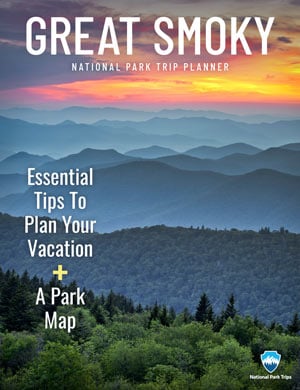
Free Great Smoky Mountains Trip Planner
Download our free stunning Great Smoky Trip Planner filled with an inspiring itinerary, gorgeous photographs, a park map and everything you need to plan your dream vacation in Great Smoky Mountains National Park. Sign up for this digital insider’s guide today to get tips on how to get there, what to do and where to stay.
Get even more trip planning information in our email newsletters and by selecting to receive email and/or mail from our vacation partners.
Tennessee Stops on the Way
- Sevierville, Tennessee - A place you know that still surprises you with every visit. Theme parks and national parks. Big adventure, hidden gems, great deals, great times and plenty of elbow room. Even an authentic downtown.
- Pigeon Forge, Tennessee - This little mountain town in the foothills of the Smoky Mountains is a year-round family-friendly vacation destination. Pigeon Forge is filled with fun activities from thrilling attractions and award-winning shows to countless options for dining, shopping and lodging.
- Bush Visitor Center - Nestled in the foothills of the Great Smoky Mountains in Chestnut Hill, Tennessee, the visitor center is where you can learn all about Bush company history, beans and how they’ve spent the last 110 years spreading that good bean word.
- Polk County, Tennessee - Known as Ocoee Country after its namesake river and lake, you’ll find exhilarating whitewater rafting, fishing and snorkeling out on the water. Then relax in our small towns with old-fashioned Southern hospitality.
- Athens, Tennessee - Cradled in the foothills of the Great Smoky Mountains, Athens offers a southern hospitality spurring the reputation of the “The Friendly City.”
- Jefferson County, Tennessee - With stunning views of the Smoky Mountains, Douglas and Cherokee Lakes, you won’t want to miss some of the favorite lakeside cabins, B&B’s and RV resorts that are perfect for a summer lake vacation.
- Natural Retreats Smoky Mountains - Why stay in a hotel when you could stay in a fully equipped and comfortable vacation home close to all of the adventure? Choose from rentals in Sevierville, Pigeon Forge, Wears Valley or Gatlinburg, Tennessee for your perfect Smoky Mountain getaway.
North Carolina Stops on the Way
Scenic drives, an historic train, Native American culture and rafting, kayaking and tubing await.
- Cherokee County TDA - The perfect Smoky Mountain getaway starts in the heart of the Appalachian Mountains. Stroll through charming small towns and locally owned businesses, explore miles of mountain biking and hiking trails or simply unwind and take in the views of North Carolina's picturesque landscapes.
- Franklin & Nantahla North Carolina - The foothills of the Great Smokies offer a never-ending supply of things to do. Whether you're looking to get away to the pristine waters of Nantahala Lake, or for a small town adventure with world class entertainment, you're sure to find something for the whole family.
- McDowell County Tourism Authority - From breathtaking waterfalls to world-famous trout and cute mountain towns, you won’t want to miss the communities of Little Switzerland, Old Fort and Marion, North Carolina along the Blue Ridge Parkway.
Virginia Stops on the Way
Views that go on for miles, historic sites and scenic drives through Shenandoah National Park and the Blue Ridge Parkway.
- Delaware North at Shenandoah - Stay at a lodge, cabin or campground, and dine at Skyland and Big Meadows inside Shenandoah National Park in Virginia.
Tour Guides and Tour Apps
- GuideAlong Great Smoky Mountains Driving Tour App - Listen to an expert tour guide automatically play interesting and entertaining commentary as you go.
Privacy | Terms of Service
About National Park Trips Media
Great Smoky Mountains Guide: Planning Your Trip
Tony Barber / Getty Images
The first thing you should know about the Great Smoky Mountains is that it is the nation’s busiest national park with more than 11 million visitors every year. It covers 800 square miles of mountainous terrain that spans across eastern Tennessee and crosses the border into North Carolina. The Smoky Mountains, as locals lovingly call them, are home to some of the world's most stunning deciduous forests along with historic churches, cabins, and barns from bygone Appalachian communities.
With 150 official trails throughout the park and countless miles of backcountry , it's surprising that relatively few visitors actually get out of their cars and hike, opting to enjoy the views from inside their vehicles. But this designated international biosphere reserve is home to an incomparable variety of plants and animals and is worth more than just passing through.
Planning Your Trip
- Best Time to Visit: The park is open year-round and each season offers something different to enjoy. The snowfall in winter adds a beautiful serenity to the landscape, but the blooming flowers in spring or river activities in the summer make for excellent hikes. Most people, however, would probably agree that autumn is the best time of year to visit, when the maples, oaks, and hickories are bursting with fall foliage colors (the leaves usually reach peak color in October). The busiest times of the year are July, August, and October when the main roads often get backed up. Summer crowds usually arrive by midday, while October crowds tend to gather in the late afternoon and evening.
- Getting Around: With over 800 square miles to cover, a car is necessary to move around and see the highlights. But visitors who just stay in the car are also missing out on huge swaths of the park only accessible by foot. Other options for getting around the park include biking, horseback riding, or an open-air hayride that takes visitors around Cades Cove Loop.
- Travel Tip: The most popular routes to take through the park are U.S. Route 441, also called Newfound Gap Road, and Cades Cove Loop. If you're visiting during high season or want an off-the-beaten-path experience, try seeking out lesser-used routes, such as Greenbrier Road, Fontana Road, or Foothills Parkway.
Things to Do
Take the time to park your car and fully experience the Smoky Mountains. The views from the road are otherworldly, but you're only experiencing a small fraction of all that the national park has to offer by staying in your vehicle. Several of the most scenic destinations can only be reached by hiking, but visitors can also kayak, go horseback riding, try white water rafting, visit historic sites, look out for wildlife, and so much more. Of course, pitching a tent and sleeping in the park is the best way to experience it.
- Cades Cove is a scenic valley tracing its history to 1850 when settlers moved onto the Cherokee Indian land. Structures and official sites have been marked, creating an outdoor historic gallery. Don’t miss the small cabin known as John Oliver Place or the Primitive Baptist Church which was shut down during the Civil War.
- Visit the highest point of Tennessee, Clingmans Dome , at 6,643 feet. The peak is accessible by driving Clingmans Dome Road from Newfound Gap, and then walking a half-mile trail. A paved trail then leads to a 54-foot observation tower.
- Mount LeConte is one of the most popular mountains to hike at Great Smoky Mountains. At 6,593 feet, it is the third highest peak in the national park.
- The Great Smoky Mountains are home to some of the most stunning waterfalls in the nation. Some can’t miss falls include Abrams Falls , Grotto Falls , Hen Wallow Falls , Juney Whank Falls , and Laurel Falls .
- If you want to introduce children to hiking without exhausting them, the Porters Creek Trail and Kephart Prong Trail are both designated kid-friendly by the National Park Service.
What to Eat and Drink
If you forgot to pack something to eat, there are some limited options inside the park. The only place to buy hot food in the park is at the Cades Cove Campground Store, which has a snack bar of breakfast items, hot sandwiches, pizza, and the like. Apart from that, the only other options are a couple of convenience stores selling packaged items and vending machines.
For restaurant dining after a day of trekking, you'll have to exit the park and enter one of the neighboring communities, such as Gatlinburg or Pigeon Forge in Tennessee or Bryson City on the North Carolina side.
Where to Stay
The most popular option for staying in the Smoky Mountains is, of course, camping. There are several "frontcountry" campgrounds scattered throughout the park where you can park your car or RV next to your reserved site and set up camp. For the more intrepid—and experienced—campers who want a bit more adventure, backcountry camping is also an option. You need a reservation for a campsite or a permit to backcountry camp, and spots fill up quickly.
The only non-camping option inside the park is LeConte Lodge , which is located at the summit of Mount LeConte and only accessible by foot. The various trails to reach it range from five to eight miles, so don't pack heavy if you plan to spend the night. The lodge closes when the weather makes it too difficult to reach, but it's usually open from mid-March to mid-November.
For a hotel that you don't have to hike to, visitors have plenty of options in the neighboring towns, such as Pigeon Forge or Gatlinburg. For a rustic experience without having to actually pitch your own tent, consider renting a cabin in the area.
Getting There
There's no official entrance and visitors have several options for getting into the park on both the Tennessee side and the North Carolina side. The nearest big cities to the Smoky Mountains are Nashville, Tennessee; Charlotte, North Carolina; and Atlanta, Georgia, all of which are just two to three hours away by car.
Another popular way to get there is by taking a road trip along the scenic Blue Ridge Parkway, which begins near Shenandoah National Park in Virginia and continues south all the way to the doorstep of the Great Smoky Mountains.
Money Saving Tips
One of the reasons that the Great Smoky Mountains is America's most visited national park: it's free of charge. Unless you reserve a campsite or buy food in the park, you can spend the entire day enjoying the majesty of the Smoky Mountains without spending a dime. It's an unforgettable vacation for travelers on a budget or families with kids.
- Camping is the most affordable accommodation —assuming you already have the gear. Campsites range from $17 to $25 per night depending on the campground and can accommodate up to six people.
- Campsites don't fluctuate in price based on the season but they do get booked up quickly, especially in the high season of summer and October.
- The rates at motels and bed and breakfasts in the neighboring communities do vary depending on the season. Consider traveling in the offseason if you want to spend the night at nearby lodging.
- There are no gas stations inside the national park. Be sure to fill up the tank before you enter or you may end up paying for it.
The Top 15 Things to Do in Gatlinburg, Tennessee
10 Best Things to Do in the Southeast This Fall
Tips for Avoiding the Summer Crowds at National Parks
Great Summer Family Trips in the USA
The Best Road Trips in the US
Grand Canyon National Park: The Complete Guide
Great Smoky Mountains National Park: The Complete Guide
Hanging Rock State Park: The Complete Guide
The 10 Best Tennessee RV Parks
The Best Places to See Fall Colors in the USA
Henry Horton State Park: The Complete Guide
The Best Small Town in Every State
Cuyahoga Valley National Park: The Complete Guide
Top 10 National Parks to Visit During Spring
The 10 Best Hikes in Smoky Mountains National Park
Bryce Canyon National Park: The Complete Guide
OUTSIDE FESTIVAL JUNE 1-2
Don't miss Thundercat + Fleet Foxes, adventure films, experiences, and more!
GET TICKETS
Powered by Outside
5 Best Road Trips
Getting there can be as fun as the park itself. Enjoy these scenic drives and road trips to Great Smoky Mountains National Park and other spots in Tennessee and North Carolina.
>", "path": "https://www.mysmokymountainpark.com/road-trips/road-trip-itineraries/atlanta-to-great-smoky-mountains-road-trip/", "listing_type": "category", "location": "list", "title": "Atlanta to Great Smoky Mountains Loop Road Trip"}}'> Atlanta to Great Smoky Mountains Loop Road Trip
>", "path": "https://www.mysmokymountainpark.com/road-trips/road-trip-itineraries/blue-ridge-parkway-road-trip/", "listing_type": "category", "location": "list", "title": "blue ridge parkway road trip from shenandoah to great smoky"}}'> blue ridge parkway road trip from shenandoah to great smoky, >", "path": "https://www.mysmokymountainpark.com/road-trips/road-trip-itineraries/charlotte-asheville-smoky-mountains-road-trip/", "listing_type": "category", "location": "list", "title": "charlotte to asheville to great smoky mountains loop road trip"}}'> charlotte to asheville to great smoky mountains loop road trip, >", "path": "https://www.mysmokymountainpark.com/road-trips/road-trip-itineraries/chicago-great-smoky-mountains-road-trip/", "listing_type": "category", "location": "list", "title": "chicago to nashville and great smoky mountains road trip"}}'> chicago to nashville and great smoky mountains road trip, >", "path": "https://www.mysmokymountainpark.com/road-trips/road-trip-itineraries/nashville-knoxville-smoky-road-trip/", "listing_type": "category", "location": "list", "title": "nashville to knoxville to great smoky mountains road trip"}}'> nashville to knoxville to great smoky mountains road trip.

How to Plan a Perfect Weekend in the Great Smoky Mountains

America’s most popular national park is calling! Here’s everything you need to know to plan a perfect weekend getaway to the Great Smoky Mountains.
Heard about the Great Smoky Mountains, but don’t know much about them? You’re not alone. Maybe the Great Smoky Mountains National Park is on your bucket list because it’s the most visited national park in the U.S.
But that’s all you know.
Maybe your friends traveled there on family vacations as kids. Their stories make you imagine twisty roads through a forest full of waterfalls. Curls of smoke twisting up out of cabin chimneys. Days spent in the woods climbing fallen trees like balance beams and trying to catch slippery salamanders in the creek. Evenings around a fire listening to the twang of a bango, the sweet stickiness of burnt marshmallow clinging to your lip.
It’s no wonder you’re yearning to go.
But you don’t have any of the details you need to actually plan a trip. Don’t worry boo, I’ve got you covered. Here’s what you need to know to start planning a perfect weekend in the Great Smoky Mountains:
What state are the Great Smoky Mountains in?
The Great Smoky Mountains are a part of the Appalachian Mountain Range, a long mountain chain that runs from southeastern Canada all the way down to central Alabama. The Smoky Mountain section of the range is located in Tennessee and North Carolina, which is where the national park is too.
Where is the Great Smoky Mountains National Park?
The national park straddles the Tennessee-North Carolina border. The northern entrance of the national park is in Gatlinburg, Tennessee and the southern entrance is in Cherokee, North Carolina.
How big is the Great Smoky Mountains National Park?
The Great Smoky Mountain National Park protects an endless forest teeming with wildlife in an area of Tennessee and North Carolina that’s more than 800 square miles – larger than New York and Los Angeles combined.
What are the Great Smoky Mountains famous for?
The Smokies get their name for the layer of foggy air that settles into the dips along the mountain ridge but disappears by mid-morning. Besides the “smoke,” the Great Smoky Mountains is known for its old-growth forests filled with streams, waterfalls and wildlife.
It’s the number one spot in the world to see salamanders – there are more than 30 species hiding under rocks and leaves near creeks – and you’re practically guaranteed to see a black bear. You can also spot elk, wild turkeys, deer and coyotes.
The park is ideal if you like road trips, too. There are 384 miles of road to travel in the park and three auto tours (driving loops) that wind through especially scenic portions. Throughout the park are historic buildings like a one-room schoolhouse, a mill, log homes and historic churches that give you an idea of what mountain life was like in the early 1800s.
What are the best things to do in the Great Smoky Mountains?
There are lots of fun things to do in the Great Smoky Mountains , whether you’re the outdoorsy type or not. Here are a few:
- Horseback ride through the woods
- Hike to waterfalls
- Sip moonshine
- Spot black bears
- Kick back in a cozy cabin
What is the best time to visit the Smoky Mountains?
The best time to explore the Great Smoky Mountains is summer and fall. But that’s also when it’s most crowded. The park service says that you can expect loads of people from July 1 through August 15 and on weekends in October (for the beautiful fall colors).
From May through October, you can expect daytime temperatures to be at least in the 70’s or higher. In July and August, daytime temperatures can reach the 90’s. It’s common to get afternoon rain showers in the spring and summer, while fall is the driest time of the year.
I recommend a June or September trip. It’ll still be warm enough to dip your toes into the mountain streams and you might avoid some of the peak crowds.
Also, if you’re planning on going in June, look into seeing the synchronous fireflies . During a two-week mating season, the fireflies here all light up at the same time and put on an amazing show.
This is one of few places on earth to see synchronized fireflies! But it’s super popular, so you’ll have to apply to be in the lottery and see if you win a spot.
How long does it take to drive through the Smoky Mountains?
The drive from the northern Tennessee side of Great Smoky Mountains National Park to the southern North Carolina side takes about an hour.
The Newfound Gap Road (U.S. 441) is a straight shot through the park from Gatlinburg, Tennessee, to Cherokee, North Carolina. To avoid park traffic, hit the road before 10 a.m. or after 5 p.m.
How many days do you need in the Smoky Mountains?
A three-day weekend is ideal for exploring the Great Smoky Mountains National Park. You might want an extra day though if you plan on going to one of the area’s amusement parks like Dollywood in nearby Pigeon Forge, Tennessee.
Where should you stay when visiting the Great Smoky Mountains?
The Great Smoky Mountains National Park has a lodge, but you can only get to it by hiking in. But there are a TON of cabins to rent in the area. Check out cabins near Gatlinburg . You can also look for cabins in and around Townsend, which is along the northern part of the national park.
Where do you fly into to go to the Smoky Mountains?
McGee Tyson Airport is the nearest major airport to the Smoky Mountains. It’s located just outside of Knoxville, Tennessee. It’s about an hour drive from the airport to the northern entrance of the Great Smoky Mountains National Park.
How do you plan a perfect weekend trip to the Great Smoky Mountains?
Start with the basics of trip planning:
- When do you want to go?
- How long can you stay?
- What do you want to do on vacation?
- Where should you stay?
Find accommodations that are convenient to the activities you want to do in the Great Smoky Mountains – so you don’t waste a lot of time getting from Point A to Point B. This is especially important if you’re on a short vacation.
Also, research the activities that interest you most and organize a loose agenda that help you make the most of your days.
The best option?
Grab my Great Smoky Mountains Weekend Itinerary Guide . It’s your perfect weekend, already mapped out. You don’t have to spend hours pouring over websites, with 30 tabs open stressing about what you should do and how to put it all together.
Get the guide and start getting excited about your trip! You’ll have all the information you need to have an amazing vacation: What to see and do, where to eat and stay, and how to get off the beaten path.
All you have to do is book your accommodations (I recommend some options in the guide), and anything else I tell you to book ahead of time, and you’re good to go. Follow the daily itineraries step-by-step or use them as a backbone for creating your own must-see plan.
It’s going to be a dream weekend.
Happy travels,

P.S. If you’ve got national parks on the brain, be sure to grab my FREE National Park Fun Guide . It’s a printable list with links of the best adventures to have in the Great Smoky Mountains, Grand Canyon and Zion National Parks.
P.P.S. Have you thought about hitting up some of the incredible national parks in the Southwest? If so, you should definitely check out my Epic Las Vegas to Zion National Park Road Trip write-up.
DO YOU WANT TO REMEMBER THIS? SAVE HOW TO PLAN A PERFECT WEEKEND IN THE GREAT SMOKY MOUNTAINS TO YOUR FAVORITE PINTEREST BOARD!

Similar Posts

10 Incredible Things to Do in the Great Smoky Mountains
Discover the best things to do in the Great Smoky Mountains, including a few off-the-beaten path gems! Looking for…

7 Best U.S. Cities to Visit During Christmas
Have you lost that holiday feeling? I totally get it. The holidays can be a hassle when you’re already feeling frazzled and your to-do list starts getting longer. (Hello: gift shopping, holiday cards, school parties, work potlucks and decorating the house). If you find yourself sympathizing more with the Grinch this year, I know exactly what you need: a big, fat dose of Christmas magic. It won’t be enough to watch the Hallmark movies this year – you need to feel like you’re in one!

5 Offbeat U.S. Weekend Getaways for Couples
Book one of these U.S. weekend getaways for couples and reconnect on a quick, but amazing vacay! You need…

8 Awesome Things to Do in Columbus on a Girls Trip
Discover all the reasons why a girls trip to Columbus should be on your calendar! If you’re in serious…

WHY ST. CROIX IS THE BEST TROPICAL PLACE IN THE U.S. TO VISIT THIS YEAR
Dreaming of a tropical getaway? Discover what makes St. Croix in the U.S. Virgin Islands such an awesome beach…

How to Have More Fun: A Year’s Worth of Offbeat U.S. Adventures
Check out these U.S. Travel Destinations for how to have more fun by doing off-the-beaten-path activities. A beach and…
Memorial Day Sale! Get 50% off my itinerary travel guides with coupon code: SUMMERVIBES

10 Day Blue Ridge Parkway and Great Smoky Mountains Road Trip Itinerary
Blue ridge parkway and great smoky mountains fall road trip itinerary: charlotte north carolina to knoxville tennessee.
This epic Fall Colors road trip travels through the Blue Ridge Parkway and the Great Smoky Mountains in 10 days. The Blue Ridge Parkway is a 469-mile scenic drive through the Appalachian Mountains from Shenandoah National Park to the Great Smoky Mountains National Park. The parkway passes through North Carolina and Virginia and is America’s longest scenic highway. On the drive, you will find 200+ scenic overlooks, 26 tunnels, waterfalls, swimming holes, hollows, gorges, forests, hiking trails, Spring flowers, Fall colors, Bluegrass music, swinging bridges, scenic train rides, historic farms, country stores, farmer’s markets, the famous Biltmore Estate, Andy Griffith’s Mayberry, Cherokee history, wineries, apple picking, trout fishing, elk, black bears, and wild turkeys. The Great Smoky Mountains have equally gorgeous scenic drives, mountain overlooks, and waterfalls plus black bears, alpine coasters, bluegrass music, moonshine, and attractions galore.
You are excited to begin your road trip through the Blue Ridge Parkway and the Great Smoky Mountains and want to know the best time of year to visit, where to stay, must-see attractions, and where to eat while there. Researching the best things to do on a road trip through the Blue Ridge Parkway and the Great Smoky Mountains while working full time is overwhelming and you don’t have hours to spend on the internet. Save time and plan an unforgettable trip full of top activities with this ultimate Blue Ridge Parkway and the Great Smoky Mountains road trip itinerary.

The Ultimate Blue Ridge Parkway and Great Smoky Mountains Road Trip Planner
When is the best time to visit the blue ridge parkway and great smoky mountains.
Summer and Fall are high seasons on the Blue Ridge Parkway. Summer temperatures average high 60s at high elevations and mid-80s at low elevations. Rain is common in August. Fall is cold at higher elevations and a winter coat is needed. Leaves begin to change as early as mid-September and the changing colors can often be seen at higher elevations in early October. The best time to visit the Blue Ridge Parkway to experience the gorgeous Fall colors is in mid to late October. Many businesses close for the tourist season in November. Others decorate for the Christmas season, consider Boone, Ashville, the Biltmore Estate, or Gatlinburg. Snowshoeing, sledding, and cross-country skiing are popular winter activities. Severe winter weather including ice and snow often closes roads in the winter. Spring temperature is cold in high-elevation mountains and trails are muddy. Wildflowers begin to bloom in April. Many businesses do not reopen until May.
What is the Best Way to Travel the Blue Ridge Parkway and the Great Smoky Mountains?
The Blue Ridge Parkway is located in North Carolina; the Great Smoky Mountains begin at the southern end of the Blueridge Parkway. You will need your own transportation to follow this 10-day Blue Ridge Parkway and Great Smoky Mountain road trip itinerary. The itinerary begins in Charlotte North Carolina, travels over the state line into Virginia, returns to North Carolina, and travels down the western edge of the state before crossing into the Great Smoky Mountains in eastern Tennessee. Save precious PTO by flying from your home to Charlotte North Carolina and renting a car to continue the journey. Return the rental car and book your return flight from Knoxville Tennessee.

How Long Do You Need to See the Blue Ridge Parkway and the Great Smoky Mountains?
7 days: Begin and end in Charlotte North Carolina. Travel the Blue Ridge Parkway, visit the Biltmore Estate, and explore the Mountain Waters Scenic Byway.
10 days: Begin in Charlotte North Carolina. Travel the Blue Ridge Parkway, visit the Biltmore Estate, and explore the Mountain Waters Scenic Byway. Head into the Great Smoky Mountains. Visit Gatlinburg and Pigeon Forge, and spend a day at Dollywood. End in Knoxville Tennessee. Follow the day-by-day itinerary below.
14 days: Begin in Charlotte North Carolina, and add a day exploring the city. Travel the Blue Ridge Parkway and add a day in the Blowing Rock area. Visit the Biltmore Estate and explore the Mountain Waters Scenic Byway. Add a day in Cherokee. Head into the Great Smoky Mountains. Spend one day in Gatlinburg, one day in Pigeon Forge, and one day at Dollywood. End in Knoxville Tennessee.
How Expensive is a Road Trip Through the Blue Ridge Parkway and the Great Smoky Mountains?
According to Budget Your Trip , the average daily cost for a trip to, Charlotte North Carolina is $153, Boone North Carolina is $138, and Gatlinburg Tennessee is $152. Using these figures, budget $1400 for a typical 10-day vacation on the Blue Ridge Parkway and the Great Smoky Mountains.

What do you pack for a Blue Ridge Parkway and the Great Smoky Mountains road trip?
Three weather appropriate outfits for hiking, including a day pack, hiking boots, sunscreen, bug spray, and a water bottle. Four semi-casual outfits to explore Charlotte, Gatlinburg, and Knoxville. One nice outfit for the day spent at the Biltmore Estate. One casual outfit for air travel. Rain is common, bring a rain jacket and umbrella.
Blue Ridge Parkway and Great Smoky Mountains Road Trip Highlights
Charlotte North Carolina | Mount Airy | Blue Ridge Parkway | Blue Ridge Music Center | Blowing Rock | Lincove Viaduct | Chimney Rock | Biltmore Estate | Mountain Waters Scenic Byway | Great Smoky Mountains | Clingman’s Dome | Gatlinburg Tennessee | Pigeon Forge Tennessee| Dollywood | Knoxville Tennessee

Day by Day Guide for a Road Trip to the Blue Ridge Parkway and the Great Smoky Mountains
ROUTE AT A GLANCE: Charlotte North Carolina – Blue Ridge Parkway – Great Smoky Mountains – Gatlinburg Tennessee – Knoxville Tennessee
MILES: 750 approximate miles
HOW MANY DAYS: 10
Day One Arrive in Charlotte North Carolina
Pick up a rental car, stop for water and snacks, and check into the hotel. Spend the remainder of the day checking out Charlotte North Carolina. Charlotte, the Queen City, is the 15th largest city in the United States. It is best known for the NASCAR Hall of Fame, Billy Graham Library, and Southern hospitality. Charlotte also has old plantations, civil rights history, wall poems, murals, kayaking, paddle boarding, zip-lining, whitewater rafting, bike trails, hiking paths, craft breweries, and Carolina BBQ. If you love adventure, don’t miss the U.S. National Whitewater Center. I had an amazing dinner at Mert’s Heart and Soul and have no hesitation in recommending it.
Overnight Charlotte North Carolina.
Read Top Things to Do in Charlotte North Carolina
Day Two Charlotte to Mount Airy
8 am Grab a coffee and explore Charlotte’s street art and wall poems
10:30 Tour the Historic Latta Plantation
Noon Grab lunch 7th Street Public Market
1:30 pm Drive 1.5 hours to Mount Airy and explore Andy Griffith’s Mayberry
Have dinner on Main Street before checking into your hotel for the night
Overnight in Mount Airy North Carolina

Day Three Blue Ridge Parkway and Blowing Rock
7:30 am Drive 45 minutes to Mabry Mill for breakfast pancakes and photograph the mill
10 am Begin driving the Blue Ridge Parkway. Stop by to browse the Poor Farmer’s Market and Mayberry Trading Post. Climb the lookout at Groundhog Mountain for panoramic views and check out Puckett Cabin
Noon Arrive at the Blue Ridge Music Center. Have a picnic lunch and listen to the Mid-Day Mountain Music jam
1 pm Continue exploring the Blue Ridge Parkway stopping at the many overlooks, do not miss Brinegar Cabin
4 pm Hike the 1-mile loop trail The Cascades Trail at E.B. Jeffress Park, or continue on to Blowing Rock
Blowing Rock has many attractions. Check out the Green Mountain Waterfall, watch the Horn in the West Outdoor Drama, or take a ride on the Tweetsie Railroad.
Overnight in Blowing Rock North Carolina.
Read Top Things to Do on the Blue Ridge Parkway (including mile marker guide)
Day Four Blue Ridge Parkway and Chimney Rock State Park
7:30 am Continue exploring the Blue Ridge Parkway stopping at the many overlooks. Stop at the Yonahlossee Overlook to view the famous S Curve. Stop at the Linn Cove Visitor Center and walk under the bridge for a better view of the Lin Cove Viaduct. Choose to walk across the Mile High Swinging Bridge or hike to Linville Falls and Duggers Creek Falls. Purchase fresh produce from the Orchard at Alta Pass.
Noon Drive into Little Switzerland for lunch and browse the shops
1:30 pm Return to the Blue Ridge Parkway and enjoy the remaining overlooks on the way to Chimney Rock
4 pm Arrive at Chimney Rock State Park. Ride the elevator to the top and enjoy the view, do not miss the waterfall before leaving.
Overnight in Asheville North Carolina

Day Five the Biltmore Estate & Gardens
9 am Arrive at the Biltmore Estate and Gardens. Explore the gardens while waiting for your timed entry for the house tour. Have lunch in the Village and stop at the Antler Hill Village & Winery and enjoy a tasting. Purchase ticket here
1 pm Drive 45 minutes to Dupont State Park and take the waterfall hike to three falls
5 pm Drive to Brevard and wander downtown Broad Street stopping for dinner.
Overnight Brevard North Carolina

Day Six Chasing Waterfalls to Gatlinburg Tennessee
7 am Begin the day early and see as many waterfalls as possible. Map your route to include: Looking Glass Falls, Sliding Rock, Whitewater Falls, Silver Run Falls, Bridal Veil Falls, and Dry Falls. The Mountain Waters Scenic Byway is gorgeous with many amazing stops to enjoy the mountain views along the way. Plan your time well and do not miss Dry Falls.
5 pm Head into the Great Smoky Mountains and stop at Clingman’s Dome to enjoy the view. Drive another hour to Gatlinburg Tennessee. Check into your hotel and walk to Blake Shelton’s Ole Red for dinner and music.
Overnight Gatlinburg Tennessee
Read Chasing Waterfalls in North Carolina
Have an extra day? Consider spending the night in Cherokee and watching the Unto These Hills Outdoor Drama. The next day ride on the Great Smoky Mountains Railroad, visit the Oconaluftee Indian Village, or hike to Soco Falls or Mingo Falls before continuing to Clingman’s Dome and Gatlinburg Tennessee.
Day Seven the Roaring Fork Motor Nature Trail and Dollywood
7:30 am Get up early and beat the crowd to the Roaring Fork Motor Nature Trail scenic drive. This is a one-way drive with several historic stops that ends with a Place of a Thousand Drips waterfall. Be on the lookout for bears. I was lucky enough to stop and watch a cub searching for berries for a very long time!
10 am Spend the day at Dollywood in Pigeon Forge. Do not miss seeing Dolly’s Costumes at the Chasing Rainbows Museum. Or, spend the day exploring all the attractions in Pigeon Forge
6 pm Spend the evening at Dolly’s Stampede dinner show.
Day Eight Waterfalls and Gatlinburg Tennessee
8 am Hike to Cataract Falls (1.1 mile RT, allow 1.5 hours) and/or Laurel Falls (2.4 mile RT, 2.5 allow hours)
Noon Spend the day in Gatlinburg. Check out the view from the Gatlinburg Scenic Overlook, play a game of Hillbilly Golf, ride the SkyLift, visit the Hollywood Star Cars Museum, and sample lots of moonshine.
5 pm Head back to Pigeon Forge for the Hatfield and McCoy dinner show
Read Top Things to Do in the Great Smoky Mountains

Day Nine Knoxville Tennessee
8 am Begin the day with sweet potato pancakes at the Pancake Pantry
9:30 am Drive 1.5 hours to Knoxville Tennessee. Knoxville is located in the foothills of the Great Smoky Mountains next to the Tennessee River. It is referred to as the City of Artists and is the birthplace of Mountain Dew. Knoxville is full of brick buildings, street art, country music, Civil War history, outdoor adventures, scenic drives, barbecues, craft beer, and sweet tea. Spend the day exploring the city or just relax and people-watch in Market Square.
Overnight Knoxville Tennessee
Read Top Things to Do in Knoxville Tennessee

Day Ten Depart Knoxville Tennessee
If you have more time to extend your Blue Ridge Parkway and Great Smoky Mountains road trip, add a few days in Chattanooga or Nashville Tennessee.
Be sure to check the Blue Ridge Parkway and Tennessee Office of Tourism for upcoming festivals, special events, and what’s happening during your stay.
Bookmark and Pin Blue Ridge Parkway and the Great Smoky Mountains Travel Guide

Plan Your Road Trip to Blue Ridge Parkway and the Great Smoky Mountains
Blue ridge parkway travel guide.
Pick up a Tennessee Travel Guide from Amazon.com to browse on the plane.
Book Your Accommodation in Blue Ridge Parkway Now
Spending the night? Search Booking.com and VRBO in one place to find the perfect property!
Great Smoky Mountains Attractions and Day Tours
The best attractions sell out! Don’t chance it, get your tickets now and relax when you arrive.
Travel Essentials
Need a universal travel adaptor, power bank charger, or packing cubes? Save time at my Amazon shop and have travel essentials delivered to your home.
Have a great vacation!
I live in VA and explore that end of the Blue Ridge Parkway a bunch. It’s so lovely! I need to delve more into the parts in NC, and I also need to go to The Biltmore. I haven’t been yet!
Yes you do! I think you will love it.
Such beautiful colours. It certainly looks like you picked the right time of year to visit. The Biltmore Estate and Gardens look stunning also.
This is a great itinerary with so many scenic places already listed down. Totally enjoyed reading it. If I am heading there, I would go for the 14-day one for sure.
Great choice!
A road trip that I want to do, but we will start from Knoxville since we will drive from Texas. So far we’ve seen Blueridge Parkway from the highway only and it was in the beginning of January. My husband will be thrilled with Andy Griffith’s Mayberry while my son will say, “Are we going to chase waterfalls and covered bridges again?” lol.
I love that, kids are so funny
A lovely itinerary that I would blindly follow just in case we happen to be there sometime. The scenic drives, the waterfalls and the abundant nature is fascinating. Biltmore Estate is truly grand and a great location to visit.
I agree, I want to return to Biltmore at Christmas and see the decorations. They were beginning to decorate the beginning of October!
That looks like a really scenic region. The waterfalls are esepcially enticing. It seems like an amazing holiday. I like that covered bridge also, so quaint. Maybe, one day, I shall visit this part of the world too.
It is an amazing Fall destination, I hope you are able to visit soon
Perfect content for our upcoming trip to Gatlinburg. I’ve pinned this because I want to remember everything you’ve mentioned, especially the scenic drives and scenic overlooks (and waterfalls!).
I love this itinerary. The nature is so wild and the colors in autumn must be a bliss. I am in love with old palaces, so I am wondering whether staying at Biltmore Estate Asheville North Carolina is possible for visitors or not?
Not in the estate but there is accommodations on the grounds that look beautiful. I stayed in town.
I have family all over eastern TN and we’re looking to do a big road trip there this summer! this guide is a big help…though now maybe we should do it in fall. this foliage is gorgeous!
Gorgeous indeed!!
Comments are closed.
American beauties: the best towns in the Smoky Mountains

Sep 27, 2021 • 6 min read
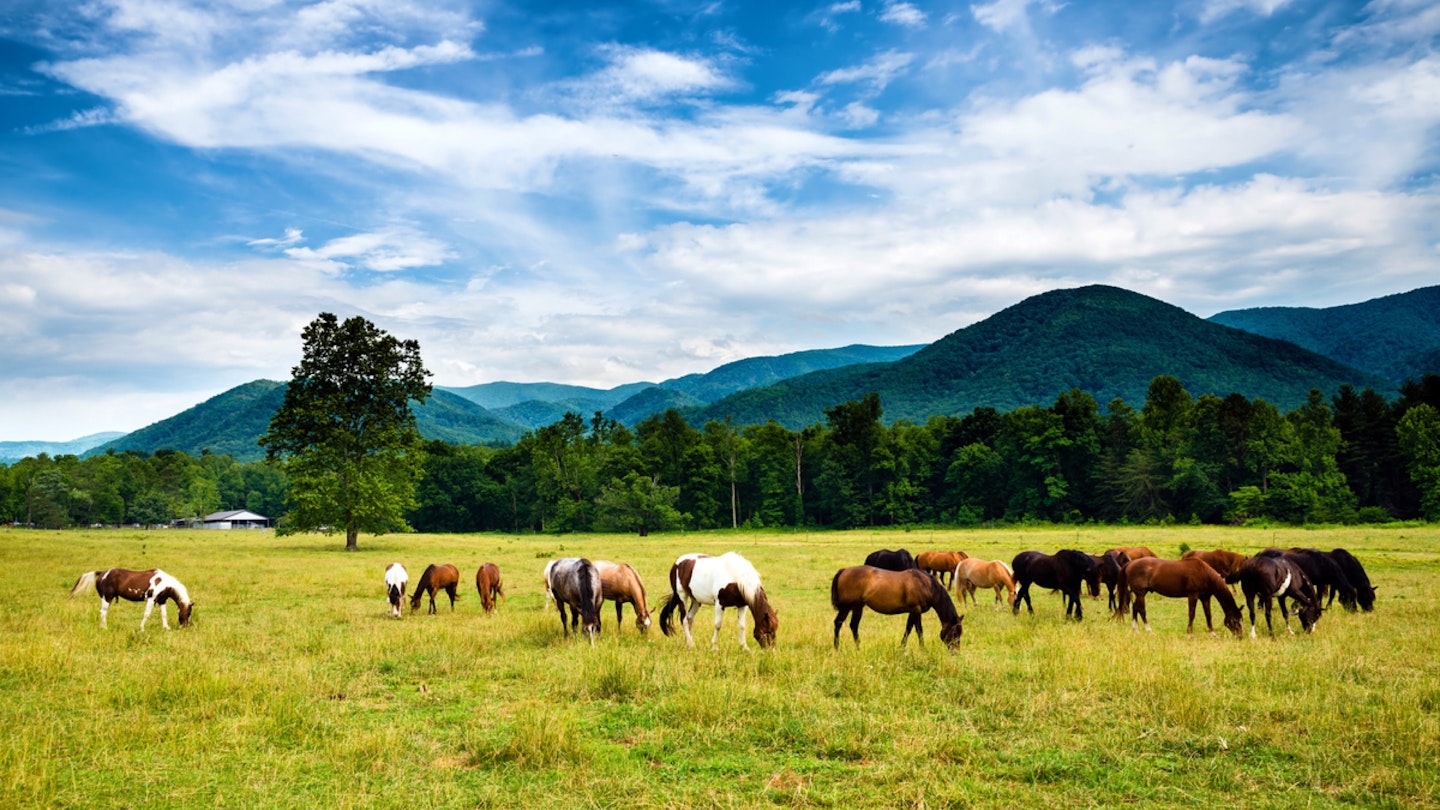
Cades Cove, Great Smoky Mountains National Park © Rob Hainer / Shutterstock
Everyone calls Gatlinburg the Gateway of the Smokies. It’s true that this mountain town in East Tennessee is one of the best places to get to Great Smoky Mountains National Park from the Tennessee side (there is Smokies access on the North Carolina side, too). But it is also true that the larger Tennessee Smokies gateway is really a collection of small towns, each with its own vibe and connectedness to mountain culture.
Whether you want family-friendly amusement parks, restaurants, and basic hikes or long for romantic, quiet getaways, there’s a Smoky Mountain town for you. Whether it's a quick break or a leisurely road trip, use this guide to help you find the right fit for your perfect Smoky Mountains vacation.

The best-known of the Smokies approach towns, Gatlinburg is a classic mountain resort town. From here you can take a chair lift high from Anakeesta and look down on the lush, green winding roads, dotted with cabins and hotels with their own worthy views. Gatlinburg has a long tradition of artists who practice mountain crafts. You can take classes, be it ceramics or watercolor painting, from them and buy their wares along the secluded 8-mile Great Smoky Arts and Crafts Loop. Learn to ski at Ober Gatlinburg, the only ski hill in the state of Tennessee. In the summer, opt for a guided hike on the ski hill instead. Cap off the mountain exertion by eating and drinking along the Parkway, Gatlinburg’s main drag. Ole Red features a Southern menu, adult beverages, and live country music.
Gatlinburg is a year-round destination , with a temperate climate for sunny hikes in the summer and the opportunity to ski in the winter. It is a local tradition to eat as many pancakes as possible, and there are many (many) pancake houses in which to do it, including Little House of Pancakes, with its classic diner vibe and reasonable prices. Whole Earth Grocery makes sandwiches to-go if you prefer to take a picnic up in the mountains.

Pigeon Forge
The streets of Pigeon Forge are lined with neon. Everywhere you look there’s something to see, and often it is something you might not expect, such as King Kong climbing a replica of the Empire State Building at the Hollywood Wax Museum or a replica of the Titanic. Pigeon Forge is home to Ferris wheels that light up the night sky and go-kart tracks that allow kids and their parents to race through the afternoons. There’s even an indoor snow-sledding hill.
But Pigeon Forge’s best-loved attraction is Dollywood , the resort developed by megastar Dolly Parton, who was raised in these mountains. Dollywood includes a water park, amusement park with live music, a resort hotel and spa, and lots of nods to what makes this part of Tennessee great: Smoky Mountain scenery, mountain crafts, and country music. Once you’ve ridden all the amusement park rides your heart can take, take your pick of the quirky dining options in Pigeon Forge. At Frizzle Chicken Farmhouse Café, animatronic chickens with names like HENifer Aniston and Elvis PresLAY sing to you while you eat. The Listening Room Café offers dinner while human singer-songwriters perform stripped-down versions of their songs.

Sevierville
Best known as being Dolly Parton’s hometown, this small hamlet is 20 miles north of Gatlinburg and the national park, just north of bustling Pigeon Forge. The quaint downtown square is dotted with shops and cafes, as well as a bronze sculpture of Dolly herself with a guitar on her lap and one of her favorite signature butterflies nearby. Seasons 101 , inside the Central Hotel, is one of the area’s upscale restaurants and is a change of pace when you’ve had enough of pancake houses and fudge shops.
A stay at the Central Hotel – which in a previous iteration was where President Roosevelt stayed when he visited the Great Smoky Mountains National Park – is a more upscale experience than many of the family-friendly spots in Pigeon Forge and Gatlinburg. It’s a good option for those who want to be away from the neon lights and noise of the Parkway but still want full-service accommodations. Sevierville is also home to several lower-priced hotels and cabins in the woods, the latter offering a greater degree of privacy.

Townsend likes to bill itself as “the peaceful side of the Smokies.” Not that all of the Great Smoky Mountains and its surrounding mountain towns aren’t peaceful, but Townsend doesn’t have the neon signs and King Kong climbing a tower. In summer, come here for outdoor pursuits. Smoky Mountain River Rat Tubing and Whitewater Rafting will guide you down the Little River, where you’ll feel the cool splash of the water and immerse yourself in mountain views.
Stroll down the Townsend Riverwalk Trail, which is a paved route with five miles of walking and biking trails on each side of Highway 321. The bike- and dog-friendly route is dotted with wildflowers in spring. The Great Smoky Mountains Heritage Center tells the tales of the communities that live in these mountains, including the Native Americans who helped preserve this wilderness.
Once known as the “moonshine capital of the world” and historically a Cherokee hunting ground, Cosby’s remote location surrounded by mountains and creeks makes it the ideal place to camp under the stars. Cosby Campground – one of the Great Smoky Mountains National Park’s eight campgrounds – is located here. Make a reservation for one of these managed campsites, which include tent and RV sites, plus some ADA-accessible sites. Each site has parking, a fire ring, and a picnic table, and plenty of trees that help shield you from other nearby campsites.
In general Cosby is considered a quieter campground than Elkmont , which is closer to Gatlinburg. Outside the park, there are private glamping outfitters and a cozy Airstream village , where you get the feel of camping without having to sacrifice home comforts. The trailhead for the Maddron Bald and Albright Grove Loop hike, a strenuous 6.7-mile path, is just off of Highway 321 in Cosby. The old-growth forest provides lots of shade in summer, and it’s easy to do a small section of the trail if you don't feel up to the full loop.

Home to Maryville College, Maryville is essentially a suburb of Knoxville, but its serene, bucolic setting makes it a natural waypoint en route to the Smokies. Book a night or two at the RT Lodge , and stroll among its lovely four-season gardens, sit in front of the fire, or borrow one of the lodge’s free bicycles and ride through town and the campus. Chef Trevor Stockton makes meals with local ingredients at RT Lodge. For more casual eats and drinks, stop at the family- and pet-friendly Tri-Hop Brewery or grab a spicy sandwich or empanada from Aroma Cafe Cuban Food before heading back to the lodge for the night. Maryville is also home to the Sam Houston Historic Schoolhouse .
You may also like: First-timer's guide to Great Smoky Mountains National Park Gatlinburg in the fall: revel in the colors of the Smoky Mountains The best day trips from Asheville
Explore related stories

May 31, 2024 • 11 min read
Explore the best of the Outer Banks - North Carolina's natural barrier islands - with this guide.

May 15, 2024 • 7 min read

May 7, 2024 • 7 min read

Apr 19, 2024 • 10 min read
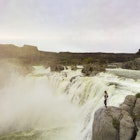
Apr 18, 2024 • 7 min read

Apr 14, 2024 • 8 min read

Mar 22, 2024 • 9 min read

Mar 20, 2024 • 8 min read

Mar 15, 2024 • 10 min read
Hop Aboard the Great Smoky Mountains Railroad
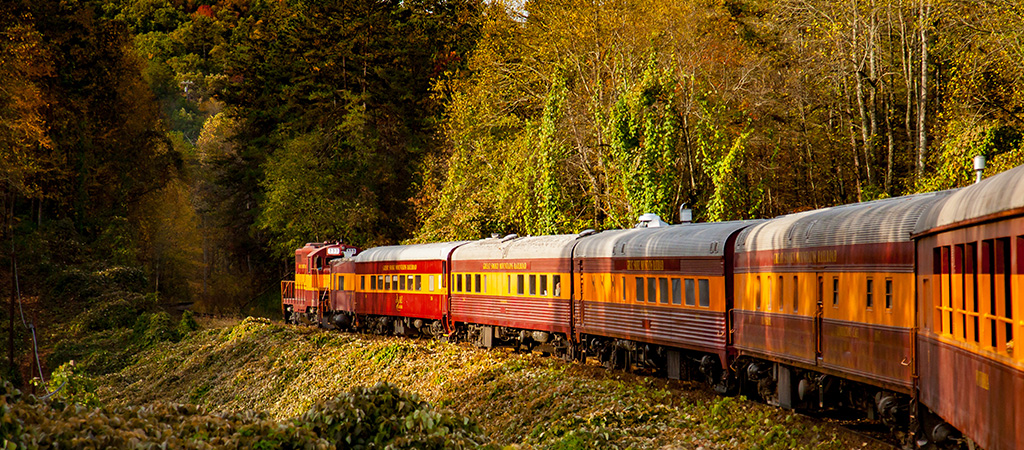
Itching to get out of your Pigeon Forge cabin and see the Great Smoky Mountain scenery up close…while riding first class with a scrumptious meal, sipping wine or moonshine, or feeling the wind in your hair? Hop aboard the Great Smoky Mountains Railroad that features scenic tours, dining options, exclusive experiences, seasonal trains, and complimentary entry into the Smoky Mountain Trains Museum!
The Great Smoky Mountains Railroad
Dipped in Appalachian history, the Great Smoky Mountains Railroad offers a unique train ride experience for all ages. Take a little drive from your Pigeon Forge cabin in Tennessee to the Bryson City Depot in North Carolina. And depart on a beautiful train adventure with breathtaking vistas boasting water scenes, foraging wildlife, and rolling hills.
Choose a classic ride by steam in an updated historic train (engine built in 1942) or a modern excursion on one of 5 diesel trains. Opt for first class that features a private attendant and a tasty meal, crown or coach indoor seating, or premium or regular open-air seats on the gondola. You can even book a private caboose party or join the conductor for a locomotive cab ride!
Scenic Tours
See the Smokies by railroad on scenic tours that provide incredible Smoky Mountain backdrops along the journey to stunning stops. And if you’d like a side of history with your train ride, opt for the narration car that features Great American Rails-N-Tales. Harken as Horace Kephart (a 19 th -century poet and writer in the Smokies) spins tales over the car-wide sound system — it’s a fun and educational addition to your Great Smoky Mountains Railroad excursion.
Tuckasegee River Excursion | 4 hours | 32 miles round trip Venture East through the Cowee tunnel to Dillsboro where you can explore a mountain town with country chic shops and restaurants before returning to the city.
Nantahala Gorge Excursion | 4 ½ hours | 44 miles round trip Head West along the Nantahala and Little Tennessee Rivers, eventually crossing an adventurous bridge, to the Nantahala Gorge to play and visit the Nantahala Outdoor Center (NOC).
Dining Options + Exclusive Experiences
What’s a train ride excursion without a little something to eat? Refuel with first-class options (most popular) like Cajun-seasoned pulled pork, pot roast, or baked cod with mashed red skin potatoes, a carrot soufflé, and rice pilaf. You’ll also find vegetarian options and other dishes for the kiddos. Go for a picnic-style lunch with a Choo Choo Chew boxed lunch with a barbecue sandwich, hot dogs, or a superfood salad wrap. Or opt for snacks and light fare choices you can purchase on the train for a little pick-me-up.
Interested in something extra special with your meal? The Smoky Mountains Railroad offers exclusive experiences and sips for train passengers.
Exclusive Wining & Dining Options
- BBQ & Brews — Offered on all adult and family-friendly cars, knock back local brews with fresh barbecue as you head for the sunset at the Fontana Trestle.
- Carolina Shine — Available on the first-class moonshine car, enjoy Smoky Mountain moonshine samples with a meal and take home a Mason jar souvenir!
- Uncorked — Open to first-class cars, elevate your scenic train ride with fine wine from the South.
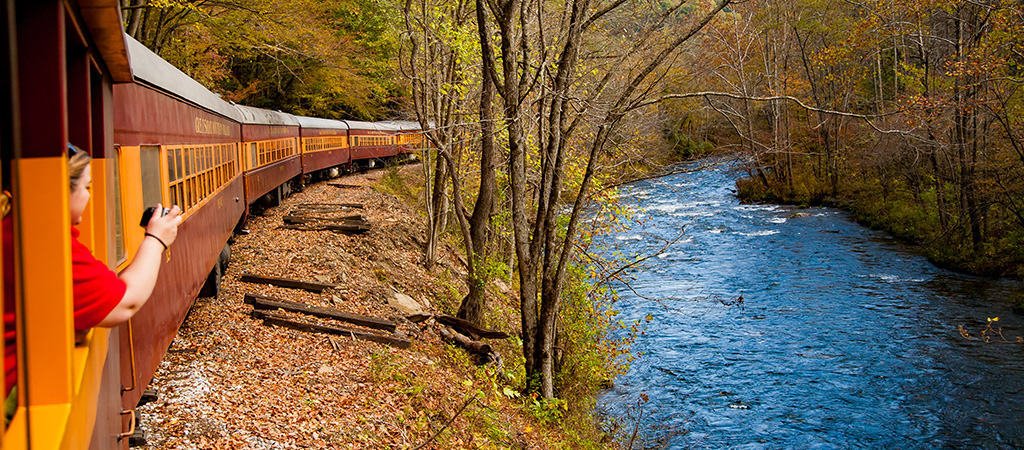
Seasonal Trains
When the holidays roll around, board seasonal trains that feature traditional on the Great Smoky Mountains Railroad.
Bunny Hopper Express | Easter Weekend Join adorable train-hopping bunnies and pass a free bag of activities to the kiddos on the Nantahala Gorge scenic tour where you’ll stop for classic Easter fun that includes an egg hunt, crafts, and a springtime treat.
Freedom Train | July 4 Celebrate our nation’s independence with a barbecue meal and Uncle Sam as you embark on a journey to the beautiful Fontana Trestle before returning to the city for a dazzling fireworks display!
Pumpkin Patch Express | October PEANUTS characters, like Snoopy and Charlie Brown, make their appearance aboard this festive train that takes you to the Pumpkin Patch where you can participate in fall traditions, like pumpkin picking and trick-or-treating.
The Polar Express | November & December On your Christmas vacation , let the holiday magic (and hot cocoa) whisk you away to the North Pole where Santa and his elves are readying for the holidays, singing carols all the way home.

The Details
Tickets Secure your railroad seats by booking your train tickets ahead of time online or over the phone. Up-to-date pricing varies by package, season, and seats and can be found on their website.
Hours Open year-round! Check the Smoky Mountains Railroad train schedule for more information.
Location Bryson City Depot 45 Mitchell Street Bryson City, NC 28713
Contact 800.872.4681
Model Train Museum + Gift Shop
All excursion tickets receive complimentary entry into the Smoky Mountain Trains Museum , which is a great addition to your scenic train ride. Steps away from the historic Bryson City Depot, this museum features one of the largest private collections of Lionel trains in the country. Plus, it houses a massive (24’ by 46’) and detailed display with running model trains throughout the Appalachian Mountains. From the miniature buildings to the quaint topiaries, it’s quite a mesmerizing sight!
Before heading back to enjoy your Smoky Mountain cabin , be sure to stop by the Great Smoky Mountains Railroad Gift Shop for souvenirs. Grab a few tees, hats, toys, magnets, keychains, tumblers, mugs, books, and much more!
Choo Choo! All Aboard the Great Smoky Mountains Railroad for stunning scenery, tasty meals, wine and shine, plus seasonal experiences — with loved ones.
Previous Post

Moonshine in the Smokies
New cabins for social distancing.
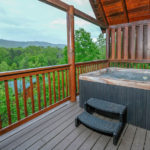
QUICK LINKS
- 1-2 Bedroom Cabins
- 3-5 Bedroom Cabins
- Large Group Cabins
- Pet Friendly Cabins
- Cabins with Pools / Pool Access
- Cabins with Mountain View
- Cabin Rentals with Hot Tubs
- Search All Cabins
- Lost and Found
- About Pigeon Forge (86)
- Activities in Pigeon Forge (216)
- Advice (79)
- Attractions in Pigeon Forge (177)
- Cabin Rentals (82)
- Events in Pigeon Forge (151)
- General Info (71)
- Restaurants in Pigeon Forge (58)
- Seasons and Holidays in Pigeon Forge (114)
- Shopping in Pigeon Forge (17)
2824 Willa View Drive, Pigeon Forge, TN 37865 1-866-513-7885, 865-429-5199
- Skip to global NPS navigation
- Skip to this park navigation
- Skip to the main content
- Skip to this park information section
- Skip to the footer section

Exiting nps.gov
Alerts in effect.
Last updated: May 30, 2024
Park footer
Contact info, mailing address:.
107 Park Headquarters Road Gatlinburg, TN 37738
(865)436-1200
Stay Connected
Your browser is not supported for this experience. We recommend using Chrome, Firefox, Edge, or Safari.
Explore the Official
Vacation guide, subscribe to win a, dream vacation, download the, gatlinburg app.
NC's 1st marijuana dispensary will open on 4/20 in Cherokee: What to know

While other states have moved to legalize the drug, cannabis has remained illegal in North Carolina. Yet, the sale of medical marijuana might soon begin in a part of the state that is also a sovereign nation — the Eastern Band of Cherokee Indians' Qualla Boundary.
The EBCI is planning to officially launch the Great Smoky Cannabis Co. dispensary, managed by Qualla Enterprises, on April 20 . It will be the first marijuana dispensary to open in North Carolina after the EBCI approved the sale of medical marijuana in 2021.
But this isn't a free-for-all, open-to-the public dispensary. Before you take the trip out to the Qualla Boundary in the Great Smoky Mountains — not to be confused with Great Smoky Mountains National Park — here's what you need to know.
Who will be able to purchase cannabis?
On March 25, The Great Smoky Cannabis Co. announced that the dispensary would only be open for the sale of medical marijuana on April 20.
Only those with an EBCI medical cannabis patient card or an out-of-state approved medical marijuana card will be eligible to purchase at the dispensary when it opens, according to a March 25 press release from the dispensary.
Where is the dispensary?
Located on the Qualla Boundary, Cherokee is a sovereign nation that has its own elections, laws, government and institutions that are self-governed and autonomous.
The Eastern Band of Cherokee Indians are one of three federally recognized sovereign nations that were once part of the larger Cherokee Tribe prior to the Trail of Tears forced removal from their land in Western North Carolina, according to the ECBI website. The other two, Cherokee Nation and the United Kituwah Band, are located in Oklahoma.
Cherokee is not to be confused with Cherokee County, North Carolina, of which parts of the Qualla Boundary are located.
Great Smoky Cannabis Co. is located at 91 Bingo Loop Road in Cherokee.
The dispensary opens at 10 a.m. April 20, and features over 10,000 square feet of retail space, three drive-through windows and a glass shop.
How much will you be able to buy?
Great Smoky Mountain Cannabis recently announced that the sale of medical marijuana will have some purchase limits.
Customers can only buy up to 1 ounce of dry cannabis flower at the dispensary per day, according to a post on the Great Smoky Mountain Cannabis Instagram . The monthly limit is 6 ounces.
As for concentrated THC products, they limit the purchase of 2,500 milligrams of concentrated THC per day. The monthly limit is 10,000 milligrams.
Why not recreational?
The dispensary is on the land of the Eastern Band of Cherokee Indians, where medical marijuana was legalized in 2021.
A September referendum on recreational marijuana indicated support for the recreational sale of the drug, but the ECBI Tribal Council has yet to pass a resolution officially allowing the recreational sale and use of marijuana.
Another Tribal Council work session on a recreational marijuana resolution is planned for 9 a.m. April 18, Tribal Council Chairman Mike Parker announced during the April 4 Tribal Council meeting.
What about legalization in North Carolina?
The possession, sale and distribution of marijuana is currently illegal under current North Carolina general statutes.
However, some low-THC products have been legalized under a 2021 state law. The law allows the sale of products with no more than 0.3% of delta-9, allowing the sale of cannabinoids like THCa and CBD.
District Attorney Ashley Hornsby Welch said that she fully intends to "enforce state laws," even as the dispensary opens. Welch is the chief criminal prosecutor in Prosecutorial District 43, which includes Cherokee, Clay, Graham, Haywood, Jackson, Macon and Swain counties.
"The mission, duty and privilege of the 43rd Prosecutorial District is to enforce state laws. We do not pick certain laws to enforce and ignore others," Welch said in a April 3 statement regarding the dispensary.
The Great Smoky Cannabis website also comes with a disclaimer: "Upon leaving North Carolina's Qualla boundary, individuals are subject to state laws, including those regarding cannabis. We recommend that individuals familiarize themselves with their relevant state laws and regulations governing cannabis activities outside of the Qualla boundary."
The opening of the dispensary has also drawn the ire of Republican Rep. Chuck Edwards — who is running for reelection — and the state's two senators, Thom Tillis and Ted Budd. Edwards introduced the Stop Pot Act in September, which would penalize states and tribes with legalized marijuana, taking 10% of their federal highway funds.
The act failed to advance past a Sept. 5 referral to a subcommittee under the Transportation and Infrastructure Committee, the Citizen Times reported March 20.
The act has received a critical response from Democratic State Rep. Caleb Rudow — who is running for congress — and EBCI Chief Michell Hicks, who advocated against Edwards' efforts citing the medicinal qualities of marijuana and tribal sovereignty, the Citizen Times previously reported .
Which states have legalized cannabis?
After Ohio legalized the drug in late 2023, nearly half of the United States has now legalized the drug, as reported by USA TODAY. North Carolina is not one of them.
Here's a list of states that have legalized recreational cannabis and when it was made official:
- Minnesota: 2023
- Delaware: 2023
- Rhode Island: 2022
- Maryland: 2022
- Missouri: 2022
- Connecticut: 2021
- New Mexico: 2021
- New York: 2021
- Virginia: 2021
- Arizona: 2020
- Montana: 2020
- New Jersey: 2020
- Vermont: 2020
- Illinois: 2019
- Michigan: 2018
- California: 2016
- Maine: 2016
- Massachusetts: 2016
- Nevada: 2016
- District of Columbia: 2014
- Alaska: 2014
- Oregon: 2014
- Colorado: 2012
- Washington: 2012
Contributing: Orlando Mayorquin and Anna Kaufman, USA TODAY
More: As NC's 1st cannabis dispensary opens, Cherokee Co. DA to 'continue to enforce state law'
More: Asheville-area personal landing strip Airbnb? County board approves strip, limits rentals
Will Hofmann is the Growth and Development Reporter for the Asheville Citizen Times, part of the USA Today Network. Got a tip? Email him at [email protected]. Please help support this type of journalism with a subscription to the Citizen Times .

12 Things To Do In Moscow: Complete Guide To A Unique Idaho City
M oscow, Idaho, is a small city with plenty to offer lovers of the outdoors and culture aficionados. Moscow is the county seat of Latah County in the panhandle region of Idaho. It’s known as the home of the University of Idaho, which is a great campus with galleries and gardens for visitors to explore.
Moscow’s landscape is particularly unique as it is set in the Palouse region , an area between Idaho, southeastern Washington, and even Oregon, known for its peculiar rolling green hills, which make it one of the most beautiful vistas in the state . d.
UPDATE: 2023/08/22 16:57 EST BY NOAH STAATS
There Are More Things To Do While In Moscow, Idaho!
This article has been refreshed with new stops in Moscow, Idaho, as well as tips, tricks, and things to experience in town. From fun waterslides to nature preserves to beer, here are all the reasons Moscow should be on the itinerary this fall and beyond!
Things To Do
Here is everything travelers need to know about planning a great trip to Moscow, Idaho, including the best time of year to visit, where to eat and drink, and the best activities.
Check Out The Historic McConnell Mansion
One thing to do while in Moscow, Idaho, is to go see the McConnel Mansion , located in Moscow's historic neighborhood. Here is where a home built by the former governor sits, now working as a place to learn more about Moscow, as well as see how life and architecture looked back then.
Constructed in 1886, this museum also features period rooms and decor, so it's certainly worth seeing for people in the area.
- Address: 110 S Adams St, Moscow, ID 83843
- Hours: Dependent on season/tour
Soak Up The Sun At Hamilton-Lowe Aquatics Center
The next thing to do in Moscow, Idaho, is to check out the Hamilton-Lowe Aquatics Center . Here is where families or groups can enjoy the outdoor seasonal water park with a lazy river, large pool, waterslides & interactive play area.
This aquatic center boasts a great summer itinerary, making it perfect for travelers with children.
- Address: 830 N Mountain View Rd, Moscow, ID 83843
- Hours: Open daily from 12 PM to 7:30 PM (Open at 11 AM on Saturdays and Sundays)
- Tickets: Children 3 and under FREE, Children 4-17 $5.75 including tax, Adults 18-64 $7.75 including tax, Seniors 65+ $5.75 including tax
Palouse-Clearwater Environmental Institute
Another idea while in town would be to visit the Palouse-Clearwater Environmental Institute. Here is where people visiting Moscow can explore a 26.2-acre nature preserve in the city, as well as walk around and enjoy the fresh air.
- Address: 1040 Rodeo Dr, Moscow, ID 83843
- Hours: Open Monday - Friday from 9 AM to 5 PM
See A Show At The Kenworthy Performing Arts Centre
The next idea for a Moscow, Idaho, visitor is to catch a performance at the city's Kenworthy Performing Arts Centre . Here lies a restored historic theater that offers classic films, community events, and a variety of stage performances.
- Address: 508 S Main St, Moscow, ID 83843
Cycle Some Of The Palouse Bike Trails
A very popular tourist activity in Moscow is to rent a bike and cycle through some of the Palouse bike trails. A popular trail is the 7-mile Bill Chipman Palouse Trail between Pullman in Washington and Moscow.
- Admission: Bike rental costs will vary; check out Paradise Bike Rentals
- Address: The trail end points are SE Bishop Blvd. (Pullman, WA) and Farm Rd. (Moscow, ID)
View The University Of Idaho Arboretum & Botanical Garden
Spend an afternoon checking out the countless plants from across the world in the University’s Arboretum & Botanical Garden . The garden is open every day, from dawn to dusk.
- Admission: Free
- Address: 875 Perimeter Drive MS 2281, Moscow, Idaho
Head To The Moscow Farmer’s Market
Visiting the Farmer’s Market is the big thing to do in Moscow and is incredibly popular with locals and visitors alike. It’s held from May to October from 8 am to 1 pm on Saturdays. Check out the fresh produce and enjoy some local performers entertaining the crowds.
- Address: 101-155 W 4th St, Moscow, ID 83843
Camp Out In Robinson County Park
This campsite is great for those who would like to immerse themselves in nature but also want to be close to town, and the campsite in Robinson is just a ten-minute drive from downtown Moscow. This park has plenty of trails and picnic spots to enjoy.
- Admission: $20 a night to camp
- Address: 5168 Robinson Park Rd, Moscow ID 83843
Related: 8 Idaho State Parks To Add To Your Scenic Bucket List
Check Out The Appaloosa Museum & Heritage Center
For those wanting to learn about the history of the beautiful Appaloosa horse breed, native to the Palouse region, the Appaloosa Museum & Heritage Center is a perfect place to spend the afternoon.
Here is where guests can tour the Davis-Gillman Activity Center, Gift Shop, and Picnic Area, all while learning more about this area's rich culture.
- Address: 2720 Pullman Rd, Moscow, ID 83843, USA
- 1912 Center: Check out some local art and learn about cultural initiatives in Moscow
- Address: 412 E. Third St. Moscow, ID 83843
Tour The Third Street Gallery
Next up, guests of the city of Moscow, Idaho, can check out the Third Street Gallery. The Third Street Gallery is located on the second and third floors of Moscow's beautifully renovated and historic City Hall, making that another nice thing to see while here.
- Address: 206 W 3rd St, Moscow, ID 83843, USA
- Hours: Seasonally/dependent on art and creators
Skate At The Palouse Ice Rink
Another fun stop in the Moscow area is the Palouse Ice Rink , a fun place to visit for all the family for some ice skating and hockey in the winter and rollerblading during the summer.
This could be a nice location to bring the family, especially for people with young kids.
- Admission: Adults - $10, Children 6-17 - $8.00, 5 and under free
- Family Admission (up to 5 members) - $35.00
- Address: 1021 Harold St, Moscow, ID 83843, USA
Taste Local Moscow Craft Beers
Moscow has a pretty extensive craft beer culture, and it's well worth making a day of visiting some of the local breweries. Here are several great breweries to check out.
Moscow Brewing Company : Be sure to visit Moscow’s first brewhouse for some great history and even better beer
- Address: 630 N Almon St #130, Moscow, ID
Hunga Dunga Brewing Company - Offering unique IPAs, Stouts, and so much more.
- Address: 333 N Jackson St, Moscow, ID 83843, USA
Rants & Rave Brewery - A brewery and a grill, what’s not to love?
- Address: 308 N Jackson St, Moscow, ID, USA
Best Time To Go To Moscow, Idaho
Moscow, Idaho, has a temperate climate with hot summers and cold winters. During the summer months, the temperature can reach into the 90s and can be quite dry. The winters are cold, with temperatures often dropping below freezing and the area receiving some snowfall. Spring and fall are mild, with temperatures ranging from the 40s to 60s.
The best time of year depends on what visitors have planned for the trip. The months of June, July, and August are great for outdoor activities like hiking and biking.
Related: Drive Mesa Falls Scenic Byway & See Idaho's Most Stunning Views
However, in the winter months, there are local mountains and resorts suitable for snowboarding, skiing, and snowshoeing for those interested in winter sports. The Palouse Ice Rink is a popular spot for locals and visitors during the winter, too, and also offers some family-friendly activities the whole year round. Even a scenic road trip can be enjoyable during Idaho's winter .
The city tends to be a bustling hub of activity during its festivals, like the Rendezvous in the Park music festival, which usually takes place on the third weekend in July, or the Moscow Winter Carnival, which takes place in early December.
Best Ways To Get Around Moscow Idaho
Moscow is a very walkable city, and most of the main destinations for tourists can be accessed on foot, especially during the summer. Getting around on a bike is a great option; Moscow has 36 miles of paved trails, so renting a bicycle in town could be a good choice for visitors.
- Paradise Bike Rentals is a convenient bike rental shop on Main Street.
Moscow also has a public bus system called the Sustainable Moscow Area Regional Transportation or SMART transit that covers two loops, one in the west and one in the east of the town, and the fixed routes are free.
There are multiple taxi and rideshare companies in Moscow, and Uber and Lyft are also available. Here are some local Taxi company options:
- Moscow Taxi
- Pegasus Taxi
It’s possible to rent a car coming from the regional Pullman Moscow airport from companies Avis, Hertz, Enterprise, and Budget.
Where To Eat In Moscow, Idaho
Moscow, Idaho, has some great spots for food, drinks, and coffee if visitors know where to look. The food options in Idaho tend to pleasantly surprise visitors. As it's a student town, there are more than a few fun bars too.
Best Breakfast in Moscow, Idaho
One World Café, Breakfast Club, Varsity Diner
Delicious Lunches in Moscow, Idaho:
Shari’s Café and Pies, Einstein Bros Bagels, Stax
Fantastic Dinners in Moscow, Idaho:
Nectar, Tapped - Taphouse & Kitchen, Lodgepole
Great Coffee Shops in Moscow, Idaho:
Café Artista, Bucer's Coffee House Pub, Steam Coffee
Fun Bars in Moscow, Idaho:
John’s Alley Tavern, Mingles Bar & Grill, Neat Whiskey Bar
Where To Stay In Moscow, Idaho
There are a number of hotels and rentals in the city, although some travelers also opt to stay in the nearby Washington state town of Pullman. Here are a few options in Moscow itself:
Highly rated hotels in Moscow Idaho
Best Western Plus University Inn : Room rates at the Best Western Plus University Inn start from $120 per night
- Amenities: Swimming pool, fitness center, on-site restaurant, and bar
- Address: 1516 Pullman Road, Moscow, Idaho 83843
Fairfield Inn & Suites by Marriott Moscow : Room rates at the Fairfield Inn & Suites start from $140 per night
- Amenities: Free breakfast, indoor pool, and fitness center
- Address: 1000 West Pullman Road, Moscow, Idaho 83843, United States
Mid-Tier hotels in Moscow
The Monarch Motel Room rates at the Monarch Hotel start from $100 per night
- Amenities: garden/chill-out area
- Address: 120 W 6th St, Moscow, ID 83843, United States
Hotel Mccoy Pullman Room rates at this property start from $140 per night
- Amenities: Fitness center, Restaurant, Bar/Lounge, Free Wi-Fi, Free parking
- Address: 455 Southeast Paradise Street, Pullman, WA 99163
Related: Idaho The Potato State: Why Not Sleep In A Hotel Shaped Like One?
Budget hotels in Moscow Idaho
La Quinta Inn & Suites by Wyndham Moscow Pullman : Room rates at La Quinta Inn & Suites start from $130 per night
- Amenities: Free breakfast, airport shuttle, shuttle to local attractions
- Address: 185 Warbonnet Dr, Moscow, ID 83843, United States
Super 8 by Wyndham Moscow / Pullman: Room rates at Super 8 by Wyndham Moscow start from $80 per night
- Amenities: Mobile check-in, Wi-Fi, free coffee & breakfast Item
- Address: 175 Peterson Drive Pullman Hwy and 175 Peterson Dr, Moscow, ID 83843
Tips For Visiting Moscow, Idaho
Moscow is a University city in north central Idaho and has a population of just over 25,000. It’s about 8 miles east of the Washington State border. It’s been home to the University of Idaho since 1889.
Moscow is served by a regional airport, The Pullman Moscow Airport is four miles west of the city, and the closest major airport is Spokane International Airport in Washington, located within 90 miles east of the city.
From here, visitors can rent a car or arrange a shuffle to get to Moscow; it will take about an hour and 40 minutes.
Related: Explore Idaho's Capital City: The Ultimate Travel Guide To Boise & Things To Do
Moscow is located along Highway 95, which runs north and south through the city. It’s also possible to travel to Moscow by bus from Spokane and Seattle. It’s good to know a little bit about the unique landscape travelers will get to explore when visiting Moscow. It’s part of the Palouse region, which encompasses parts of north central Idaho, southeastern Washington, and a little bit of Oregon.
Its distinctive and peculiar rolling green hills are made of a material called loess, which is mainly dust and silt blown in over thousands of years from the southwest.
After periods of deposition and erosion in harsh weather, unique dune-like shapes formed in the landscape. The Palouse region is a major agriculture zone, mainly for grain production, and it's also a stunning place to experience as a tourist.
How To Spend The Perfect Day In Moscow, Idaho
A perfect day in Moscow will start with a great breakfast, so head to the popular One World Café for a delicious bite to eat and then get ready to take on some of the incredible Palouse biking trails. Rent a bike for the afternoon and take the Bill Chipman Palouse trail nearby by Pullman and back.
Don’t forget to bring a camera. Head for lunch at Stax for some soup and sandwiches, and then visit the University of Idaho campus for a stroll through the arboretum and Botanical Garden. While on campus, check out some of the famous landmarks, like the Kibbie Dome or the Prichard Art Gallery.
In the evening, enjoy a fancy dinner at Lodgepole and polish the evening off with a drink at John’s Alley Tavern.
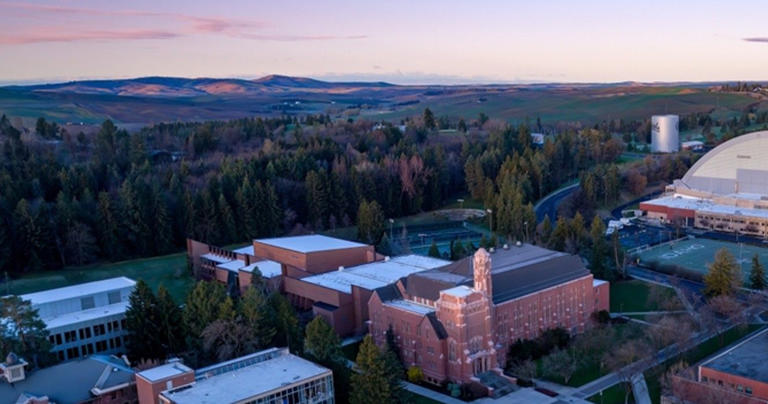

IMAGES
VIDEO
COMMENTS
Plan Your Visit. From black bears to salamanders, old-growth forests to spring wildflowers, log cabins to gristmills... the park offers myriad opportunities for exploring and discovering both the natural and cultural history of these ancient mountains. Great Smoky Mountains National Park covers 522,427 acres, divided almost evenly between ...
Plan your perfect trip to the Smokies with this comprehensive guide. Find out the best time to visit, where to stay, what to see and do, and more tips and facts for your adventure.
Welcome to the Ultimate Great Smoky Mountains Trip Planning Guide. Great Smoky Mountains National Park is a mystical place that embraces the historic charm and beauty of a landscape that means so much to so many. Explore antique cabins, stunning forests, sparkling waterfalls, and of course, those famous Smoky Mountains.
Explore the best features of Great Smoky Mountains National Park with this seven-day plan. Drive, hike, camp, and enjoy the scenery, wildlife, and culture of the Smokies.
Day 2 — Newfound Gap Road. Every Great Smoky Mountains itinerary should include a scenic drive on Newfound Gap Road, which spans about 35 miles between Gatlinburg, Tennessee, and Cherokee, North Carolina, through the middle of the park. The highway climbs some 3,000 feet through forests of pine, oak and spruce.
Hiking. Clingmans Dome (1 mile round-trip) is the highest point in Great Smoky Mountains National Park, at 6,643 feet, with truly unbeatable views. The hike to the peak is only a half-mile from the Clingmans Dome parking area and it's fully paved, but be warned -- it's very steep. It can also be pretty chilly at the top, often 20 degrees cooler ...
All visitors who park for more than 15 minutes in Great Smoky Mountains, including at trailheads, scenic points, Visitor Centers, ect. must purchase and display a paid Parking Tag. One Parking Tag is required per vehicle. Parking Tag fees are $5 per day, $15 per week, and $40 annually.
The history of Great Smoky Mountains National Park. There are only three National Parks that spill across state lines, and Great Smoky Mountains is one of them. ... Plan your summer trip to North Carolina's Outer Banks. May 31, 2024 • 11 min read. Explore the best of the Outer Banks - North Carolina's natural barrier islands - with this guide
1-Day Cosby Itinerary. 1-Day Kodak Itinerary. 1-Day the Great Smoky Mountains National Park Itinerary. Make the most out of your 1 day in Great Smoky Mountains National Park by exploring these top visited places: Great Smoky Mountains National Park, Clingmans Dome, Mellow Mushroom Gatlinburg, and The Park Grill.
The Ultimate Great Smoky Mountains Travel Guide Despite being one of the most popular destinations in the U.S., the Smokies make it easy to plan a last-minute trip and avoid crowds year-round.
Map of Smoky Mountains Itinerary. Itinerary Day 1: North Carolina - Charlotte to Waynesville. Itinerary Day 2: North Carolina - Valley and Dome. Itinerary Day 3: North Carolina - Raft and Rail. Itinerary Day 4: North Carolina & Tennessee - Waterfalls, Mountains and Zorbs. Itinerary Day 5: Tennessee - Roaring and Pink.
2-Day Robbinsville Itinerary. 2-Day Cosby Itinerary. Make the most out of your 2 days in Great Smoky Mountains National Park by exploring these top visited places: Great Smoky Mountains National Park, Mellow Mushroom Gatlinburg, Ripley's Aquarium of the Smokies, and Cheese Cupboard & Hofbrauhaus.
Spreading across the North Carolina-Tennessee state line, Great Smoky Mountains National Park offers hikers, wildlife lovers, photographers, waterfall chasers and campers a 522,000-acre playground where they can reconnect with nature. From the summit of Clingmans Dome - the park's highest peak at 6,643 feet (2,025 meters) - the view can ...
Download a PDF guide to plan your trip to the national park and its gateway towns in Tennessee, North Carolina and Virginia. Find attractions, lodging, dining, tours and more from Outside and its partners.
Great Smoky Mountains Guide: Planning Your Trip. The first thing you should know about the Great Smoky Mountains is that it is the nation's busiest national park with more than 11 million visitors every year. It covers 800 square miles of mountainous terrain that spans across eastern Tennessee and crosses the border into North Carolina.
Laurel Falls in Great Smoky Mountains National Park. Photo: Depositphotos. A relatively short paved hike, this 2.6-mile trail leads you to the 85-feet-high Laurel Falls. Enjoy the mist and sight of these amazing falls. Note that while the trail is paved, it's not a great path for wheelchairs or strollers because it is uneven.
Enjoy these scenic drives and road trips to Great Smoky Mountains National Park and other spots in TN and NC. OUTSIDE FESTIVAL JUNE 1-2 Don't miss Thundercat + Fleet Foxes, adventure films, experiences, and more! ... Trip Planner. Get a free Great Smoky Mountains National Park trip planner for inspiring itineraries and essential information ...
The park service says that you can expect loads of people from July 1 through August 15 and on weekends in October (for the beautiful fall colors). From May through October, you can expect daytime temperatures to be at least in the 70's or higher. In July and August, daytime temperatures can reach the 90's.
Blue Ridge Parkway and Great Smoky Mountains Fall Road Trip Itinerary: Charlotte North Carolina to Knoxville Tennessee. This epic Fall Colors road trip travels through the Blue Ridge Parkway and the Great Smoky Mountains in 10 days. The Blue Ridge Parkway is a 469-mile scenic drive through the Appalachian Mountains from Shenandoah National Park ...
Not that all of the Great Smoky Mountains and its surrounding mountain towns aren't peaceful, but Townsend doesn't have the neon signs and King Kong climbing a tower. In summer, come here for outdoor pursuits. ... Plan your summer trip to North Carolina's Outer Banks. May 31, 2024 • 11 min read. Explore the best of the Outer Banks - North ...
The Smoky Mountains Railroad offers exclusive experiences and sips for train passengers. Exclusive Wining & Dining Options. BBQ & Brews — Offered on all adult and family-friendly cars, knock back local brews with fresh barbecue as you head for the sunset at the Fontana Trestle. Carolina Shine — Available on the first-class moonshine car ...
Cades Cove is a scenic valley surrounded on all sides by mountains south of Townsend, Tennessee. A popular 11-mile one-way loop road encircling the valley provides access to hiking trails, opportunities for wildlife viewing, and chances to explore the many historic homesites, cemeteries, and churches. The area also holds a visitor center ...
The distance from Knoxville to Gatlinburg is approximately 35 miles, which translates to around a 45-minute drive through scenic highways and winding mountain roads. To reach Gatlinburg from Knoxville, begin your journey by heading east on I-40 E. Take exit 407 for TN-66 toward Sevierville/Pigeon Forge/Gatlinburg.
Start planning now! Plan Your Visit. Best Park and Best Guest Experience. Golden Ticket Awards, 2023 ... and family-friendly splash zones all tucked into the shaded beauty of the Great Smoky Mountains. ... Book Your Trip. 1-800-365-5996. Help. FAQ Guest Services Guests with Disabilities.
Join the celebration in downtown Gatlinburg to mark our nation's "Independence Day" with a magnificent fireworks and drone show. The City of Gatlinburg will light up the mountain skyline downtown at the Gatlinburg Space Needle with a spectacular fireworks and drone display featuring patriotic themes. Designated a Top 20 event by Southeast Tourism Society. The show is free and open to the ...
Straddling the border between North Carolina and Tennessee, the Great Smoky Mountain National Park takes in just over half a million acres of its namesake mountain range. It also contains nearly ...
Cherokee is not to be confused with Cherokee County, North Carolina, of which parts of the Qualla Boundary are located. Great Smoky Cannabis Co. is located at 91 Bingo Loop Road in Cherokee. The ...
Café Artista, Bucer's Coffee House Pub, Steam Coffee. Fun Bars in Moscow, Idaho: John's Alley Tavern, Mingles Bar & Grill, Neat Whiskey Bar. There are a number of hotels and rentals in the city ...